
- Travel Guides
- Spirituality
- Content Creation

Most-Visited Southeast Asia Tourism Countries in 2022
B rutal Covid lockdowns and complex vaccine mandates crippled SE Asia’s tourism industry. In 2022, Thailand led the charge on a tourism resurgence in the region. Other countries that drew plentiful tourists in 2022 included Indonesia, Singapore, and the Philippines. Meanwhile, Vietnam’s tourist sector has struggled. Planning a trip to Southeast Asia in 2023? Here are the countries most visited by tourists last year.

In 2019, the SE Asian tourism industry was booming. When Covid hit, most countries locked down in April 2020 . 2021 was the most brutal year.

2022 brought a resurgence. Thailand led the way with 11.2 million tourist visitors (1) . That’s well below 2019’s 39.9 million.
Even so, numbers are trending in the right direction. Here’s a look at tourist visitor numbers for the top 5 SE Asia travel destinations:
State Of SE Asia Tourism In 2023
Four of the top five tourist countries in SE Asia have dropped Covid mandates. That means no more proof of vaccination or testing upon entry. The Philippines is the exception: vaccination status is still checked; unvaccinated travelers need to test negative.
Entry rules in four out of the top 5 countries are similar for North American, EU, and UK passport holders : visa-free entry for 30 days. Vietnam is the exception, with complex, inconvenient entry rules that have kept visitors away.
Find below a summary of key Southeast Asia tourism statistics and trends.

Thailand: Booming Marijuana Hotzone
Entry requirements: visitors can enter for 30 days with a ‘visa on arrival’. Covid restrictions: dropped (Jan. 2023); proof of vaccination / PCR tests not required (7) .
Thailand’s tourism industry is bouncing back. The government is also taking steps to boost growth further. To speed customs processing, entry forms are no longer required. Then, in June 2022, the government legalized marijuana for ‘therapeutic’ and culinary uses.

Starting March 31 this year, visitors will get 45-day visas on arrival (8) (instead of the current 30-day limit). On the downside, starting in June, all visitors will be required to pay a $12 entry fee (400 TBH) on arrival.
Absolutely! Thailand offers easy entry requirements, affordable luxury, legal marijuana, great beaches, amazing food, and fun-loving, hospitable locals. I’ve been to Bangkok twice this year for solo adventures and had a blast each time.
While tourist numbers are up, they’re still a fraction of what they were in 2019. As a result, there’s a lot of enthusiasm in the air to keep the tourist party train going.

These days, expect great prices, enthusiastic locals, and enough tourists around to keep things fun without getting overcrowded. Check out my single-guy trip report:
Solo Introvert Travel: 5 Single Man Days In Bangkok
Singapore: Futuristic Disneyland
Entry requirements: 30-day visa-free entry for citizens from most G8 countries. Covid restrictions: dropped (February 2023).
In 2022, Singapore’s tourism reached S$13.8 billion — about 50% of 2019’s tourism revenue (9) . Per the Singapore Tourism Board, tourists spent mostly on accommodation, shopping, and higher flight fees into the country.
Is Singapore Worth Visiting In 2023?
Hong Kong is the most expensive Asian country to visit; a business trip there now averages USD$ 520 per day. Singapore is the second-most expensive, averaging $515 per day (10) .
- Hong Kong: $520/ day for a typical business trip
- Singapore: $515 per day
- Tokyo: $424 per day
- Shanghai: $392 per day
- Seoul: $280 per day
Singapore is super-clear and orderly; English is widely spoken. Most activities here involve eating rich foods, shopping for luxury goods, or sightseeing. Popular attractions include the Zoo, Night Safari, Botanical Gardens, and Chinatown.
Bottom line: in 2023, Singapore is a nice but pricey break from the chaos of SE Asia’s wildest spots. In my experience, a 3-4 day stint here is plenty. After that, I find the super-orderly dynamic feels a bit sterile and restrictive.
Indonesia: Bintang Bogan Chaos
Entry requirements: 30-day visa-free entry for citizens from 86 countries. Covid restrictions: dropped (Dec. 2022).
Every year, Indonesia draws the most visitors from Malaysia, Singapore, and Australia. In 2021, only 3,196 Aussies visited the country. In 2022, that number soared to 654,464 bogans causing a ruckus (4) .

Early this year, Indonesian President Joko Widodo outlined a plan to lure 7.5 million tourists to Indonesia this year (11) . The country will host 110 festivals and 65 sports, music, and creative events this year.
Notables planned include F1 Powerboat, the U-20 FIFA World Cup, the FIBA World Cup, the ANOC World Beach Games, the MotoGP, and the World Superbike (WSBK) race.
Indonesia is made up of over 18,000 islands, with only around 6,000 inhabited. The opportunities to explore here are endless. On the downside, Indonesia has scored the most polluted air in the region for several years running.
Bogans looking for a ‘curry and a fight’ will love the chaos. Kuta Cowboys (local gigolos) are also well-employed by legions of lusty Aussie and Kiwi lasses (12) . It’s so wild that the government is trying to crack down.
Last year, the government began issuing fines for Bogans caught ‘bonking’. In 2023, dress and conduct codes are being put in place (13) . There’s also talk of banning foreigners from renting scooters. In short, the tourist experience here is a special type of madness that might not be for everyone.
Vietnam: Stunted By Regulations
Entry requirements: complex. Visa waivers for some countries, e-visas for others. Covid restrictions: dropped (May. 2022).
Vietnam welcomed 18 million foreign tourists in 2019. In 2022, that figure rebounded to just 3.6 million, around 1/5 of pre-pandemic levels. Lifting all Covid restrictions in May 2022 didn’t help much.
Notably, while Thailand streamlined its entry requirements to lure tourists, Vietnam remains convoluted:
- Visa waivers: visitors from 13 nations (11 in Europe and two in Asia) can stay for 15 days.
- ASEAN nations: visitors from 9 ASEAN countries can stay visa-free for 30 days.
- E-Visas: visitors from 80 countries have to procure online e-visas before arriving.
To goose tourist numbers, Vietnamese PM Pham Minh Chinh recently ordered officials to relax visa rules (14) . Proposed measures include fixing smelly toilets, granting more visa waivers, and extending stays for up to 30 days.
Is Vietnam Worth It In 2023?
Vietnam has amazing food, beautiful women, good beaches, and plenty of cultural attractions. But in 2023, the clunky entry rules are a deterrent. For instance, Canadians must apply for an e-visa on an old and clunky website .
Inconvenient entry rules are just a start. The streets of most major cities are jammed with unending seas of very aggressive drivers. Another issue for tourists is that English is only sporadically spoken. This leaves tourists susceptible to scams.
In fact, the Government of Canada website warns Vietnam is a ‘high risk’ country for scams (15) . These include:
- Frequent thefts in tourist areas (markets, beaches, sleeper trains).
- Criminals have posed as airport taxi drivers to rob tourists by forcing them to withdraw ATM cash.
- Getting duped into ‘too good to be true’ gambling scams.
Also, Vietnam is heavily censored. Local authorities may review your phone or search your hotel room without your consent.
Philippines: Covid Rules Still Enforced
Entry requirements: 30-day visa-free entry for citizens from most G8 countries. Covid restrictions: visitors must show proof of vaccination or a negative antigen test.
The Philippines is the only country on the SE Asian tourist trail still demanding proof of vaccination for entry. Unvaccinated tourists are also welcome, but they need insurance and proof of a negative test to clear customs.
In 2022, the country attracted 2 million tourists. This year, the Department of Tourism targets 4.8 million (16) . The plan to reach those numbers: marketing at travel trade fairs.
Is The Philippines Worth It In 2023?
On the plus side, the country offers amazing scenery, friendly people, and cheap prices. English is widely spoken. This clip of Bohol shows off one of the country’s top beach destinations:
Downsides include perhaps the slowest Wi-Fi in the region, corruption, extreme poverty, and many signs of environmental degradation. If you can handle those, the stunning scenery and friendly people make a trip here well worth it.
Out of the most visited SE Asia countries of 2022, these are my top picks for travelers in 2023:
- Thailand: easy entry rules, legal marijuana, great prices, and world-class beaches make this the best destination of them all.
- Singapore: this super-orderly island city-state is the priciest SE Asia tourist destination. Good for those into fancy sightseeing spots, luxury shopping, and luxurious cuisine.
- Indonesia: Bogan brawlers and Kuta Cowboy gigolos give this place a hedonistic, raunchy, ‘anything goes’ type of feel.
- Vietnam: inconvenient entry rules, super-dense traffic, and tons of tourist scams hinder the experience.
- Philippines: beautiful beach enclaves are broken up by large swaths of crushing poverty and environmental degradation.
- James Guild. ‘Southeast Asia’s Post-Pandemic Tourism Revival’. March 21, 2023, https://thediplomat.com/2023/03/southeast-asias-post-pandemic-tourism-revival/ , (accessed 24 April 2023).
- ‘Number of international tourist arrivals in Thailand from 2015 to 2022’. February 15, 2023, https://www.statista.com/statistics/994693/thailand-number-international-tourist-arrivals/ , (accessed 24 April 2023).
- ‘Singapore Tourism Statistics 2023’. February 2023, https://www.budgetdirect.com.sg/travel-insurance/research/singapore-tourism-statistics , (accessed 24 April 2023).
- ‘Tourism in Indonesia’. Last edited 25 March 2023, https://en.wikipedia.org/wiki/Tourism_in_Indonesia , (accessed 24 April 2023).
- ‘Tourism in Vietnam’. Last edited 2 April 2023, https://en.wikipedia.org/wiki/Tourism_in_Vietnam , (accessed 24 April 2023).
- ‘Tourism in the Philippines’. Last edited 19 April 2023, https://en.wikipedia.org/wiki/Tourism_in_the_Philippines , (accessed 24 April 2023).
- Tommy Walker. ‘Thailand Reverses New COVID Vaccine Rules for Visitors’. January 9, 2023, https://www.voanews.com/a/thailand-reverses-new-covid-vaccine-rules-for-visitors-/6910820.html , (accessed 24 April 2023).
- Donald Wood. ‘Thailand Drops New Entry Rules, Adds Tourist Fee’. January 13, 2023, https://www.travelpulse.com/News/Impacting-Travel/Thailand-Drops-New-Entry-Rules-Adds-Tourist-Fee , (accessed 24 April 2023).
- Chew Hui Min. ‘Visitor arrivals in Singapore creep back to pre-pandemic levels as tourism sector rebounds’. January 17, 2023, https://www.channelnewsasia.com/singapore/tourism-visitor-arrivals-receipts-2022-singapore-tourists-3209721 , (accessed 24 April 2023).
- Goh Chiew Tong. ‘Traveling to Asia for work? This city is its most expensive business destination’. March 21, 2023, https://www.cnbc.com/2023/03/22/hong-kong-retains-spot-as-most-expensive-business-destination-in-asia.html , (accessed 24 April 2023).
- VNA. ‘Indonesia accelerates tourism growth in 2023’. January 30, 2023, https://vir.com.vn/indonesia-accelerates-tourism-growth-in-2023-99433.html , (accessed 24 April 2023).
- ‘Travel to Bali Trilogy: The Conclusion. Temples, Waterfalls, and Kuta Cowboys’. July 16, 2022, https://jenniferspath.org/travel-to-bali-travel-blog/ , (accessed 24 April 2023).
- Carly Bass. ‘Bali gets tough on ‘Aussie bogans’ with new campaign teaching tourists etiquette’. March 8, 2023, https://au.news.yahoo.com/bali-tough-aussie-bogans-new-campaign-teaching-tourists-etiquette-013331116.html , (accessed 24 April 2023).
- Mai Ngoc Chau. ‘Vietnam Looks to Ease Visa Requirements to Woo More Tourists’. March 16, 2023, https://www.bloomberg.com/news/articles/2023-03-16/vietnam-looks-to-ease-visa-requirements-to-woo-more-tourists , (accessed 24 April 2023).
- ‘Vietnam travel advice’. March 16, 2023, https://travel.gc.ca/destinations/vietnam , (accessed 24 April 2023).
- Zacarian Sarao. ‘1.15 million international tourist arrivals in Q1 2023’. March 15, 2023, https://newsinfo.inquirer.net/1743455/dot-records-over-1-1-million-international-tourist-arrivals-in-2023 , (accessed 26 April 2023).
- Monger In Asia Guide: The Culture, Locations, And Experiences
What goes on in an Asian girlie bar?
Expat employment trends in 2019, related posts.

- Recap: The Top 11 Most Visited Countries In Asia In 2023

Southeast Asia Countries With The Cleanest Air Quality 2022

Sad farwell: China’s Golden Era for expats is done

Crowd-sourced news, trends, and advice for tourists and expatriates in Asia.
Recent Posts
- Ultimate Phnom Penh Girly Bar Tour For Beginners
- About Planet Asia
- Privacy Policy
- Affiliate Disclosure
© 2023 PlanetAsia.org
Latest News

Hangzhou ZhongWei Goethe Hotel joins WorldHotels distinctive collection

EaseMyTrip partners with Google Wallet for seamless travel booking

Sarawak unveils Pavilion at IMEX Frankfurt to showcase legacy impact

FCM Travel Southeast Asia boosts Australia-Singapore flights

Singapore and Philippines enhance Air Services Agreement

Aurora Expeditions announces CMO Hayley Peacock-Gower’s departure

Consumption during May Day holiday reflects vitality of Chinese economy

Trip.com Group forms strategic partnership with Rezdy to enhance tour connectivity

ASMEX 2024 Conference unveils dynamic program and international speakers at Sanctuary Cove

Conrad Koh Samui bolsters executive team with new appointments

Southeast Asia’s tourism revival in 2023: Which country is leading the international arrivals
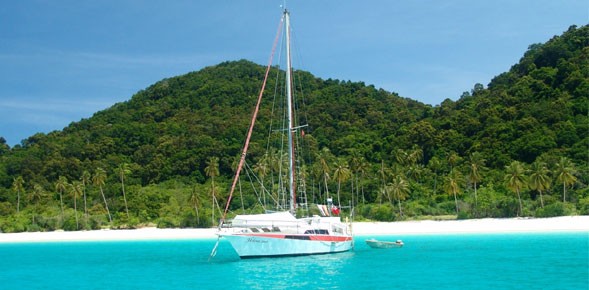
Southeast Asia’s tourism sector in 2023 witnessed significant growth, with Thailand and Vietnam among the key contributors. The region displayed a strong post-pandemic resurgence, marked by increased international tourist arrivals.
The tourism industry in Southeast Asia experienced a robust recovery in 2023, with international arrivals, aviation, and hospitality sectors showing promising trends. This positive outlook is a result of the strong performance in 2022 and the continued efforts of Southeast Asian governments to boost visitor arrivals. Key developments include enhanced connectivity for tourism, such as the ASEAN Framework Agreement on the Facilitation of Cross Border Transport of Passengers by Road Vehicles, which aims to streamline cross-border movement of tourists and promote over-land travel between ASEAN states. Additionally, collaborations like the Lancang Mekong Tourist Cities Cooperation Alliance , involving Cambodia, Lao PDR, Myanmar, Thailand, Vietnam, and China, are indicative of a regional approach to tourism development.
Malaysia led the region with the highest number of foreign tourist arrivals, recording approximately 26 million visitors from January to November. Thailand followed closely, welcoming around 24.6 million tourists during the same period.
Vietnam also saw a notable number of international visitors, with the country hosting 12.6 million foreign tourists over the year. This figure, while substantial, was still around 70% of the pre-pandemic levels. The country’s main source of tourists included South Korea, mainland China, Taiwan, the U.S., and Japan.
The recovery rates of tourism in Southeast Asia varied across countries. Cambodia demonstrated an outstanding recovery, nearly achieving full recovery with a rate of 92.48%. Vietnam and Indonesia also showed strong recovery rates at 82.25% and 74.11%, respectively.
Southeast Asia offers a rich tapestry of experiences for travelers. In Vietnam, tourists can enjoy cultural activities like exploring the old quarter of Hanoi, meeting local craftsmen, and touring historic sites like the Cu Chi tunnels. Thailand provides diverse itineraries, combining sights like Bangkok’s vibrant city life, Chiang Mai’s mountains, and Kanchanaburi’s lush nature. Cambodia offers unique experiences from exploring the Angkor temples to visiting its southern beaches. These destinations are not just about sightseeing; they offer immersive cultural experiences, including the exploration of iconic movie sets and engagement in local arts and handicrafts.
The tourism trends in Southeast Asia are evolving, with a growing interest in wellness and nature trips. This shift reflects a post-pandemic change in tourist preferences, where people are increasingly seeking wellness or outdoor experiences. For instance, in Vietnam, the Avana Retreat provides a blend of wellness services, including yoga classes, spa treatments, nature walks, and local culture tours. This trend aligns with the global emphasis on mental health and well-being, positioning Southeast Asia as a top wellness destination.
The reopening of China ‘s borders is expected to significantly contribute to the recovery of the tourism sector in Southeast Asia. The anticipation of Chinese tourists returning to the region is high, and airlines are preparing to restore and increase flight connections. This development is particularly notable given the International Monetary Fund’s prediction of a strong recovery for Southeast Asia in 2023, despite a dimming global economy. The rise in vaccination rates and a desire to revive hospitality and travel to pre-pandemic levels are expected to increase competitiveness in the region to attract key international tourist markets. Furthermore, technological advancements like VR destination simulators, AI-based personalized travel accommodations, and metasearch engines are poised to enhance the travel experience and provide a competitive edge in the evolving tourism landscape.

Vicky Karantzavelou
Vicky is the co-founder of TravelDailyNews Media Network where she is the Editor-in Chief. She is also responsible for the daily operation and the financial policy. She holds a Bachelor's degree in Tourism Business Administration from the Technical University of Athens and a Master in Business Administration (MBA) from the University of Wales. She has many years of both academic and industrial experience within the travel industry. She has written/edited numerous articles in various tourism magazines.
- Vicky Karantzavelou https://www.traveldailynews.asia/author/vicky-karantzavelou/ Hangzhou ZhongWei Goethe Hotel joins WorldHotels distinctive collection
- Vicky Karantzavelou https://www.traveldailynews.asia/author/vicky-karantzavelou/ Singapore and Philippines enhance Air Services Agreement
- Vicky Karantzavelou https://www.traveldailynews.asia/author/vicky-karantzavelou/ Aurora Expeditions announces CMO Hayley Peacock-Gower's departure
- Vicky Karantzavelou https://www.traveldailynews.asia/author/vicky-karantzavelou/ Trip.com Group forms strategic partnership with Rezdy to enhance tour connectivity
Related posts

Danang prepares for a summer spectacle with the return of the International Fireworks Festival

Decline in travel and tourism deal activity in early 2024
Previous article, next article, media evolution 2024: social media decline, ai fatigue, and journalism's crisis, hungry hub expands global reach through supply partnership with leading online travel agencies and activities platform.

S Hotels and Resorts reports robust growth and strategic advances in Q1 2024

Australian Government reinstates funding for China ADS scheme

Sydney hotel industry sees strong performance growth in April

MyCEB showcases Malaysia at IMEX Frankfurt 2024 amid Visit Malaysia Year 2026 preparations

The Philippines promotes gastronomy tourism as an economic and cultural driver

China’s hotel construction pipeline expands, signaling strong growth

Cvent announces the top meeting destinations and hotels in APAC

TFWA president highlights Asia Pacific’s pivotal role in Duty Free Industry Growth
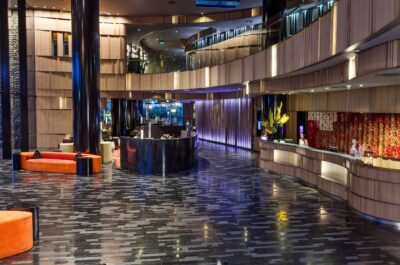
Crowne Plaza Changi Airport welcomes Greg Gubiani as General Manager

Novotel Hyderabad appoints Akash Budhia as Director of Revenue

Cathay enhances lifestyle partnership to bring more perks to members travelling to Thailand

CYK Hospitalities boosts QSR expansion with strategic leasing

Tamarind Global Thrives at Arabian Travel Market 2024

Air India launches CE Plus app to elevate cabin service

WelcomHeritage Cheetahgarh Resort appoints Suresh Kumar as General Manager

Sabre partners with Hotel Management Japan to enhance distribution
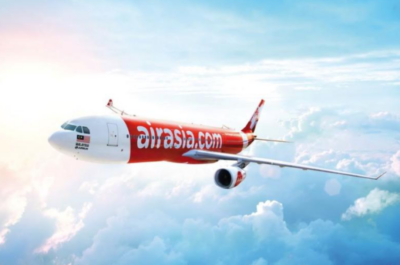
Capital A accelerates sustainability focus, records efficiency gains amidst aviation industry recovery

Traveloka becomes the first platinum sponsor of GSTC for sustainability

Arinex acquires New Zealand’s Auaha, expanding MICE industry capabilities

Air Astana announces major updates to nomad club frequent flyer program

AirAsia Philippines anticipates strong travel demand in 2024

Philippines to enhance tourist safety with new first aid facilities

Mastering budget travel in Malaysia: Insider tips for affordable exploration

Goa Showcases Sustainable Tourism at Arabian Travel Market 2024

ASIA: A strong participation in Arabian Travel Market 2024

PATA Annual Summit 2024: Reimagining tourism in Macao

Malaysia hosts Singaporean media for Penang and Langkawi Fam Trip

Vietnam embraces Golf Tourism with strategic partnerships and initiatives

Singapore tests renewable diesel at Changi for aviation decarbonization

Phuket’s Gardens of Eden launches Phase 2 amidst high demand

IHG debuts luxury and lifestyle brands in Vietnam’s vibrant markets

ITDC achieves record financial results in fiscal year 2023-24

AirAsia’s new DEI initiative supports nursing mothers in operations

Air India partners with SIAEC for Bengaluru MRO facilities

Samar province launches new tourism circuits for cultural immersion

Turkey: Advantages of the Fethiye region

Thailand boosts tourism with WebBeds partnership and new marketing videos

Increase of summer skiing among Chinese tourists

Philippines’ largest investment show marks a decade of success in Dubai

Australia’s voice getting smaller as tourism marketing costs climb

Malaysia amplifies tourism appeal with special packages at Seoul Travel Fair 2024

HK Express inaugurates new route to Sanya

Cygnett Hotels & Resorts strengthens leadership team with industry veteran appointments
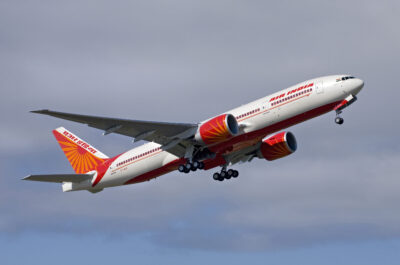
Air India expands European routes with more flights to Amsterdam, Milan, and Copenhagen

The Vietage expands luxury rail travel with New Nha Trang Route

AirAsia continues to support FLYsiswa to fly students home with affordable fares

SEAHIS 2024: A Premier Hotel Investment Summit in Bangkok

Songkran festival sparks 33% jump in Thailand’s hotel room rates

Empowering Entrepreneurs: Poe Aye’s Vision for FACE

Seoul My Soul in Dubai 2024: A spectacular showcase of K-Pop and culture

Record growth in hotel construction across Asia Pacific excluding China

Thousands set to gather in Singapore for Rotary’s international convention, the Garden City’s largest association event post-pandemic

Minor Hotels and dnata enhance partnership to elevate plans for global growth
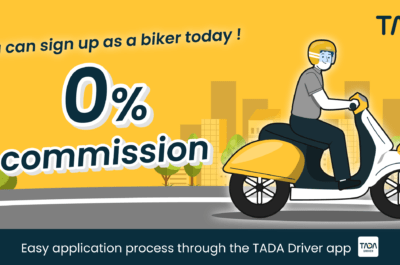
TADA starts recruitment of drivers for bike services as transportation ecosystem grows in Thailand
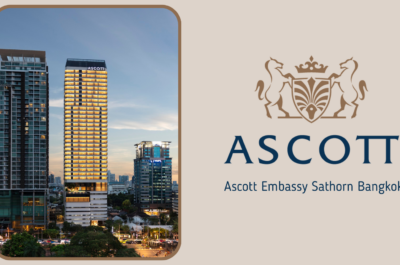
Ascott launches Ascott Global Academy for Excellence, learning facility to nurture and strengthen industry talent pool

Air India Express official updated statement on multiple flight delays

Sustainable Phuket Restaurants join forces for two unique four-hands experience

Tourism Authority of Thailand and dnata Travel Group sign strategic partnership agreement
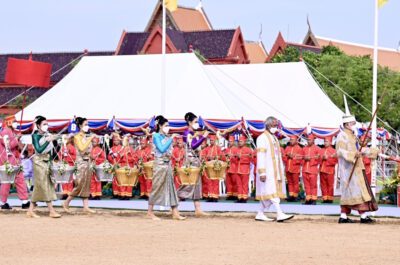
Their Majesties the King and Queen to preside over The Royal Ploughing Ceremony 2024

Travomint and Expedia partner to enhance online travel booking
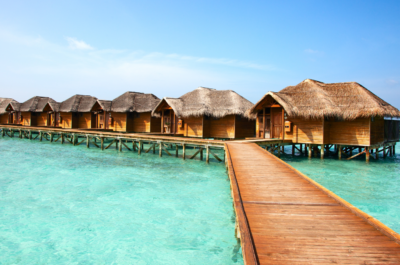
Maldives named Official Partner Destination of ITB China 2024
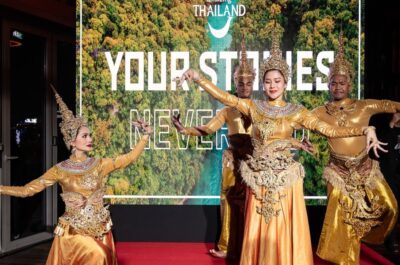
TAT unveils new marketing strategies at Arabian Travel Market 2024

New Netflix film ‘Mother of the Bride’ spotlights Phuket as a hub for global film production
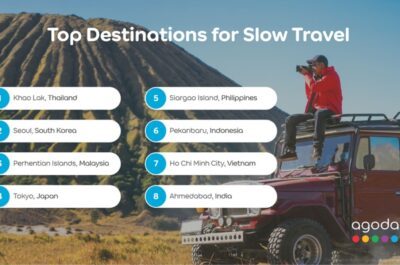
Agoda highlights top Asian destinations for slow travel
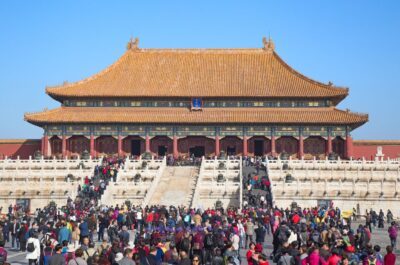
Beijing celebrates historic tourist arrivals during May Day holiday

Amadeus reports strong growth in Q1 across all segments

NCHL and Ant International enhance Nepal’s digital payments for tourists
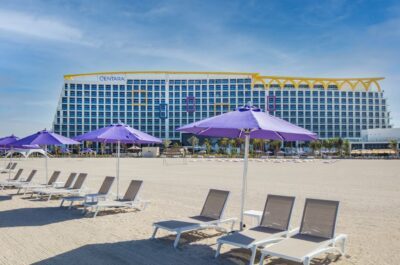
Centara Hotels unveils expansion plans at Arabian Travel Mart 2024
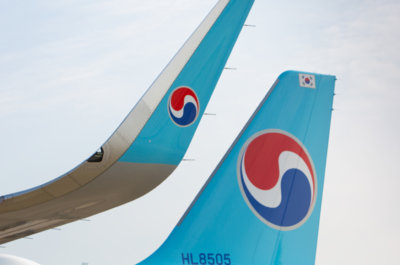
Korean Air reports robust Q1 growth, fueled by passenger demand
Air india express addresses sudden flight disruptions.

Phuket’s luxury real estate booms with new Meliá residences
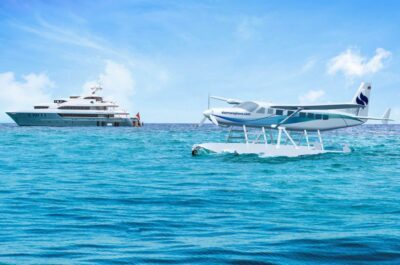
Ocean Property and Siam Seaplane launch luxury seaplane service in Pattaya
clock This article was published more than 1 year ago
Covid gave Southeast Asia a break from overtourism. Now what?
BANGKOK —Beaches brimming with sunbathers. Coves crowded with boats and snorkelers. Trails busy again with hikers and their porters.
More than two years after the coronavirus pandemic brought international travel to a halt, most countries in Southeast Asia have reopened their borders with minimal requirements for vaccinated travelers. Millions arrived over the summer, fueled by pent-up wanderlust. The return of these tourists is a relief for an economically battered region — but it comes with its own costs.
While the pandemic crippled Southeast Asia’s $393 billion tourism industry and erased millions of jobs , it also allowed many of its natural landscapes and heritage sites to recover from years of being trampled and polluted. Now, some government officials and community leaders are pushing against a return to the unbridled tourism that scientists warned for years was causing irreparable environmental harm. At the same time, those who rely on tourist revenue are desperate to welcome back visitors — as many of them as possible.
Welcome to summer travel. It’s hell.
“The industry is very much in flux right now,” said Liz Ortiguera, chief executive of the Pacific Asia Travel Association, a nonprofit that advocates for sustainable travel. A growing number of governments and businesses are asking for ways to make tourism less destructive, she said, but as the pandemic fades, the revival of some ecologically damaging mass tourism is “a given.”
A month after Thailand closed its borders in 2020, a herd of dugongs — among the most endangered marine mammals in the world — were seen floating serenely in the shallow waters off the country’s southern coast. Leatherback turtles took the place of tourists in Phuket, nesting on the beaches at rates that shocked local scientists.
“The pandemic was an excellent opportunity, in a way, to show what happens when humans are able to give nature a break," Varawut Silpa-archa, Thailand’s minister of Natural Resources and Environment, told The Washington Post.
In 2020, Thailand closed all 155 of its natural parks to visitors for the first time ever. While they were reopened in July, Varawut has ordered that every park shut down for at least a month every year. He has also banned single-use plastics from the parks and said he “will not hesitate” to shut down a destination long-term if tourists wreak havoc. He has little concern, he added, for potential opposition from businesses.
“To be blunt, I really don’t care if they agree," Varawut said. “My job is to preserve nature for our future generations.”
Not all attempts in the region to regulate tourism have been successful. In June, Indonesian officials ran into local opposition after proposing that visitors to the ancient Borobodur Temple in Java be limited to 15 at a time and that tickets for foreigners be raised from $25 to $100 to fund conservation. When the government announced plans to hike ticket prices for the Komodo National Park in East Nusa Tenggara, hundreds of tourism workers went on strike . Price increases for both locations are now on hold .
“The challenge,” said Steven Schipani, a tourism industry specialist at the Asian Development Bank, “is that there’s so much sunk investment.”
The number of annual tourist arrivals to Southeast Asia doubled from 2010 to 2019, peaking just before the pandemic at 137 million . This growth was expected to continue at least until 2030, in large part because of a rising regional middle class. In Southeast Asia, businesses and government agencies made major investments to prepare for and profit off these visitors. Much of that infrastructure — airports, hotels, sewage systems — is still in place, said Schipani.
Asia is slowly reopening to travelers. Here’s where you can go.
“There’s capacity for 140 million people,” he noted. And there’s “immense pressure” to make sure that capacity is fulfilled.
In 2018, then-Philippines president Rodrigo Duterte closed the white sand island of Boracay for six months, saying overtourism had transformed it into a “cesspool.” Since reopening , the island has kept certain sustainability measures in place, though these are now being tested. Over Easter weekend in April, Boracay exceeded its daily visitor cap multiple times, authorities said.
Nowie Potenciano, 44, runs several restaurants and a boutique hotel on the island. The tourists returning to Boracay in recent months have been quite literally “hungry” for new experiences, he said, with many ordering more food than they might have in the past. He’s glad they’re back but doesn’t think things can return to “business as usual" post-pandemic.
“It’s something we’re all still figuring out,” Potenciano said. “How do we maintain the volume of visitors without upsetting the delicate balance of the entire island?”
In 2019, nearly 40 million tourists visited Thailand, and many spent time along its dazzling Southern coast. Research shows that from 2017 t0 2019, at least two locations in the south — Patong Beach and Maya Bay — regularly exceeded their “carrying capacity," which refers to the number of people a place can reasonably accommodate without damaging the environment or local community.
Somyot Sarapong, who works for an ecotourism agency in Bangkok, lived and worked on the Phi Phi Islands in the 1990s but left in 2003 when outside developers started to erect tall, concrete hotels on the beachfront that displaced locally run resorts. When Somyot, 56, returned in 2019 to visit friends, he no longer recognized the place he used to consider a “slice of heaven.” Brightly colored fish, once so abundant, had become hard to spot.
Somyot made another trip to the islands earlier this year before Thailand reopened its borders to international visitors. While swimming in the sea, he saw a swarm of blacktip reef sharks, which had become increasingly rare around the islands before the pandemic.
“It gave me the feeling of my first day at Phi Phi,” he said.
China is key to saving the planet from climate change. But it can’t quit coal.
Somyot wants to see the government do more to stave off overtourism, though some experts in sustainability are skeptical that officials will do what’s necessary.
Thailand is renowned for its hospitality and counted on tourism for 11 percent of its gross domestic product pre-pandemic. Like many countries in Southeast Asia, it lacks the kind of zoning, land use regulations and hotel permitting that would allow the government to effectively manage the impact of tourism, experts say, even if there was political will.
But Thon Thamrongnawasawat, a marine scientist at Kasetsart University in Bangkok, believes there’s reason to be optimistic.
“When you drive at a very high speed, it’s hard to slow down. With covid, it’s like the car engine stopped," he said. “Now we’re starting again and we can go carefully, slowly."
The pandemic allowed more Thai people to reacquaint themselves with the beauty of their own country, Thon added. When it comes to protecting it now, he added, “we have a much, much better chance than before.”
Regine Cabato reported from Manila. Wilawan Watcharasakwet contributed reporting from Bangkok.


30 Best Places to Visit in Southeast Asia: 2024 Guide
Southeast Asia is home to some of the most beautiful places in the world. From the sprawling city of Singapore to the idyllic beaches of Thailand. And from the bustling streets of Bangkok to the pristine beaches of Bali, there’s something for everyone and so many best places to visit in Southeast Asia.
But Southeast Asia is vast with so many different places to visit. Taking a trip to these best places to visit in Southeast Asia should definitely be on your bucket list.
Plus, the cheapest countries in Asia are some of the most beautiful in the world, and you’ll love traveling here.
In this article, we will go through the 30 best destinations in Southeast Asia – we’ll cover most countries and those that are great for families, couples, and even solo travelers.
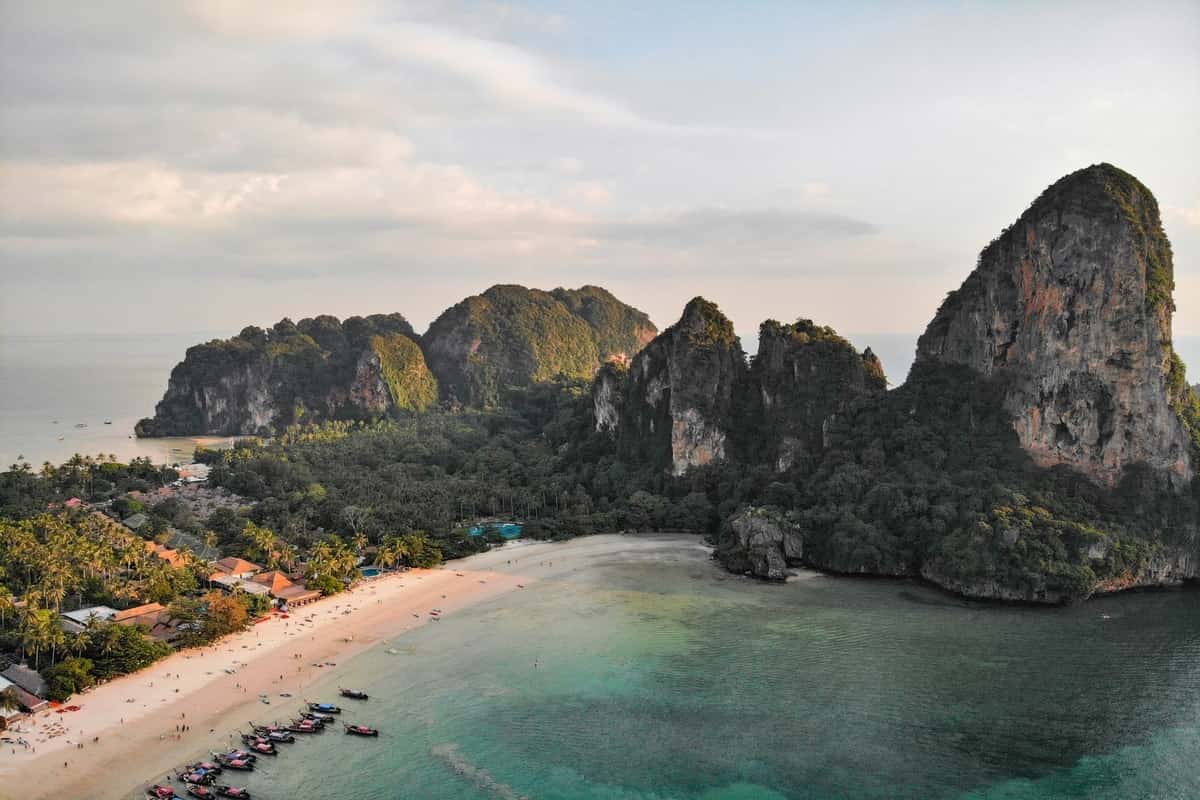
Table of Contents ⬇️
30 Best Places to Visit in Southeast Asia
Asia is huge. It’s one of the world’s largest continents and is made up of a ton of different cultures, religions, and landscapes.
While it might be overwhelming to figure out where to start when planning an Asian getaway, Southeast Asia is a great place to begin.
Southeast Asia is home to some of the most amazing places on Earth, from lush jungles and crystal-clear beaches to bustling cities and ancient ruins. Let’s go through some of the most beautiful Southeast Asia destinations!
Siem Reap & Angkor Wat, Cambodia
The ancient site is like no other, the most significant religious monument in the world – the temple complex of Angkor Wat, in Siem Reap. And visiting it during sunrise is the best thing you can imagine for your Southeast Asia vacation.
Standing tall on its nation’s flag, Angkor Wat tells the history of Cambodia in stone carvings and paintings on the walls of the temples.
If not for its religious significance, come to Angkor Wat for the history and sightseeing . The main temple building is surrounded by a moat and has five towers, each with four levels. The central tower is 65 meters tall and is decorated with reliefs of Hindu deities.
You can purchase a ticket for 1 day for $37, a 3-day pass for $62, or a 7-day pass for $72 . Also, Angkor Wat is open from 4.30 am to 5.30 pm so make sure to book a sunrise tour, one of the best things to do in Southeast Asia, guaranteed!
Last but not least, all tourists must use USD to pay, so if you’re coming from other countries in Asia or other continents, you better change money before landing.
All in all, it’s one of the south east Asia travel destinations you should consider!
The best time to visit Angkor Wat is during the dry season from the end of November to March. These months are cool and dry, but this is also when you’ll encounter more crowds. This is also when you’ll experience fewer rainfalls.
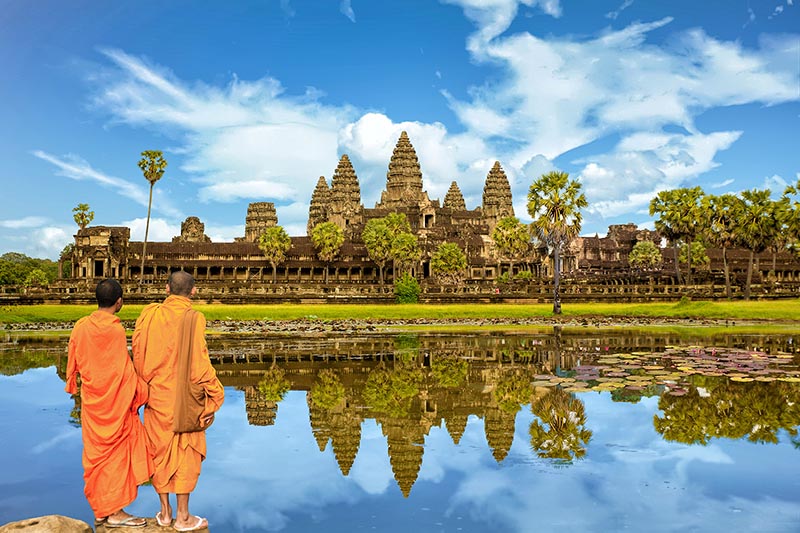
Want to know more?
Check out this guide about the best activities in Siem Reap .
Siargao, Philippines
The Philippines is an archipelago of more than 7,000 islands, and it’s only fair that the locals have come up with a fun way to get around the nicest ones. An island hopping tour is great if you came to Siargao to have a lazy time on the beach, work on your tan, or simply chill with a beer.
Start the tour on Naked Island, the stunning island that’s nothing but stretches of white sands. After that, continue your way to Daku Island to lie under the coconut trees and look at the sea. In addition, make your last stop at the marvelous Guyam island.
Siargao is famous for its premier surfing spots and I highly recommend taking a lesson.
Bonus tip: If you have a drone, don’t forget to take it with you. Thank me later!
I personally fell in love with Siargao and I miss the island very much. There are also incredible things to do in Siargao and you won’t regret coming here. Do I even need to mention that Siargao is of the top 5 tourist destinations in Southeast Asia?
The best time to visit the Philippines is between December and February . During these months, temperatures will rise up to 32°C. This is the best period of the year to come to Siargao and fly to other islands, as the weather is nice everywhere!
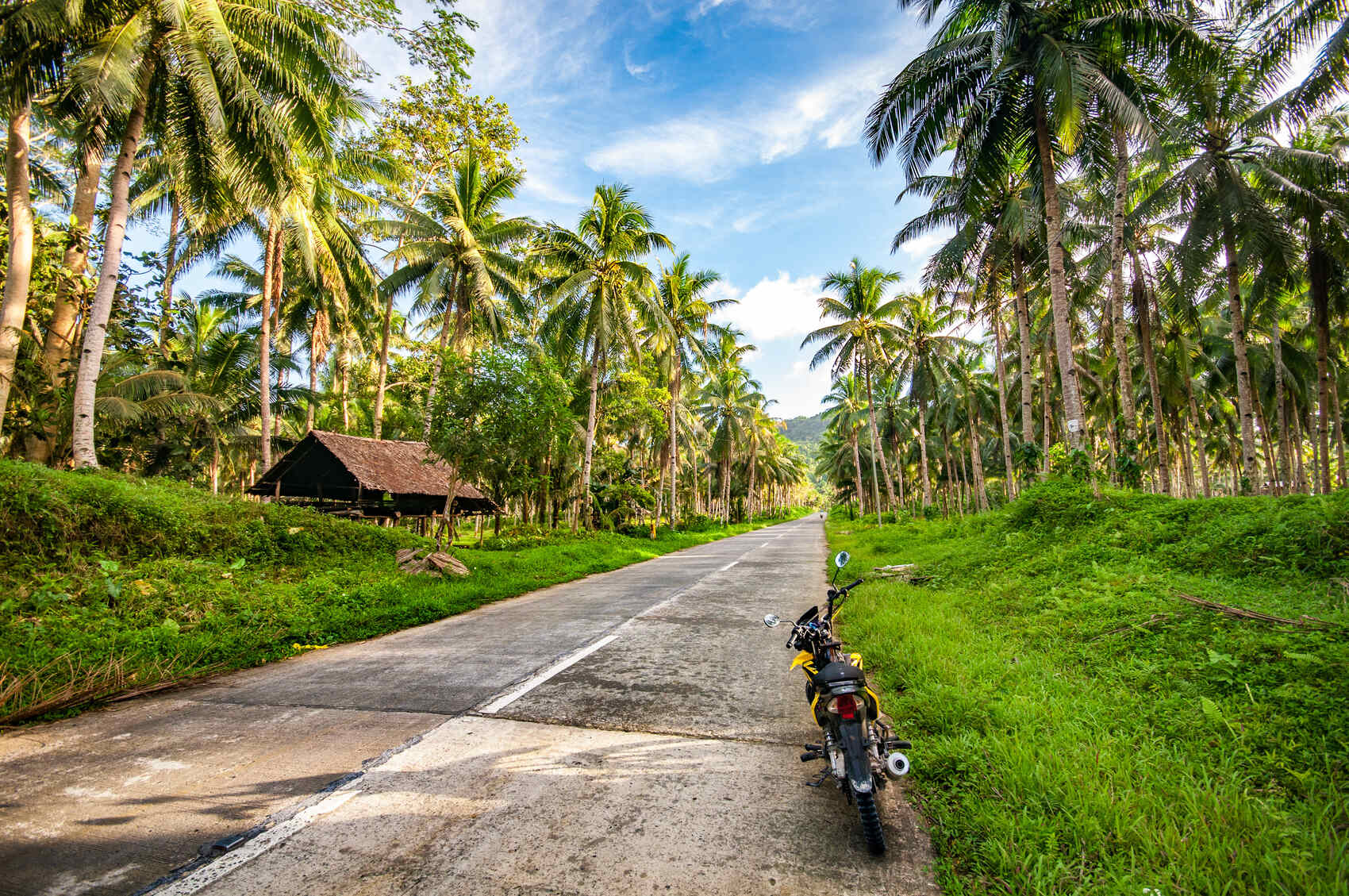
Check out this guide about the tourist spots in Siargao .
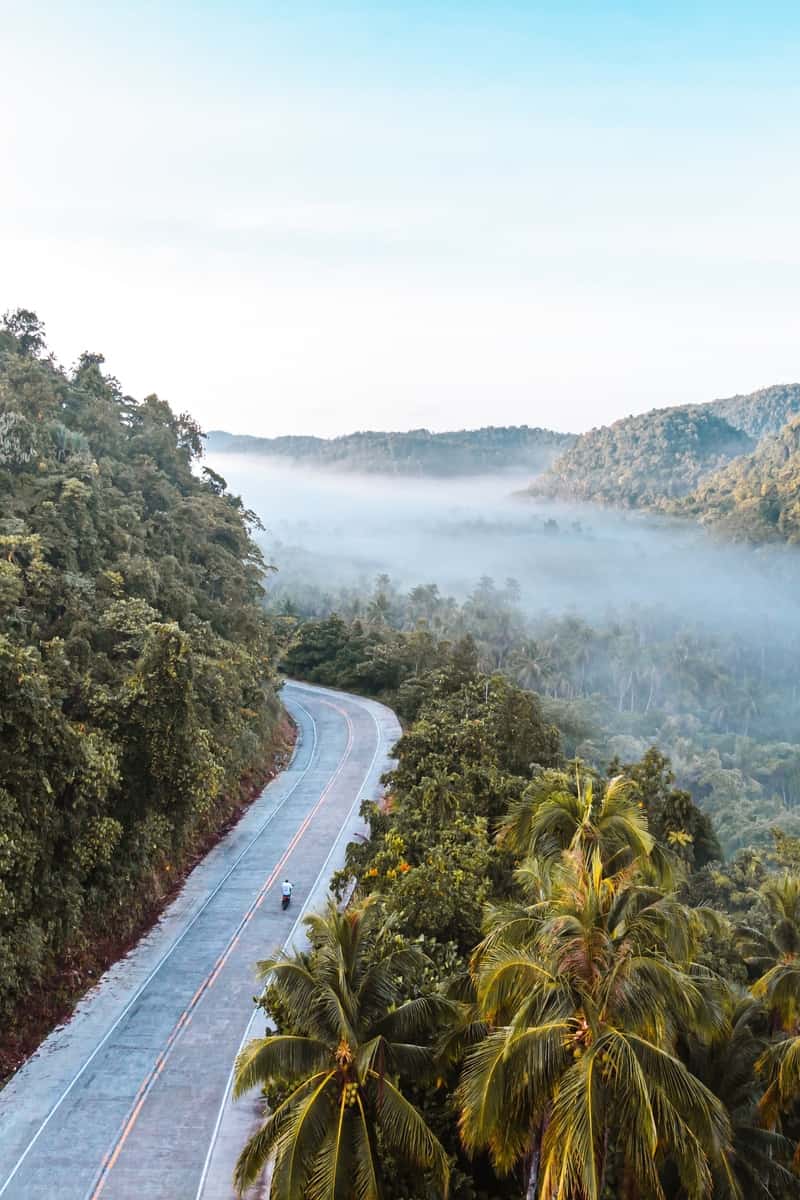
Bali, Indonesia
If you’re looking for the perfect holiday picture, Bali should be at the top of your destination list. Other than having countless tourist attractions, you’ll love visiting here.
Affectionately known as the ‘Island of the Gods’, Bali has ancient temples standing against the backdrop of lush jungles and pristine beaches.
In Ubud, the cultural heart of Bali, you can immerse yourself in traditional dance performances, art galleries, and yoga retreats. For beach enthusiasts, Seminyak, Kuta, and Nusa Dua boast sun-kissed shores perfect for surfing and sunbathing.
If you love adventures, you can explore the volcanic landscapes of Mount Batur, while there are world-class spas and beachfront resorts if you plan to chill.
Bali’s cuisine, a flavorful fusion of local ingredients and traditional techniques, is a delight for foodies. Doesn’t all the above sound like the perfect plan for your trip?
The best months to travel to Bali are from April to October . With little rain, low humidity, and many sunny days, this is the best choice.
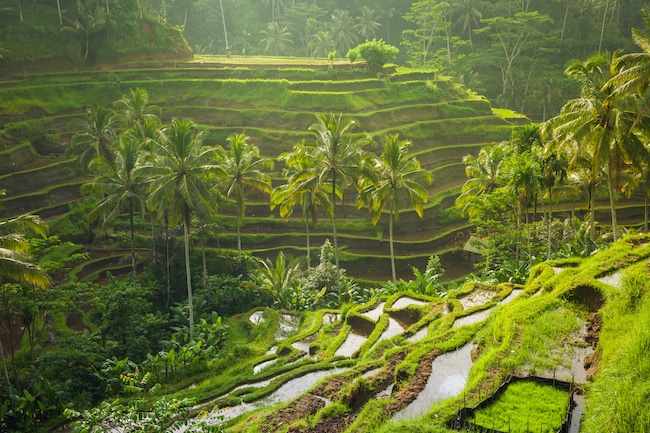
Check out this guide about the best sites to visit in Bali .
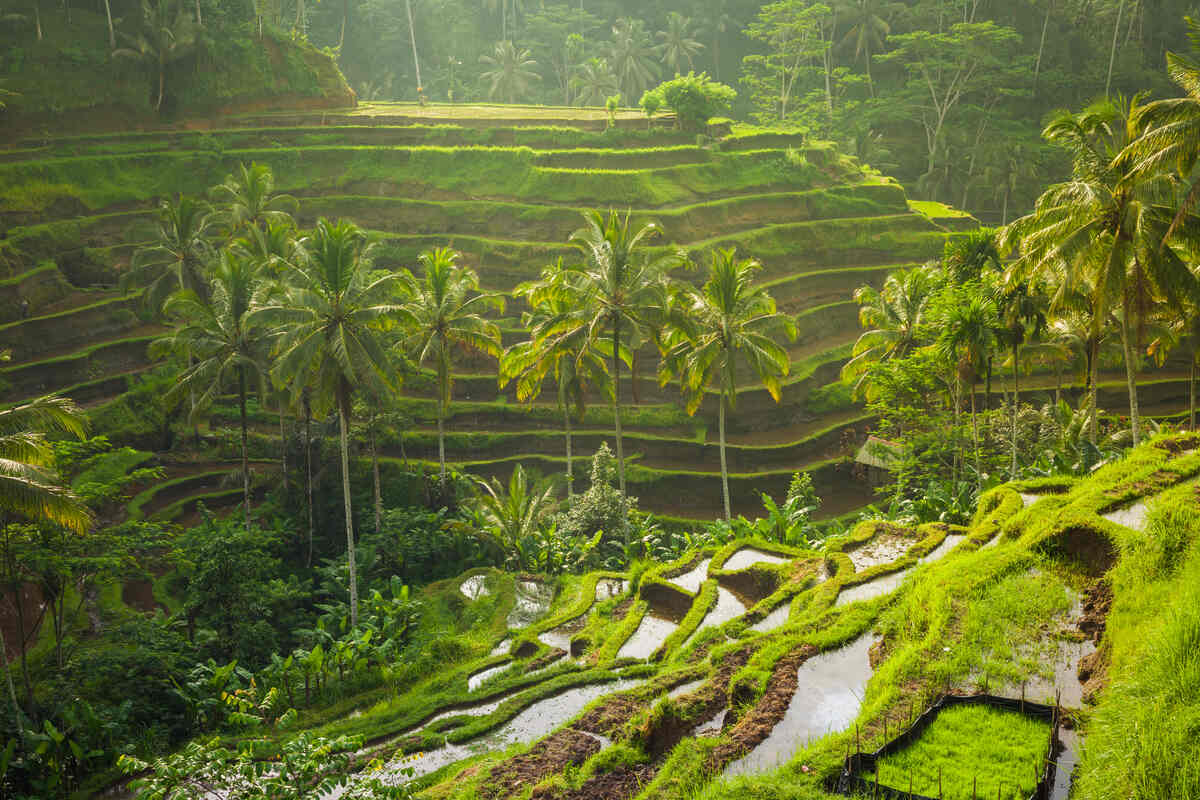
Nusa Islands, Indonesia
Imagine a tropical paradise with fewer crowds, and you’ve got the Nusa Islands in Indonesia. These islands are a dream for anyone who loves the ocean, and I’m confident you’ll quickly fall in love with them if that you’re case.
Go snorkeling or diving in the clear waters and say hello to the friendly manta rays at Manta Point. If you’re into breathtaking views, the Kelingking Beach is a must-see with its unique T-Rex-shaped shoreline.
And for the explorers out there, rent a scooter and zip around Nusa Penida to discover hidden spots. And when you’re tired, just relax on a beach, feeling like it’s your own private piece of heaven!
Best time to visit? Aim for April to October when the weather is just perfect for island adventures.
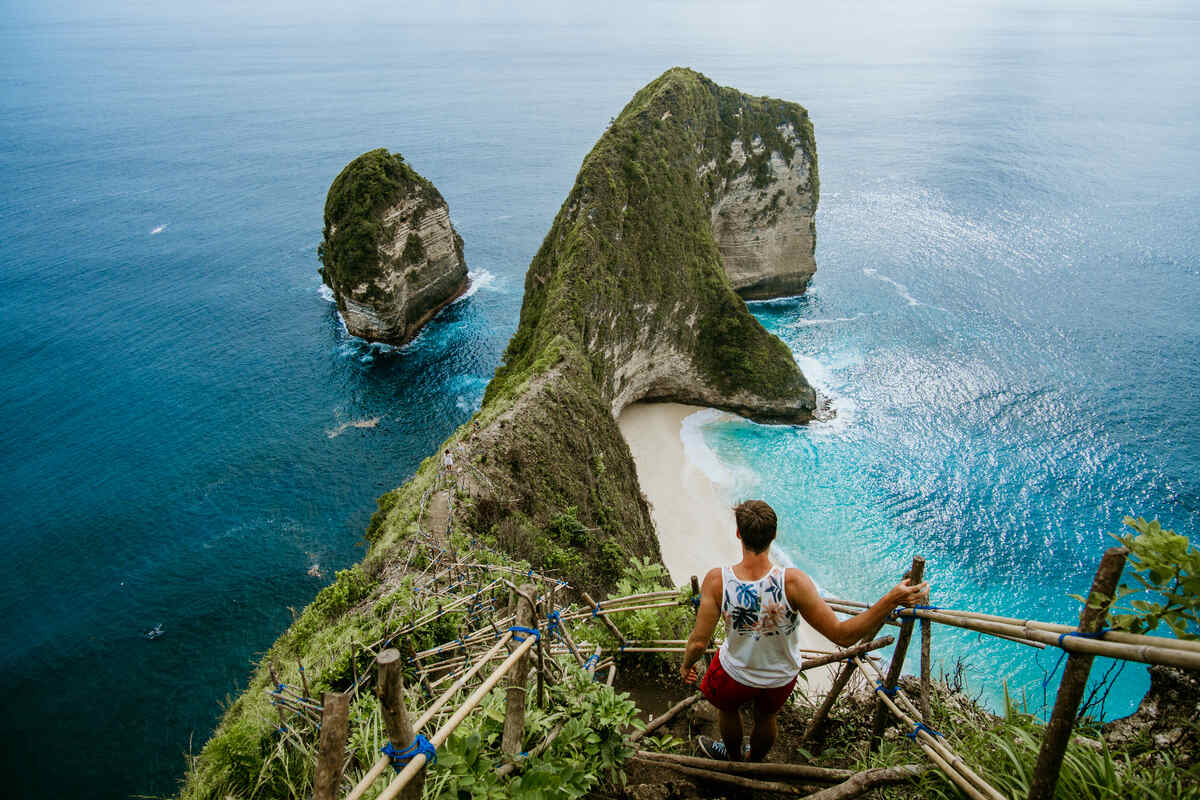
Check out this ultimate itinerary for Nusa Penida in 2 days .
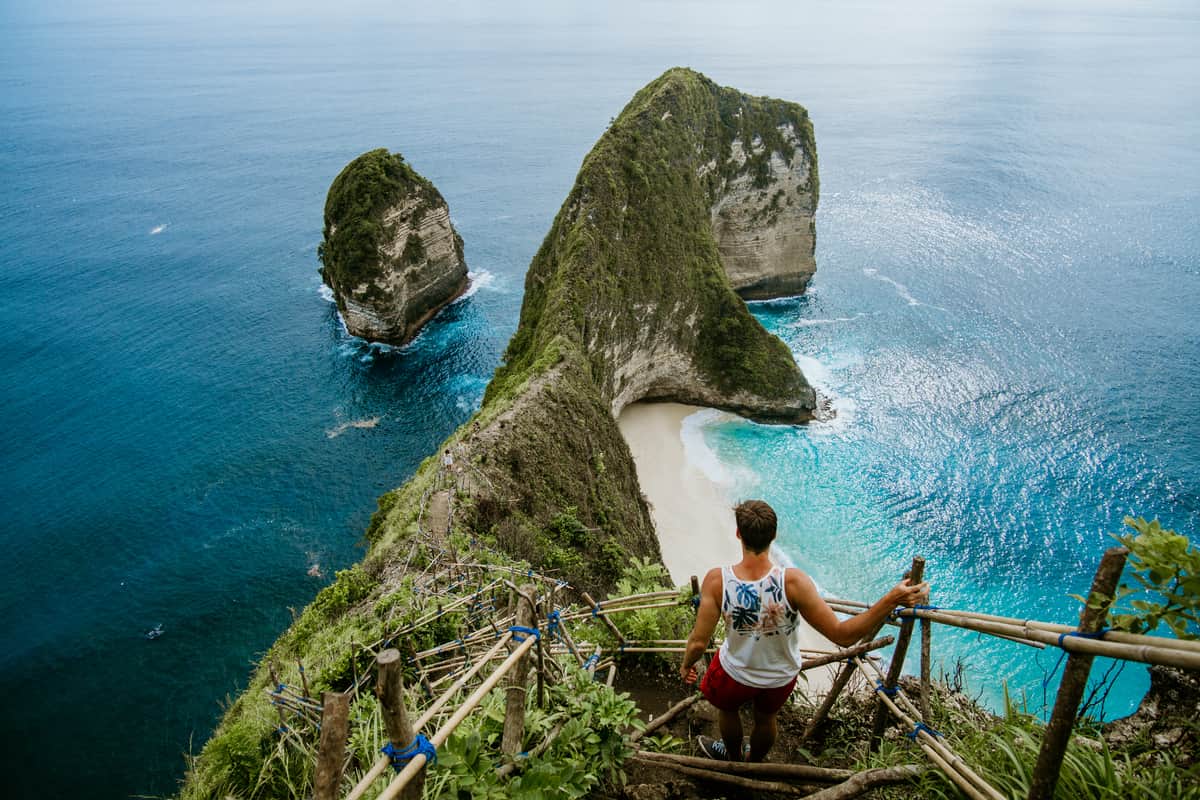
Chiang Mai, Thailand
Chiang Mai is another of the must-visit places for your vacations in Southeast Asia, with its stunning temples, friendly locals, and amazing food.
Take a songthaew up the Doi Suthep temple and see the views over the city. After that, head over to the old city to have a local, delicious lunch at a cheap restaurant. You’ll love Thai food.
Plus, the night markets in Chiang Mai are a great way to introduce yourself to the local produce and get some shopping done.
As you wander around the brightly colored tents at sunset, you can get some great deals on local crafts and souvenirs as well as listening to local music and traditions.
If you want to see the real Thai authenticity, come around 6 pm to stop and pay respect to Thailand’s King’s anthem at the night markets. They take place from 4 pm to 10 pm on Saturdays and Sundays, and they’re a real treat when it comes to nightlife in Chiang Mai .
If you want to take a deeper look, organize your vacation around Chiang Mai Lantern Festival, Loy Kratong . It takes place in autumn based on the Thai lunar calendar.
Thai people release rice paper lanterns into the sky as an offering to Buddha to get rid of misfortunes. The city illuminates with hundreds of orange lights as people hope for a brighter future and a better life.
Still looking for the most beautiful places in South East Asia place for your holidays?
The best months to visit Chiang Mai is between October and February . The weather during this period is cool, not rainy, but more crowded. I wouldn’t recommend traveling to Chiang Mai from February to April because of the burning season. Also, June, July, and August will have many rainfalls and might spoil your trip.
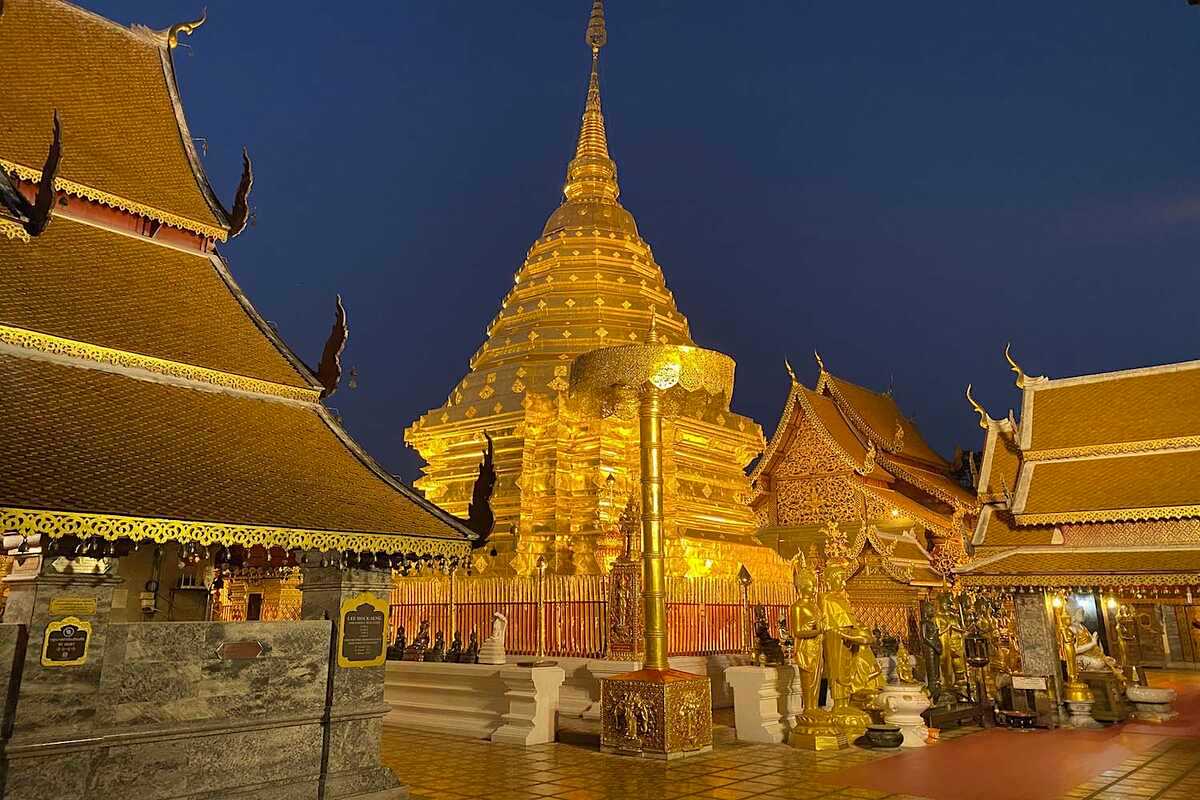
Check out this guide about the best tours from Chiang Mai .
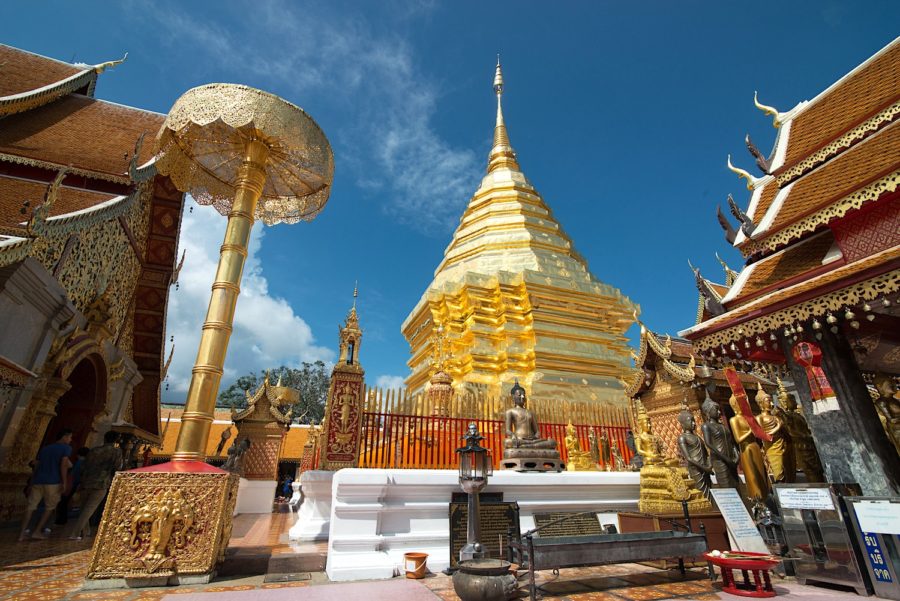
Railay Beach & Krabi, Thailand
Discover your own piece of paradise in Railay, with amazing Krabi tours , a small Thai peninsula with beautiful beaches and a gorgeous mountain coastline. No matter what your ideal beach vacation is, you’ll find it in Railay.
You can sunbathe in a secluded spot on the beach, taking a break only to take a dip in the clear blue waters, attend a rock climbing class to take in the beauty of the peninsula from above, or explore the Phra Nang Cave to find out why it is called “the Princess cave”.
Railay Beach is one of the most beautiful places in Southeast Asia. From its island hopping tour to the stunning beaches, Thailand will treat you well. Enjoy the sea and the picturesque views and let your only worry be the salty breeze messing up your hair.
All in all, it’s one of the best things to do while in Krabi , and it’s another of my personal favorite tourist spots in Southeast Asia.
The best time to visit Railay Beach and Krabi is during the dry season, which typically runs from November to April.
This period offers pleasant weather with lower humidity and minimal rainfall, making it ideal for beach activities, rock climbing, and taking a trip to the Tiger Cave Temple and taking an island hopping tour .
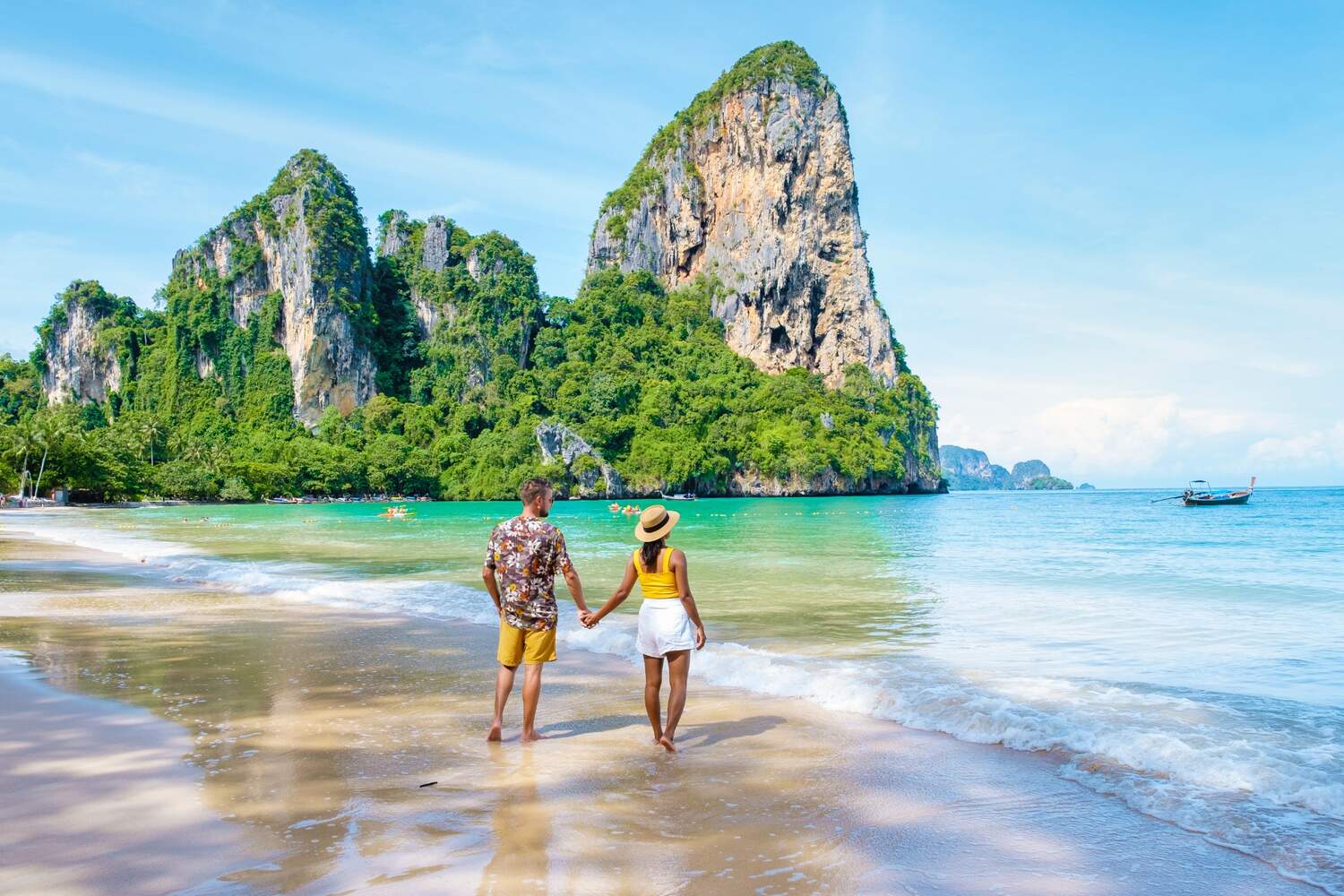
Related Guide!
Check out this ultimate itinerary for Krabi in Thailand .
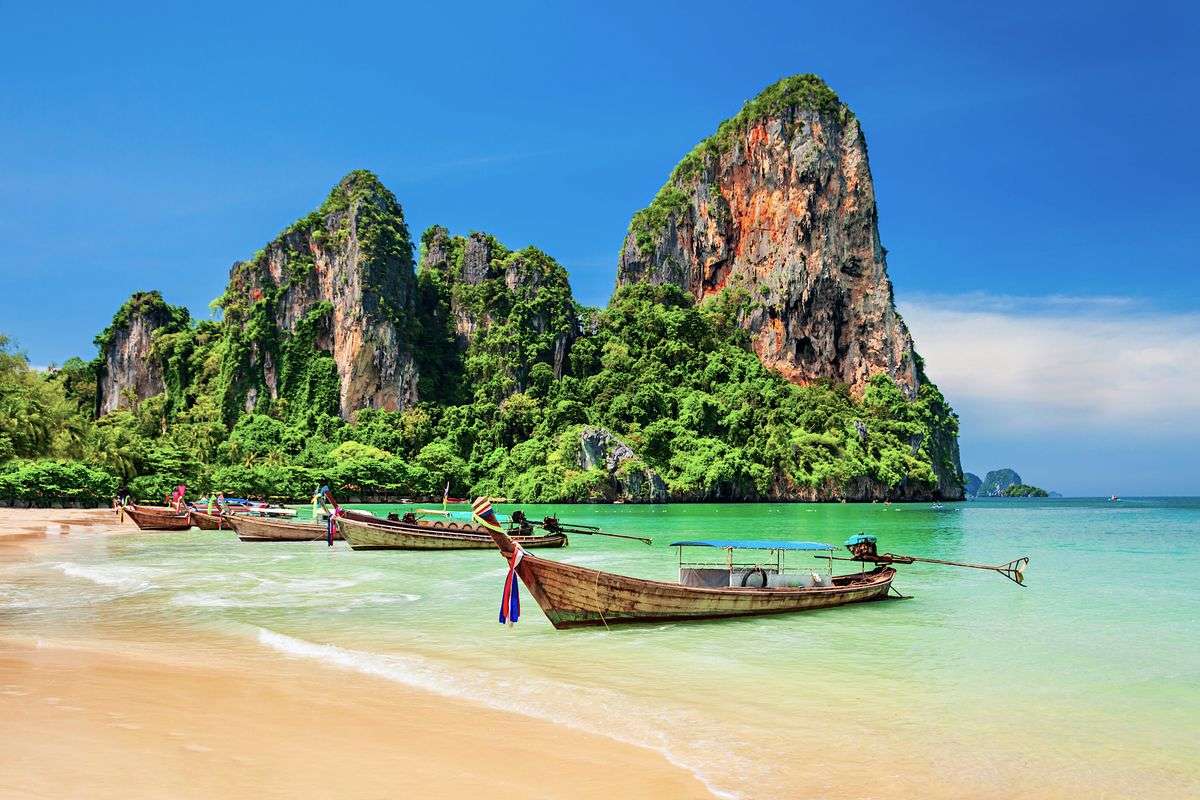
Penang and George Town, Malaysia
Penang is a place in Malaysia that, if you’re a foodie, you simply cannot afford to miss. From tandoori chicken and duck soup to pancakes and toasted bread with coconut jam, people really have a way around food in this part of Malaysia.
Stop at a street food stall for a taste of local flavor as soon as you get the chance. As it is famous for its culinary delights, it only makes sense that Penang is also home to durian – the king of fruits (and smell).
Since fresh durian is hard to find outside of Southeast Asia, it’s practically required that you try it once you’re in the region. There isn’t a better place to taste durian than Penang!
You can visit one of the durian farms to eat the freshest ones. For the smell, the texture, and the flavor, your first time trying durian is a truly unforgettable experience. Last but not least, make sure to visit Langkawi from Penang, one of the most beautiful places in Asia, in my opinion.
As a whole, the best months to visit Penang, Malaysia is between December and February . However, if you want to see more of Malaysia with the Perhentian and Tioman Islands, you will want to come from May through September .
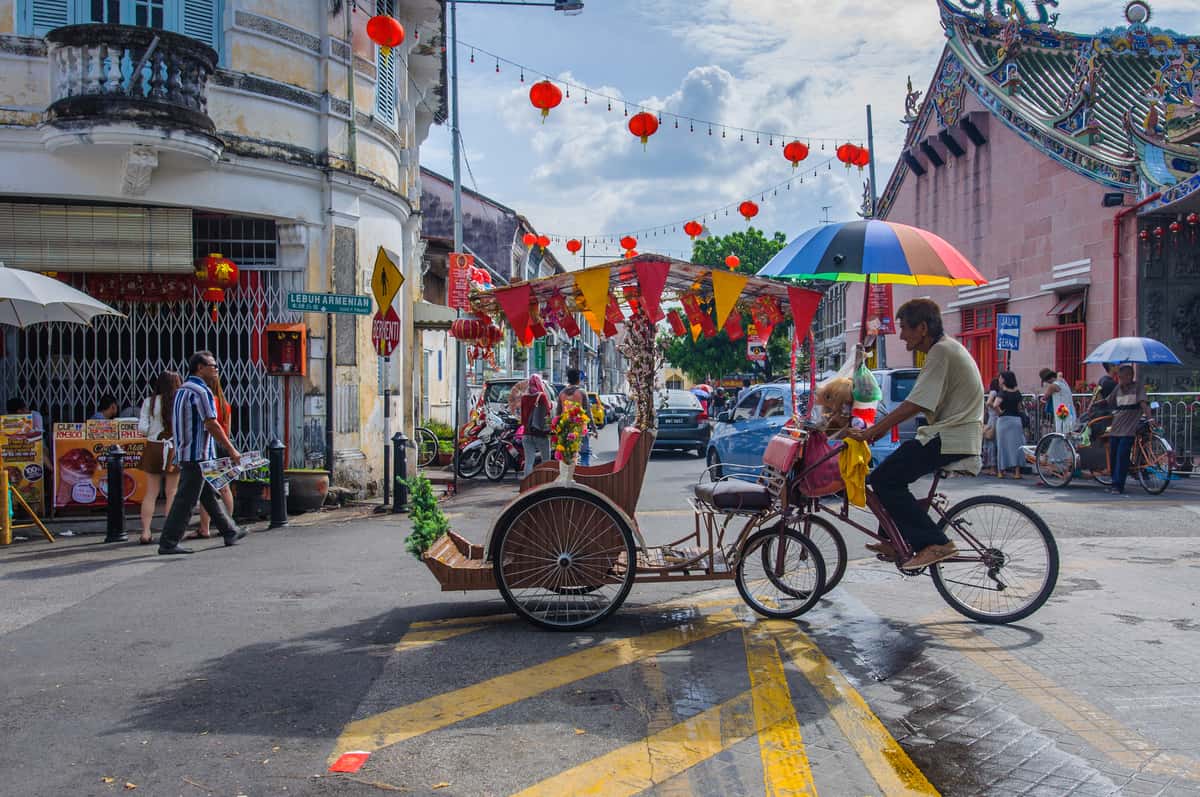
Read this guide about some great places in Penang .
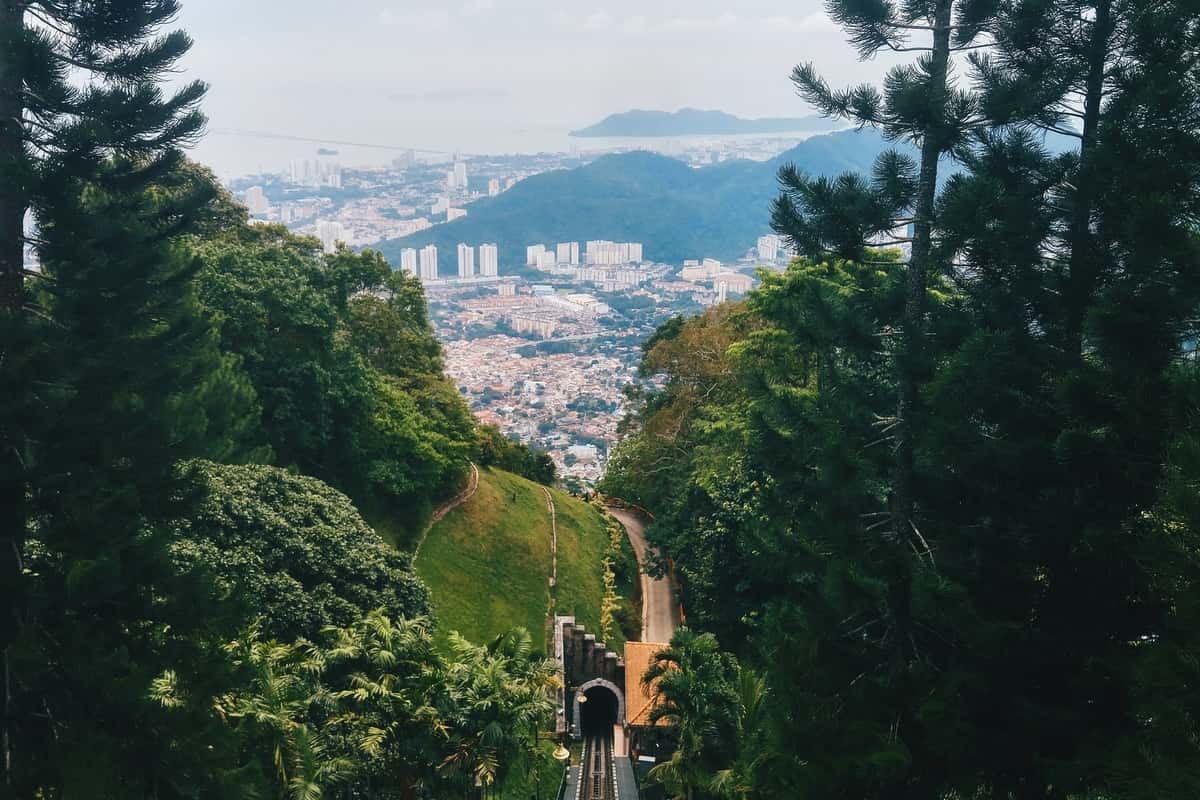
Camiguin, Philippines
Camiguin in the Philippines is like a pocket-sized piece of heaven, and despite the size, I fell in love with the island when visiting. So much that I came back and spent over 2 months there in total!
This is my personal favorite island to visit in the Philippines .
Love a good hot spring? The Ardent Hot Springs are perfect for a relaxing soak. And if adventure is your thing, hiking up Mount Hibok-Hibok is a thrill – the views at the top are worth every step.
And if you want a day trip, I highly recommend checking out White Island, about 10 minutes away by boat, and that’s a small piece of sand without trees or any shade, and with barely anyone.
Let me tell you, this will easily become your favorite place to visit in Southeast Asia!
And don’t leave without trying the lanzones fruit; they’re famously sweet here. It’s a small island, but every corner has a story.
Visit between March and June for the best weather and to catch the Lanzones Festival if you’re lucky!
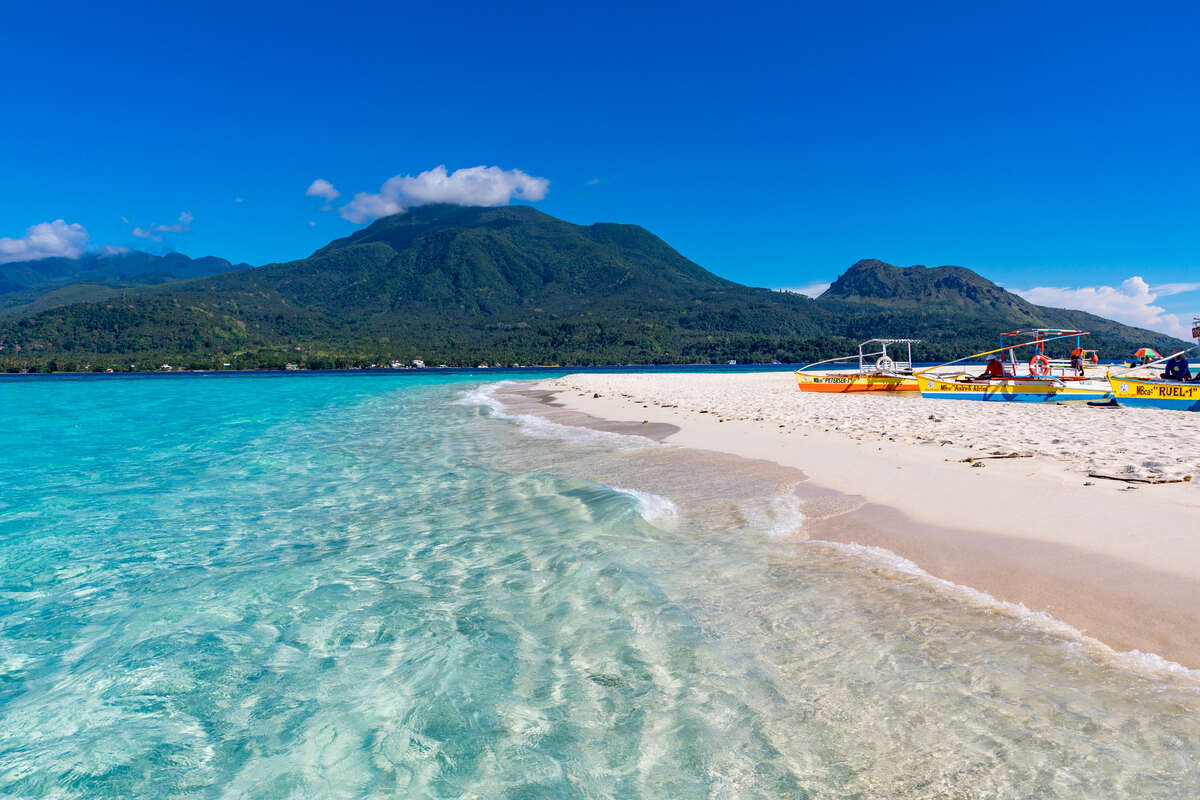
Hoi An, Vietnam
Still wondering where to go in Southeast Asia? Hoi An in Vietnam is like stepping into a lantern-lit dream, and you’ll love every corner, as soon as you step foot in town.
Hoi An is famous for its well-preserved Ancient Town, where every turn offers a new surprise. Take a leisurely bike ride through the countryside, or learn to cook Vietnamese dishes at a local cooking class.
At night, the town transforms with colorful lanterns lighting up the streets and becomes like a fairytale! Don’t forget to get a custom outfit tailored; it’s a Hoi An specialty, and many visitors leave with a beautiful suit or dress.
For the best weather and fewer crowds, plan your visit from February to April. Hoi An is not just a place to see; it’s a place to feel, and you’ll understand what I mean if you’re lucky enough to come at some point.
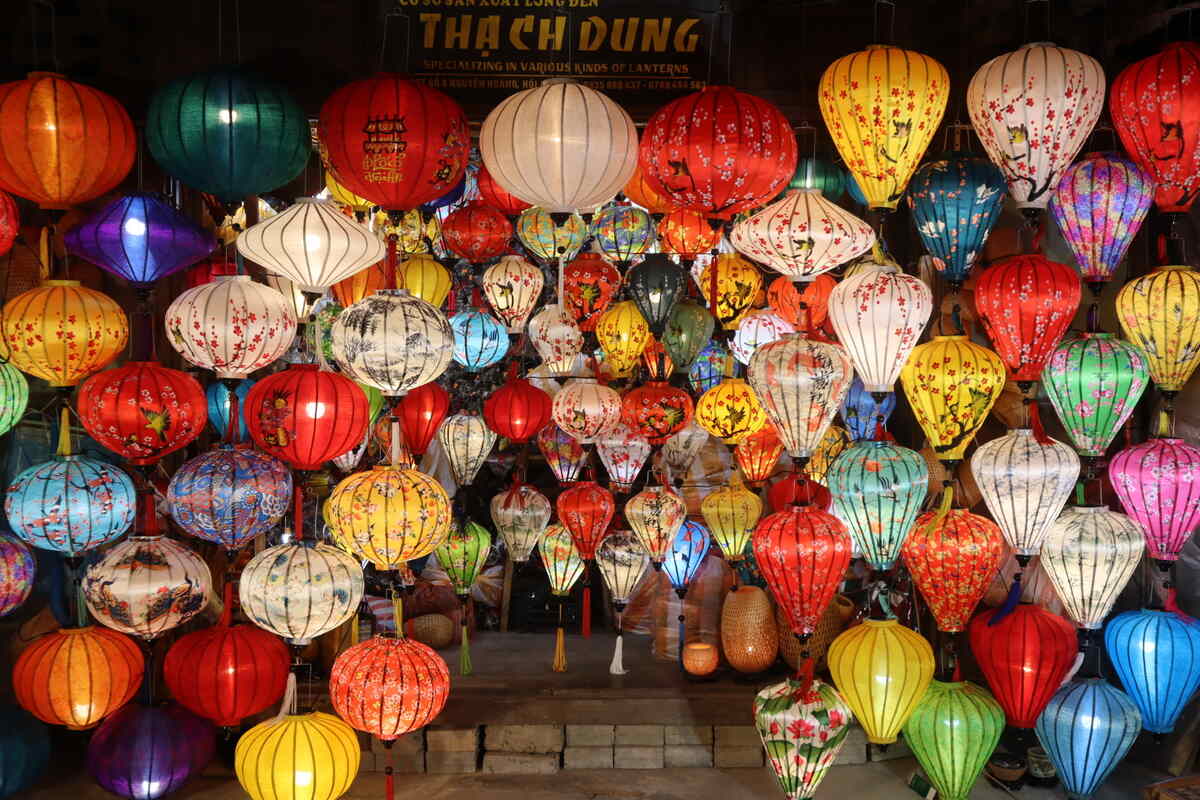
Here’s a complete travel itinerary for Hoi An, Vietnam .
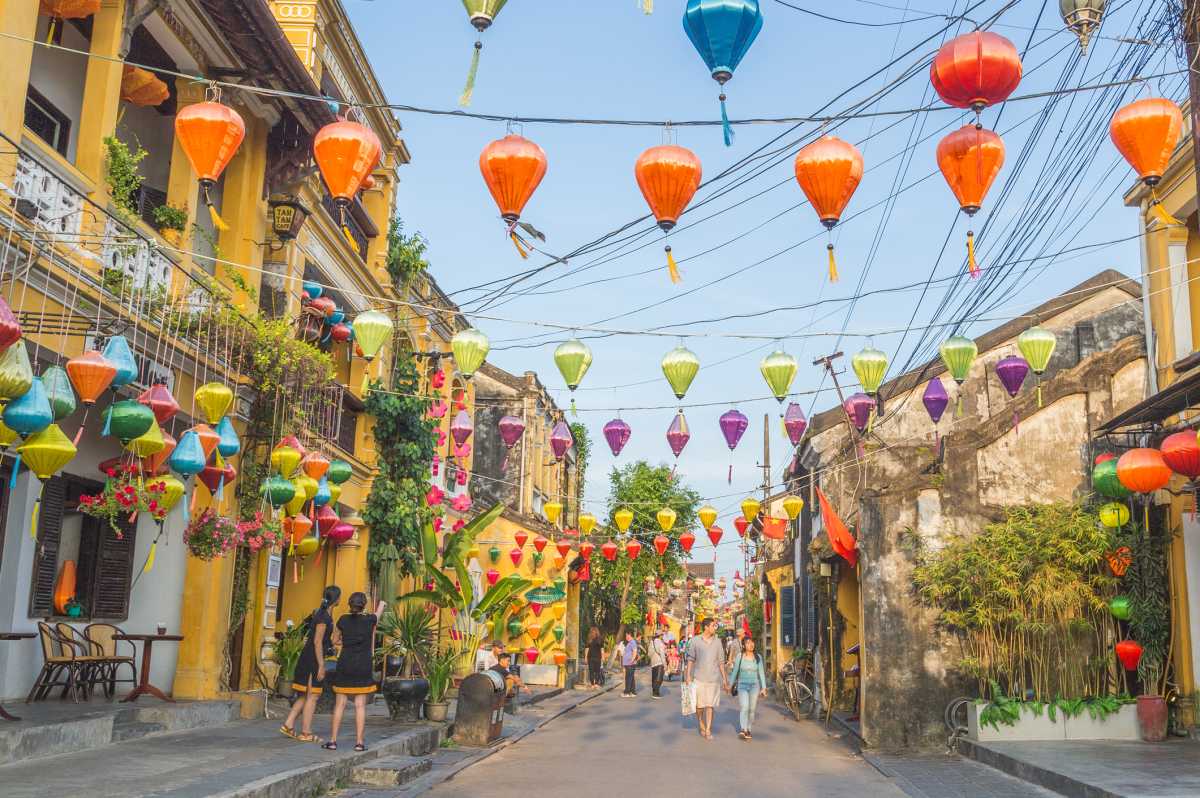
Da Nang, Vietnam
Located just about 30 minutes by car from Hoi An, Da Nang in Vietnam is the perfect mix of city and beach life, and it’s a great place for digital nomads as well, with great coworking spaces and activities to enjoy after work.
Start your day by exploring the Marble Mountains , where you can discover hidden temples and caves, and you can easily spend a couple of hours here.
On the same day, I recommend going to see Lady Buddha in Da Nang and its temple, which is easily another amazing couple of hours spent.
After that, you can sunbathe at My Khe Beach for some sun and surf, as it’s one of the most stunning beaches in Vietnam. For a unique experience, cross the Dragon Bridge , especially at night during the weekend when it spits fire!
And you can’t miss the Ba Na Hills with its famous Golden Bridge held by giant hands. That makes for many attractions in town isn’t it?! Well, that’s exactly what you can expect from Da Nang!
Visit from February to August when the weather is just right for exploring.
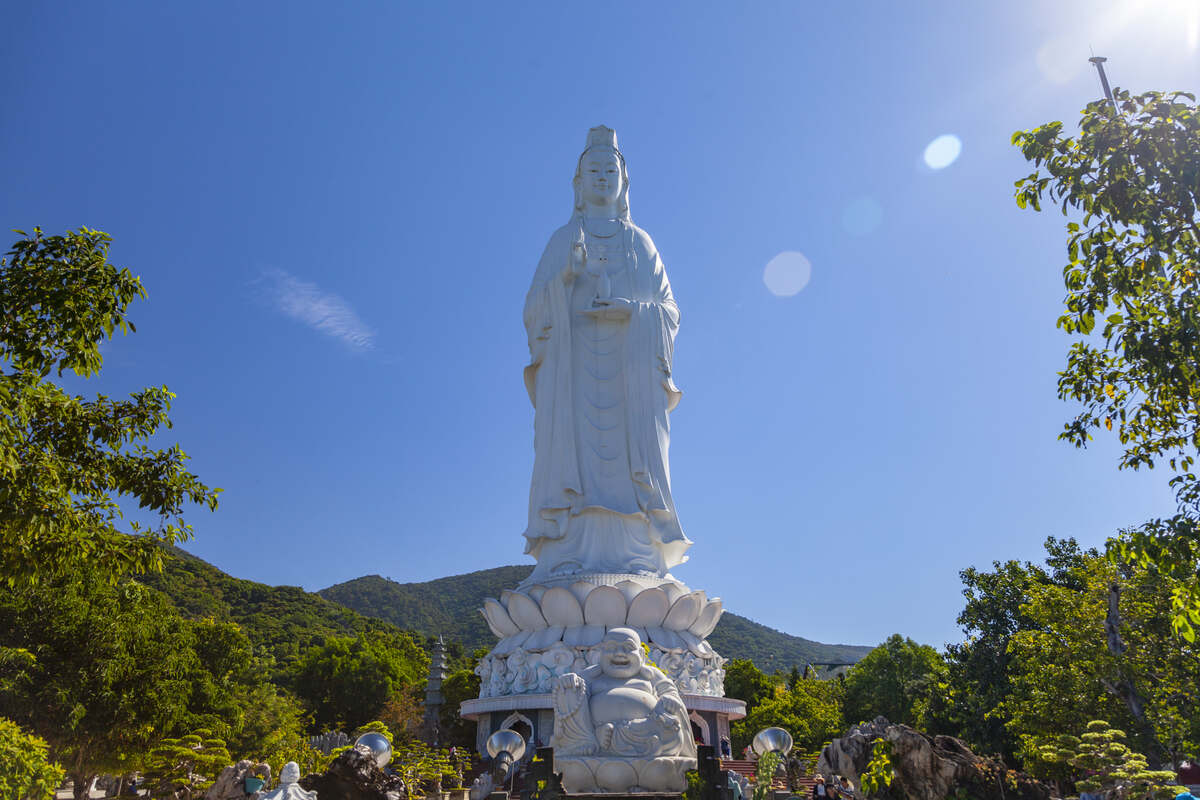
Here’s a complete travel itinerary for Da Nang, Vietnam .
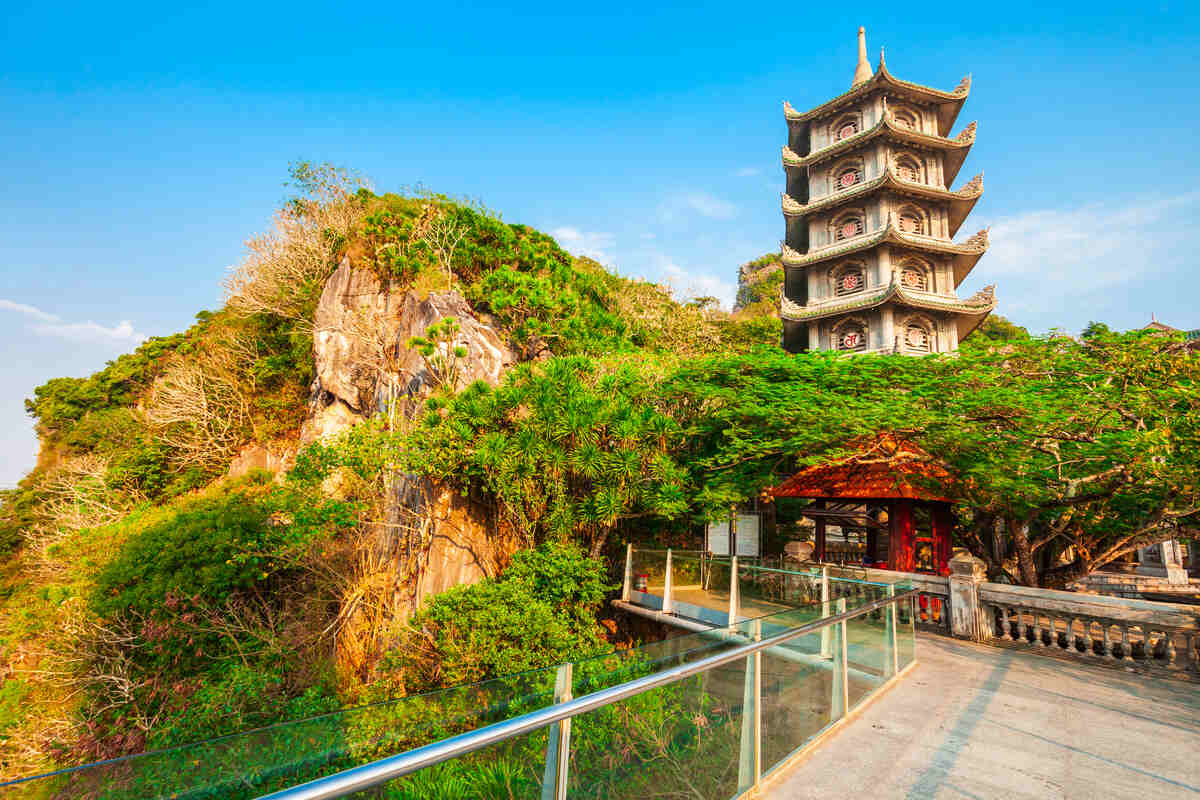
Chiang Rai, Thailand
Chiang Rai, located in Northern Thailand , is where traditional Thai culture meets modern art. Most people come to Chiang Rai as a day trip from Chiang Mai , but if you have more time available, I recommend staying here for a couple of nights.
This city is home to the stunning White Temple (Wat Rong Khun) , a masterpiece of modern design that looks like it’s straight out of a fantasy novel.
Once you’ve dozens of photos at the White Temple, make your way to the Blue Temple and the quirky Baan Dam (Black House) museum for more artistic wonders.
If you have some time left, or plan to stay here for the night, then another must-visit is Wat Huay Pla Kang, a beautiful Buddhist temple with fewer crowds compared to other tourist spots in Chiang Rai .
And for a taste of local life, visit the Night Bazaar with its array of crafts and food stalls.
Chiang Rai is cooler than other parts of Thailand, so it’s comfortable to visit year-round, but November to February offers the most pleasant weather.
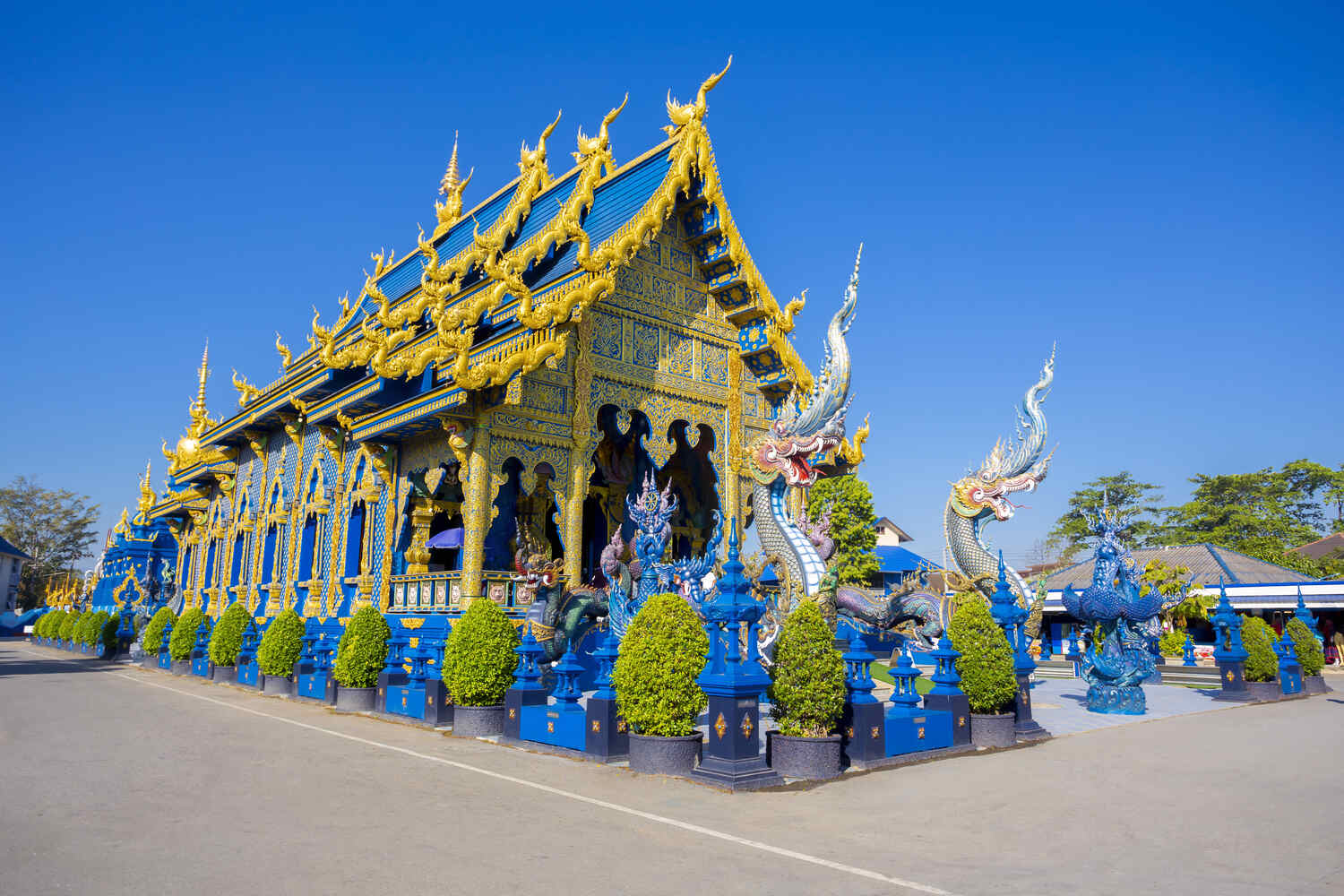
Want more information?
Here’s a complete travel itinerary for Chiang Rai .
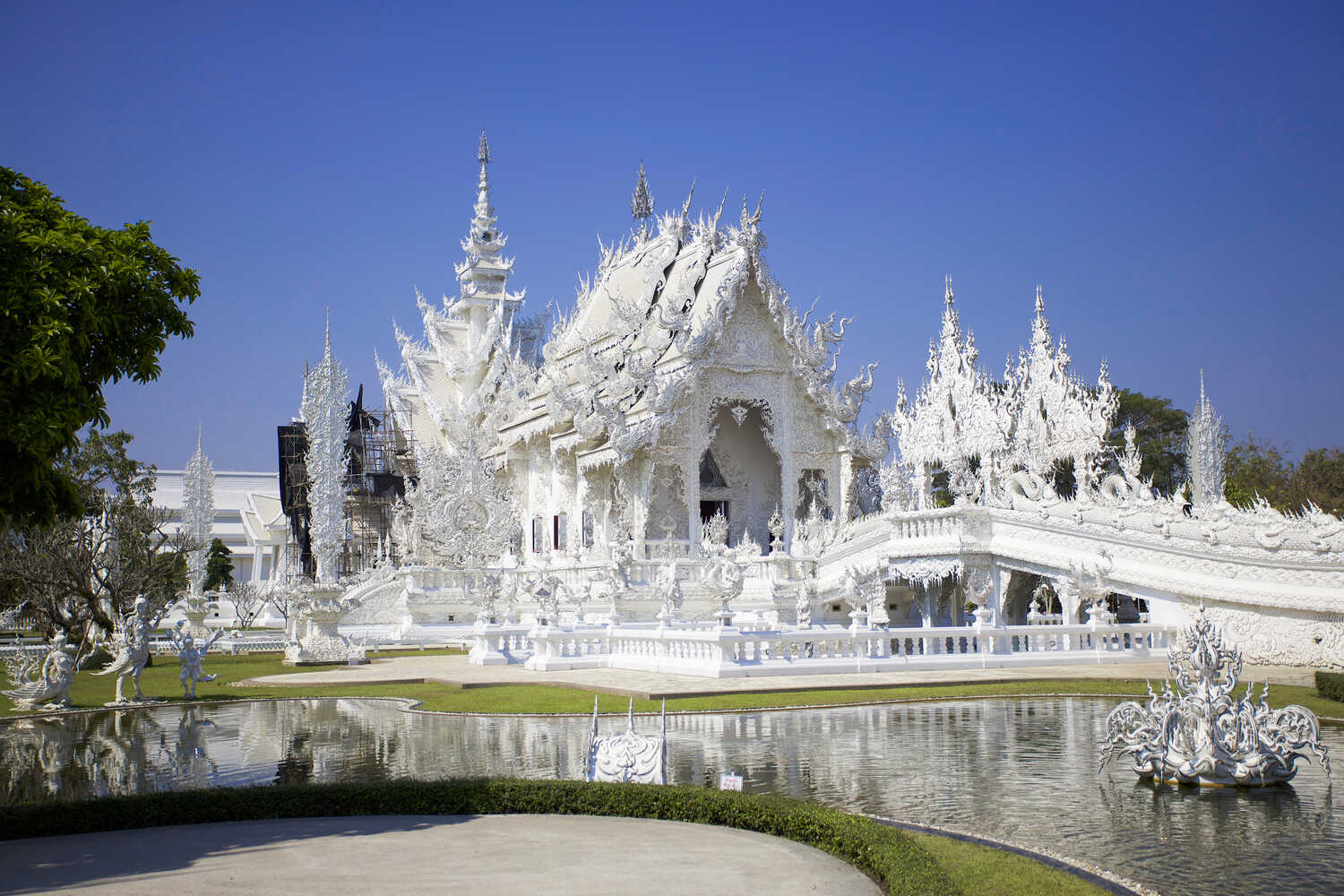
Khao Sok National Park, Thailand
Khao Sok National Park in Thailand is a real-life jungle book. It’s an ancient rainforest filled with exotic wildlife, towering limestone cliffs, and gorgeous lakes.
It’s a massive place, and you’ll want to plan at least 2-3 days here to make the most of it. It’s located not far from Phuket, and most tourists make their way from there.
Once you’re here, start your adventure with a jungle trek; you might spot some wild elephants if you’re lucky. For a truly unique experience, spend a night in a floating bungalow on Cheow Lan Lake.
Don’t forget to explore the park’s hidden caves and waterfalls.
The best way to visit is to rent a boat and roam around, as you’ll stop by a cave, get to swim around, and tour packages often include dinner too. When I visited, I paid 1500 baht (or about US$45) for the full day and it was worth every penny.
On the other hand, the best time to visit is from December to April when the jungle is lush and the weather is dry. Khao Sok is a reminder of how wonderfully wild our world can be.
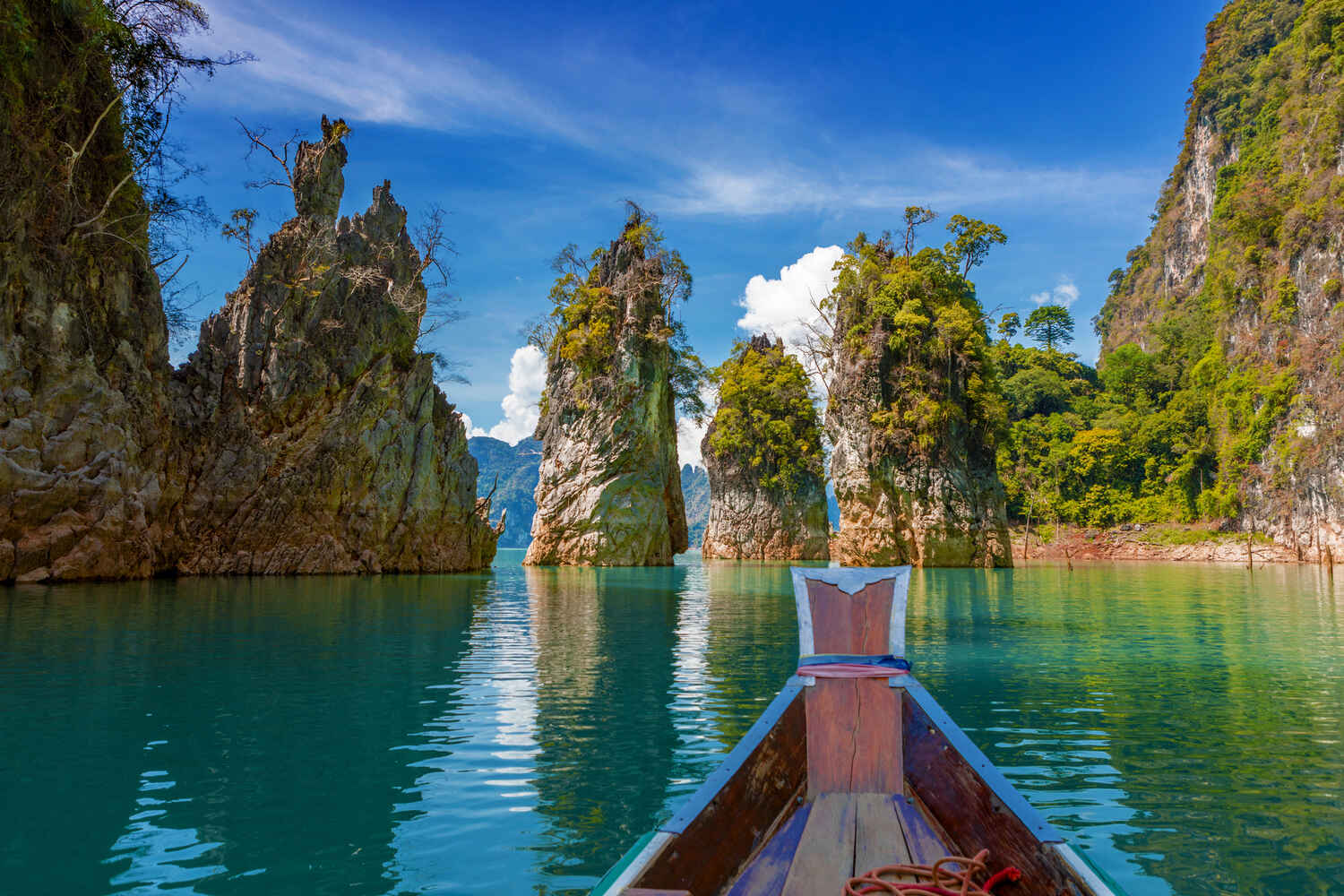
Bangkok, Thailand
“One night in Bangkok and the world’s your oyster” the song goes, summarising the feel of the Thai capital city best. It is impossible to be in Bangkok without feeling on top of the world!
After spending such a long time in Bangkok , its vibrance and chaos made me fall in love. From the delicious smell of Thai dishes to the busy night markets and Buddhist temples, you’ll love it here. In addition, walk around Bangkok at night , see the lit Grand Palace, and explore Wat Pho with no tourists
Bangkok is one of the best places to visit in Southeast Asia. From its peaceful chaos to the architecture to the cheap luxury hotels, you’ll have a blast.
The recipe for losing yourself in Bangkok is very simple: walk, pass skyscrapers and Ferris wheels, Buddhist temples, five-star hotels, and one incredible city breathing with history. Just don’t forget to stop at a street food stall – tasting the real flavor of Thailand is essential.
The best months to visit Thailand are between November and early April . With temperatures ranging from 29°C to 34°C, it is the perfect weather for a day at the beach or in the city. And you’ll get to make the most of the day trips out of Bangkok too.
However, if you’re planning to visit Northern Thailand in addition to Bangkok, you should come from November till February. In fact, for instance, Chiang Mai experiences the Burning Season from February and makes it unpleasant to visit.
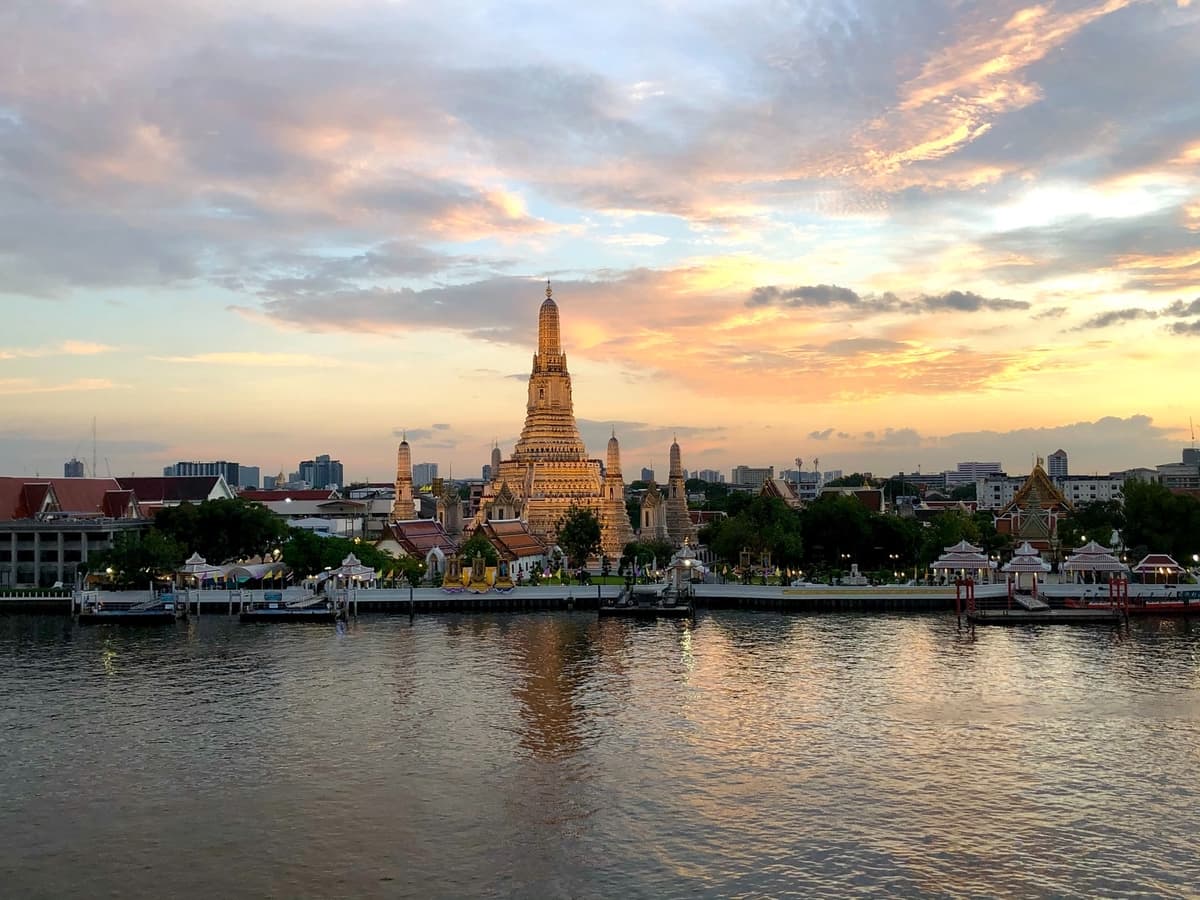
Check out this ultimate 3-day Bangkok itinerary .
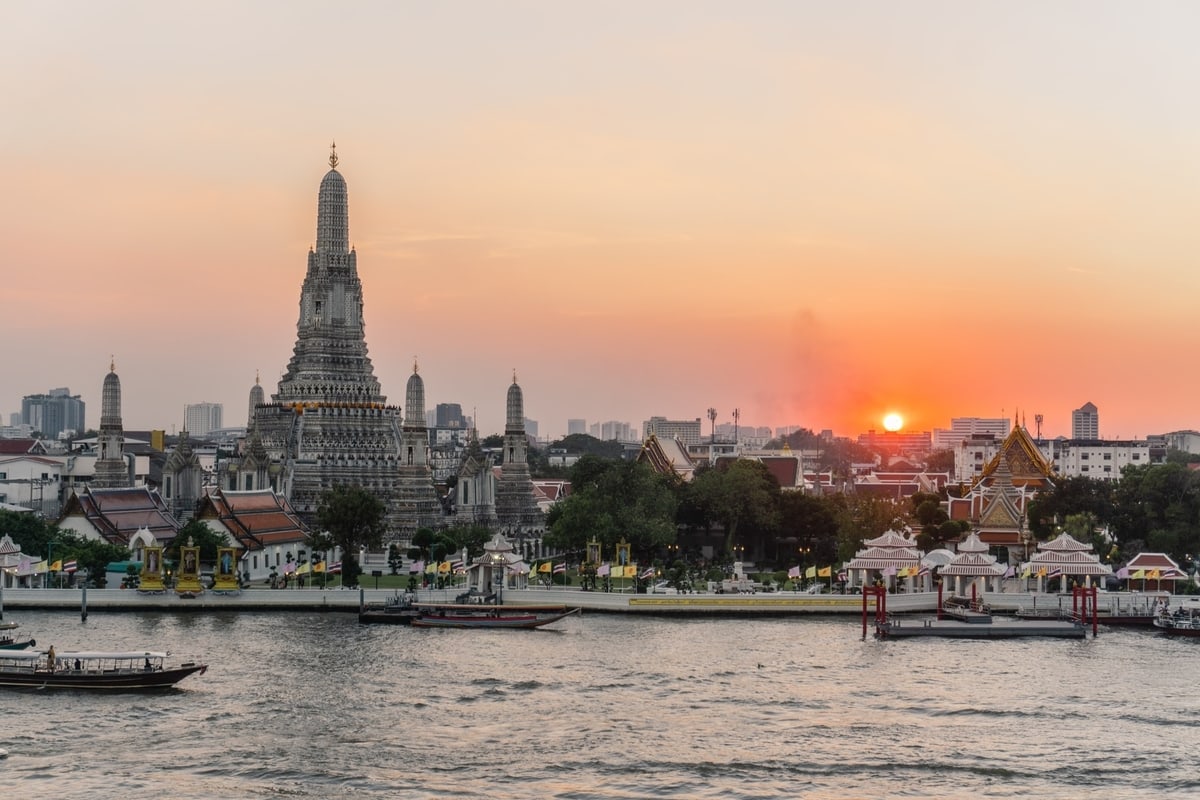
Malacca, Malaysia
Step into Malacca (also spelled Melaka), Malaysia, and you’ll feel like you’re walking through history, and I really mean it.
This UNESCO World Heritage city is a delightful mix of old and new. Start by exploring the historic A Famosa fort, then wander through the charming streets of Jonker Walk, bustling with antique shops and night markets.
Don’t miss the Baba & Nyonya Heritage Museum to dive into the local Peranakan culture. And if you’re a foodie, you’re really in for a treat. Malaysia as a whole has incredible food, and Melaka takes things to the next level, with delicious street food and affordable restaurant.
To make the most of your time in town, don’t forget to talk a boat tour along the river, which is one of the coolest things to do in town!
The best time to visit is between October and March when the weather is just right for exploration.
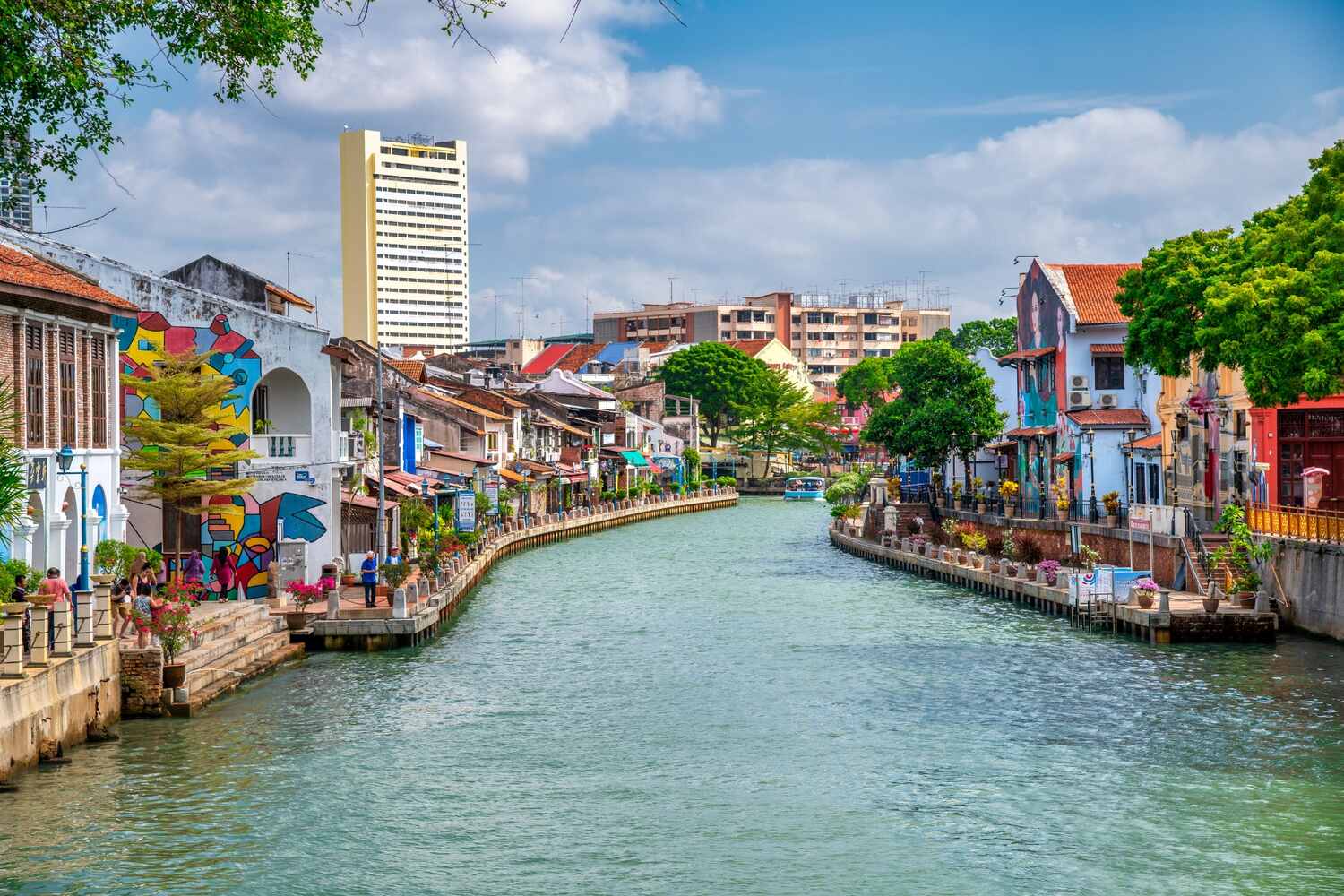
Whether you want to live the good life or experience unique activities, Singapore is one of the best places to visit in Southeast Asia.
From a casino to countless restaurants and shops to the incredibly famous infinity pool at the top floor overlooking the whole city, you’re certainly in for a treat. Did we mention that it has an art and science museum?
If you’re in Singapore and want to feel royal, don’t look any further than the Marina Bay Sands, one of the best places to visit in Southeast Asia.
Last but not least, let’s talk about the most luxurious hotel in the city. Don’t let your first impression fool you: Marina Bay Sands may look just like any other luxury hotel in the world.
But, in reality, there’s nothing short of an entire city hiding inside these brightly lit towers. A ship-like silhouette against the Singapore skyline, Marina Bay Sands has everything for a successful glamorous day.
In general, Singapore is an all-year travel destination. However, the best time when to visit Singapore is from December to June. In addition, it is best to come from February to April, as there’ll be fewer rainfalls and more sunshine.
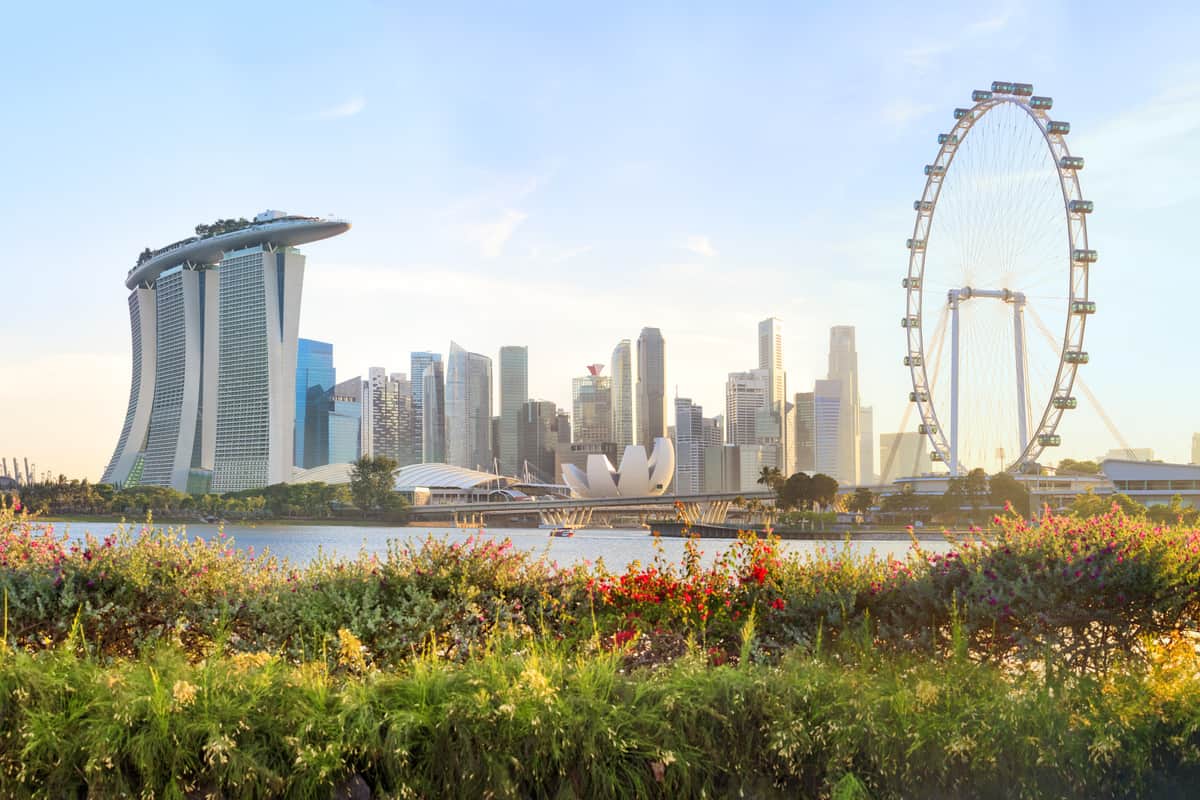
Kuala Lumpur, Malaysia
Kuala Lumpur, Malaysia is a fascinating place to visit, and I loved it. There is a rich tapestry of culture, religion, and history. The city is also home to some of the most breathtaking architecture in the world, like the KL Twin Towers.
From the Petronas Towers to the Sultan Abdul Samad Building, there are countless reasons to marvel at Kuala Lumpur’s skyline. The city is also a shopper’s paradise, with markets selling everything from traditional Malaysian crafts to luxury brands.
And of course, no visit to Kuala Lumpur would be complete without sampling the local cuisine.
With its blend of Malay, Chinese, and Indian influences, Malaysian food is truly unique. So whether you’re interested in culture, shopping, or food, Kuala Lumpur has something for everyone.
The best time to visit Kuala Lumpur is between February and April when the city enjoys its cooler weather. The wettest months are October and November, so you should be prepared for some rain if you travel during this time.
Last but not least, if you decide to travel to Malaysia, and more specifically to Kuala Lumpur, and you’re in for an outdoor adventure, make sure to consider the Mulu Pinnacles in Borneo .
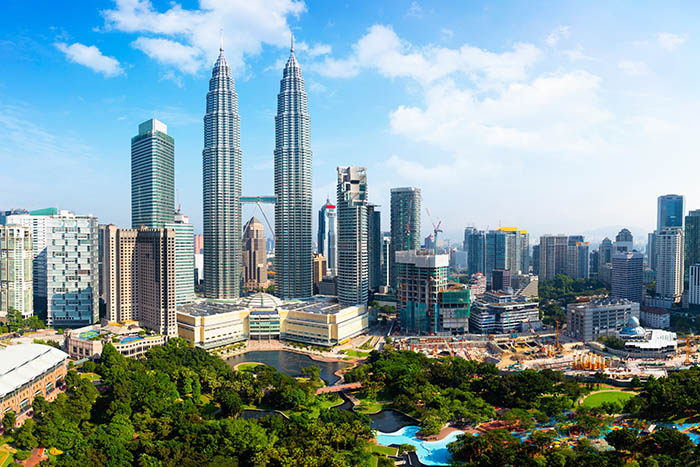
Ha Long Bay, Vietnam
Ha Long Bay is one of these places in Vietnam to visit at least once in your lifetime. Picture this: a pool of clear blue waters surrounded by green jungles rocks and boats softly crossing overnight.
This UNESCO World Heritage Site covers 1,500 square kilometers with stunning views like nowhere else on Earth. The best way to explore it is by spending the night on a boat and waking up to gorgeous views. Choose a cruise that’s best suited for your needs and glide across picturesque islands and mysterious caves.
The best way to get to Ha Long Bay is to join a tour from Hanoi and see the magical scenery from the bus.
There are two ways to explore Halong Bay. Firstly, you can join a tour and spend 4 hours paddling a kayak, have lunch, and explore the massive cave inside. Also, you can book a ticket to spend the night on a boat and have a great time relaxing with the view on the rocks.
Lastly, spending 2 nights here is one of the things to do in Southeast Asia. You’ll explore more remote areas and stunning beaches.
It is hard to define the best months to visit Vietnam. In fact, due to its shape, the weather in Northern Vietnam is different than other regions.
I recommend visiting Halong Bay from October to December . If you plan to visit Southern Vietnam, the best time is between December and April . In fact, the south constantly has warm temperatures throughout the year, and I’m sure you’ll love it!
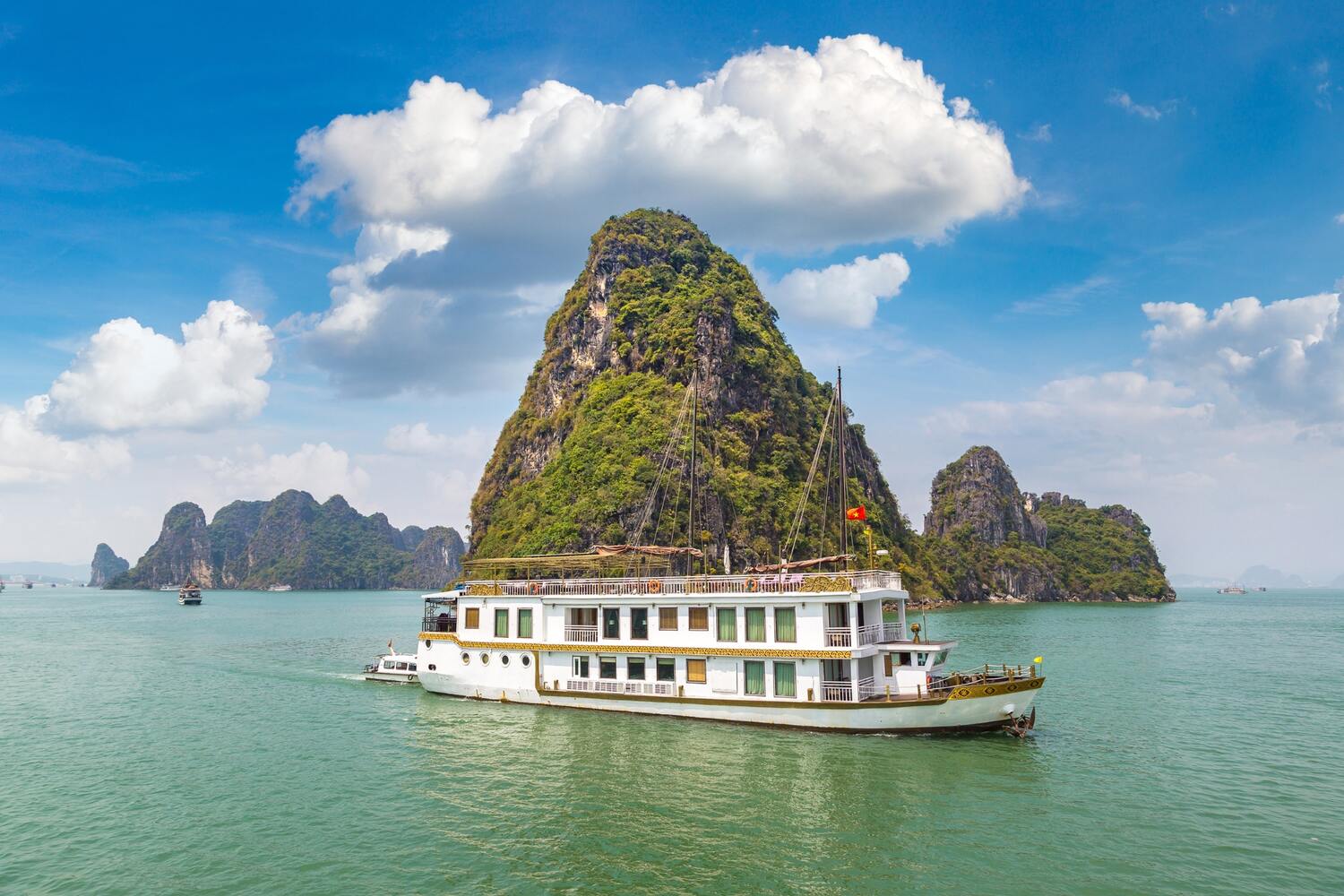
Sapa, Vietnam
If your trip to Asia is a search for surreal views, you won’t want to miss your chance to trek in the Vietnamese mountains of Sapa. Hiding in the valley, Sapa is surrounded by rice fields, terraced on the hills in yellow and green.
Trekking the mountains in Sapa is definitely one of the best things to do in Southeast Asia you shouldn’t miss.
The lush greenery stretches as far as eyes can see, reaching the horizon and continuing up the forested mountains. You’ll be climbing all the way up to the clouds that are hugging the edge of the sky like a warm blanket.
It’s hard to give the beauty of Sapa justice in words; you’ll just have to see it with your own eyes.
The best months to visit Sapa are March, April, and May, and from September to November. During this period, the weather is stable, pleasant, and with fewer rainfalls.
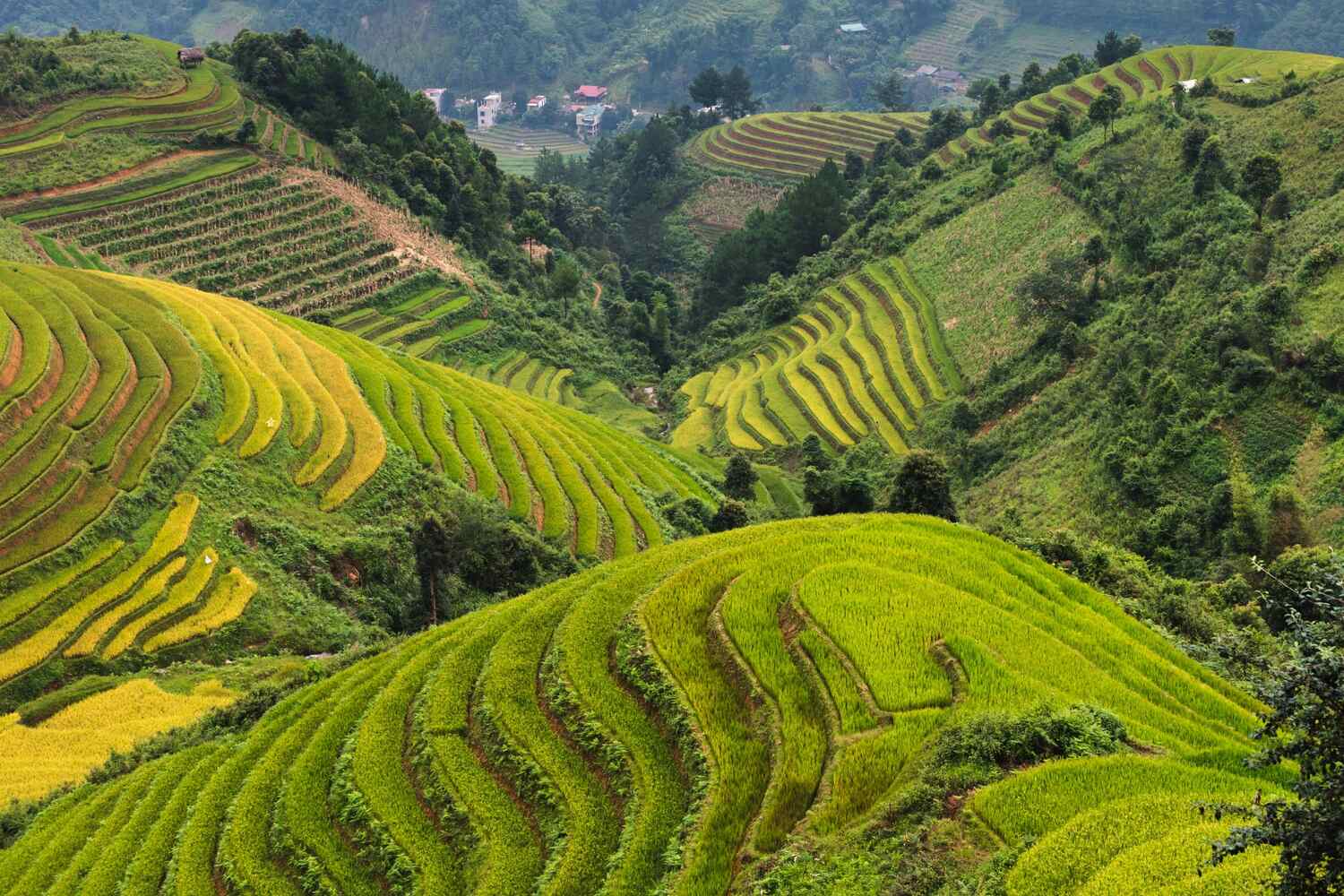
Phi Phi Islands, Thailand
You’ve probably heard about Phi Phi Islands in Thailand before, and if not, you probably saw pictures, particularly of Maya Bay , which is where the movie The Beach was recorded.
Phi Phi Islands are like snapshots from a postcard – crystal clear waters, soft sandy beaches, and a vibe that’s both lively and laid-back. Start your day with a snorkeling trip to see colorful marine life, then soak up the sun at Maya Bay – While it’ll probably be crowded, I can assure you that it’s worth it.
Don’t forget to climb up to the Phi Phi Viewpoint for a breathtaking panoramic view of the islands. As the evening rolls in, the beachfront bars come alive with fire shows and music, and you just can’t skip this part.
The best time to visit is from November to April, when the seas are calm and the skies clear. Phi Phi is where the sea, sun, and sand dance together.
Lastly, Koh Phi Phi is one of the best places to stay in Krabi province , and I’m confident you’ll have an amazing time on the island.
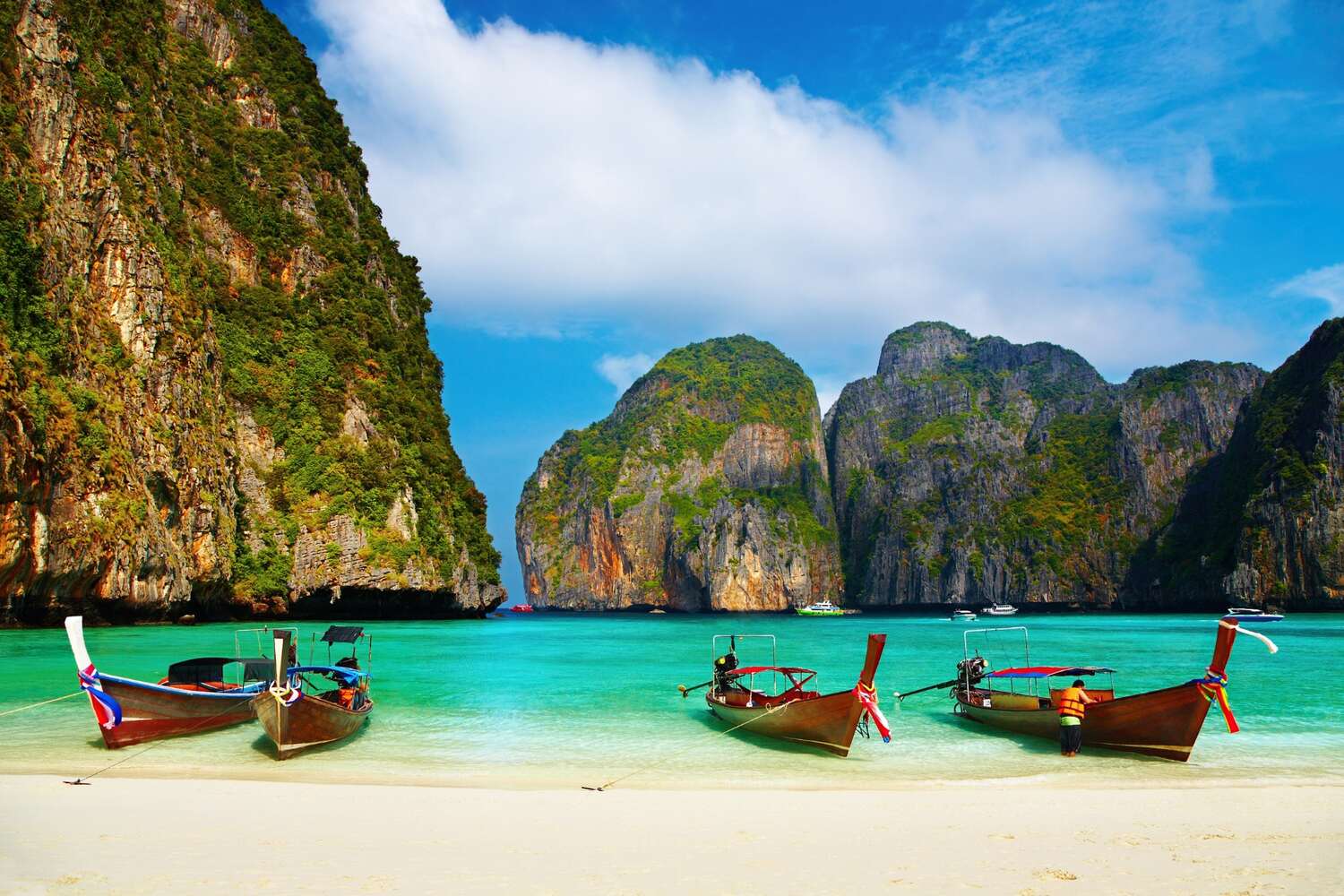
Batanes, Philippines
Batanes, Philippines , is a serene escape far from the typical tourist trail. This group of islands in the northernmost part of the Philippines offers rolling hills, dramatic cliffs, and ocean views that seem to stretch forever.
Visit the traditional Ivatan houses in Sabtang Island, marvel at the beauty of the Marlboro Hills, and witness the powerful waves at Valugan Boulder Beach.
Don’t miss the chance to taste the local Ivatan cuisine, a true farm-to-table experience. Batanes is a photographer’s dream, so keep your camera ready.
The best time to visit is from March to June when the weather is most stable. Batanes is more than a place; it’s a tranquil retreat from the world.
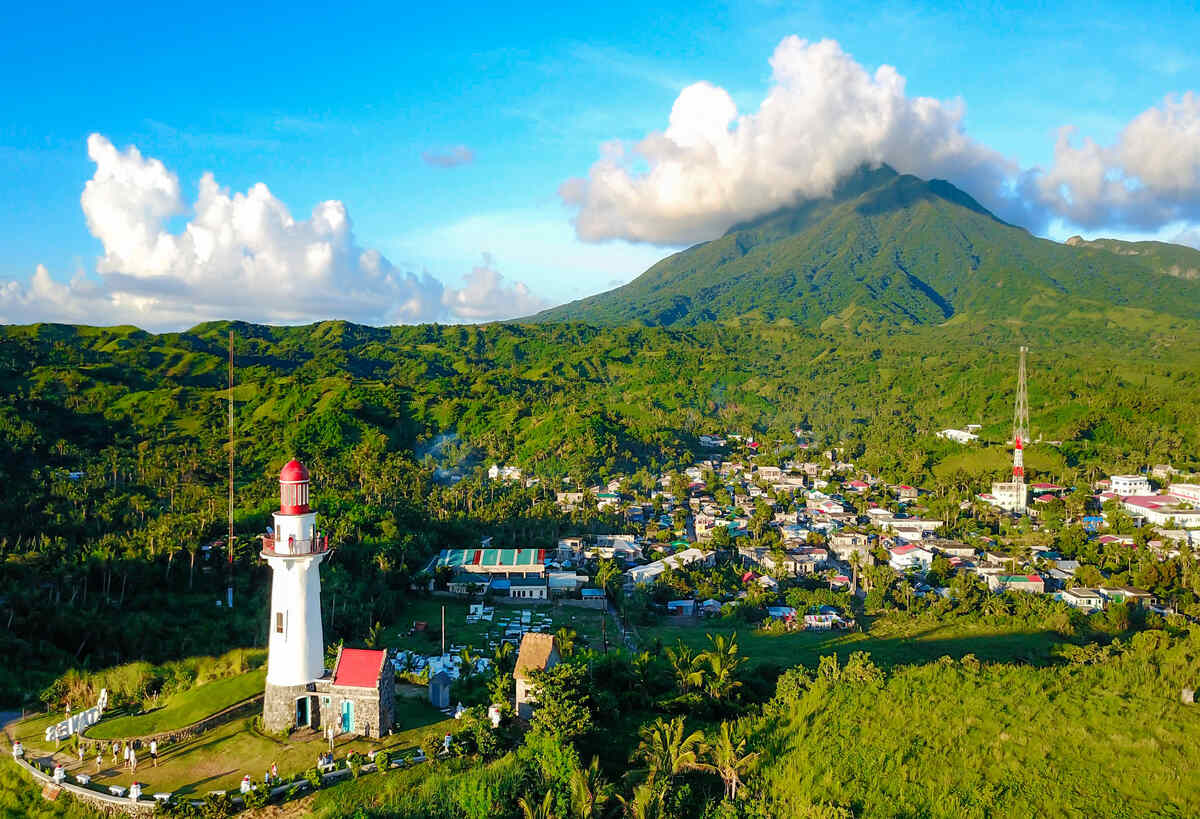
Langkawi, Malaysia
Langkawi in Malaysia is an archipelago of 99 islands offering an incredible mix of relaxation and adventure.
Take a cable car ride up to the Langkawi Sky Bridge for a stunning view of the islands and the Andaman Sea, or go to Pantai Cenang for sun-kissed sands and water sports.
Discover the mysteries of the Kilim Karst Geoforest Park on a mangrove tour. And when the sun sets, enjoy the bustling night markets.
Langkawi is a duty-free haven, perfect for those who love a good bargain, and it’s one of the most beautiful places to in Southeast Asia. Don’t skip the sunset when visiting!
Visit between November and April for the best weather.
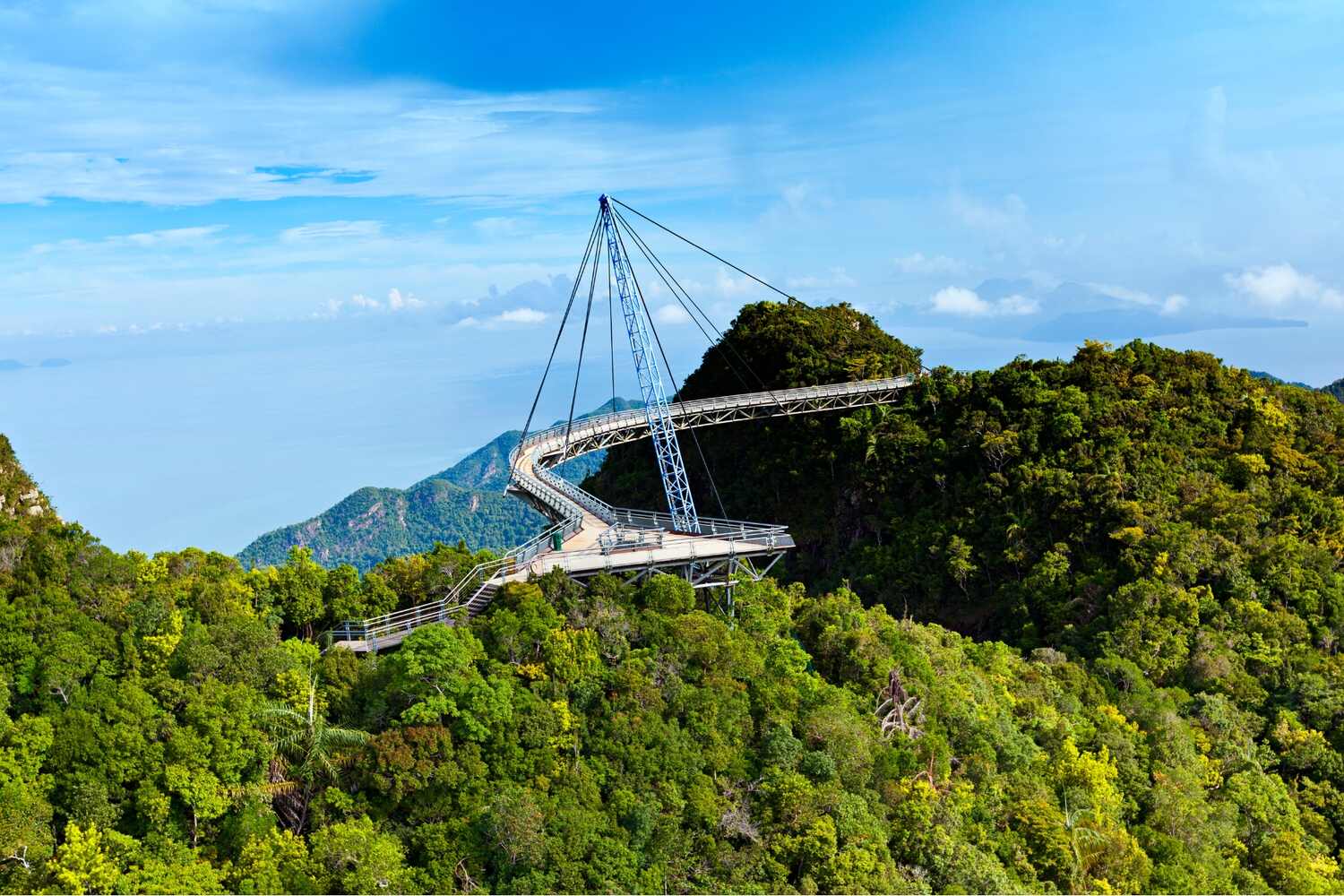
Boracay, Philippines
People travel to Boracay for various reasons. Some come to experience the famous picturesque beaches, others come to take part in the many water activities available, and still others come to enjoy the vibrant nightlife.
No matter what your reason for visiting, Boracay is sure to impress. The island is home to some of the finest beaches in the world, with powdery white sand and crystal-clear waters.
There are also plenty of opportunities for adrenaline-pumping adventures, from windsurfing and kitesurfing to parasailing and jet skiing. And when the sun goes down, the party begins.
Boracay’s bars and clubs pulse with energy, making it easy to dance the night away. So whether you’re looking for a relaxing getaway or a non-stop adventure, Boracay has something for everyone.
Also, I got to say that the Philippines is definitely one of the best countries to visit in Southeast Asia.
Boracay is a small island in the Philippines and is a popular tourist destination, and the best months to visit Boracay are from January to May when the weather is cooler, so keep that in mind when visiting.
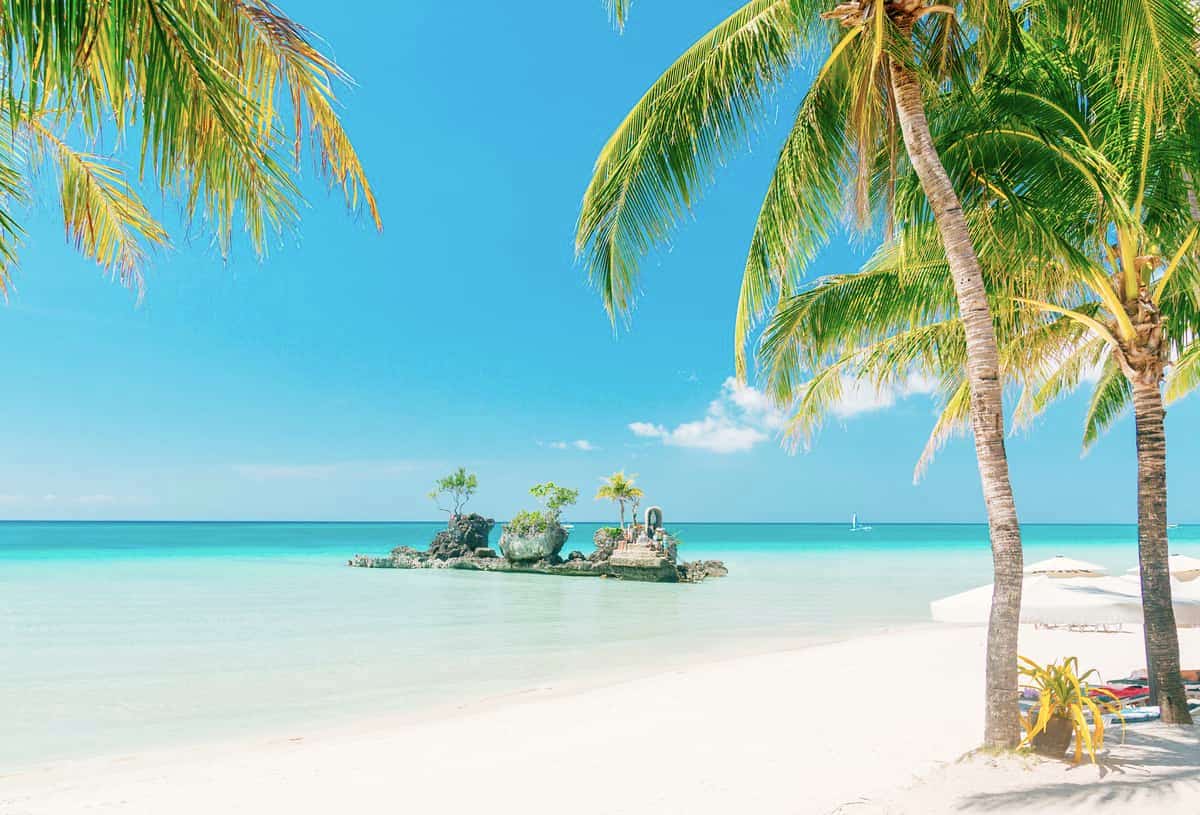
Ho Chi Minh City, Vietnam
Ho Chi Minh City, formerly known as Saigon, is the beating heart of Vietnam, and you’ll easily understand why when visiting. It’s a place where the buzz of motorbikes is the city’s soundtrack.
There are so many activities in Ho Chi Minh City that you won’t know where to start. I recommend starting with the War Remnants Museum and then experience the vibrancy of the Ben Thanh Market.
For a unique day trip, sign up for a day tour to the Mekong Delta and the Cu Chi Tunnels and get a glimpse of underground life during the war.
As the sun sets in Ho Chi Minh City, head to a rooftop bar for stunning city views, and maybe even a cocktail named after a motorbike!
The best time to visit is December to April, when the city is lively and the weather is most comfortable. In Ho Chi Minh City, every corner tells a story.
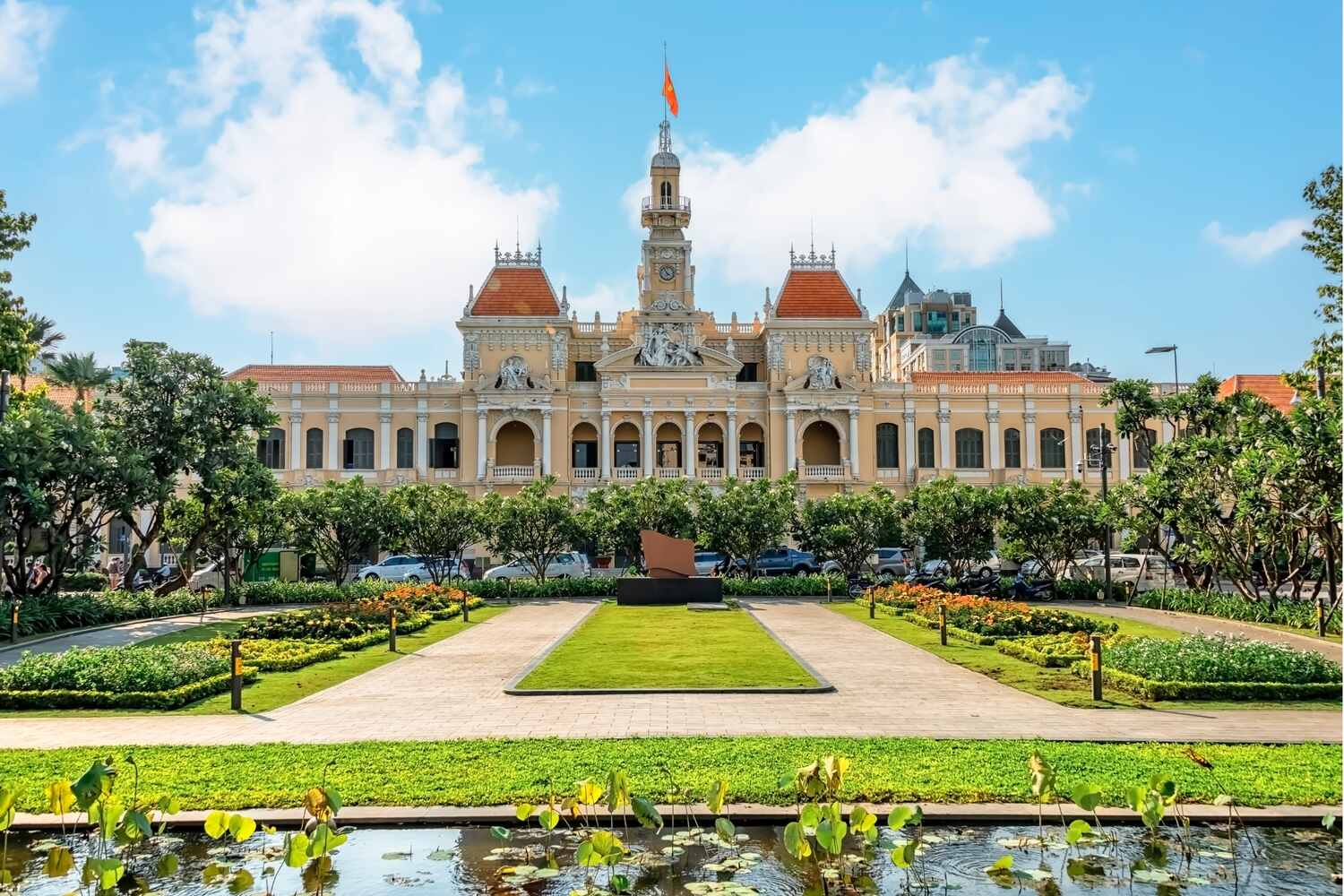
Check out this guide about the best itinerary for Vietnam .

Bohol, Philippines
Bohol in the Philippines is like a box of natural wonders just waiting to be opened – I visited twice and I will certainly come back again at some point.
Here, the famous Chocolate Hills rise like hundreds of giant molehills – a sight that’s both peculiar and mesmerizing, and that only makes Bohol one of the best places to visit in Southeast Asia.
Don’t miss the chance to meet the tiny and incredibly cute tarsiers at a sanctuary; they might just be the world’s most adorable primates.
For beach lovers, Panglao Island offers pristine sands and clear waters, and I recommend staying here as it’s the tourist zone in Bohol with restaurants, cafes, and many tourist spots around.
Make sure to visit from December to April for the best weather, and I’m pretty sure you’ll have a wonderful time in town.
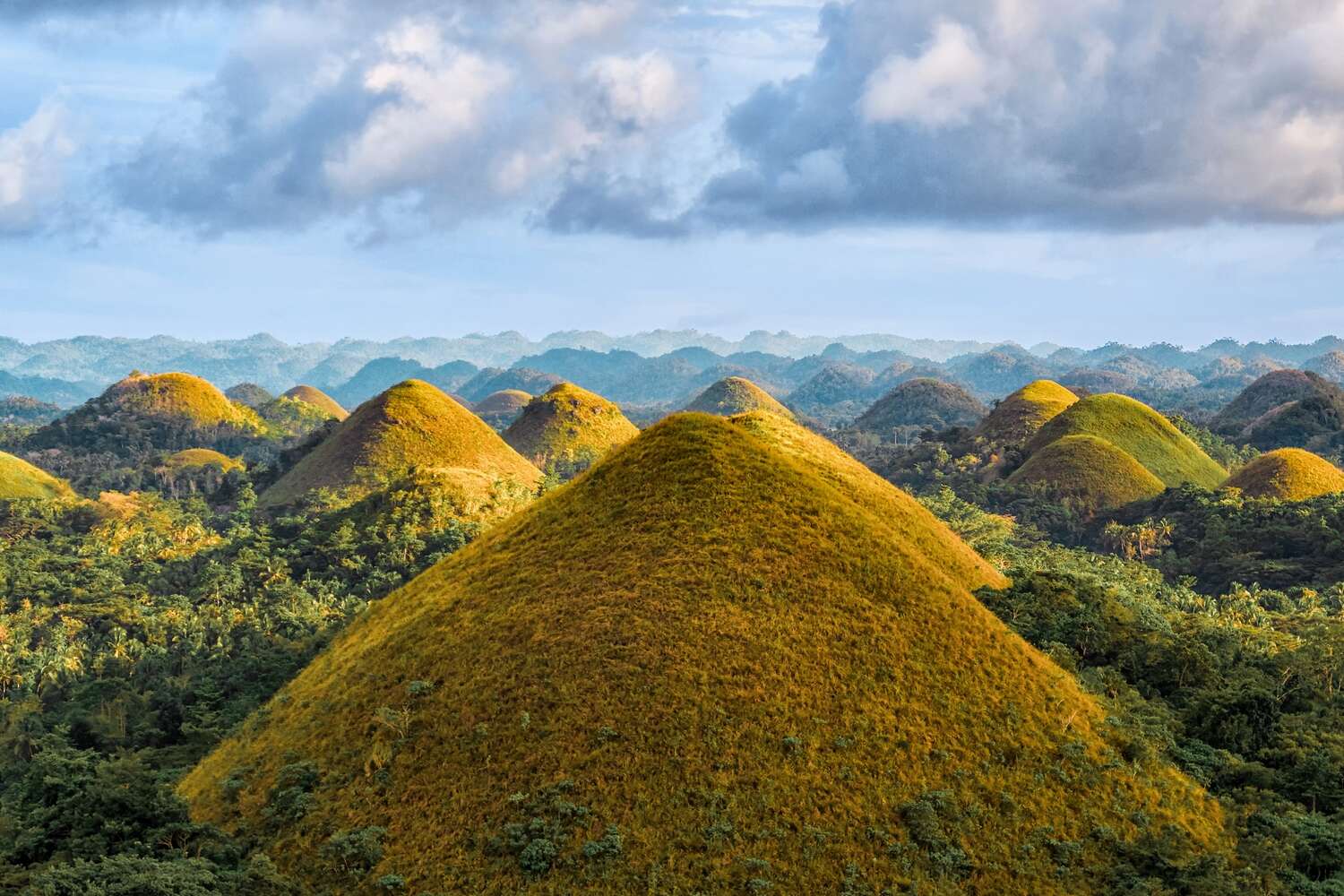
Hue, Vietnam
Hue in Vietnam is a city that wears its history proudly. Once the capital of Vietnam, it’s home to the Imperial City, a vast complex where you can wander through ancient palaces and temples.
And that’s by far the most popular attraction in town, together with pagodas and different Mausoleums.
Here,you can take a cruise down the Perfume River, visit the Thien Mu Pagoda, an iconic seven-story pagoda that’s a symbol of Hue, and take a tour of the most famous mausoleums in town.
Hue is famous for its food, and it’s a paradise for foodies, especially if you like spicy food!
The best time to visit is from February to April, when the weather is mild and the rain is scarce. Essentially, when coming to Hue, you’re in for a history lesson more than a travel plan, and believe me when I say you’ll love it!
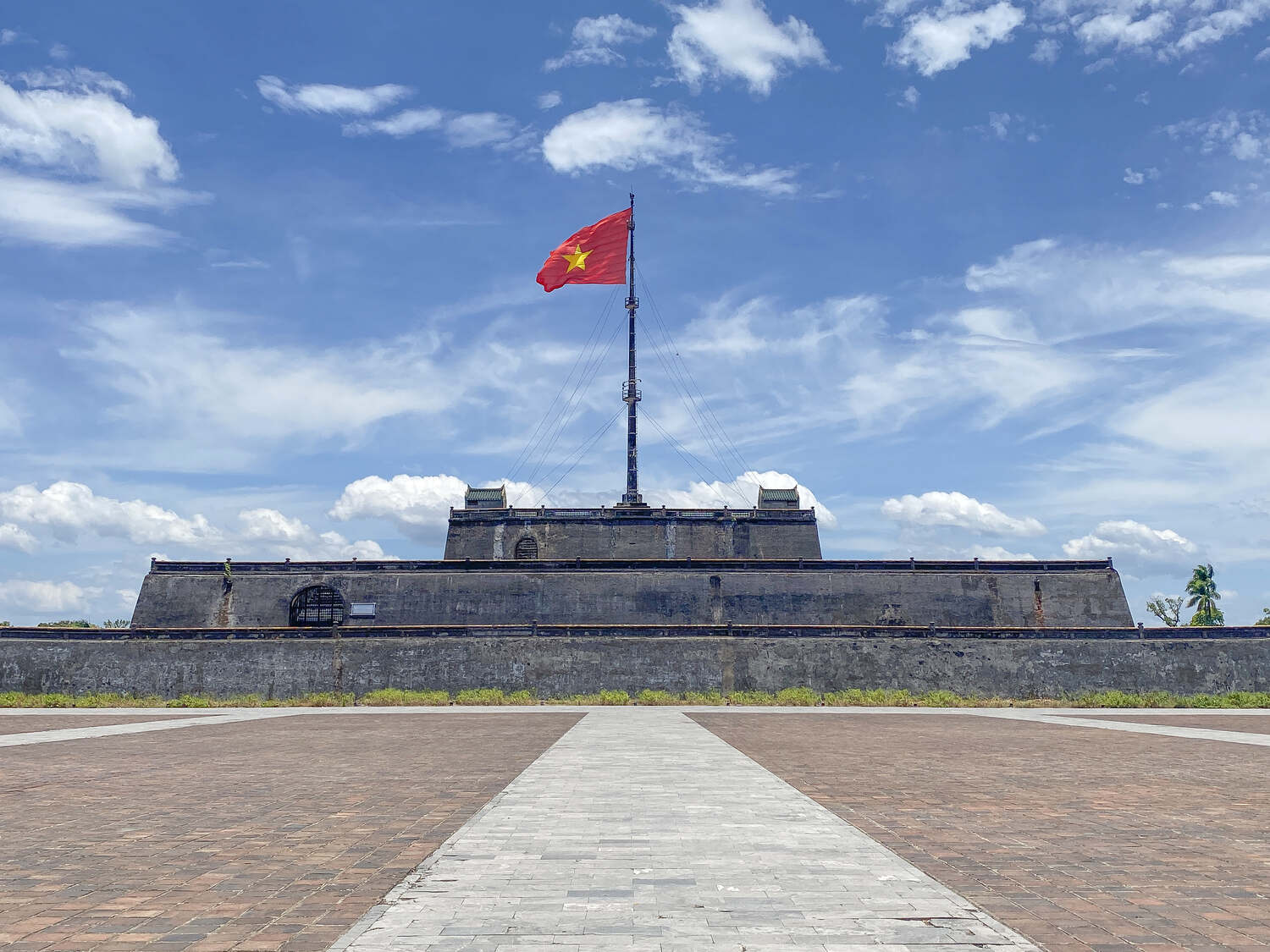
Here’s a guide about taking a day trip to Hue, Vietnam .
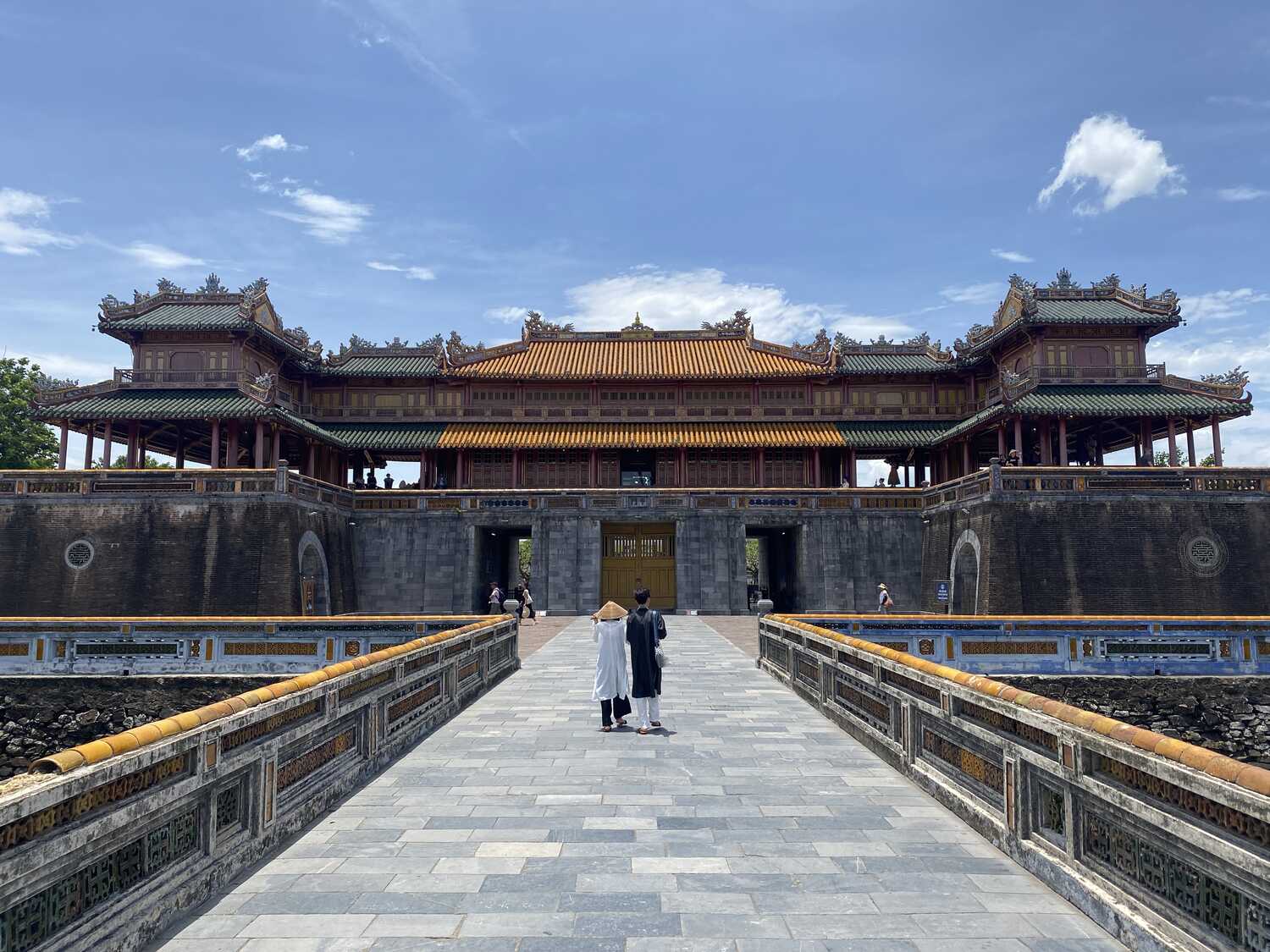
Luang Prabang, Laos
Luang Prabang is a city in Laos that was historically the capital of the kingdom of Laos. The city is located at the confluence of the Mekong and Nam Khan rivers. It is a popular tourist destination for its temples and French colonial architecture.
It was declared a UNESCO World Heritage Site and is also known for its traditional arts and crafts, including silk weaving and wood carving.
There are many places to see in Luang Prabang, such as Wat Xieng Thong, a Buddhist temple; Mount Phousi, a hill overlooking the city; and the Kuang Si Waterfalls, which are located just outside the city.
Luang Prabang is a beautiful and unique city that is well worth a visit.
The best months to visit Luang Prabang, Laos are from November to February when the weather is cooler. March to May is the hot season and June to October is the wet season.
All in all, Luang Prabang is one of the most beautiful places in Laos , and you just can’t miss it when coming to southeast Asia.
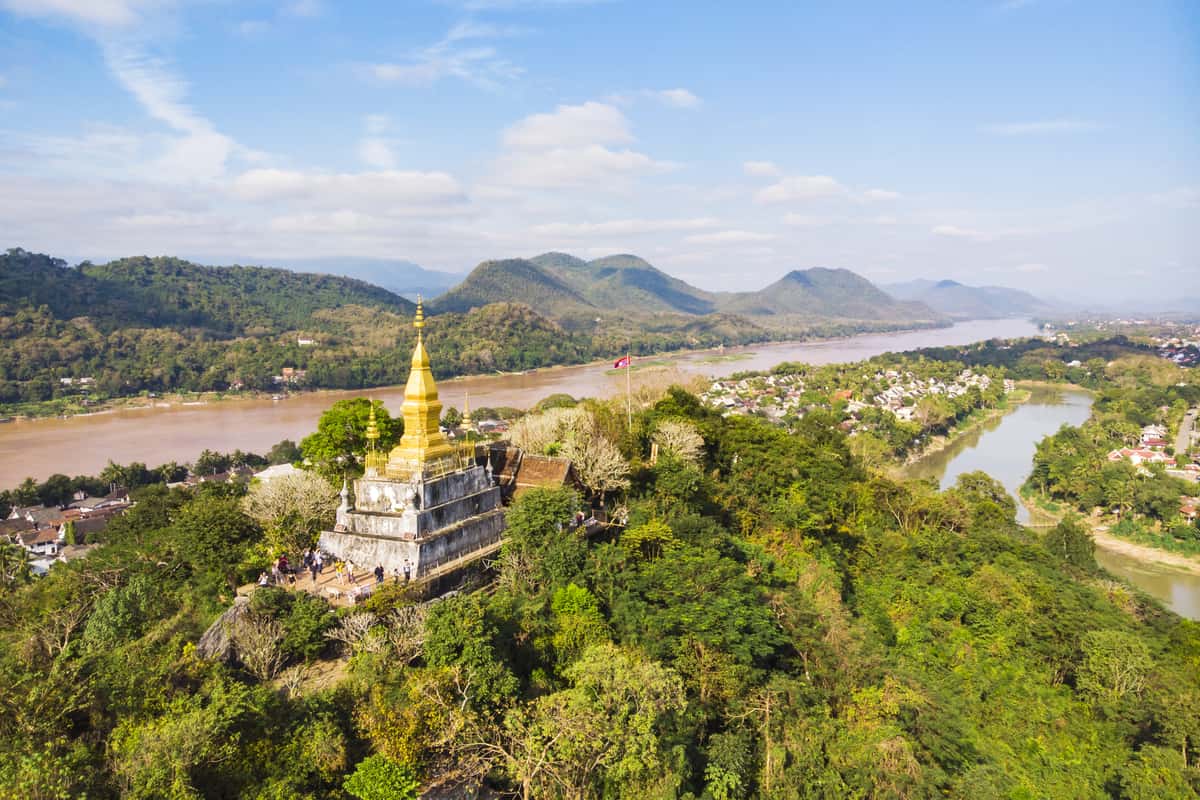
Pattaya & Koh Larn, Thailand
Next on this list of most beautiful places in Southeast Asia is Pattaya and Koh Larn, its neighboring island.
I put them together as they’re only a 30-minute boat ride away from each other and, combined, they offer a perfect blend of lively city vibes and serene beach escapes in Thailand .
In Pattaya, take a stroll along Walking Street for a taste of its vibrant nightlife or relax at Jomtien Beach for a quieter experience. After that, check out the stunning Sanctuary of Truth, a Buddhist temple that much different from others in Thailand.
Then, hop over to Koh Larn for its crystal-clear waters and peaceful beaches like Tawaen and Samae . It’s a pretty small island and you can either come as a day trip or stay here for the night.
The best time to visit is from November to February when the weather is cool and pleasant. Pattaya & Koh Larn together are like two sides of a Thai holiday coin – excitement and tranquility.
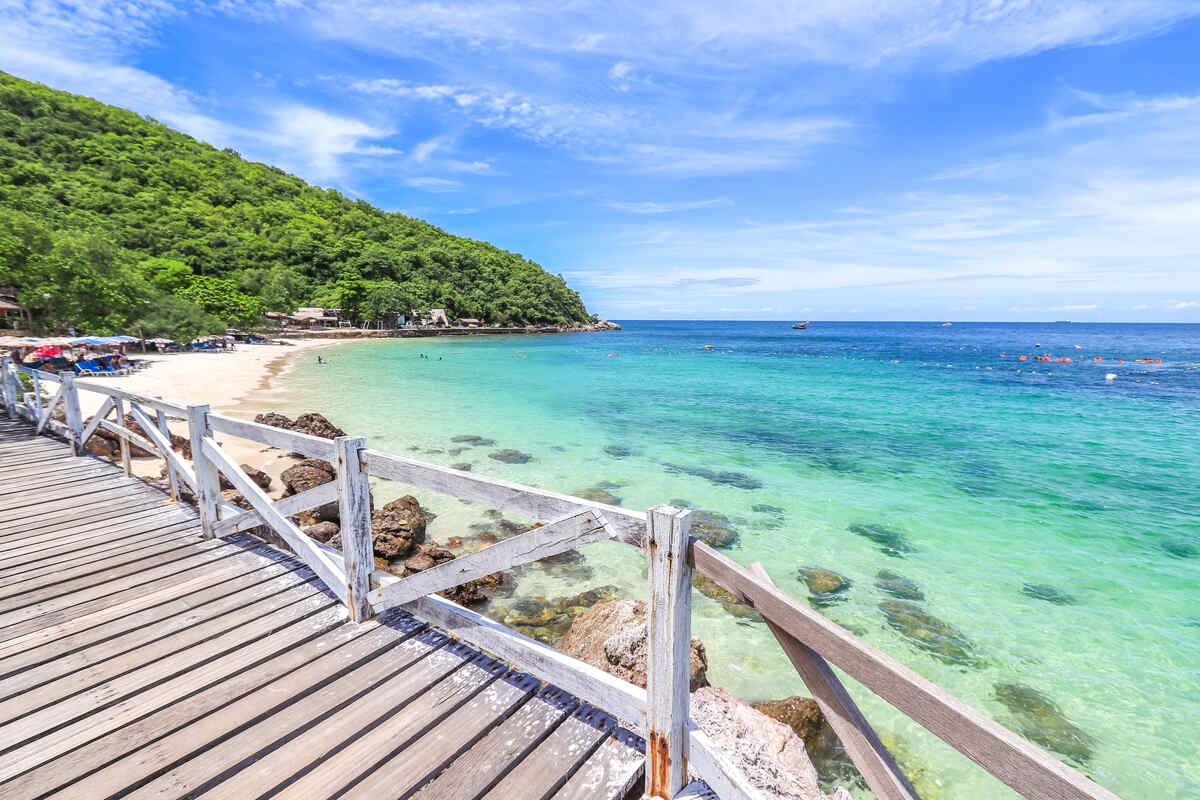
This is your ultimate guide to Koh Larn Island, Thailand .

Palawan Island, Philippines
Palawan Island is one of the most beautiful and remote places on earth. Situated just off the coast of the mainland Philippines, the island is blessed with stunning white sand beaches, crystal clear waters, and lush jungle landscapes.
For nature lovers, Palawan is undoubtedly paradise. The island is home to a huge diversity of marine life, making it a popular destination for scuba diving and snorkeling.
There are also numerous hiking trails winding through the jungle, offering visitors the chance to see rare birds and animals in their natural habitat. In recent years, Palawan has become increasingly popular with international travelers.
Despite some parts being remote and challenging to reach such as El Nido, once you arrive in Palawan, you’ll be rewarded with some of the most incredible scenery imaginable.
The best months to visit Palawan Island, Philippines are December through May. These months offer the best weather conditions for tourists, with minimal rainfall and cool temperatures.
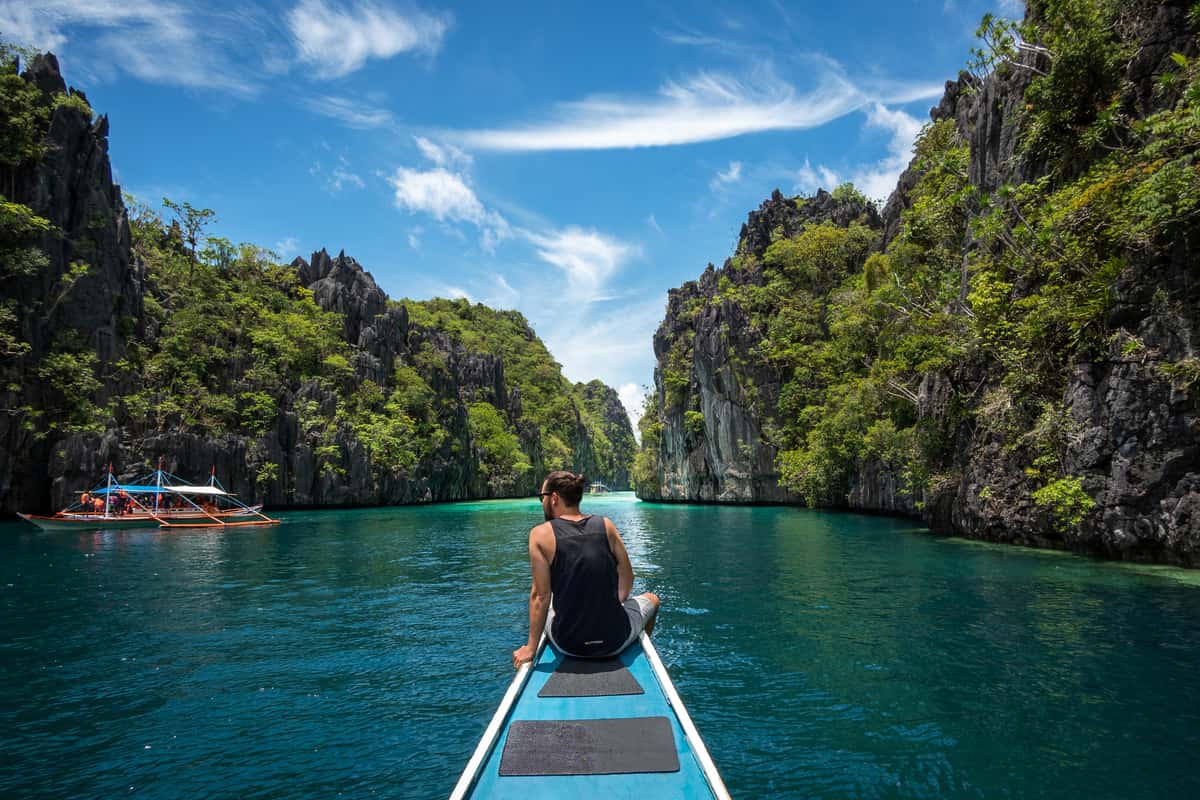
Komodo National Park, Indonesia
Komodo National Park is best known for its namesake dragons, but there is much more to this Indonesian preserve than its massive reptiles. The park spans three large islands and several smaller ones, providing habitat for a wide variety of animal and plant life.
You can explore the islands by hiking, diving, or taking a boat tour. There is also an abundance of bird watching opportunities, as Komodo National Park is home to 28 bird species.
In addition to its natural beauty, the park also has a rich cultural history. It was once an important trading center, and evidence of this can be seen in the many ancient ruins that dot the landscape.
Today, Komodo National Park is a popular tourist destination and a UNESCO World Heritage Site. And with its stunning scenery and unique wildlife, it is easy to see why.
The best months to visit Komodo National Park are May to September when the weather is cooler and drier.
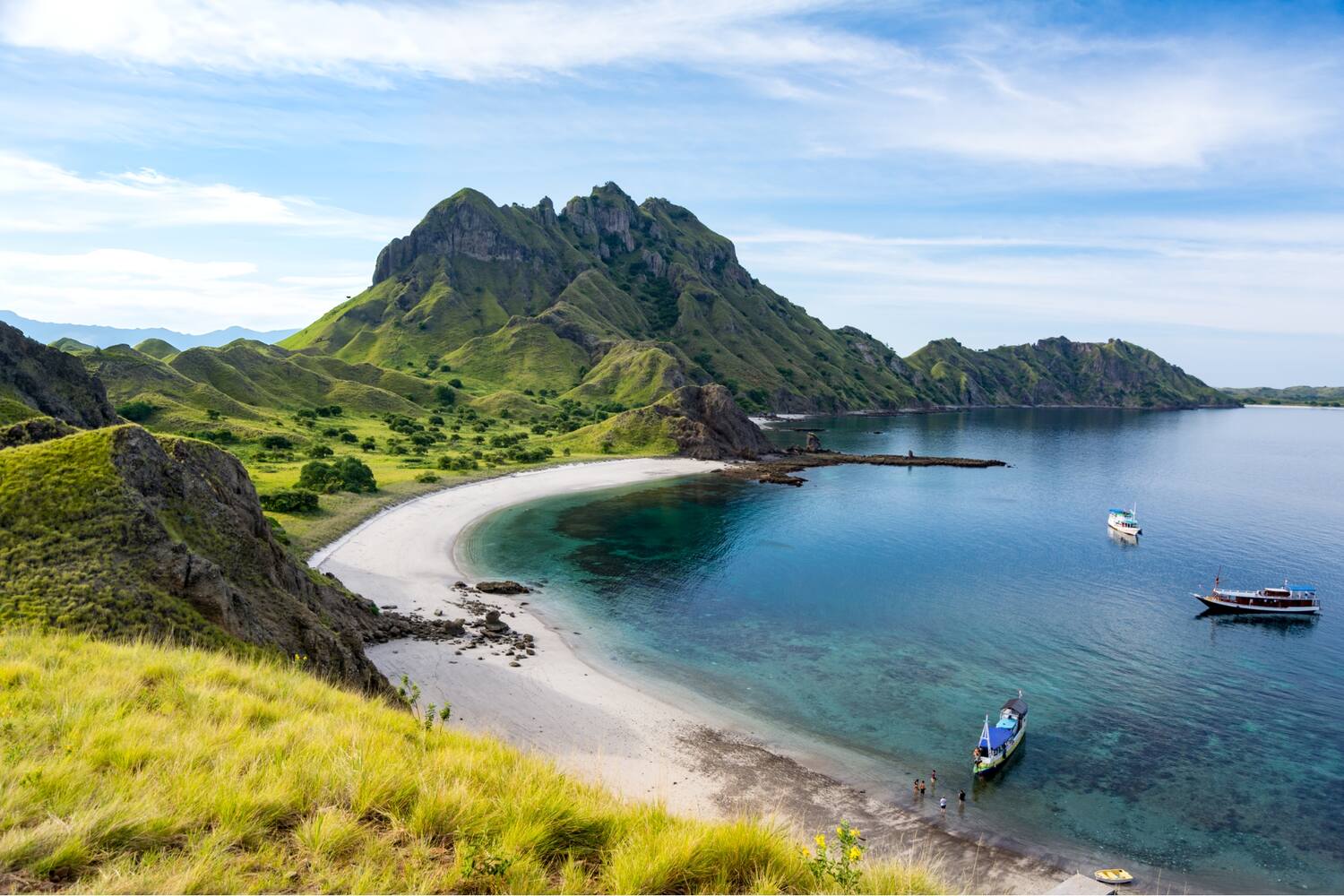
Bagan, Myanmar
The last place where to go in Southeast Asia is a little controversial, as Myanmar is currently not in a good shape for tourists, to say the least, but it’s still worth keeping Bagan in this list for future, better times.
Bagan in Myanmar is an ancient city where time stands still amidst thousands of temples and pagodas. It’s a place that feels untouched by modern times.
You can wonder through the temple plains, especially at sunrise or sunset, when the light paints everything gold. You can also take a hot air balloon ride over Bagan for a unique, magical experience, offering a bird’s eye view of this historical landscape.
Explore the local markets and villages to get a taste of Burmese culture and cuisine.
The best months from November to February are ideal for visiting.
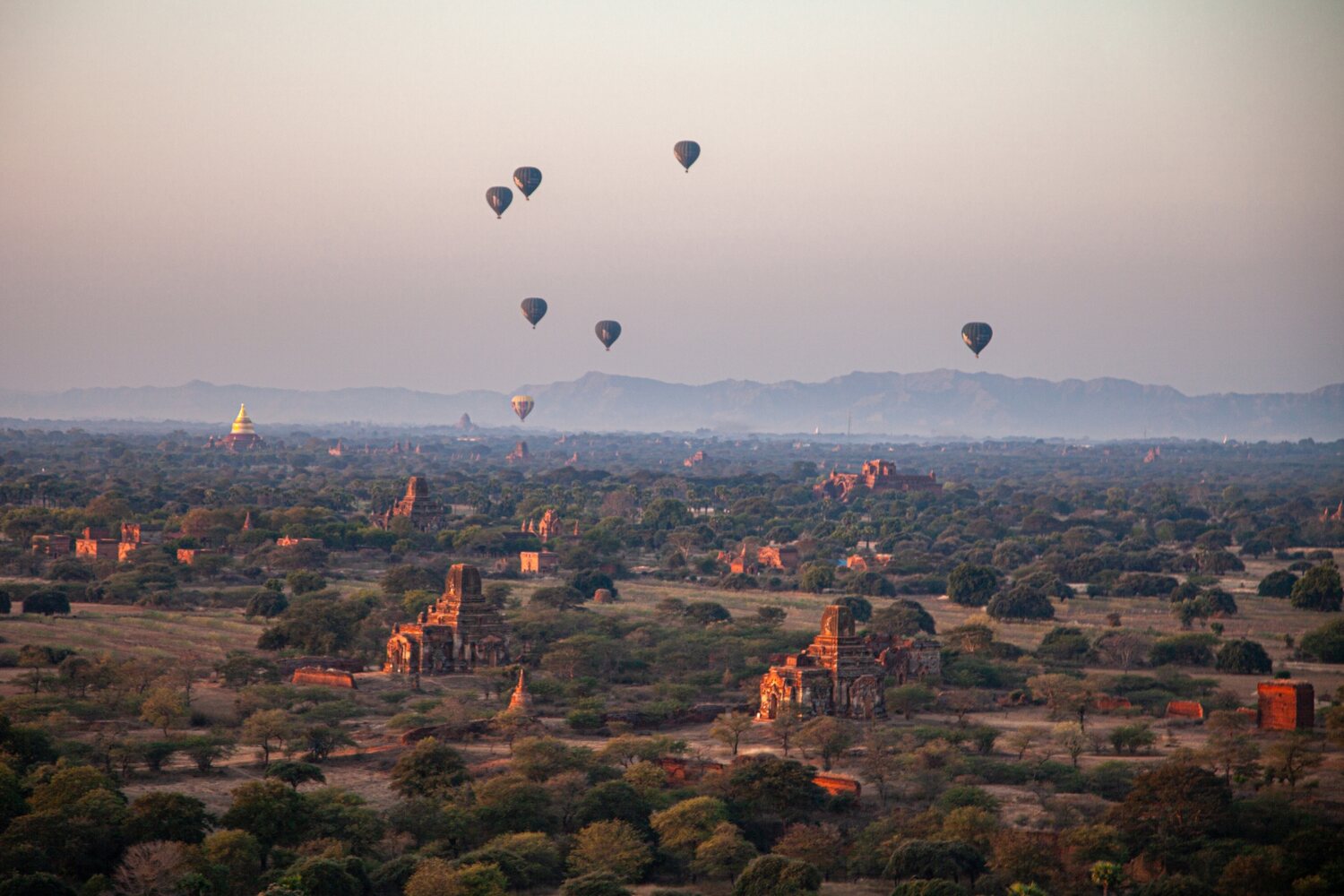
Best Places to Visit in Southeast Asia – FAQ
Now that you know the places to visit in Southeast Asia, let’s answer some questions that first-timers often have, and I’m sure they’ll be helpful to you too.
What is the Best Country to Visit in Southeast Asia?
Choosing the best country to visit in Southeast Asia is like trying to pick your favorite flavor of ice cream – they’re all amazing!
However, Thailand often stands out with its perfect blend of exotic beaches, rich culture, delectable cuisine, and bustling city life.
Whether you’re temple hopping in Bangkok, island hopping in Krabi, or exploring the night markets in Chiang Mai, Thailand offers a bit of everything for every traveler.
One comment I often hear is that Thailand has too many tourists, and while it is true, it’s a massive country and I’m confident you’ll find your happy place.
What is the Most Visited Place in Southeast Asia?
While Bali and Thailand often steal the spotlight in Southeast Asia, Malaysia holds the title of the most visited place. Its capital, Kuala Lumpur, is a cosmopolitan hub known for its towering Petronas Twin Towers and vibrant street food scene.
Beyond the city, Malaysia offers diverse experiences from the charming streets of Penang to the idyllic beaches of Langkawi.
Its unique blend of cultures, history, and natural beauty makes Malaysia a top destination for travelers in the region, though Bali and Thailand remain close contenders.
Where to Start Traveling in Southeast Asia?
Great starting points for traveling in Southeast Asia are Singapore or Bangkok. They’re both modern cities and are a fantastic introduction to the region.
Also, both are safe and are easy to navigate for first-timers. Plus, Bangkok and Singapore airports have flights to pretty much everywhere in Southeast Asia, which is convenient.
Where to Go for 1 Month in Southeast Asia?
For a month-long adventure in Southeast Asia, consider a multi-country itinerary. Start in Thailand, exploring the bustling streets of Bangkok and the serene beaches of the south.
Move to Cambodia for the ancient wonders of Angkor Wat, then to Vietnam to experience its dynamic cities and stunning Ha Long Bay.
End in the Philippines for a serene retreat. This route offers a rich blend of culture, history, nature, and cuisine.
These are all wonderful places to visit in Southeast Asia, from the beaches in the Philippines to Bangkok in Thailand to the mountains of Sapa in Vietnam. They each offer something unique that you won’t find anywhere else in the world.
If you’re looking for beautiful scenery, amazing food, friendly people, and a Culture that is rich with history, then these are the countries for you! So what are you waiting for? Start planning your trip today around these Southeast Asian countries!
Hello, my name is Stefan!
Thanks for passing by. I’m here to show you the world and give you the best possible tricks on the places I’ve been.
Choose the destination, and go for the place you’re planning to go to know more!
Quick Overview
Any questions.
Get in touch here for feedback or collaborations.
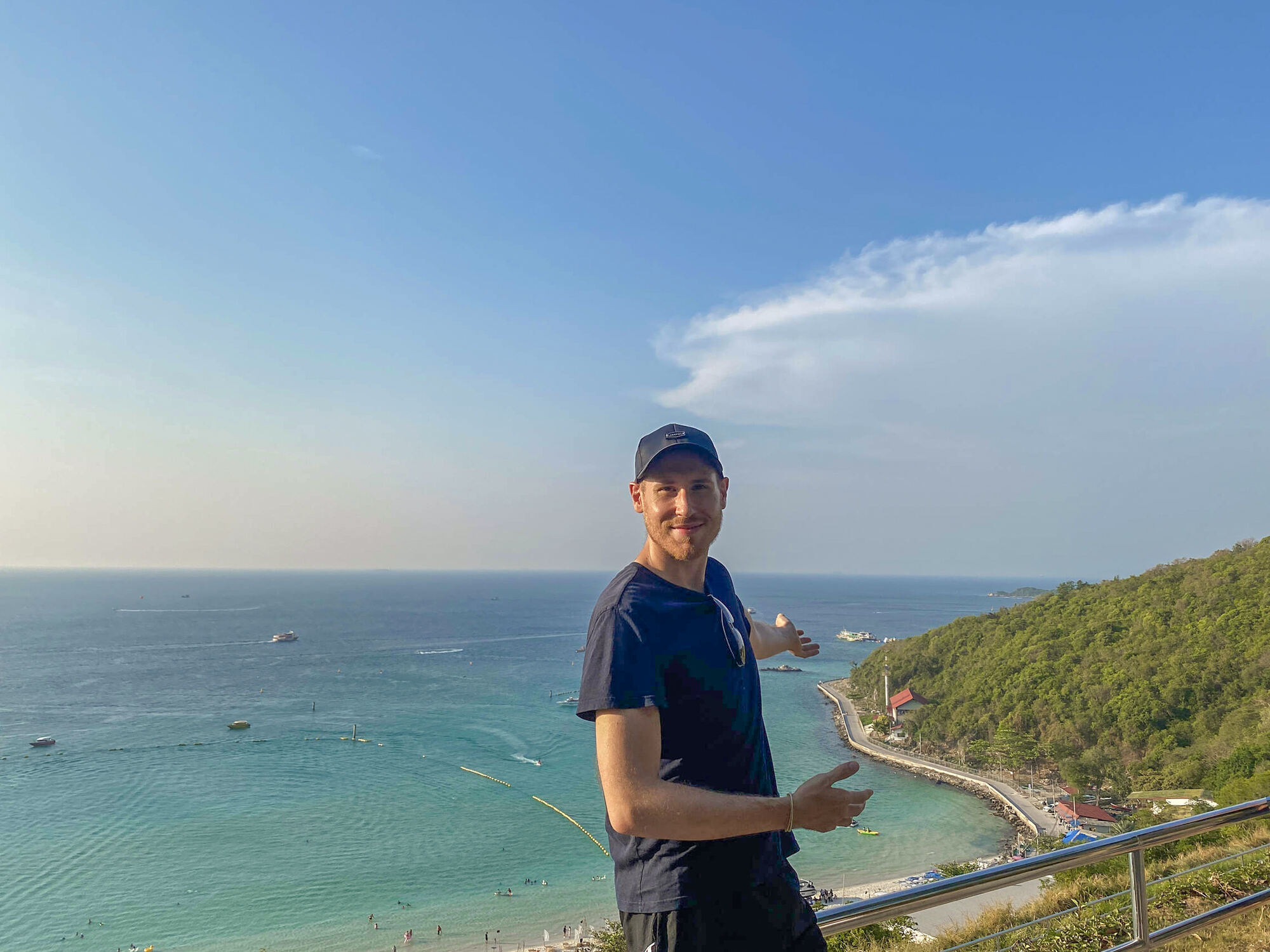
Southeast Asia

- 1 Countries
- 3 Other destinations
- 4.1 History
- 4.2 Culture
- 4.3 Religion
- 4.4 Climate
- 6.1 By plane
- 6.2 By train
- 6.3 By boat
- 7.1 By plane
- 7.2 By train
- 7.4 By boat
- 8.1 Landscapes and nature
- 8.2 Museums
- 8.3 Archaeological sites and precolonial heritage
- 8.4 Colonial heritage
- 8.5 Other sights
- 8.6 Itineraries
- 9.1 Water sports
- 9.2 Massage
- 10.2 Shopping
- 10.3 Bargaining
- 13 Stay safe
- 14 Stay healthy
Southeast Asia is a group of diverse tropical countries between the Indian Ocean and the Pacific Ocean, featuring cultures influenced by both India and China and hosting large communities of Overseas Chinese. The region includes Indonesia, the most populous Muslim country in the world, as well as very prominent Buddhist countries, and quite significant Christian, Hindu and Animist communities. Southeast Asia has long been a favourite corner of the world for globe-tramping backpackers, known for its perfect beaches, tasty cuisine, low prices, and good flight connections.
Countries [ edit ]
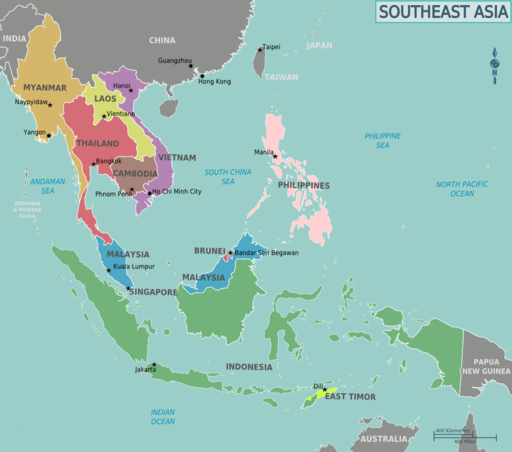
The Australian Indian Ocean Territories of Christmas Island and the Cocos (Keeling) Islands are both geographically and culturally linked to Southeast Asia. However, as they are Australian possessions, they are covered under Australia .
Parts of southern China and Taiwan have similar nature and cultural heritage to Southeast Asia.
North-Eastern India and Bangladesh are influenced by Southeast Asia, but on Wikivoyage they are covered in South Asia .
Disputed territories in the region are:
- Paracel Islands – administered by China but also claimed by Vietnam and Taiwan, not visitable by foreign tourists
- Spratly Islands – a bunch of mostly uninhabited islands and reefs subject to a dizzying mess of territorial disputes, but the only destination of note is the dive resort Layang Layang , which is under Malaysian control.
Aside from East Timor, the other ten nations listed above are members of ASEAN, the Association of Southeast Asian Nations. East Timor is an observer in ASEAN and is in the process of seeking full membership. Papua New Guinea is also an observer, but is rarely considered to be part of Southeast Asia.
Cities [ edit ]
Nine of the most prominent cities in Southeast Asia include:
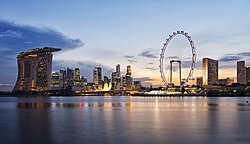
- 13.75 100.516667 1 Bangkok — the world's most popular tourist destination, Thailand's capital is justly famous for temples, food, shopping and nightlife
- 10.775556 106.701944 2 Ho Chi Minh City (formerly Saigon) — Vietnam's largest city is at the epicenter of the country's frenetic economic boom
- -6.175 106.8275 3 Jakarta — sprawling, congested and vibrant, the Indonesian capital is the largest city in southeast Asia
- 3.147778 101.695278 4 Kuala Lumpur — Malaysia's capital has grown from a small sleepy Chinese tin-mining village to a bustling metropolis
- 19.89 102.134722 5 Luang Prabang — a UNESCO World Heritage City in Laos known for its numerous temples, colonial-era architecture and vibrant night market
- 14.595833 120.977222 6 Manila — the enormous Philippine capital spans the gamut from the Spanish colonial era to skyscrapers
- 11.569583 104.921028 7 Phnom Penh — Cambodia's capital took a battering during the Khmer Rouge years, but is striving to reclaim its old title as "The Pearl of Asia"
- 1.3 103.8 8 Singapore — supermodern, dense, affluent city with a medley of Chinese, Indian, Malay and British influences
- 16.795 96.16 9 Yangon (formerly Rangoon) — the commercial capital of Myanmar, known for its pagodas and colonial architecture
Other destinations [ edit ]

Outside of major cities here are some of the most rewarding destinations:
- 13.433333 103.833333 1 Angkor Archaeological Park — magnificent remains of several capitals of the Khmer Empire
- -7.60793 110.20384 3 Borobudur — one of the largest Buddhist temples in the world
- 4.0425 114.8125 4 Gunung Mulu National Park — fantastic limestones caves and karst formations
- 20.9 107.2 5 Ha Long Bay — literally translated as "Bay of Descending Dragons", famous for its scenic rock formations
- -8.651625 119.576569 6 Komodo National Park — the only home of the komodo, the biggest reptile in the world
- 8.057778 98.916944 7 Krabi Province — beach and water sports mecca, includes Ao Nang , Rai Leh , Ko Phi Phi and Ko Lanta
- 10 118.833333 8 Palawan — an ecologically diverse and relatively unclogged island at the western fringe of the Philippines with some of the most rewarding diving and swimming sites in the world
- 14.390556 104.680278 9 Preah Vihear — cliff-top temple pre-dating Angkor Wat
Understand [ edit ]
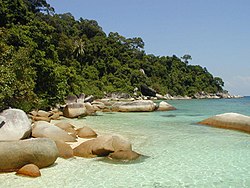
Southeast Asia is one of the world's most popular tourist destinations, and for a reason. Some of the countries here have it all: a tropical climate , warm (or hot!) all year around, rich culture , gorgeous beaches , wonderful food and last but not least, low prices . While its history and modern-day politics are complex, most of it is also quite safe and easy to travel around in.
The region is also a very popular destination for retiring abroad , and several governments in the region offer special long-term visas specifically for retirees.
History [ edit ]

Southeast Asia is a very diverse region, with numerous ethnic groups of different origins.
Pre-historic Southeast Asia was lightly populated. The first group of people known to populate Southeast Asia were the Austroasiatic peoples, who were believed to have originated in what is today southern China, and are believed to be the ancestors of today's Vietnamese, Khmer and Mon peoples. Later groups to follow including the Tai people, who are believed to be the ancestors of today's Thai, Lao and Shan peoples, Sino-Tibetan peoples who are believed to be the ancestors of today's Bamar and Rakhine peoples, and the Hmong. The Malay Archipelago and Malay Peninsula were mainly populated by Austronesian peoples, who are believed to trace their origins to the indigenous peoples of Taiwan .
Indian influences would begin to grow among the various Southeast Asian peoples starting from the first century AD, in a process known as Indianization . The exact way through which this happened is disputed, though the most popular theory is that Brahmins travelling in the ships or caravans of traders from India brought Hinduism and later, Buddhism with them and spread it to the elite classes, from whom it trickled down to the rest of the population. The Indic scripts still used to write modern Thai, Lao, Burmese and Khmer have their roots from this process, and those languages, along with others such as Javanese, Balinese, Malay and Cham would adopt many loan words from Sanskrit. Many of these peoples would eventually build powerful Indianized kingdoms, including the Khmer Empire , Champa, Funan, Bagan Empire, Sukhothai Kingdom, Srivijaya and Majapahit. Today, Hinduism is primarily concentrated on the Indonesian island of Bali , though many traditions and stories of Hindu origin continue to survive throughout the region, even among peoples who are Buddhist, Muslim or Christian. Theravada Buddhism, on the other hand, is the dominant religion in Thailand, Myanmar, Cambodia and Laos, albeit still syncretised with Hinduism and local folk religions to varying extents.
Vietnam, on the other hand, would come to be heavily influenced by China, having been occupied by the Chinese Han, Tang and Ming dynasties. While the Vietnamese eventually succeeded in driving the Chinese out each time, the Chinese would leave a deep impact on Vietnamese society, with Confucianism and Taoism being hugely influential in shaping Vietnamese social etiquette, and the Chinese system of bureaucracy being adopted by many Vietnamese dynasties. Mahayana Buddhism also made its way into Vietnam via China, and although the official census today says that most Vietnamese are non-religious, most Vietnamese still practise a syncretic mix of Taoism, Confucianism, Mahayana Buddhism and Vietnamese folk religion to one degree or another. Vietnam also adopted Chinese characters to write the Vietnamese language, though this was replaced by the Latin alphabet during the French colonial period, and today, the old Chinese-based writing system only survives among the small ethnic Vietnamese minority in China.
Islam would arrive with Arab traders in the 7th century, and start spreading throughout much of the Malay Archipelago in the 12th century. The Malacca sultanate was initially founded as a Hindu kingdom, but converted to Islam in the 15th century, thus becoming the first powerful Muslim kingdom in the region, and leading to Islam becoming the dominant religion in the Malay Archipelago. The Arabic script would also be adopted to write the Malay language, though it was largely replaced by the Latin alphabet under British colonial rule. The Arabic script continues to be official in Brunei, and is used by some in more conservative Malaysian states such as Terengganu and Kelantan, though it is far less common than the Latin alphabet in both countries outside of religious publications.
Southeast Asian history is very diverse and often tumultuous, and has to an important extent been shaped by European colonialism . The very term Southeast Asia was invented by American Naval strategists around 1940. Prior to WWII, Southeast Asia was referenced in terms of their colonial powers; farther India for Burma and Thailand , with reference to the main British colony of India, although Thailand itself was never colonised; Indochina referred to the French colonies of Cambodia , Vietnam and Laos , while Indonesia and parts of maritime Southeast Asia were called the Dutch East Indies . Peninsular Malaysia and Singapore were known as British Malaya , while Sabah was known as British North Borneo . Sarawak , on the other hand, was the Kingdom of Sarawak , ruled by a British family known as the White Rajahs . Brunei was also made into a British protectorate, with the British taking charge of its defence and foreign affairs. The Philippines was named the Spanish East Indies during the initial period of Spanish colonial rule, and later came to be known by its current name in honour of King Philip II of Spain, a name which stuck even after the islands were transferred from Spanish to American colonial rule. East Timor was colonized by Portugal for 273 years, then occupied by Indonesia for 27 years before becoming the first nation to gain independence in the 21st century. This massive colonisation effort was fueled by the lucrative spice trade , which in turn encouraged heavy immigration of workers to support the harvest and sale of plantation crops like nutmeg, rubber and tea.
World War II was disastrous to Southeast Asia (see Pacific War for a detailed guide), and also saw the beginning of the end of Western colonialism, as the Western powers surrendered to Japan one by one in disgrace. By the end of 1942, the Japanese had conquered virtually the whole of Southeast Asia, with only Thailand remaining unconquered, as the Thais signed a treaty of friendship with the Japanese that allowed the Japanese to establish military bases in Thailand, and allowed Japanese troops free passage through Thailand. The Japanese occupation was a time of great hardship for many of the natives, as the Japanese took all the resources for themselves, and exploited and in many cases outright enslaved the locals for their own gain. They were also for the most part more brutal than the Western colonial powers to the people under occupation, especially towards the ethnic Chinese. However, the Japanese occupation convinced many locals that the Western powers were not invincible after all, and thereby had the effect of helping the independence movements to gain pace after the end of the war.
After the war, the decolonisation process started in Southeast Asia, with the Americans granting independence to the Philippines in 1946, while the British granted independence to Burma in 1948, followed by Malaya in 1957 and eventually Singapore, Sarawak and North Borneo in 1963, which federated with Malaya to form Malaysia. After some ideological conflicts, Singapore was expelled from Malaysia in 1965 and became a sovereign state. In contrast to the relatively peaceful withdrawals by the British and Americans, the Dutch and the French fought bloody wars in an effort to hold on to their colonies, and earned humiliating defeats. Indonesia gained independence from the Dutch in 1949, and Indochina forced the French military to withdraw and separated into the countries of Laos, Cambodia, and Vietnam in 1954; see Indochina Wars . However, Vietnam would be split into two, with Ho Chi Minh establishing a communist regime with the support of the Soviet Union in the north, and Ngo Dinh Diem establishing a capitalist regime with the support of the United States in the south. This ideological conflict would spark off the Vietnam War in 1955, and it only ended in 1975 when a North Vietnamese tank drove into the Presidential Palace of South Vietnam in Saigon, and unified the country under communist rule.
European colonialism came to an end in Southeast Asia in 1984, when Brunei was granted full independence by the British. Indonesia occupied East Timor in 1975 after it declared independence from the Portuguese following a coup in Portugal, and only left in 1999 following a United Nations referendum. East Timor was then occupied by a United Nations peacekeeping force, before finally becoming independent in 2002. The 2004 Indian Ocean tsunami was devastating to parts of the Indonesian island of Sumatra (especially Aceh , which lost well over 100,000 people to the roiling waters), Thailand, Myanmar and Malaysia.
Since the 1990s, Southeast Asia has had a relatively high rate of economic growth, with Malaysia , Indonesia , the Philippines , Thailand and Vietnam often being called the "Tiger Cub Economies" (in reference to the original East Asian Tigers of Singapore , Hong Kong , Taiwan and South Korea ). Nevertheless, despite being one of the most fertile and resource rich regions in the world, widespread corruption means that poverty is still an issue in many countries, with much of the wealth concentrated in the hands of an elite few. In the 21st century, China is increasingly becoming a major player in the region; China is now the largest source of international tourists to most Southeast Asian countries, and has also invested substantially in infrastructure under the auspices of the Belt and Road Initiative.
Culture [ edit ]

Southeast Asia's culture is dominantly influenced by the Indians and Chinese as well as its colonizers, and also natives of the Malay archipelago. For at least 2000 years (and to this day), Southeast Asia has acted as a conduit for trade between India and China. Large-scale immigration, however, only began with the advent of the colonial era. In Singapore, the Chinese form a majority of the population, but there are substantial Chinese, Indian and other minorities, assimilated to varying degrees, across all countries in the region.
Many large businesses in Southeast Asia are owned by ethnic Chinese, who tend to have a disproportionately large economic clout relative to their population. They have long been resented by other segments of the population, and are often the target of discriminatory laws and in extreme cases, even ethnic violence. However, progress is being made, with some countries such as Indonesia, Thailand and Vietnam having since repealed many of the said discriminatory laws.
Thai, Burmese, Cambodian and Lao cultures are heavily Indian-influenced in areas such as faith, folklore, language and writing, but have also absorbed heavy Chinese influences in their cuisines. Malaysia, Indonesia and Brunei are also influenced by the Indians, Malays and Chinese with a touch of Arab culture due to the large Muslim populations. Vietnam is the most Chinese-influenced. East Timor's culture is influenced notably by the Portuguese and the Malays. Singaporean and Filipino cultures are the most diverse: Singapore's is a mix of Malay, Indian, Peranakan, British, American and Chinese cultures while the Philippines is heavily influenced by American, Spanish, Malay, Chinese, Japanese and Portuguese influences with less coming from India, Mexico and non-Iberian parts of Europe, making it perhaps the most Westernized nation in the region.
Although Hinduism used to be dominant in the region, these days most Southeast Asians adhere to either Islam, Christianity or Buddhism. However, vestiges of Hinduism continue to survive in the folk tales and cultural practices of many Southeast Asians regardless of religion, and some nominally Muslim Javanese people practise a syncretic religion known as Kejawen that fuses Muslim, Hindu and animist beliefs.
Religion [ edit ]

Southeast Asia is religiously diverse. Malaysia , Indonesia and Brunei are predominantly Sunni Muslim , while East Timor and the Philippines are predominantly Roman Catholic . Buddhism is the dominant religion in Thailand , Myanmar , Laos , Cambodia and Vietnam , with Mahayana Buddhism being the dominant form in Vietnam, and Theravada Buddhism being the dominant form in the other countries. Singapore is by some measures the most religiously diverse country in the world and does not have a majority religion, though Mahayana Buddhism forms a plurality.
However, religious minorities exist in every country. The ethnic Chinese minorities in the various countries practice a mix of different religions, including Taoism and Mahayana Buddhism. Hinduism is still observed in parts of Indonesia, most notably Bali , as well as by the Cham community in Vietnam, and a sizeable proportion of the ethnic Indian communities in Malaysia, Singapore, Thailand and Myanmar. The southern parts of Thailand and the Sulu Archipelago of the southern Philippines are home to ethnic Malays who mostly practice Islam, and the Philippine island of Mindanao is also home to a sizable Muslim community. Christian minorities also exist in every country, most notably in Papua , East Nusa Tenggara and North Sulawesi in Indonesia, as well as in East Malaysia , and in the border area of Thailand and Myanmar. Animistic tribal religions are also practised, especially by some of the people living in remote jungle or mountainous areas.
Climate [ edit ]
Southeast Asia is tropical : the weather hovers around the 30°C mark throughout the year, humidity is high and it rains often.

The equatorial parts of Southeast Asia, including Malaysia, Brunei, Indonesia, Singapore, the Philippines and southern Thailand, have two or three seasons — wet , dry , and a nameless rest of the year when it sometimes rains and sometimes does not — with the dry season somewhat hotter (up to 35°C) and the wet season somewhat cooler (down to 25°C). The wet season usually occurs in winter, and the hot season in summer, although there are significant local variations.
In Indochina (north/central Thailand, Laos, Cambodia, southern Vietnam, Myanmar), the seasons can be broken down into hot , wet and dry , with the relatively cool dry season from November to February or so being the most popular with tourists. The scorching hot season that follows can see temperatures climb above 40°C in April, cooling down as the rains start around June. However, even in the "wet" season, the typical pattern is sunny mornings with a short (but torrential) shower in the afternoon, not all-day drizzle, so this alone should not discourage you from travel.
Northern Vietnam has four distinct seasons, with a climate similar to that of Hong Kong and Taiwan .
Southeast Asia is also home to many mountains, and conditions are generally cooler in the highlands. In equatorial Southeast Asia, highland temperatures generally range from about 15-25°C. Some of the highest mountains in Indonesia, Vietnam, and Myanmar are so high that snow falls every year, and Indonesia and Myanmar are even home to permanent glaciers.
In Malaysia , Brunei , Singapore , and parts of Indonesia (notably Sumatra and Borneo ) and the Philippines (notably Palawan ), haze from forest fires (usually set intentionally to clear land for agriculture) is a frequent phenomenon in the dry season from May to October. Haze can come and go rapidly with the wind.
Talk [ edit ]
English is a traveller's most useful language overall, although for longer stays in almost any Southeast Asian country except Singapore, picking up at least some of the local language is useful, and may be essential outside the cities.
The main language groups are:
- Austroasiatic - Vietnamese and Khmer are spoken in Vietnam and Cambodia respectively. Also includes the Mon language, spoken by the Mon ethnic minority in Myanmar
- Austronesian - Malay , Indonesian , Javanese , Tagalog , Cebuano , Ilocano , Tetum and related languages are spoken throughout the island nations of Malaysia , Indonesia , the Philippines , East Timor and Brunei , and by a significant minority in Singapore . Malay and Indonesian are very similar to each other, and speakers of either language can generally understand the other. Also includes the Cham language spoken by the Cham ethnic minority in Vietnam and Cambodia.
- Kra–Dai (Tai–Kadai) - Thai and Lao are spoken in Thailand and Laos respectively. Both languages are mutually intelligible to a certain extent. Also includes the Shan language, spoken by the Shan ethnic minority in Myanmar .
- Sino-Tibetan - Burmese is closely related to Tibetan, and more distantly related to the Chinese family of languages. Mandarin is an official language of Singapore, and widely spoken by the ethnic Chinese minorities in Malaysia, Brunei and Myanmar. Various Chinese dialects are spoken by the sizeable Chinese communities throughout the region. The Rakhine language of Myanmar's Rakhine ethnic minority is similar to Burmese, and often considered to be a dialect of it.
The Chinese languages have a large influence, with Mandarin being an official language in Singapore and southern variants such as Cantonese , Hokkien , Teochew , Hakka , Fuzhou dialect and Hainanese being spoken in ethnic Chinese communities across the whole region. Many of the local languages contain loan words from various Chinese dialects, particularly when it comes to culinary terms. In addition, due to centuries of Chinese cultural dominance, much of Vietnamese vocabulary consists of loan words from Chinese. Southeast Asia is a prime destination for China's rising tourism industry, and Mandarin is becoming more prevalent in order to cater for it.
Various Indian languages are also spoken by much of the Indian diaspora in the former British colonies of Malaysia, Singapore and Myanmar, the most widely spoken of them being Tamil , which is one of the official languages in Singapore. Other Indian languages that you might hear include Malayalam and Punjabi . Due to a long history of Indian influences in the region, many Southeast Asian languages, including Malay, Indonesian, Thai, Lao, Burmese and Khmer contain many loan words from Sanskrit . Moreover, the Thai, Khmer, Lao and Burmese languages continue to use Indic scripts related to those used by most Indian languages as their writing systems.
Portuguese remains an official language of East Timor , and a Portuguese-based creole is still being spoken in some Malaysian communities.
English the main language of business and administration in Singapore, and a common second language in the Philippines, Malaysia and Brunei. In areas popular among tourists in the region such as Bali , Phuket and Luang Prabang , English is widely spoken by people working in the tourism industry, although with varying degrees of proficiency. Business people who deal with international clients generally speak a decent level of English.
French is still spoken and taught in Vietnam, Laos and Cambodia, although its situation varies by country. In Vietnam, it is known by many educated Vietnamese, especially those schooled before 1975, though today English is the more preferred second language among youths. In Laos, French is widely used among the educated populace and features on most public signage. In Cambodia, French is limited chiefly to urban and elderly elites and a handful of university educated students.
The other languages of the former colonial countries are generally not spoken so widely anymore or at all. You may notice English words in Malay , Dutch words in Indonesian and Spanish words in Tagalog (Philippines).
Get in [ edit ]
Malaysia , Brunei , the Philippines , Singapore and Thailand do not require visas for most Western visitors. Indonesia , Cambodia , Laos , and East Timor offer visas on arrival for citizens of most Western countries at most points of entry. Vietnam and Myanmar require advance paperwork for most visitors, but most Western visitors are eligible for eVisas, thus saving you the hassle to needing to make your way to an embassy or consulate.
Travellers to ASEAN nations (all nations covered in this article except East Timor) may need to be aware of the effects on visas . ASEAN citizens are entitled to visa-free tourist travel to most other ASEAN countries, and agreements are in place with nearby nations such as China which affect visas in either direction. Visa-free travel may be for a shorter period than travel with a visa, limited to as little as 14 days. A common ASEAN travel area, similar to the Schengen Agreement for Europe, is proposed but has not yet been implemented. Visitors from outside the ASEAN area still need to consult the specific visa requirements for the countries they are visiting. Business travellers may wish to take advantage of tariff reductions and other economic measures between the nations. For visitors, however, normal duty free limits on cigarettes, alcohol, perfume and the like, apply when travelling between them.
By plane [ edit ]

The main international gateways to Southeast Asia are Bangkok ( BKK IATA ), Singapore ( SIN IATA ), Kuala Lumpur ( KUL IATA ), and Jakarta ( CGK IATA ). Other airports with good connections outside the region include Manila ( MNL IATA ), Denpasar ( DPS IATA ), Phuket ( HKT IATA ), Ho Chi Minh City ( SGN IATA ) and Hanoi ( HAN IATA ). Hong Kong also makes a good springboard into the region, with many low-cost carriers flying into Southeast Asian destinations.
Travellers from the U.S. and Canada can often find competitive prices on Taiwan's EVA Air, Hong Kong's Cathay Pacific, Japan's ANA and Japan Airlines, and South Korea's Korean Air connecting through their respective hubs, while travellers from Latin America, Africa and Europe can often find competitive prices on the Gulf trio of Emirates, Qatar Airways and Etihad Airways.
Singapore Airlines , Malaysia Airlines and Thai Airways are all known for their great service and safety records. Philippine Airlines is the oldest airline in this part of the world still flying under the original name, while Vietnam Airlines and Garuda Indonesia are slowly but surely growing their intercontinental networks. Rapidly expanding AirAsia flies out of its Kuala Lumpur hub to many major East Asian and South Asian cities, as well as long-haul routes to Sydney , Melbourne , Perth and Auckland , with connections available to other Southeast Asian cities through its Kuala Lumpur hub. AirAsia also operates several secondary hubs in Jakarta, Bangkok and Manila, as well as a dense network into Singapore. In addition to AirAsia, long-haul budget flights can be booked into the Jetstar and Scoot hub in Singapore or the Cebu Pacific hub in Manila.
Travellers to ASEAN nations are starting to benefit from the ASEAN Single Aviation Market policy, a gradual process of opening up the markets which is moving slowly but surely.
By train [ edit ]
There is a railway line to Hanoi , Vietnam from Nanning , China . There are no connections between Vietnam and other Southeast Asian countries yet, although there are plans for links through both Cambodia and Myanmar onward to the existing Thailand - Malaysia network. A new railway line from Kunming , China to Vientiane , Laos was completed in December 2021, with one international train in each direction daily since April 2023. There are plans to eventually extend the railway all the way to Bangkok, Kuala Lumpur and Singapore, but completion is still a long way away. Such plans have existed since the colonial era, but China's Belt and Road Initiative has injected them with new vigor and capital.
By boat [ edit ]
Southeast Asia is a popular destination for round the world cruises, and many of them make several stops in Southeast Asia with the option to go for shore excursions. Popular ports of call include Singapore , Langkawi , Penang , Tioman , Redang , Phuket , Nha Trang , Ha Long Bay , Ho Chi Minh City and Ko Samui .
Get around [ edit ]
With the exception of Singapore , public transport networks in Southeast Asia tend to be underdeveloped. However, due to reckless driving habits, driving is also usually not for the faint-hearted. Most of the time, plane, bus or rail travel tends to be the best way to get around.
There are local means of transport based on converting a motorcycle, truck, van or even bicycle to haul passengers. These include jeepneys , UV Express and traysikels in the Philippines, songthaews and tuk-tuks in Thailand, and similar vehicles elsewhere. Unmodified motorcycles also provide taxi services in various places. All these modes of transport are generally cheap and rather colorful, but somewhat uncomfortable and perhaps dangerous.
Be aware of various scams when crossing international borders. If someone offers to help you obtain a visa for the next country, or tries to direct you to a "health check", you can be certain that that person is trying to scam you. In Thailand , Vietnam , Myanmar , Cambodia and Laos , it is not uncommon for immigration officers to ask for bribes to stamp you in or out of the country; this is usually not a problem at airports, but bribes of up to US$10 per person are often demanded at land borders.
The most popular ride sharing apps with a strong presence in multiple Southeast Asian countries are Malaysia's Grab and Indonesia's Gojek . Uber and Lyft do not have a presence.

Much of Southeast Asia is now covered by a dense web of low-cost carriers, the largest being Malaysian carrier AirAsia and its Thai, Indonesian and Filipino affiliates, making this a fast and affordable way of getting around. Bangkok , Jakarta , Kuala Lumpur and Singapore are the main hubs for budget airlines in the area.
Full-service carriers have spun off their own low-cost airlines to compete, which have taken over many leisure routes completely. Examples include Scoot in Singapore, Thai Smile [dead link] in Thailand and Firefly in Malaysia. These larger multinational budget airlines and most national carriers are respectable, but some of the smaller airlines have questionable safety records, especially on domestic flights using older planes. Do some research before you buy.
Services along the main Jakarta - Singapore - Kuala Lumpur - Bangkok business corridor are extremely frequent, with frequencies almost like a bus service in the daytime, meaning that competition is stiff and prices are low if you book in advance.
Due to the high rates of road accidents in most the region, trains in Southeast Asia are generally considered to be a safer option than buses, especially during the night, although in most cases the journey by train takes longer than by bus. Most of Southeast Asia's railways are relics of the colonial era, meaning that they are mostly single track and use diesel locomotives, so delays are common, and speeds are rather slow.
Thailand has the most extensive network, with relatively frequent and economical (albeit slow, compared to most buses) and generally reliable services. The main lines from Bangkok are north to Chiang Mai ; northeast via Nakhon Ratchasima (Khorat) to Nong Khai and also east to Ubon Ratchathani ; east via Chachoengsao to Aranyaprathet and also southeast via Pattaya to Sattahip ; and south via Surat Thani (province) to Ko Samui , Ko Pha Ngan , Ko Tao and Hat Yai , through Malaysia via Butterworth , Kuala Lumpur , and Johor Bahru , to Singapore .
Vietnam has a line linking the country from north to south but again, speeds are rather slow.
The networks in Indonesia and Myanmar are more limited and decrepit and perhaps best experienced for their nostalgic value. The sole exception in Indonesia is the new high-speed train between Jakarta and Bandung . The Philippines has a limited railway network in Luzon island, which fell into neglect, but is slowly being rebuilt and expanded through foreign aid. Cambodia 's railways were badly hit by the civil war, but have been rehabilitated in the 2010s; there are two lines radiating out of Phnom Penh ; one to the seaside resort town of Sihanoukville , and the other to the second largest city Battambang .
Malaysia and Laos have relatively fast, modern and comfortable electrified and doubled-tracked railways. The Kunming - Vientiane railway line has trains travelling at up to 160 km/h in the Lao section, which crossing the border into Laos from China at Boten , before continuing through on to Vientiane via Luang Prabang and Vang Vieng . In Malaysia, KTM's ETS service runs along the West Coast of Peninsular Malaysia from Gemas to Padang Besar at the Thai border, passing through Kuala Lumpur and Ipoh along the way, and with a branch line heading from Bukit Mertajam to Butterworth (for transfers to the ferry to George Town ). Trains on this line can hit a top speed of 140 km/h.
By bus [ edit ]
Buses are a cheap and popular mode of transport in Southeast Asia. They tend to be faster than the train and serve more cities in countries with limited to non-existent rail networks, but less safe due to the local driving habits and road conditions.
Classes and styles of buses vary by country, but most Southeast Asian countries have luxury or first-class buses on long-haul routes between major cities. Minibuses or buses without air-conditioning are common in poorer regions. Local buses tend to be available only in the large cities. Cross-border bus services are also available.

International ferry links are surprisingly limited, but it's possible to cross over from Malaysia to Sumatra (Indonesia) and from Singapore to the Riau Islands (Indonesia) and Johor (Malaysia). Various cruises also operate between Singapore, Malaysia, and Thailand, occasionally venturing as far as Cambodia, Vietnam, and even Hong Kong.
Domestic passenger ferries link various islands in Southeast Asia, particularly in Indonesia and the Philippines , but safety regulations are often ignored, boats overloaded and sinkings are not uncommon. Be sure to inspect the boat before you agree to get on, and avoid boats that look overcrowded or too run down.
By car [ edit ]
Getting around continental Southeast Asia as well as intra-island travel in the various islands of Southeast Asia by car is possible, but definitely not for the faint-hearted. While you can drive yourself around Singapore , Malaysia , Thailand and Brunei without any major problems after giving yourself some time to get used to the relative lack of road courtesy, traffic conditions elsewhere range from just bad to total chaos. As such, it is advisable to rent a car with a driver, and not try to drive yourself around.
Traffic moves on the left in Indonesia , Malaysia , Thailand , Brunei , East Timor and Singapore , and moves on the right elsewhere.
See [ edit ]
Landscapes and nature [ edit ].

From active volcanoes to spectacular coastlines, from pristine rainforests to equatorial glaciers, and from impressive rice terraces to great river systems. Southeast Asia has it all. There are fourteen natural UNESCO World Heritage sites in the region, with dozens more on the tentative list, and hundreds of national parks and otherwise protected nature areas.
Most countries in Southeast Asia have impressive mountain ranges . The highest mountains of the region (more than 5,000 m) can be found in the eastern end of the Himalayas in Northern Myanmar , but almost equally high are the mountains of the Lorentz National Park of Indonesia's Papua province, known for their equatorial glaciers. Another high mountain (almost 4,100 m), that is easier to reach and therefore popular for climbing, is Mount Kinabalu in the Malaysian part of Borneo. As Southeast Asia is on the Ring of Fire of the Pacific Ocean, there is a large number of (active) volcanoes , mainly in Indonesia and the Philippines. The highest volcano of the Philippines is Mount Apo . The Indonesian archipelago has more than 100 active volcanoes, with the most active one being Mount Merapi (including eruptions in 2020), and the most popular tourist destination being Mount Bromo .

Tropical rainforests dominate the landscape in much of Southeast Asia, from the monsoon forests of the mainland to the equatorial evergreen rainforests of the islands of Indonesia and the Philippines. Some of the key rainforest national parks on the mainland include Khao Sok and Khao Yai in Thailand and Taman Negara in Malaysia. The rainforests of Sumatra and Borneo are known as the habitat of the orangutan . Many of the rainforests and other landscapes in Southeast Asia are home to (critically) endangered animal species, such as several primate species in Vietnam's Cuc Phuong area, the Javan rhinoceros in Indonesia's Ujung Kulon lowland rainforest, and the Indochinese tiger in several areas of Southeast Asia's mainland, notably the Thungyai-Huai Kha Khaeng Wildlife Sanctuaries . The Komodo National Park in Indonesia is home to the world's largest lizard, the Komodo dragon .
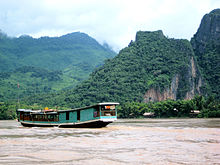
The key river of Southeast Asia, often called the lifeblood of the Indochina region, is the Mekong , that flows from China towards the South China Sea, passing five Southeast Asian countries on its way: Myanmar, Laos, Thailand, Cambodia, and Vietnam (the Mekong Delta ). In Cambodia, the Mekong creates the unique ecological phenomenon of the Tonle Sap lake. Also in Cambodia, around the town of Kratie , river dolphins can be found. The second-longest river of the region is the Salween , flowing mostly in Myanmar. An interesting river is the subterranean river of Puerto Princesa in the Philippines, with 8 km in length possibly the longest underground river in the world. Apart from Tonle Sap, other large lakes in the region include the densely populated Inle Lake of Myanmar, and Indonesia's Lake Toba , that is actually a huge volcano crater. In several places in Southeast Asia, rivers and lakes are used for floating markets or villages, with famous examples including the floating villages surrounding Siem Reap (Cambodia), and the floating markets of Thailand including Damnoen Saduak and of Indonesia including Banjarmasin .
Geological formations and landscapes of interest are plenty in Southeast Asia. Prime examples include the karsts of Vang Vieng in Laos, the chocolate hills of Bohol in the Philippines, and the caves and grottos of Phong Nha-Ke Bang in Vietnam. Interesting coastal and marine landscapes include the limestone rock formations of Ao Phang Nga in Thailand, and ocean karsts at Ha Long Bay in Vietnam and Raja Ampat in Indonesia. More information on spectacular beaches (including for surfing) and underwater life (for diving and snorkelling) can be found in the Do section below.

In addition to natural landscapes, also many agricultural landscapes in Southeast Asia are spectacular. The key crop in most of the region is rice, with five Southeast Asian countries in the world's top 10 of rice producing countries. Some regions that are known for their stunning rice terraces include the Cordillera region of the Philippines, the region surrounding Sa Pa in Vietnam, and the Indonesian island of Bali . The cultural landscape of Bali, including the traditional subak irrigation system dating back to the 9th century, is on the World Heritage List. Other common crops in Southeast Asia include coffee, tea, rubber, sugar, tobacco, and a wide variety of tropical fruits. Famous regions with extensive tea plantations include the Cameron Highlands of Malaysia, and the Puncak mountain pass area of Indonesia.
Museums [ edit ]

All of the larger cities in Southeast Asia boast a range of museums, with the capital cities standing out. The region's best-known culture and history museums include Singapore's National Museum (in Orchard ) and Asian Civilisations Museum (in Riverside ). Also most of the other capital cities have a National Museum focusing on the country's culture and history, including Bangkok ( Rattanakosin ), Jakarta ( Central ), Phnom Penh , Hanoi , Manila ( Ermita ), and Kuala Lumpur ( Brickfields ). Also in Brickfields, the Islamic Arts Museum Malaysia provides the largest collection of Islamic art in the region. The Vietnamese capital, Hanoi, also has several great culture and history museums, such as the Fine Arts Museum and the Vietnam Museum of Ethnology. The historical city of Malacca is home to the Baba & Nyonya Heritage Museum , which showcases the culture of the Peranakans, the descendants of 15th-century Chinese immigrants who married the local Malays.
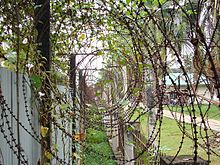
Throughout the region, there are museums commemorating specific events in the regional and local history . This includes for example the War Remnants Museum in Ho Chi Minh City on the Vietnam War, the Tuol Sleng Genocide Museum in Phnom Penh on the Cambodian genocide, the Aceh Tsunami Museum in Banda Aceh , Indonesia on the 2004 Boxing Day tsunami that killed about 250,000 people (more than half of them in Aceh), and the Resistance Museum in Dili on the East Timorese struggle for independence.
Among the key places to go for modern art collections are Singapore (for example the National Gallery in the Riverside district) and the town of Ubud in Bali, which boasts dozens of art galleries and museums.
Botanical gardens are plentiful throughout the region. The most extensive and well known among them include the Botanic Gardens in Singapore's North and West district, the Nong Nooch Tropical Garden near Pattaya in Thailand, and the Botanical Gardens of Bogor in Indonesia.
Archaeological sites and precolonial heritage [ edit ]

Southeast Asia has a huge number of archaeological sites , ranging from prehistoric remains of early humans that may be more than 1 million years old to great Hindu and Buddhist temples from the 8th to 14th centuries. Historic sights from the precolonial era are covered in this section, while colonial heritage is covered in the next section.
Three prehistoric archaeological sites in Southeast Asia are on the World Heritage List. The so-called Sangiran Early Man Site can be found near Solo in Indonesia, with fossils of early humans (related to the 'Java Man') that are estimated to be between 700,000 and 1,000,000 years old, possibly older. In Malaysia's Perak state, the Lenggong Valley contains four archaeological sites with tools, weapons jewellery and other equipment from various ages, and the 'Perak Man' skeleton. The archaeological site of Ban Chiang near Udon Thani in Thailand includes pottery that was painted red and dates to 2,000-4,000 years ago.

Nowadays, Hinduism in Southeast Asia is mostly limited to the Indonesian island of Bali , the Cham community of Vietnam , and the Indian communities of Malaysia , Myanmar , Thailand and Singapore , while Buddhism is concentrated in Indochina , Thailand and Myanmar and among overseas Chinese communities throughout the region. However, from about the 4th to the 15th centuries, Hinduism, Buddhism and a combined observance of both were adhered to by the vast majority of Southeast Asians, and this led to the construction of many Hindu and Buddhist temples across the region. Two world-famous Buddhist temples, and major tourist attractions, are Borobudur in Indonesia (8th-9th centuries) and Angkor Wat in Cambodia (12th century, and partly a Hindu temple complex). Major Hindu temples include My Son (4th-14th centuries) in Vietnam, Prambanan (9th century; near the Borobudur temple) in Indonesia, Preah Vihear (11th-12th centuries) in Cambodia, and Vat Phou (11th-13th century) in Laos. All of these temples are World Heritage Sites.
Other key historic sights in Southeast Asia from precolonial times include the Sukhothai Historical Park in Thailand that used to be the capital of the Sukhotai Kingdom (13th-15th centuries), the Pyu Ancient Cities in Central Myanmar (2nd century BCE to 11th century), the ancient town and trading port of Hoi An in Vietnam (15th to 19th century), and the ancient capital of Ayutthaya in Central Thailand (14th century). Myanmar also boasts the archaeological sites of Bagan and Mrauk U , which were once the great capitals of ancient kingdoms of the Bamar and Rakhine ethnicities respectively, and each home to literally thousands of ancient temples. Near the city of Mandalay is Inwa , which served as one of the last capitals of the Burmese kingdom before it was conquered by the British. Two famous old citadels can be found in Vietnam: the 11th-century Hanoi Citadel and the 14th-century Citadel of the Ho Dynasty in the Central Coast region. The Central Coast also boasts the city of Hue , the last capital of the Nguyen Dynasty, which continued to rule in name under French suzerainty until 1945.
Colonial heritage [ edit ]
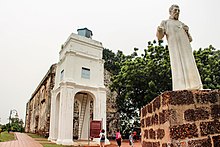
With the exception of Thailand, all Southeast Asian countries were under European colonial rule for varying lengths of time between the 16th and 20th centuries. As a result, there is a considerable colonial heritage in the region, including fortifications, infrastructure and buildings. Despite remaining independent, even Thailand did not escape European influence, and it too boasts several impressive European-style buildings.
One of the key historic towns of Southeast Asia is Malacca , the capital of the Malacca Sultanate that was subsequently under Portuguese, Dutch and British rule. Some of the highlights of Malacca include the Portuguese fortress A Famosa (1511) and St. Paul's Church (1521), and the Dutch Stadthuys (city hall, 1650). British colonial architecture can be found among others in Central Kuala Lumpur (such as the Government Offices built at the end of the 19th century) and in Singapore's Riverside area. Arguably the greatest concentration of British colonial architecture can be found in George Town and Yangon .
From 1619 to Indonesian independence, the capital of the Dutch East Indies was Batavia (present-day Jakarta ). A huge number of colonial remnants can therefore be found in the city, ranging from the Batavia City Hall (built 1707–1710, now the Jakarta History Museum) in West Jakarta to the Neo-Gothic Jakarta Cathedral (built 1891-1901) in Central Jakarta . Also throughout the rest of the Indonesian archipelago, virtually every city and town has sights from the colonial time, such as the 17th-century Fort Rotterdam in Makassar , the 18th-century Fort Vredeburg in Yogyakarta , and many early 20th-century Art Deco masterpieces in Bandung . In the early 19th century, the Great Post Road was constructed across Java , enabling quick trade and development of the entire island.
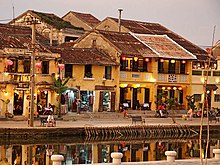
A large number of Catholic churches were built in the Spanish Philippines , with four baroque churches listed on the UNESCO World Heritage List (among others the San Agustín Church in Manila's historic centre and the Miagao church in Iloilo ). The historic town of Vigan is a Hispanic town well known for its cobblestone streets and unique mixed European-Oriental architecture. After the Philippines came under American rule, many Art Deco civil government buildings were constructed.
French colonial architecture can be found throughout former French Indochina . The former capital of Laos, Luang Prabang , is on the World Heritage List for its well-preserved blend of colonial and pre-colonial architecture. Similarly, the old towns of Hanoi and Hoi An in Vietnam have lots of buildings in French Colonial style, while its largest city, Ho Chi Minh City , is also home to several impressive French colonial buildings such as the Saigon Central Post Office, City Hall and the Saigon Opera House.
Other sights [ edit ]
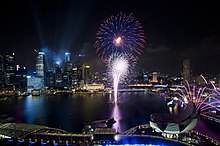
There are dozens of cities with a population of more than a million in Southeast Asia, and many of these have impressive cityscapes . The main modern city of the region is Singapore, whose Marina Bay area has a particularly recognizable skyline. The other main cities also have a large number of skyscrapers and office towers, notably Jakarta , Kuala Lumpur , Manila , Bangkok , and Ho Chi Minh City . The administrative capital of Malaysia, Putrajaya , is a planned city with a surreal mix of modernity and tradition.
Brunei is the only country of Southeast Asia that is a sultanate , and the residential palace of the sultan, Istana Nurul Iman , is considered the largest palace in the world. However, it is usually not accessible to the public, the exception being the second to fourth days of Hari Raya Aidilfitri (Eid al-Fitr), when the sultan holds an open house, exchanges greetings with male members of the public, and hosts the public to a free lunch. Throughout history, numerous sultanates have reigned over several parts of Southeast Asia, with some of the most powerful ones being the Mataram Sultanate (of which the remaining sultanates of Solo and Yogyakarta are successors) and the Malacca sultanate. Sultan palaces and related museums can be found throughout the region, especially in Malaysia and Indonesia.
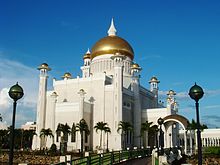
With Malaysia, Brunei, and Indonesia being majority Muslim countries, there are many mosques in the region. Prominent mosques include the Istiqlal Mosque in Central Jakarta (the largest mosque of the region, with a capacity of 200,000), the Blue Mosque in Shah Alam , and the Omar Ali Saifuddien Mosque in Bandar Seri Begawan .
War-related sights (apart from the museums mentioned above) can be found in most of the countries in the region. In Cambodia, the Killing Fields of Choeung Ek near Phnom Penh offer a reminder of the Cambodian Genocide. In Vietnam, there are many sights related to the Vietnam War, such as the Demilitarized Zone around the former border between North and South Vietnam, and the Cu Chi tunnel system. In Indonesia, there are numerous sights related to the War of Independence, such as the Monas national monument in Central Jakarta .
Visitors with an interest in military history can find many remnants from the Pacific War and the Indochina Wars .
Itineraries [ edit ]
- Banana Pancake Trail
- Bangkok to Ho Chi Minh City overland
Do [ edit ]
Water sports [ edit ].

- Scuba diving is a major draw for visitors to Southeast Asia, with Indonesia , Malaysia , the Philippines and Thailand all boasting world-class diving locations.
- Surfing is also an increasing popular sport especially in Indonesia (with Nias and Bali the top draws) and the Philippines .
- Sailing is popular, especially in Southern Thailand
- Try wake boarding at Southeast Asia's largest wake boarding centre in Camarines Sur , Philippines .
- Explore one of the world's longest underground rivers in the Puerto Princesa Subterranean River National Park located in Palawan , Philippines .
Massage [ edit ]
Southeast Asia, in particular Indonesia and Thailand , is well known throughout the world for its traditional massages. While the conditions of massage parlours vary, those in major hotels in touristy areas are usually clean, though you would generally pay a premium for them. Nevertheless, prices remain much lower than in most Western countries, with 1-hour massages starting from around US$5–20.
Sports [ edit ]
- Southeast Asian Games - Known in short as the SEA Games, it is held every two years among the 11 countries of Southeast Asia in odd-numbered years. It is structured similarly to the Olympics, albeit on a much smaller scale, and also features several sports that are only popular within Southeast Asia such as sepak takraw (essentially volleyball played with the feet instead of hands, known for its spectacular overhead kicks), and silat (a Malay martial art). The last edition was held in Cambodia in 2023, and the next edition will be held in Bangkok, Thailand in 2025.
Buy [ edit ]
Every Southeast Asian country has its own currency except for East Timor. The U.S. dollar is the official currency of East Timor , the unofficial currency of Cambodia and Laos , and (for larger payments) is widely accepted in some Southeast Asian cities. Euros are also widely accepted in the major cities, although rates are rarely as good as for dollars. Thai baht are widely accepted in the border regions of Cambodia , Laos and Myanmar . As Singapore is considered to be the main financial centre of Southeast Asia, Singapore dollars would generally be accepted in major tourist areas if you're in a pinch (and are legal tender in Brunei), though the conversion rate might not be very favourable. Exchange rates for Southeast Asian currencies tend to be very poor outside the region, so it's best to exchange (or use the ATM) only after arrival. Alternatively, Singapore and Hong Kong have many money changers who offer competitive rates for Southeast Asian currencies, so you might plan to spend a night or two in transit for you to get your money changed.
When bringing U.S. dollars, ensure that your bills are in pristine condition. Outside Singapore, even slight creases in U.S. dollar bills will cause them to be rejected by most shops and money changers, and even those that accept them will give you a far worse rate.
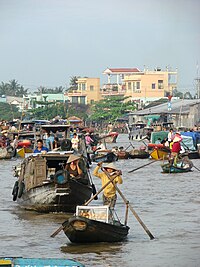
Costs [ edit ]
Southeast Asia is cheap , so much so that it is among the cheapest travel destinations on the planet . US $20 is a perfectly serviceable daily backpacker budget in most countries in the region, while the savvy traveller can eat well, drink a lot and stay in luxury hotels for US $100 per day.
Some exceptions do stand out. The rich city-states of Singapore and Brunei are about twice as expensive as their neighbours, while at the other end of the spectrum, the difficulty of getting into and around underdeveloped places like Myanmar , East Timor and the backwoods of Indonesia drives up prices there too. In Singapore in particular, the sheer scarcity of land drives accommodation rates up and you would be looking at more than US $200 per night for a four-star hotel. Also, many countries in the region do not list taxes and service charges in their advertised accommodation prices so your actual room rate is up to 20% more than the what you see in search engines.
Shopping [ edit ]
Southeast Asia is a shopping haven, with both high end branded goods and dirt cheap street goods. The most popular city for shopping in Southeast Asia is Bangkok , although Jakarta , Kuala Lumpur , Manila , Ho Chi Minh City and Singapore all have extensive arrays of exclusive shopping malls stocked with haute couture labels. On the other end of the spectrum, street markets remain a part of daily life (except in Singapore) and are the place to go for dirt cheap or counterfeit items. Some towns like Chiang Mai in Thailand and Ubud in Bali, Indonesia are well known for enormous markets selling traditional artworks, and it's often possible to buy directly from local artists or have dresses, jewellery, furniture, etc., made to order.
Clothes and accessories of international brands are usually just as expensive as in developed countries, or even more expensive. Branded products that seem considerably cheaper (such as Polo Ralph Lauren shirts in Indonesia ) are typically counterfeit , even when they are not sold in the streets but in a legit-looking shop or air-conditioned shopping mall. If you need a good compromise between low price of street sold items and the quality of branded products, look for stores of domestic brands such as Malaysia 's F.O.S or Philippines ' Bench.
For slightly higher-end gifts, Malaysia's Royal Selangor is the world's foremost manufacturer of pewter products.
Bargaining [ edit ]
Bargain in public markets and flea markets where prices aren't fixed. Southeast Asians actually will give you a bargain if you make them laugh and smile while naming your price; if they don't, try saying bye bye and smile and maybe the vendor might change his mind and give you a discount. When bargaining for simple things like watches, sunglasses, and shoes remember that these are often marked up hugely and, given some bargaining skill, can often be brought down to something like 20% of the asking price. If you can't seem to get them down to a reasonable price, then you're doing it wrong. See Bargaining for more tips.
As a rule of thumb, if a price is not explicitly posted, you need to haggle for it. However even posted prices can often be haggled down as well.
Eat [ edit ]

Southeast Asian cuisine reflects the countries' diverse history and culture. It can be roughly split into Mainland Southeast Asia (Thailand, Vietnam, Cambodia, Laos and Myanmar ) and Maritime Southeast Asia (Malaysia, Singapore, Brunei , Indonesia, East Timor ), and even then still differs considerably from area to area. Chinese and Indian influences have been fused with local ingredients, techniques and tastes in many parts of Southeast Asia. The Philippines ' food culture is the most varied due to their additional influences from Spain and America .
Street vendors or hawkers are a culinary cornerstone of the region, offering wonderful food at a very inexpensive cost; if you're scrupulous about hygiene, go for the char-grilled, deep-fried or boiled-silly options. Thai and Vietnamese dishes like the ubiquitous pad Thai and beef pho have been widely exported around the world after the Vietnam War, followed closely by Malaysian restaurants, but a common refrain is that they simply cannot compare with a fresh bowl served by the roadside. Singapore probably serves as the easiest introduction to street food, though Bangkok and Penang have the better hawkers, with Ho Chi Minh City not far behind.
Rice is the main Southeast Asian staple, with noodles of all sorts an important second option. It's common to take a rich soupy bowl of noodles or some congee (rice porridge) for breakfast. Roti canai in Malaysia , known as roti prata in Singapore , is based on the South Indian parotta (layered flatbread) while Vietnam, Cambodia and Laos have a fondness for French-influenced baguettes courtesy of their colonial history, epitomised by banh mi (Vietnamese sandwich), though they often use a combination of wheat and rice flour to make them.
Love of the spicy chilli is also shared throughout the region, and many of its most famous dishes incorporate chilli whether as a core ingredient or as a separate garnishing, from Thai curries and tom yum soup to the Indonesian beef rendang to Malaysia's assam laksa to Cambodia 's amok . The unsuspecting diner may end up downing glass after glass of water to try and quench the burning sensation, but the local advice is to drink hot tea instead. Asking the cook to tone down the spiciness will not always work, and often your eyes will water when eating an adjusted version even as nearby locals happily slurp down their meals. Chilli is just one of the many spices used in Southeast Asian cooking, with lemongrass, tamarind and cloves popular choices to lend strong aromatic flavours to dishes.
Living next to seas and rivers, seafood is a crowd favourite. Fish and prawns feature prominently, with fermented fish sauce and shrimp paste frequently used in everyday cooking, although shellfish such as Singapore chilli crab is much more expensive and usually saved for special occasions or enjoyed by the well-off.
A variety of delicious fruit is available everywhere in all shapes and sizes, and pretty much all year round thanks to the tropical weather. Mangoes are a firm favourite among travellers. The giant spiky durian , perhaps the only unifying factor between Southeast Asia's countries, is infamous for its pungent smell and has been likened to eating garlic ice cream next to an open sewer. Other distinctive Southeast Asian fruits are the purple mangosteen, the hairy rambutan and the jackfruit-like cempedak , whose exteriors hide juicy fleshy insides. Pay attention to what's in season for better taste and prices.
Fine dining is increasingly an option in the more developed countries of Southeast Asia. Bangkok is generally considered to have the best fine dining scene in Southeast Asia, with Singapore not too far behind, and Ho Chi Minh City rapidly catching up, though there are also good options to be found elsewhere. Although fine dining is far out of the reach of the average working class Southeast Asian, with the notable exception of Singapore, prices tend to be a lot more affordable than food of a similar standard in Western countries and East Asia.
Western restaurant review websites such as Yelp are not generally reliable for South East Asian countries, as locals do not often post reviews there. Instead, there are local review websites that cover South East Asian countries, such as Eatigo , Openrice and Zamato . Some countries have their own domestic apps that are generally the most reliable within those countries, with the obvious caveat that almost all reviews are only in the local language; examples include Wongnai in Thailand and Foody in Vietnam .
Drink [ edit ]
Rice-based alcoholic drinks — Thai whisky , Tuba , lao , tuak , arak and so on — are ubiquitous and potent, if rarely tasty. In some areas, notably the Philippines, rum is also common, made from the local sugarcane. As a rule of thumb, local booze is cheap, but most countries levy very high taxes on imported stuff.

Beers are a must try in Southeast Asia, and are often very inexpensive. Check out San Miguel (Philippines), Singha, Chang beer (Thailand), Bir Bintang, Angker Beer (Indonesia), Tiger Beer (Singapore and Malaysia), Saigon Beer, Hanoi Beer, Huda Beer, 333 Beer, Bia hơi (Vietnam), Beerlao (Laos), Angkor and Angkor Stout (Cambodia). Lager is by far the most popular style, although stout (especially Guinness) is also popular and the larger cities have plenty of microbreweries and imported brews. Beer in SE Asia is primarily consumed by locals to simply get drunk, and not for taste. As such, by Western standards, most locally produced SE Asian beers are often of comparable quality to a low-end Western beers. Don't be surprised by the local habit of adding ice to your beer: not only does it help keep it cool, but it dilutes the often high alcohol content (6% is typical) as well.
Hampered by heavy taxation and a mostly unsuitable climate, wine is only slowly making inroads, although you can find a few wineries in central and northern Thailand, Bali, and Vietnam. Don't buy wine in a restaurant unless you're sure it's been kept properly, since a bottle left to simmer in the tropical heat will turn to vinegar within months. The exception is the former French colonies of Laos and Cambodia which have a respectable collection of vintages available in the larger cities of Vientiane and Phnom Penh .
Nearby Australia exports a good deal of wine to this region; it will be found mainly in high-end hotels or restaurants, though places catering to the budget/backpacker part of the tourist trade may have some as well. The cheap local restaurants generally will not have any.
Fruit juices and coconut water are widely available, especially among Muslims, and in other communities where alcohol is not customary.
Tea and coffee are available in different regional styles throughout Southeast Asia. Vietnamese coffee and Thai tea are some prominent examples, as is teh tarik of the Indian Muslim community in Malaysia and Singapore. The Australian chocolate malt drink Milo is also popular in Singapore and Malaysia.
Stay safe [ edit ]
Generally speaking the traveller trail in Southeast Asia is perfectly safe, but there are low-level insurgencies in the remote areas of Indonesia , Myanmar , the Philippines , Thailand , and East Timor .
Violent crime is rare in Southeast Asia, but tourists have been attacked in beach resorts in a few isolated but well publicised cases.
Opportunistic theft is more common, so watch out for pickpockets in crowded areas and keep a close eye on your bags when travelling, particularly on overnight buses and trains.
Major dangers are very poor road safety, as well as little or no oversight of physical activities such as white water rafting and bungee jumping.
In 2004 an Indian Ocean tsunami killed an estimated 230,000 people, with Thailand and Indonesia 's Aceh province being severely affected. Many foreign tourists were injured or killed in this very rare yet very dangerous event.
While plenty of narcotics are produced, distributed and consumed around the region, most countries (especially Thailand, Singapore and the Philippines) have harsh penalties for possession of small amounts, and capital punishment for organized drug trafficking. Neither foreign citizenship nor bribes will save visitors from sentences.
Stay healthy [ edit ]
Singapore and Thailand are two of the world's main medical tourism hubs. In Singapore, the healthcare system is of a high standard in both government and private hospitals, though prices are also the most expensive in Southeast Asia (but cheaper than most Western countries). Healthcare costs in Thailand are much cheaper than in Singapore and Western countries, making it a popular medical tourism destination for people on tight budgets. While private hospitals in general conform to international standards, and some private hospitals in Bangkok are widely regarded as among the best in the world, public hospitals often leave much to be desired.
Malaysia and Brunei in general have high standards in both private and public hospitals. In the Philippines , while the standard of care is uniformly good at both public and private hospitals in Manila, conditions are often bad in rural areas and smaller cities. In Vietnam and Indonesia , while public hospitals most certainly lag far behind the standards of the West, there are internationally accredited private hospitals in the major cities that are run to international standards. Myanmar , Laos , Cambodia and East Timor generally have poor healthcare standards, so you will almost certainly want to travel to Thailand or Singapore for any major procedures; ensure that your insurance covers this.
The Joint Commission International accredits hospitals internationally based on U.S. standards; though you will be paying a premium for these hospitals, you can ensure that the care and treatment you receive will be aligned to Western standards.
Respect [ edit ]
You may be asked to take off your shoes quite often, especially when entering temples, mosques or guesthouses. Wear shoes that can be slipped on and off easily, particularly if you're planning to visit a lot of temples, and make sure your socks aren't full of holes. At Buddhist temples, the areas where you have to go barefoot differ by country; in Myanmar, you will have to take your shoes off before entering the entire temple complex, while in Thailand, you are only required to take your shoes off before entering temple buildings.
- Has custom banner
- Has mapframe
- Maps with non-default alignment
- Maps with non-default size
- Has map markers
- Articles with dead external links
- Has Geo parameter
- All destination articles
- Usable regions
- Usable articles
- Region articles
- Regions with more than 9 subregions
- Pages with maps
Navigation menu
Nomadic Matt's Travel Site
Travel Better, Cheaper, Longer
Southeast Asia Travel Guide
Last Updated: November 27, 2023
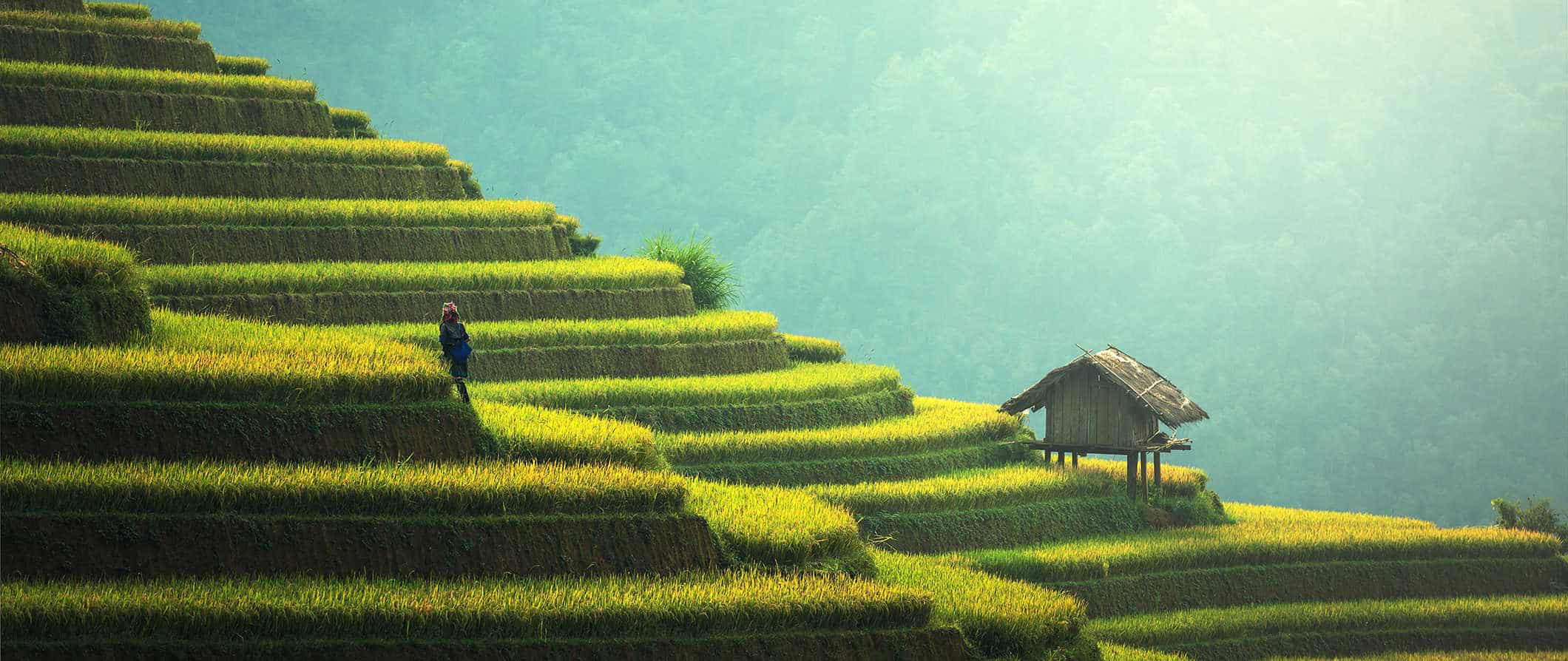
Backpackers have been traveling through Southeast Asia since the late 1960s and early 1970s, leaving a well-worn trail around the region.
Starting in beautiful Thailand, the trail makes its way to up-and-coming Laos, through Vietnam, and to the temples of Angkor Wat. It then winds back into Thailand, where people head south to party in the Thai islands before moving down to Malaysia and Singapore.
There are a few variations to the trail, but this is what it mostly covers.
I’ve been visiting this region since 2004 and spent years living in Thailand . I love backpacking Southeast Asia and have written extensively about it as I know it like the back of my hand.
It’s an especially great region for new travelers because it’s easy to travel around, it’s safe, and there are lots of other travelers you can meet. But it’s also perfect for veteran travelers too as there are tons of off-the-beaten-path destinations that the standard backpacker trail doesn’t cover.
In short, Southeast Asia has something for every traveler — and every budget.
This Southeast Asia travel guide will help you travel the region like a pro, ensuring you save money and make the most of your time in this fun, gorgeous, and lively corner of the world.
Table of Contents
- Things to See and Do
- Typical Costs
- Suggested Budget
- Money-Saving Tips
- Where to Stay
- How to Get Around
- How to Stay Safe
- Best Places to Book Your Trip
- Related Blogs on Southeast Asia

Click Here for Country Guides
Top 5 things to see and do in southeast asia.
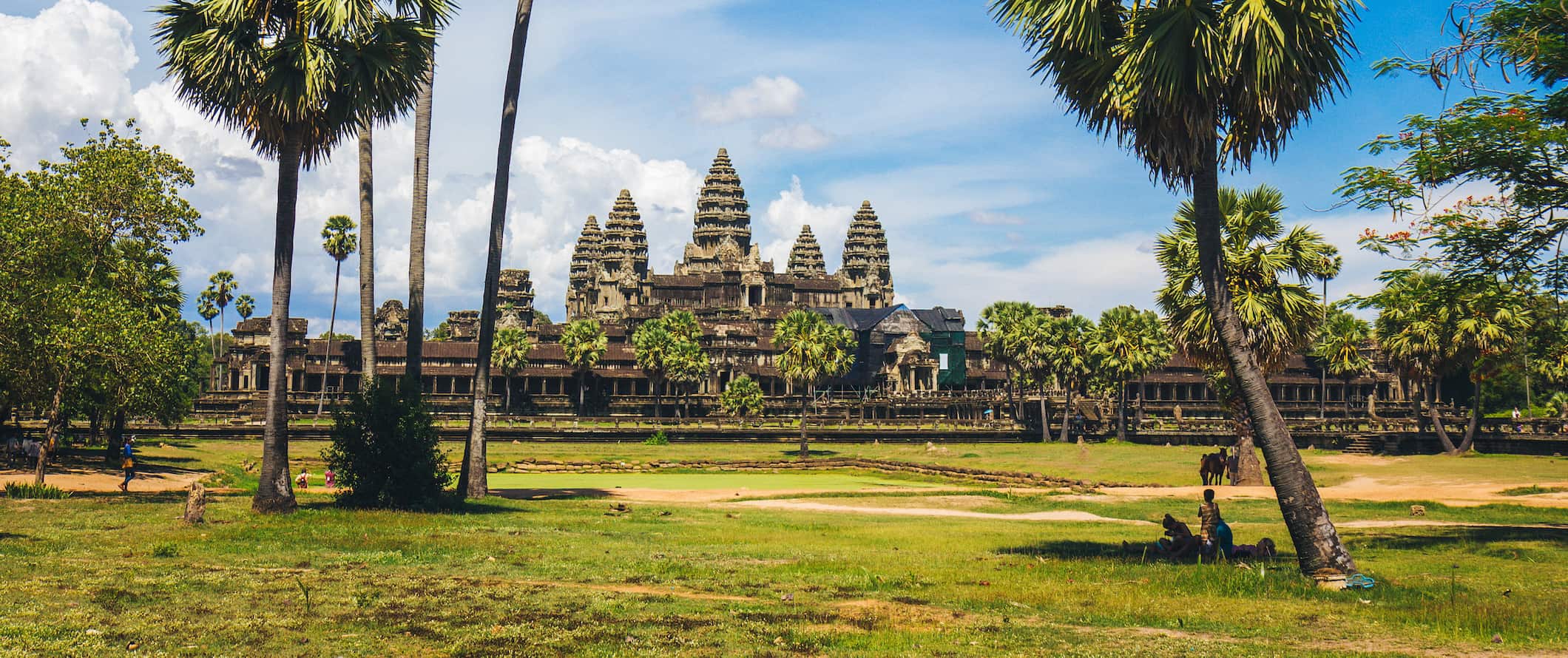
1. Admire Angkor Wat
One of the greatest human creations in history, the Angkor Wat temple complex is best explored over the course of a few days. The area is a UNESCO World Heritage Site created by the Khmer Empire and absolutely enormous. Temples to visit include Angkor Wat, Bayon Temple which has 216 gigantic stone face carvings, and Ta Prohm. I spent three days here and that simply wasn’t enough. A one-day pass is $37 USD, while a 1-week pass is $72 USD. If you’re here for multiple days, be sure to hire a driver and see some of the more out of the way ruins away from the main temple complex (and the crowds).
2. Explore Bangkok
Bangkok is the hub of travel activity in Southeast Asia. You can get anywhere you want from here. Though I hated it at first, the more I’ve spent time here the more I love it. Bangkok is like an onion whose many layers need to be peeled back. Some things not to miss include the spectacular Bangkok Grand Palace, Wat Pho, Chatuchak Market and Asiatique, and a canal trip on the Chao Phraya River. This is a city for foodies and wild nightlife.
3. Relax on some tropical islands
No visit to Southeast Asia would be complete without a visit to at least one of the thousands of tropical islands in the region. My top five include the Perhentian Islands (Malaysia), Rabbit Island (Cambodia), Ko Lanta (Thailand), and Boracay (Philippines). Lombok Island (Indonesia) has a chill vibe with unspoiled, perfect “desert island” beaches. There’s so many islands to visit. Be sure to add at least one to your trip. The country guides will have more information for you.
4. See Ha Long Bay
Sailing trips to this island-filled bay with stunning emerald waters, limestone formations, and marine life give you an appreciation for the natural beauty in Vietnam. Tours from Hanoi start at around $110 USD for two-day trips and increase from there. I love the colorful grottoes, hanging stalactites, and stalagmites of Surprise Cave (Sung Sot), Fairy Cave (Tien Ong), and Heaven Palace (Thien Cung). Make sure you go with a reputable company though as some of the cheaper boats are less than ideal. If you’d rather just visit for one day, day trips from Hanoi cost $55 USD.
5. Wander Kuala Lumpur
Other things to see and do in southeast asia, 1. go jungle trekking.
This region of the world is covered in amazing jungles with diverse wildlife, plentiful camping opportunities, and cool waterfalls. The best jungle treks are found in northern Thailand, Western Laos, and Malaysian Borneo (the latter are also the hardest and most intense). Some of my favorites include Danum Valley (Borneo) for its incredible wildlife; Ratanakiri (Cambodia) for its pristine wilderness and thousand-year-old trees; and Pu Luong Nature Reserve (Vietnam). Costs vary but jungle trekking generally costs $30-50 USD per day.
2. Attend the Full Moon Party
The biggest one-night party in the world welcomes up to 30,000 people with a party that stretches until dawn. Cover yourself in glow paint, grab a bucket of booze, and dance the night away with new friends on the island of Ko Phangan in Thailand. As the name would suggest, the party is on the night of the full moon. If you miss it, there’s always the half-moon party, quarter-moon party, and black-moon party. Really, every night is a party on Ko Phangan . Just avoid the flaming jump rope that occurs — I’ve seen people get burned badly!
3. Learn to dive
There are many great dive sites around the region for those interested in underwater exploration. You can learn to dive here at a fraction of what it would cost back home too. Some of the best places are Ko Tao (Thailand), Sipadan (Malaysia), as well as Gili Islands (Indonesia) and Coron, Palawan (The Philippines). A typical diving course is completed in three days. A PADI course typically runs $275 USD in Thailand, including three nights’ accommodation, though at smaller schools you can often negotiate down to $250 USD. Day trips for certified divers start at $165 USD. For information on Ko Tao, check out this blog post .
4. Eat street food in Singapore
Singapore is a foodie’s heaven. Try the hawker stalls of Singapore as well as Little India and Chinatown for some of the best and cheapest food in Asia. If you’re looking for a nice place to sit down and eat, eat at Singapore’s famed restaurants during lunch when restaurants offer discounts, making them a great deal. You’ll also find the most affordable Michelin-starred restaurants here (Tian Tian Hainanese Chicken Rice and Hawker Chan), offering world-class meals for just a couple of bucks!
5. Overload on temples
You can’t turn a corner without seeing a Buddhist temple in this part of the world. You’ll get temple overload at some point but visit as many as you can as each is unique to the country and region of the temple. There are so many places with high concentrations of ornate and beautiful temples. Check out Chiang Mai’s Wat Doi Suthep Temple and hike up the 300 steps to the golden Chedi that’s 600 years old!; Bagan’s Shwesandaw Pagoda from the 11th century with its stunning golden dome; Angkor Wat’s Ta Prohm is covered in iconic vines and enveloped in ancient jungle roots; Hue’s colorful Thien Mu Pagoda is perched atop a lush green embankment; Hoi An’s Quan Cong Temple with incredible Chinese architecture with hand-carved beauty and skill, and Luang Prabang’s Vat Xieng Thong with its golden, canopied roof. Most are free to enter, however, dress codes are enforced (you need to have your shoulders and legs covered).
6. Dive Sipadan
Located off Malaysian Borneo, Sipadan is one of the best dive sites in the world. If you have your dive certificate, make sure you venture out here. I absolutely love this area because it’s teeming with live turtles, diverse cave systems, sharks, dolphins, colorful coral, bright fish, and everything in between. Not a lot of people make it to this part of Malaysia, but it’s worth it to go the extra mile and make your way off the tourist trail a bit. Don’t miss Barracuda Point and The Drop-Off. Keep in mind that only 176 permits to dive at the island are issued each day, costing 140 MYR per person. The resorts on the neighboring islands each get a specific number of permits per day and require divers to stay with them for a few days. So you’ll need to stay at those resorts and dive into the surrounding areas before they can get you a Sipadan permit.
7. Fall in love with Bali
Bali is the most popular destination in Indonesia, and its famous Kuta beach is known for its wild parties and surfing ( though I think it’s overrated ). However, there is much more to Bali than just wild nights and sun-soaked days. If you’re a thrill seeker, hike up to the top of Mount Batur, an active volcano, for a breathtaking sunrise. Paragliding and white water rafting are also super popular here, as is surfing (it’s an affordable place to learn if you’ve never done it). There are also lots of hot springs to enjoy, the Ubud Monkey Forest (a popular temple and nature reserve home to hundreds of monkeys), and numerous places to scuba dive, including the Liberty wreck and Manta Point.
8. Take in Ho Chi Minh City
Frantic, chaotic, and crazy, Ho Chi Minh City in Vietnam is the embodiment of the controlled chaos that rules Southeast Asia. You can’t quite figure out how this teeming mass of people and cars work together, but it does. Highlights here include touring the tunnels used by the Viet Cong in the 1960s, taking in the view from the Saigon Skydeck, eating your way through the street food scene, and seeing the city’s numerous temples.
9. Admire the sunrise over an Indonesian Volcano
One of the most popular tourist attractions on Java is Mount Bromo and its National Park. Don’t miss out on getting a photo of the smoldering Bromo volcano as it lies surrounded by the almost lunar landscape of the Sea of Sand. Get up early to catch one of the most memorable sunrises of your life. If you’re there in mid-August, you’ll be just in time to see Upacara Kasada, the traditional Hindu ritual of the Tenggerese, a Javanese tribe of the region.
10. Hike in Khao Sok National Park
Located in southern Thailand, Khao Sok National Park is constantly rated as one of the best parks in Thailand, with incredible trekking, camping, limestone karsts, cooling rivers, and a glistening lake. Visit for semi-challenging hikes, tons of wildlife, walking paths, and breathtaking sunsets. Park entrance costs around $6 USD while full-day guided tours are $95 USD. I highly recommend spending at least one night here to get the full experience.
11. Visit Kampot
Most people come to Kampot to enjoy the scenic riverside views, as well as the rolling hills that surround the city. Since you can explore easily enough on foot or by bicycle, Kampot is a great place to slow down and relax. There’s not much to do here but have lazy days by the river, chill, and eat (don’t miss the famous Rusty Keyhole for BBQ!). Don’t miss the pepper farms, as this region of Cambodia is filled with pepper farms where you can learn about the history of the spice, see how it is grown, and pick up what is considered some of the finest pepper in the world. Tours are usually free.
12. Take a cooking class
Food from this region is as varied as the countries themselves and learning how to cook a few dishes is a great souvenir of your time here. Even if you don’t plan to cook back home, you can still spend a day making and eating scrumptious food. Most big cities have cooking schools offering classes of 2-6 hours, often including a trip to the local market beforehand to select ingredients. I absolutely love cooking classes and urge you to take one at least once. They are a fun experience!
13. Take a food tour
If you’d rather eat instead of cook, taking a food tour is a fun way to gain insight into the region’s amazing noodle dishes, fresh seafood, sweets, and street food while learning about the history and culture behind the cuisine. Most major cities in Southeast Asia offer food tours. These include tours around local markets, street stalls, and tours to locally-owned restaurants and cafes where you can sample the local cuisine and connect with a local chef. If you’re nervous about street food, this is a great way to try some in a controlled setting. Tours usually last 2-4 hours and include multiple stops and several different dishes, with prices costing $40-75 USD per person.
14. Visit an elephant sanctuary
While riding an elephant is on many a Southeast Asia bucket list, once you know how much the animals suffer from abuse in order to provide these rides, you might think twice about taking one. An even better way to interact with elephants is to volunteer at or visit the Elephant Nature Park near Chiang Mai in Thailand. It’s a phenomenal place, allowing you to give back to the community and these magnificent animals all at once. After coming here, you will understand why you should NEVER ride an elephant. A one-day visit costs $70 USD.
15. See The Killing Fields
A visit to Choeung Ek, also known as the Killing Fields, may not be the most cheerful way to spend an afternoon, but it makes for an educational and memorable experience. Over 3 million people were killed by Pol Pot’s regime, including countless women and children. I recommend getting a guide so you can really understand what you’re seeing as you explore the area. Also, this horrific tragedy took place less than 50 years ago and is still very present so please be respectful as a visitor. The site is located 10 miles from Phnom Penh. Half-day guided tours start at $66 USD.
16. Swim with Whale Sharks in Donsol
If you’re in the Philippines, check out the Donsol Whale Shark Interactive Ecosystem Project because there are not many experiences quite as adrenaline-inducing as swimming with a whale shark for the first time in crystal waters. These incredible creatures are around 45 feet (14 meters) long and yet incredibly gentle and curious. I loved floating at the surface being able to look below and see them slowly swim below me. Get some people together and rent a boat for a half day, explore the area, and go ‘shark-seeing’ for a good cause.
For a ton more information, visit my country specific travel guides for more detailed information on each place:
- Cambodia Travel Guide
- Indonesia Travel Guide
- Laos Travel Guide
- Malaysia Travel Guide
- Singapore Travel Guide
- Thailand Travel Guide
- Vietnam Travel Guide
Southeast Asia Travel Costs
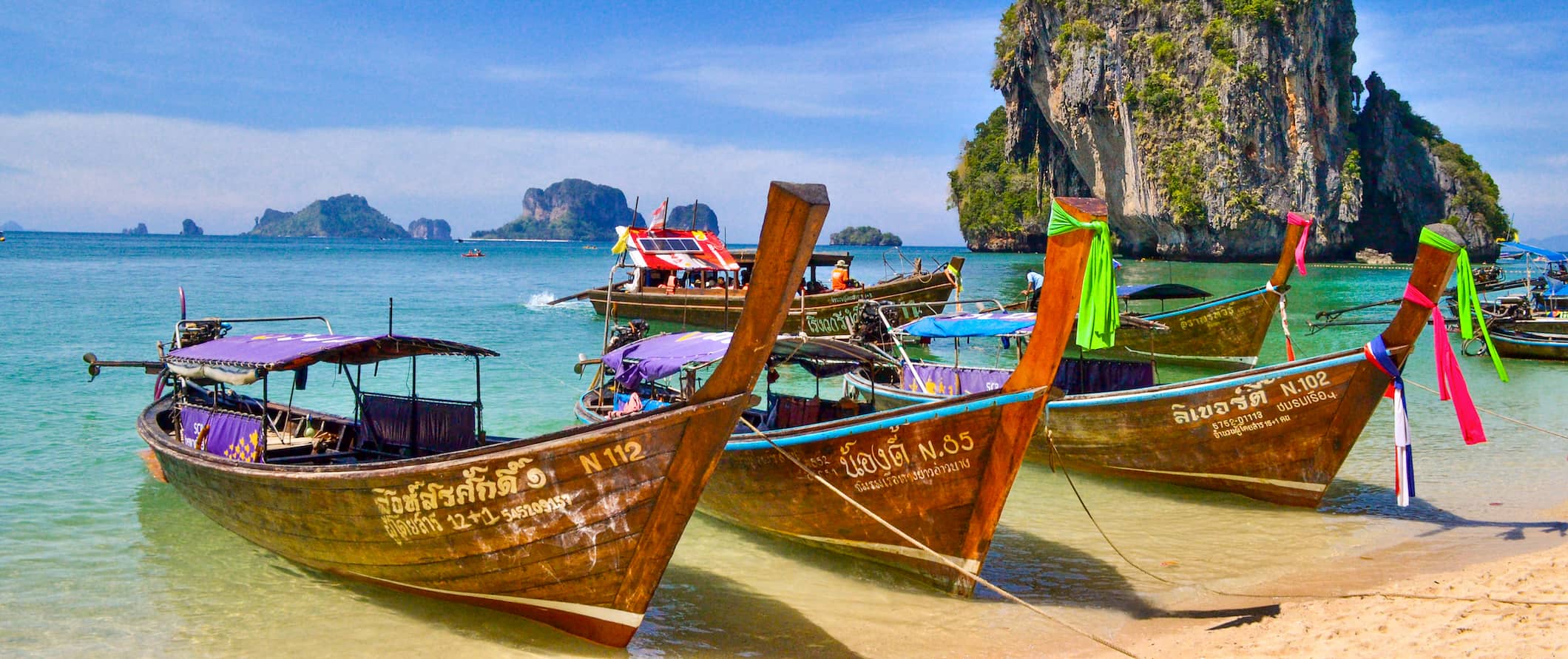
Accommodation – Accommodation in Southeast Asia is really cheap, making it the perfect place to travel if you are on a budget. Hostels are plentiful, as are budget guesthouses and hotels. It’s also very cheap to splash out here if you’re in need of some luxury.
Generally, you can find hostel dorm rooms for as little as $6-8 USD in Cambodia and $3-6 USD in Laos. In Thailand, 4-6-bed dorm rooms are $8-12 USD, while in Vietnam you can expect to pay $5-7 USD. In Indonesia, prices range between $5-10 USD for a 4-6-bed dorm room. Expect to pay at least $15-20 per night for a private room with air conditioning. Free Wi-Fi is standard in most hostels, free breakfast is common, and many hostels even have pools. In more remote areas, hot water isn’t common so make sure to check in advance if that’s an issue for you.
Simple guesthouses or bungalows throughout Southeast Asia generally cost $12-20 USD per night for a basic room with a fan (sometimes air conditioning) and hot water. If you want something nicer that includes a more comfortable bed and a TV, expect to pay $25-35 USD per night.
For backpackers, budgeting around $10 USD per night for accommodation is pretty safe no matter where you go in Southeast Asia. If you’re looking for a higher-end hotel room with more amenities, expect to pay $20-50 USD per night for a room. Anything over that is luxury territory.
Camping is available in certain areas, usually for just a few dollars per night for a basic tent plot without electricity. However, this is about the same price as hostels so it’s not really any cheaper.
Food – While each country’s cuisine varies, overall, Southeast Asian food is aromatic, spicy, and flavorful. Typical spices and herbs include garlic, basil, galangal, cilantro, lemongrass, kaffir lime leaves, chilies, and fish sauce. No matter what region you’re in, you can expect to find a variety of curries, salads, soups, noodle dishes, and stir-fries.
Rice and noodles are central to Southeast Asian food, while the meat is usually pork, chicken, fish, or seafood, which is everywhere on the islands and coastal areas.
While traveling Southeast Asia, street food is the most popular food and cheapest option. On average, these meals cost $1-5 USD. You find these stalls throughout this region lining most streets and every market. They are ubiquitous in the region. In Singapore, street food (from “hawker stands” as they’re known there) costs around $4-5 USD for a meal. Even if you go into small local restaurants, the price doesn’t increase that much.
Food that costs $2 USD at a street stall generally only costs $4-6 USD at a local restaurant. If you went into a restaurant in Thailand, you’d pay around $3-4 USD for a pad Thai that would have cost $1-2 USD on the street.
In Cambodia, street food is around $1-2 USD, while restaurants charge around $3-5 USD for a dish like amok (a coconut milk dish) or luc lac (pepper gravy beef).
Western meals, including burgers, pizza, and sandwiches usually cost around $7-10 USD. But these generally aren’t that great. If you want something that actually tastes as it does back home, expect to spend at least $10-12 USD for your meal.
While cheap, alcohol can take a bite out of your budget if you’re not careful. Those $1-2 USD beers add up! Wine and cocktails are more expensive, generally around $3-5 USD. A cappuccino is typically around $2 USD. Bottled water is plentiful and costs less than $1 USD.
There’s a growing cutting-edge foodie scene in the region and, if you want to splurge, you can do so on some really good meals. Big cities like Bangkok, KL, and Singapore, all have world-class Michelin star restaurants as well some incredible fusion restaurants.
Since dining out is so cheap in the region, there’s no point in grocery shopping unless you’re looking to get some pre-made salads or fruits. Additionally, a general lack of kitchens in most hostels and hotels makes it difficult to cook even if you wanted to. If you do purchase your own groceries, expect to spend around $25 USD per week for basic groceries like local produce, rice, and some meat (while avoiding expensive imported items like cheese and wine).
Backpacking Southeast Asia Suggested Budgets
On a backpacker budget of $45 USD per day, you can stay in hostel dorms, eat out at local markets and street stalls, limit your drinking, do mostly free activities, minimize paid activities, and use public transportation to get around. You’re not going to be able to splash out but you’ll be able to live the typical backpacker experience without really stressing over expenses.
On a mid-range budget of $85 USD per day, you can stay in budget hotels or private hostel rooms, eat more restaurant meals, do more paid activities like cooking classes, take some taxis, and enjoy a few more drinks. You won’t live large, but you won’t be missing out either.
On an upscale budget of $150 USD or more per day, you can stay in nicer hotels with more amenities, eat out as much as you want, do more paid tours including private tours, hire a driver, fly between destinations, and basically do whatever you want. The sky is the limit with this kind of budget!
You can use the chart below to get some idea of how much you need to budget daily, depending on your travel style. Keep in mind these are daily averages — some days you’ll spend more, some days you’ll spend less (you might spend less every day). We just want to give you a general idea of how to make your budget. Prices are in USD.
Southeast Asia Travel Guide: Money-Saving Tips
Backpacking Southeast Asia is cheap. There’s little opportunity to spend a lot of money since everything is already so inexpensive unless you intentionally are trying to splash out on fancy meals and high end hotels. The two reasons why most travelers end up overspending is that they eat a lot of Western food and drink way too much. If you want to save money while traveling in this part of the world, cut down on your drinking and skip the Western food. While country guides have more specific ways to save money, here are some general ways to save money in Southeast Asia:
- Stay with a local – Accommodation is cheap in Southeast Asia but nothing’s cheaper than free! Use Couchsurfing to stay with locals who have extra beds and couches for free. You’ll also meet great people who can show you around and share their insider tips and advice.
- Book tours and day trips as a group – You have more negotiation power when you’re with a group of people buying multiple spots or tickets. Traveling alone? Meet a friend at a hostel and see if they want to join the same tour as you. I’ve met some great friends over the years doing this and highly recommend it.
- Don’t book in advance – Don’t book any tours or activities before you get to your destination. They’ll be much cheaper when you arrive as you’ll be able to negotiate a lower price as you’ll find companies are often offering the same tour and competing. Anything you see online is more expensive than you need to pay!
- Eat on the street – The street food is the best food. The food is the best and cheapest you’ll find. It’s a great way to try new foods and get to chat with locals as well. This is where locals eat so if you want insight into local culture, good food, and savings, eat the street food. Look for where locals are eating to ensure that it’s safe to eat.
- Bargain hard – Nothing is ever at face value here. Bargain with sellers as most of the time, the price they’ve quoted is way higher. There’s a haggling culture in the region so play the game and save some money. It’s important not to convert it in your head to your own currency because it will usually sound cheap even though you might still be getting ripped off. You’ll never get the local price, but you might come close!
- Minimize your drinking – Drinks really add up. Even with cheap drinks, if you’re not aware, you’ll end up spending more money on beer than on food and accommodation. If you want to drink, head to the supermarkets, drink at the hostel, or check out the local happy hours.
- Pack a water bottle – A water bottle with a purifier comes particularly in handy in Southeast Asia since you can’t usually drink the tap water. Save money and thousands of plastic bottles and get a bottle that can purify the tap water for you. My preferred bottle is LifeStraw as it has a built-in filter that ensures your water is always safe and clean.
Where to Stay in Southeast Asia
I’ve been traveling Southeast Asia since 2005 and have stayed in hundreds of places. Here are some of my favorite places to stay in Southeast Asia:
- The Siem Reap Pub Hostel (Siem Reap)
- Onederz Siem Reap (Siem Reap)
- Mad Monkey Siem Reap (Siem Reap)
- Onederz Sihanoukville (Sihanoukville)
- Monkey Republic (Sihanoukville)
- Onederz Phnom Penh (Phnom Penh)
- Sla Boutique Hostel (Phnom Penh)
- The Magic Sponge (Kampot)
- Indigo House Hotel (Luang Prabang)
- Sa Sa Lao (Luang Prabang)
- Sanga Hostel (Pakse)
- Nana Backpackers Hostel (Vang Vieng)
- Dream Home Hostel (Vientiane)
- Traveller Bunker Hostel (Cameron Highlands)
- De’Native Guest House (Cameron Highlands)
- Kitez Hotel & Bunks (Kuala Lumpur)
- Sunshine Bedz Kuala Lumpur (Kuala Lumpur)
- Ryokan Muntri Boutique Hostel (Penang)
- Mad Monkey Hostel (Bangkok)
- D&D Inn (Bangkok)
- Kodchasri B&B (Chiang Mai)
- The Royal Guest House (Chiang Mai)
- Green Leaf (Khao Yai)
- Lonely Beach Resort (Ko Chang)
- The Sanctuary (Koh Phangan)
- Na-Tub Hostel (Koh Phangan)
- Pineapple Guesthouse (Phuket)
- Dream Lodge
- The Pod Capsule Hostel
- The Scarlet
- Under the Coconut Tree Guesthouse (Hoi An)
- Fuse Beachside (Hoi An)
- Pretty Backpackers House (Da Lat)
- Hanoi Old Quarter Hostel (Hanoi)
- Luxury Backpackers Hostel (Hanoi)
- The Hideout (HCMC)
- City Backpackers Hostel (HCMC)
How to Get Around Southeast Asia
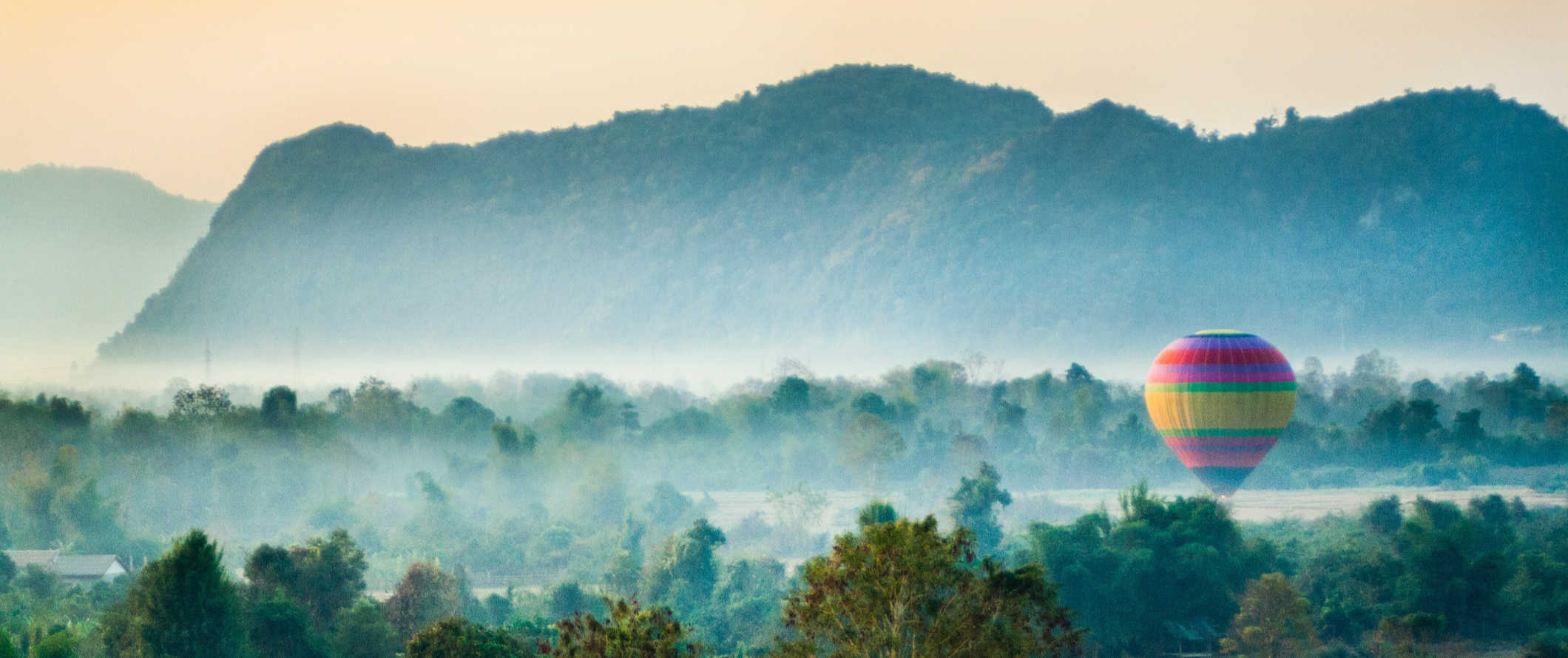
Public transportation – Public transportation costs from a few pennies to a few dollars, with Singapore and Malaysia offering the most comprehensive public transportation systems. In Thailand, local buses cost around $0.25 USD per trip, while the Metro and Skytrain in Bangkok cost $0.50-1.50 USD per trip. In Cambodia, a bus ticket in Phnom Penh costs just $0.40 USD per ride.
Major cities generally have subway systems but mostly you’ll be using the bus or shared taxis to get around.
Tuk-tuks (small, shared taxis with no meter) are available around much of the region and require a bit of haggling. They usually have 3-6 seats and generally cost more than public transportation but are faster. To find a reputable driver, ask your accommodation as they usually know someone. Tuk-tuk drivers can often be hired for the day for a discounted rate (this is what a lot of people do to visit the Killing Fields and Angkor Wat in Cambodia, for example).
Taxi – Taxis in the region are generally safe, though it’s not uncommon to have to haggle. Scams to rip you off aren’t uncommon either, so always ask your accommodation to call you a taxi whenever possible so you know you’ll get a reputable company.
In Singapore and Indonesia, taxi drivers do put on the meter. In Bangkok, you can get taxi drivers to use the meter, but if you’re hailing one in a tourist area, he might try to avoid using it. In Vietnam, the meter is sometimes rigged, but if you can get a reputable company like Mai Linh, you won’t have any problems.
Ridesharing – Grab, DiDi, and Gojek are Asia’s answer to Uber. They work the same way: you hire a driver to take you somewhere via the app, and you can pay via the app or in cash. It’s often more affordable than a regular taxi, though drivers are a bit unreliable as the practice is not as widespread here as in other parts of the world.
Just keep in mind that some drivers are driving motorcycles so be sure to double check what kind of vehicle is picking you up if you don’t want to ride on the back of one.
Bus – The easiest and cheapest way to travel around Southeast Asia is by bus. The backpacker trail is so worn that there is a very well-established tourist bus system to take you anywhere. Buses costs vary between $5-25 USD for a 5-6 hour journey. Overnight buses cost $20-35 USD depending on distance (they often have reclining seats so you can get a decent sleep).
You can check ticket prices and book tickets for all the different bus companies across Southeast Asia at 12go.asia.
Train – Train service is limited in the region and not something to really consider when you travel Southeast Asia. You can take a train up and down the coast of Vietnam and there’s some limited scenic rails in Malaysia. Thailand is the only country that has an extensive train system that lets you travel all its regions (and onward to Singapore) from Bangkok.
The train prices in Southeast Asia are determined by distance and class. Night trains with sleeper cars are more expensive than day trains. The night train to Chiang Mai from Bangkok takes twelve hours and costs $27 USD for a sleeper seat. However, that same train during the day is $8-9 USD. In Vietnam, trains run up and down the coast and cost $60 USD from Hanoi to Ho Chi Minh City.
Flying – The cost of flying around Southeast Asia has come down in recent years due to the rise of low-cost airlines. Scoot, Jetstar, and AirAsia are the biggest. Nok Air has a lot of flights within Thailand , and VietJet Air is popular in Vietnam . Lion Air serves Indonesia , but its safety record is really spotty and I personally would not fly them. If you book early, you can save on fares, as most of the airlines offer deeply discounted fare sales all the time, especially Air Asia.
Just make sure that the airport these budget airlines fly into isn’t too far out of your way (transportation from the secondary airport sometimes negates the savings from using the budget airline itself).
Also, keep in mind that you usually must pay to check your baggage on these cheap flights. If you wait to pay for your luggage at the gate, you end up paying almost double. Travel carry-on only to avoid this added cost.
All in all, I only recommend flying if you are pressed for time or find a super cheap deal. Otherwise, stick to the bus.
Hitchhiking – Hitchhiking in Southeast Asia is safe, though popularity of the practice varies by country (it’s more common in Malaysia, but not so much in Cambodia). Dress respectably, smile while making eye contact with drivers, and use a cardboard sign to tell people where you’re headed. Be prepared for long bouts of no pick-ups, especially if you’re traveling through more rural areas. Pack plenty of water and food. Also, make sure the people picking you up understand you’re hitchhiking and not flagging down a taxi.
Hitchwiki is a great resource for hitchhiking tips.
Car rental I don’t recommend renting a car in Southeast Asia. Rental cars are expensive ($40 USD per day or more) and the roads here are in poor shape. I would never drive around the region.
When to Go to Southeast Asia
The best time of year to visit Southeast Asia is from November to April when temperatures are milder (though temperatures vary drastically by region). It may be mild in Thailand in January and hot in Malaysia but in Northern Vietnam, it’s cold! Also, one of the biggest mistakes people make is not taking into account the rainy season. In some cases it won’t make a big difference but definitely does if it’s a beach trip.
In Indonesia, the best time to visit is April to October. Temperatures average 24-30ºC (75-86ºF), and the weather is mostly dry. July to September is the peak holiday season and when you can expect to pay the highest rates. December to February is the rainy season.
In Malaysia, January-March and June-September are the best time to visit, as these months have the lowest average rainfall. It is still hot and humid during this time though. The rainy season is from October to December. Singapore’s climate/weather is much like Malaysia’s.
In Vietnam, the weather varies by region. In Central Vietnam (including Hoi An and Nha Trang), January-May is the best time to visit because it is dry and the temperatures average 21-30°C (70-86°F). June to August is also a decent time to visit. If you want to stick around Hanoi, March to April is great, or October to December (for mildest temperatures). The rainy season is May-September.
Thailand has three seasons: hot, hotter, and hottest. It’s always warm, though the weather is nicest between November and February (which is also peak tourist season). Bangkok is “coolest” and driest during this time (but still averaging a hot 29°C/85°F each day). April and May are the hottest months, and the rainy season is June-October. The gulf islands get pretty rainy from August to December.
The dry season in Cambodia is from November-May and the cool season is from November-February (and when most people visit). Temperatures during this time are still high, but humidity is lower. Laos has the same cool season as Cambodia, with the dry season running from November-April.
In the Philippines, it’s mostly warm all year long with an average daily high of 26°C (80°F). There are rainy and dry seasons and temperatures are hot and dry from March-May and cooler December-February. The best time to visit is between January-April when it’s less humid. Monsoon Season is July-October.
For more information on when to go to places, visit the specific country guides.
How to Stay Safe in Southeast Asia
Southeast Asia is an incredibly safe place to backpack and travel — even if you’re traveling solo and even as a solo female traveler. Violent crime is super, duper rare. Petty theft (including bag snatching) is the most common type of crime in Southeast Asia, especially around popular tourist landmarks. Always keep your valuables out of reach on public transportation and in crowds just to be safe. Never leave your valuables unattended while at the beach and always keep a hold of your purse/bag when out and about as bag snatching is common.
That said, outside touristy areas, theft is really rare. Heck, it’s pretty rare in touristy areas too! But a little vigilance goes a long way and it’s better to be safe than sorry.
There are some common scams around that you’ll want to be aware of, such as the motorbike scam. This involves a bike rental company trying to charge you for damage to the bike that you didn’t cause. To avoid this, always take photos of your rental before you leave so you can protect yourself from baseless claims.
Another common scam involves a tuk-tuk driver taking you somewhere you didn’t want to go in hopes you’ll buy something from the shop/restaurant he dropped you off at (he gets a commission if you do). Simply refuse to buy anything and demand to go back to where you were — or find another driver.
For other common travel scams, read this post about major travel scams to avoid in the region .
Solo female travelers should feel safe here, though it’s generally a good idea to avoid walking around alone at night just to be safe. It’s always a good idea to carry some extra cash to get home in a taxi if you need to. Additionally, always keep an eye on your drink at the bar and never accept drinks from strangers. Be sensible when it comes to dating while traveling and meeting people in public places. As I’m not a woman, please check out some solo female travel blogs to get the best insight.
Overall, the people who get in trouble here tend to be involved with drugs or sex tourism. Avoid those two things and you should be fine. Keep in mind that it’s not always obvious how old someone is or if they’re a sex worker so be mindful when getting involved in romantic interactions. Also, penalties for drug use in this region are stiff so even if you’re here to party, skip the drugs.
Always trust your gut instinct. Make copies of your personal documents, including your passport and ID. Forward your itinerary along to loved ones so they’ll know where you are.
For more in-depth coverage of how to stay safe in Southeast Asia, check out this post that answers some frequently asked questions and concerns.
The most important piece of advice I can offer is to purchase good travel insurance. Travel insurance will protect you against illness, injury, theft, and cancellations. It’s comprehensive protection in case anything goes wrong. I never go on a trip without it as I’ve had to use it many times in the past. You can use the widget below to find the policy right for you:
Southeast Asia Travel Guide: The Best Booking Resources
These are my favorite companies to use when I travel. They consistently have the best deals, offer world-class customer service and great value, and overall, are better than their competitors. They are the companies I use the most and are always the starting point in my search for travel deals.
- Skyscanner – Skyscanner is my favorite flight search engine. They search small websites and budget airlines that larger search sites tend to miss. They are hands down the number one place to start.
- Hostelworld – This is the best hostel accommodation site out there with the largest inventory, best search interface, and widest availability.
- Agoda – Other than Hostelworld, Agoda is the best hotel accommodation site for Asia.
- Booking.com – The best all around booking site that constantly provides the cheapest and lowest rates. They have the widest selection of budget accommodation. In all my tests, they’ve always had the cheapest rates out of all the booking websites.
- Get Your Guide – Get Your Guide is a huge online marketplace for tours and excursions. They have tons of tour options available in cities all around the world, including everything from cooking classes, walking tours, street art lessons, and more!
- SafetyWing – Safety Wing offers convenient and affordable plans tailored to digital nomads and long-term travelers. They have cheap monthly plans, great customer service, and an easy-to-use claims process that makes it perfect for those on the road.
- LifeStraw – My go-to company for reusable water bottles with built-in filters so you can ensure your drinking water is always clean and safe.
- Unbound Merino – They make lightweight, durable, easy-to-clean travel clothing.
Get the In-Depth Budget Guide to Thailand!

My detailed 350+ page guidebook is made for budget travelers like you! It cuts out the fluff found in other guidebooks and gets straight to the practical information you need to travel around Thailand. You’ll find suggested itineraries, budgets, ways to save money, on and off-the-beaten-path things to see and do, non-touristy restaurants, markets, bars, safety tips, and much more! Click here to learn more and get your copy today.
Southeast Asia Travel Guide: Related Articles
Want more info? Check out all the articles I’ve written on Southeast Asia travel and continue planning your trip:

The 4 Best Hostels in Singapore
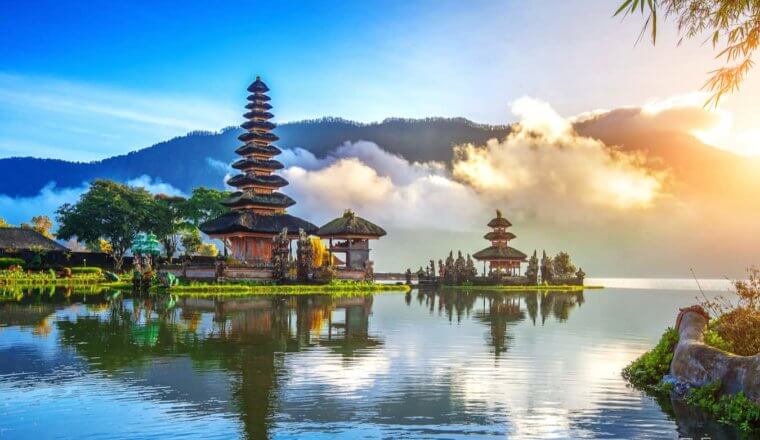
The 6 Best Hostels in Bali
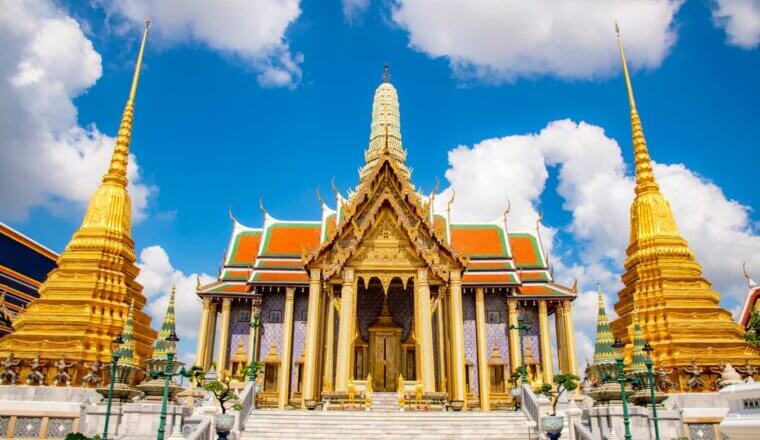
The 22 Best Things to Do in Bangkok
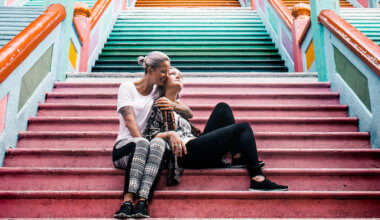
5 LGBTQ Travel Tips for Asia

Is Southeast Asia Safe for Travelers?
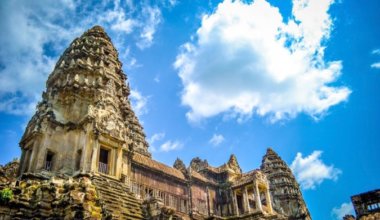
Backpacking Cambodia: 3 Suggested Itineraries for Your Trip
Get my best stuff sent straight to you, pin it on pinterest.
- Where To Stay
- Transportation
- Booking Resources
- Related Blogs

Plan Your Trip
- 01 Fill in details ranging from your desired experience to the amount of people you are traveling with.
- 02 Based on your answers, discover destinations and experiences tailored to you.
- 03 Explore each suggestion
Follow the step by step with what you would like to experience for your next trip through the following 4 questions.
Quick Links
- Intra-ASEAN Tourism Toolkit Download
- Tourism Packages
- Guidelines on Self-Drive
- Facts & Planning
- Visa & Immigration
- Suggested Itineraries
- Download Video
- Download Logo
- A Destination For Every Dream
Stay updated on Covid-19 in Southeast Asia. For more information, click here .
ASEAN Ecotourism
Explore Guides
Published on May 1, 2015

As travel to Southeast Asia continues to rise – an estimated nearly 100 million tourists visited the region in 2014 – many visitors are forgoing traditional packages and chain hotels and instead discovering the nascent ecotourism market.
Ecotourism is broadly defined as “responsible” or “ethical” travel, during which tourists try their best to minimize environmental impact and ensure their spending and presence benefits the local community. This niche market has grown steadily in recent years.
Though still a niche market, ecotourism is providing a myriad of revenue-generating options for locals of ecotourism destinations. Micro-businesses throughout Southeast Asia are therefore beginning to offer local communities financial incentives to protect their environments as they take advantage of the region’s growing ecotourism industry.
Southeast Asia remains one of the top tourist destinations in the world for a number of reasons. Not only does it contain some of the most primeval forests known to still exist, but it contains a rich cultural heritage that is founded upon the sustainable use of the land. Tourists will find that they can fish, trek, mountaineer and kayak through some of the most pristine habitat on Earth. There are many animals in this part of the world that are endemic to their respective habitats, making Southeast Asia a bastion for those looking to see rare and endangered animals.
As the laws governing the sustainable use of resources and land begin to take hold, so too does further ecotourism development. Some of the countries in this region have even gone so far as to officially state that their conservation strategies have come about in direct response to the rise of the ecotourism industry.
In order to draw more tourism and help preserve the natural beautiful settings of Southeast Asia, many countries are designing conservation or eco-friendly resorts and holiday packages. This effort will entice travelers, reduces costs for the resorts and of course have less impact on the environment so future generations can visit and enjoy the natural beauty of these lands. Thailand, Cambodia, Lao PDR, Viet Nam, Malaysia, Indonesia and the Philippines are the ones that have taken the most to these projects and innovations. These countries are at a cross roads of sorts; they want to bring in more tourism but that same income can have a negative impact on the picturesque environment around them. The joint effort of these countries can improve the environment and economy with a focus on eco-development and growth.
The region of Southeast Asia has so much to offer to its visitors. To Western tourists, it can seem like an expensive area to visit, but for those who need a holiday loan to make it happen, there are plenty of offers always available. As airline prices decrease and the awareness of the fragility of the environment increases, now may be a great time to see this stunning part of the world with a clear conscience. And once you’ve seen the natural beauty of Southeast Asia, you’ll know why it’s so important to preserve it. The region is ready and waiting for “green” travelers, so what are you waiting for?

15 Best Places to Visit in Southeast Asia
Written by Diana Bocco Updated Jul 13, 2022 We may earn a commission from affiliate links ( )
The countries that fall in the Southeast Asia region have so much going for them, it's almost impossible to keep them off anybody's travel bucket list . From white, soft beaches and major cities to the rich history, culture, and the must-try food, this part of the world has something for everybody.
While some destinations, such as Thailand's beaches and islands and the majestic Angkor Wat in Cambodia, are known everywhere, some places in Southeast Asia remain more elusive and off the main tourist radar. This gives visitors a chance to mix things up – to go with the crowds to see the most popular spots, but also make time to discover new and different corners of Southeast Asia.
Whatever your heart is set on, here is a list of the best places to visit in Southeast Asia.
1. Angkor Wat, Cambodia
2. ha long bay, vietnam, 3. koh samui, thailand, 4. boracay, philippines, 5. bagan, myanmar, 6. kuala lumpur, malaysia, 7. bangkok, thailand, 8. singapore, 9. yangon, myanmar, 10. luang prabang, laos, 11. palawan island, philippines, 12. tegalalang rice terraces, bali, 13. komodo island, indonesia, 14. chiang mai, thailand, 15. hanoi, vietnam, map of places to visit in southeast asia.
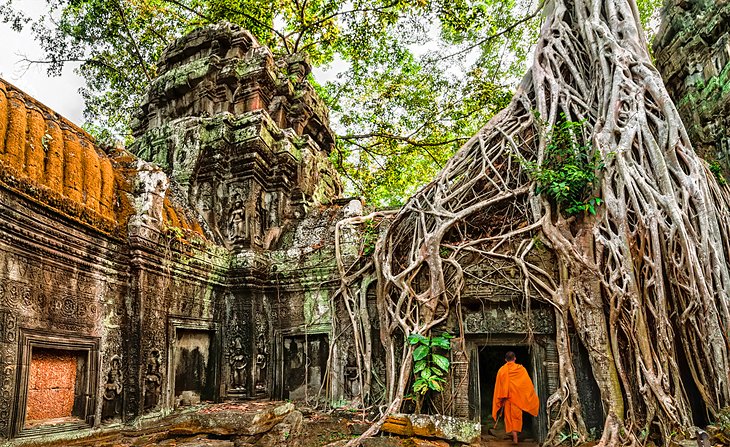
Located in northwestern Cambodia, the city is best known for being the gateway to the Angkor region, but Siem Reap has much to offer on its own. A mix of Chinese and colonial architecture gives the city a unique vibe, where countryside residents and old motorbikes blend with a vibrant café culture and a modern club scene.
Siem Reap is home to two important museums: The Cambodia Landmine Museum and Relief Center , which offers a chance to learn more about landmines and their ongoing impact on Cambodia and other Asian countries, and the War Museum , which covers the involvement of Cambodia in several wars.
There are also a number of massive markets in the city, including Psah Chas, which caters to both locals and tourists with a variety of souvenirs, fresh food, and more.
Angkor Wat , the largest religious monument and one of the top World Heritage Sites , lies less than six kilometers north of Siem Reap. The ruins of this 12 th -century temple complex cover a space of over 162 hectares, with hundreds of structures built using sandstone blocks. There are a number of other temples, also built in Khmer style, in the area, including Angkor Thom, Ta Prohm, and Pre Rup.
- Best Places to Visit in Cambodia
- Top-Rated Tourist Attractions in Siem Reap
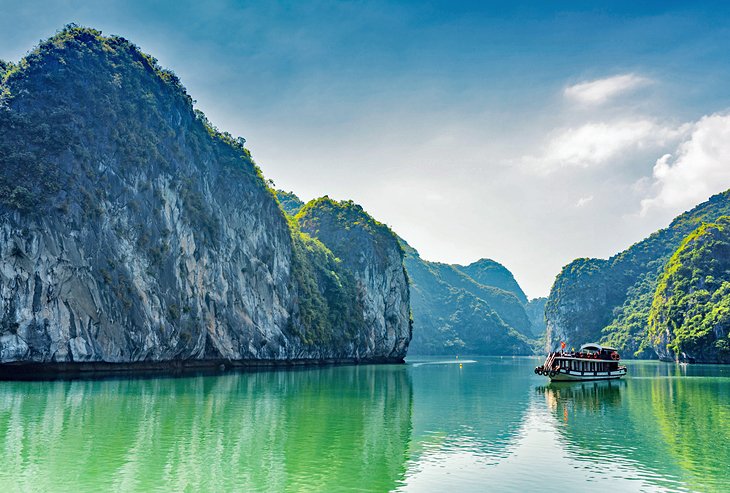
Ha Long Bay consists of a group of islands and limestone karsts that have been declared a UNESCO World Heritage Site . Many of the islands are actually tall monolithic cliffs that cannot be walked on, covered in green, lush jungle. Some of these are hollow and house beautiful caves. Dau Go Cave (Wooden Stake Cave) is a good example, a massive cave with three main chambers, multicolored stalagmites, and rock paintings. Many of the islands also have their own enclosed lakes.
Of the almost 2,000 islands here, less than 40 have permanent residents, often in the form of small communities that live in floating houses and fishing villages.
Ha Long Bay's largest island, Cat Ba , is the most common overnight stop for tourists coming to Ha Long Bay for cruises and tours. Kayaking the turquoise-green waters of the bay is a popular activity here, as well as cruising the bay in traditional junk boats.
- Read More: Things to Do in Halong Bay
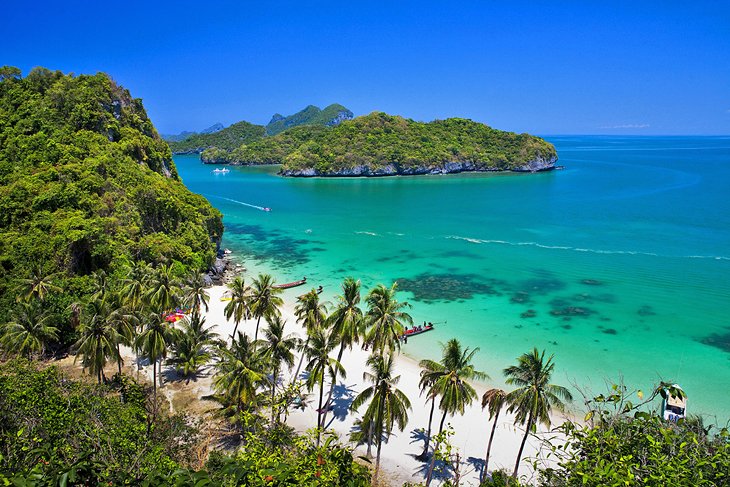
While Koh Samui has always been a beloved destination for sun worshippers and snorkelers, the crowd the island attracts has changed over the years.
Once a favorite of backpackers, Koh Samui has undergone a remarkable transformation. It now boasts high-end resorts, posh spas, and some of the whitest palm-fringed beaches in Thailand. Chaweng and Lamai beaches attract the bulk of the travelers and are well developed, clean, and full of activities, including opportunities to sail, scuba dive, and swim.
While most visitors come to Koh Samui for the beach , there's much more to see and do. Take time to explore the mangroves and hidden lakes of Ang Thong Marine National Park ; the 12-meter-tall golden Buddha at the hilltop Big Buddha shrine; and the Na Muang waterfalls, reached after a trek uphill through thick tropical forest.
Read More: Top-Rated Attractions & Things to Do in Koh Samui
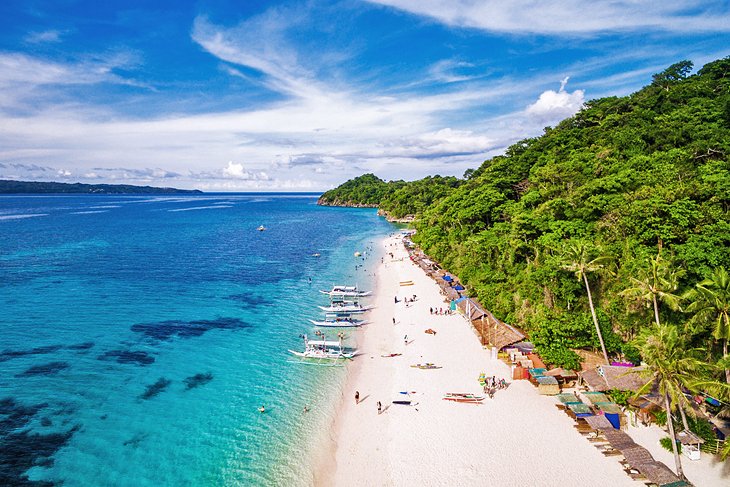
The tiny island of Boracay is just across the water from Panay Island, one of the Philippines' largest islands. Despite being only 10 square kilometers in size, Boracay attracts thousands of visitors a year, who come here for the four-kilometer-long beach and its powdery white sands that wash right into the turquoise waters and the sailboats rocking away on the waves. This is one of the best beaches in the Philippines .
In addition to scuba diving and snorkeling, Boracay is well-known for its parasailing, kiteboarding, and swimming-and, perhaps more unexpectedly, its cliff diving . Diving boards ranging from three to 15 meters high over the water are placed on certain parts of the island, with lifeguards waiting and watching as divers fly up in the air over the mirror-like waters below.
- Read More: Top-Rated Tourist Attractions & Things to Do in the Philippines
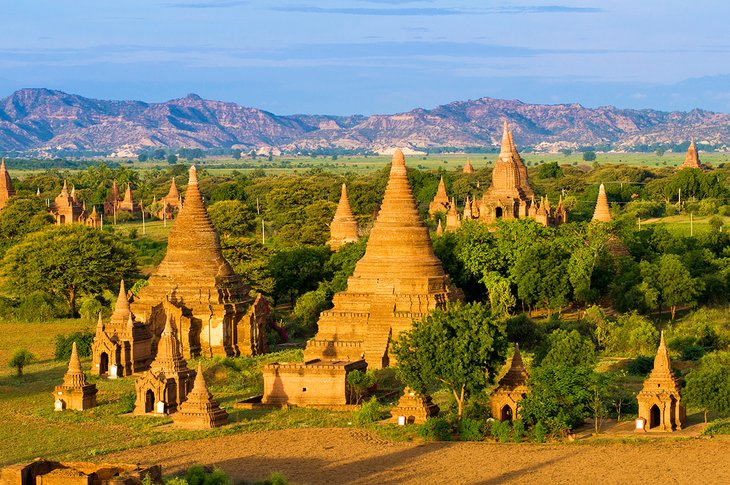
A UNESCO World Heritage Site , the ancient city of Bagan was once the capital of the first kingdom of Myanmar. Between the 11th and 13th century, over 10,000 pagodas and Buddhist temples were built here. Over 3,500 still stand today in the area known as the Bagan Archaeological Zone, which spreads over 41 square kilometers.
One of the most famous temples in Bagan is the Ananda Temple , a Buddhist temple built in a unique fusion of Mon and Indian styles. Dhammayangyi Temple , the largest religious structure in Bagan, is visible from all corners of the city and is famous for its mysterious bricked up interior.
The Bagan Archaeological Museum , located within the Archaeological Zone, is home to artifacts recovered from the area, such as stucco works, lots of lacquer and metal artifacts, and stone sculptures, including a Rosetta Stone dating back 1,000 years.
Just outside the Bagan Archeological Zone sits the sleepy village of Myinkaba, famous for the ancient art of lacquerware. Visitors can stop by workshops to see items being painted by hand, and then grab some souvenirs at the many shops around.
For the most famous sunset-viewing spot in town, head to the white Shwesandaw Paya pagoda. Here, you can climb part of the building to catch the 360-degree views over the hills and other temples around.
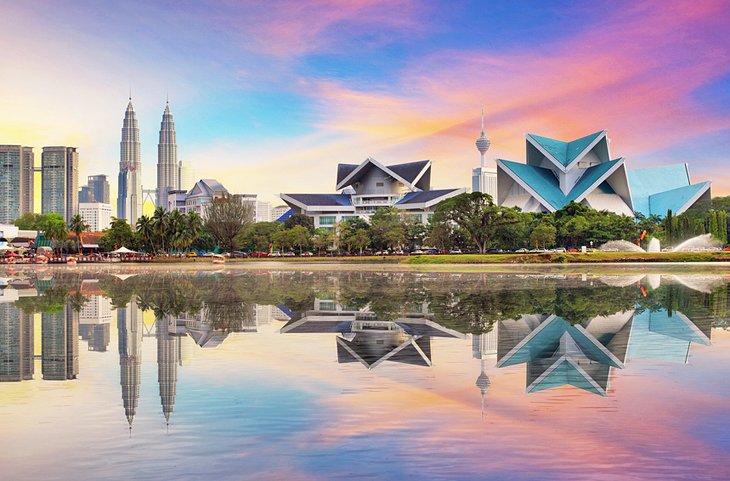
Malaysia's capital is a city of contrasts: the cultural and financial heart of the nation, with magnificent skyscrapers and three of the world's largest shopping centers-but also a great example of colonial architecture, Malay Islamic details, and old Chinese shophouses. Walking through the city is a great way to appreciate the eclectic look of this relatively new Asian capital and see the different cultures and styles melting into each other.
KL is home to the tallest twin buildings in the world , the Petronas Towers – architectural marvels of steel and glass that stand 452 meters tall. The towers are surrounded by a large urban park and are home to a massive shopping center with over 350 stores, a theater housing the Malaysian Philharmonic Orchestra, and even an underwater aquarium.
KL is a very green city, with many parks, gardens, and open spaces everywhere you go. The 92-hectare Lake Gardens is a major urban park that contains a butterfly park, the world's largest aviary bird park , and an orchid garden. You'll also find three forest reserves within the city, perfect for trekking and catching sight of rare fauna.
The limestone Batu Caves (which contain several Hindu shrines); the Cameron Highlands with its tea plantations ; and the colorful town of Malacca, established by Portuguese settlers, are all great day-trip destinations from Kuala Lumpur.
- Top-Rated Tourist Attractions in Kuala Lumpur
- Top-Rated Tourist Attractions in Malaysia
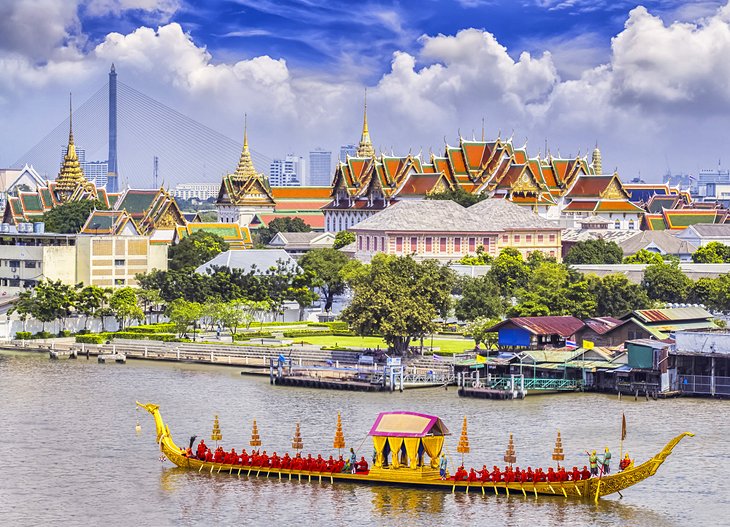
Thailand's capital has lots going for it. Not only is this the main gateway for all major destinations within the country, but this cosmopolitan city also has much to offer on its own. With over 24 million visitors arriving here every year, this is also one of the top cities in the world to visit .
Sitting right on the Chao Phraya River and full of stunning skyscrapers that share the sidewalk with major Buddhist temples and popular cafés and hangouts, Bangkok's multi-faceted sights will please a wide range of visitors, from those looking for excitement and shopping opportunities, as well as those wanting to dive into cultural and historical landmarks.
Even tourists who are only here briefly on their way to the islands should make time to visit the Grand Palace , a former royal residence converted into a museum. For those with more time in the capital city, the royal Vimanmek Mansion (the largest teak building in the world) and the Jim Thompson House, a museum dedicated to the American businessman who revolutionized the local silk industry, are also worth a visit.
For a completely different view of the city, get on a classic tuk-tuk taxi or jump on a water bus.
- Read More: Top-Rated Tourist Attractions in Bangkok
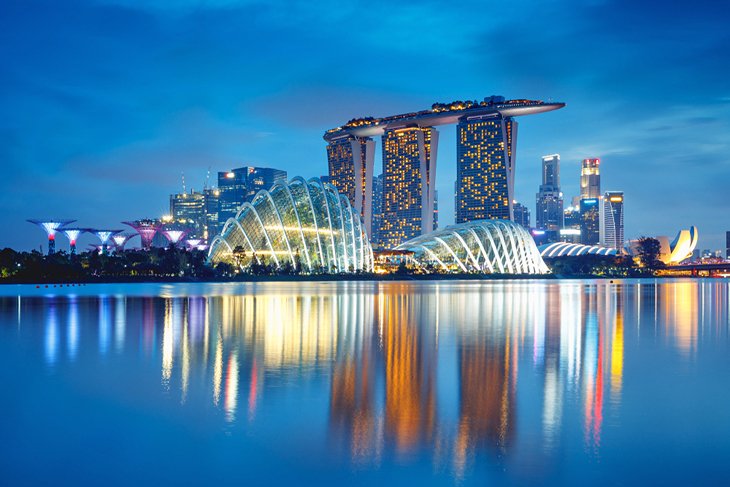
Singapore is a unique spot in Southeast Asia. This island city-state is modern and cosmopolitan , a place where multi-story shopping centers mix with stunning and unexpected natural attractions.
The Marina Bay Sands , an integrated resort, is a good example of that-it offers not only a hotel, but also a museum, art-science exhibits, and the best terraced views over the city and bay from the infinity pool set on their roof.
Sentosa Island is another example, an entertainment complex that includes everything from a two-kilometer-long beach and a restored coastal fort to Southeast Asia's first 4D theater, a Butterfly Park and Insect Kingdom, and even a Universal Studios Singapore theme park.
Singapore's airport has been named the best in the world, and it's an attraction all in itself, home to the world's tallest indoor waterfall, a five-story tall indoor garden, a mirror and haze maze, and a massive butterfly garden with over 1,000 species flying free in tropical greenery.
- Top-Rated Tourist Attractions in Singapore
- Best Beaches in Singapore
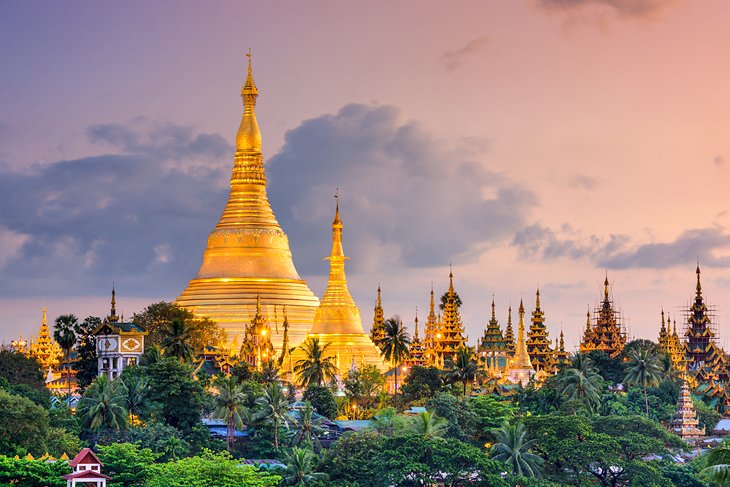
Up until 2011, Myanmar offered only limited access to tourists because of the five-decade-long military dictatorship that commanded the country-so now that it's finally possible to visit, and before it becomes crazy busy with tourists, you definitely should see this fascinating destination.
Yangon was the capital of Myanmar (or Burma) until 2006, when the military government moved it somewhere else. Since the country was under military dictatorship for so long, the city suffered a lot of issues and still boasts a lot of buildings in decay and with inadequate infrastructure.
Still, Yangon is full of beautiful architecture in the form of colonial-era buildings centered around the 2,600-year-old Sule Pagoda . It is the gilded Shwedagon Pagoda (also known as the Golden Pagoda) that dominates the skyline of the city, however-the most sacred Buddhist pagoda in the country, believed to contain relics of the last four Buddhas.
Visitors should make time to visit the Bogyoke Aung San Market , where stalls sell everything from antiques and local handicrafts to Burmese jade, local delicacies, and even natural medicine products. Another great must-do is the Yangon Circular Train , which runs on a 46-kilometer-long loop around Yangon, offering a unique insight into the real daily life of Burmese people.
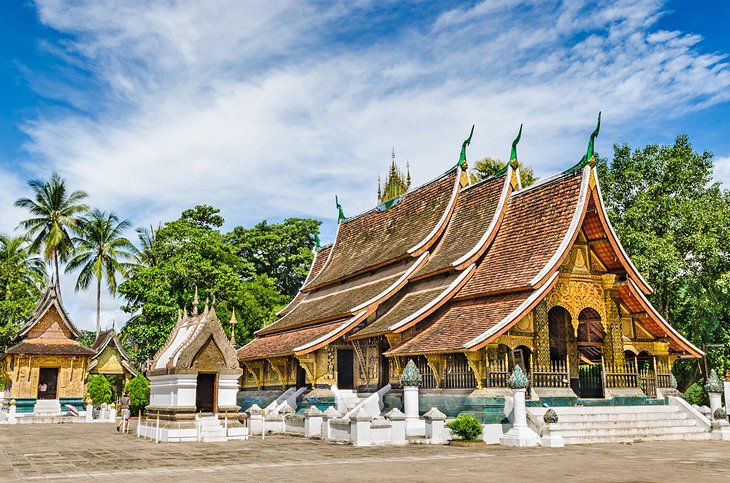
This northern city in Laos is surrounded by a number of villages that together form the UNESCO Town Of Luang Prabang World Heritage Site . Recognized for its mix of rural, French colonial, and religious architecture and heritage, the city is one of Laos' most visited and certainly most beautiful.
Luang Prabang sits at the confluence of the Mekong and Nam Khan rivers and is home to many temples-including Wat Chom Si shrine, located at the top of Mount Phou Si and overlooking the town. Alms ceremonies (where monks take to the streets to ask for food) are so common here that in the early morning, the entire town is covered in streams of orange as the monks make their way through the streets.
Just outside the city, the Bear Rescue Centre (which specializes in helping sun bears rescued from poachers) and the multi-tiered Kuang Si Falls are both worth a visit. If you're up for some trekking, head out to the Pak Ou Caves , famous for their hundreds of miniature Buddha sculptures.
Read More: Top-Rated Tourist Attractions & Things to Do in Laos
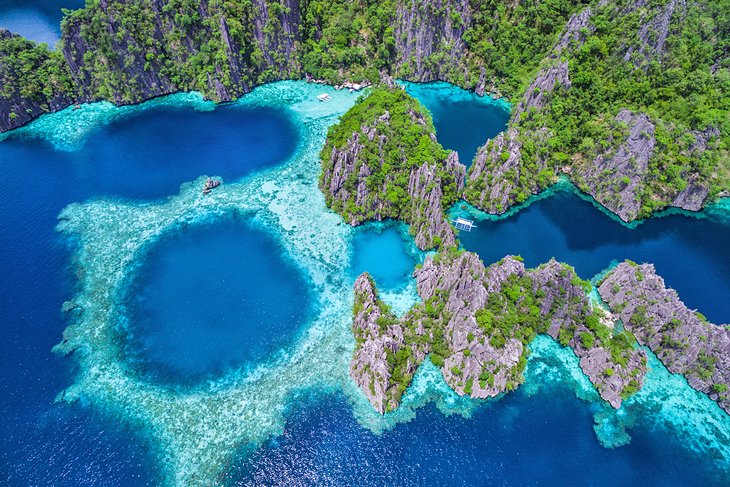
Palawan has been named one of the most beautiful islands in the world so many times, it's hard to ignore its beauty. Technically speaking, Palawan remains under-developed, which means fewer high-end hotels but also slow, sustainable growth to protect the virgin forests, green jungle mountains, and wonderful wildlife.
Palawan is surrounded by quiet turquoise waters that are ideal for snorkeling, swimming, and kayaking. Lots of smaller islands dot the ocean around Palawan, and you can spend an entire day island-hopping and still not see all the amazing beauty the area has to offer.
Miniloc Island , a rustic escape northwest of Palawan, is home to a number of lagoons and soft sandy beaches you can reach on your own or via a motorized water taxi.
For those who prefer underwater adventures, the waters around Palawan hold six shipwrecks of coral-encrusted Japanese ships sunk during WWII. Divers can slip in and out of the engine rooms, bomb holes, and portholes, swimming with fish and turtles-some of the wrecks are as deep as 42 meters.
- Read More: Best Places to Visit in the Philippines
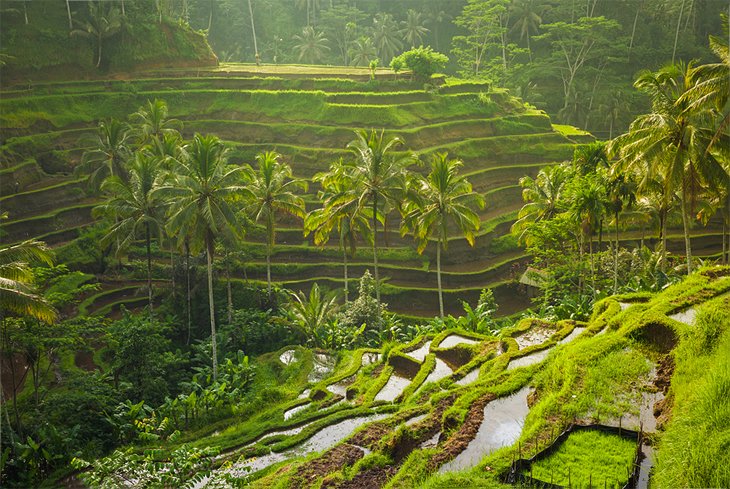
Say "Bali" and people think soft white beaches, corals, and snorkeling-and while it's true that Bali has plenty of beautiful destinations on the sand (including the Nusa Penida beach, with cliffs that resemble the head of the T-Rex), that's not all you can see here. In fact, the lush, green, terraced rice fields in the province of Ubud are just as stunning.
Bali's farmers have been setting rice paddies on terraces for centuries to deal with the hilly terrain of the area-and these areas make for stunning landscapes.
For a donation entry fee that equals pennies, visitors can walk the terraces here for hours, as the green fields extend far beyond what the eye can see. Those who arrive early in the morning will have the place almost to themselves, the soft sound of the rice fields swishing in the wind.
Visitors to Ubud can also check out the Ubud Monkey Forest ; a macaque sanctuary; the traditional royal palace Puri Saren Agung; and the gardens of Pura Taman Saraswati, a water temple famous for its lotus pond and volcanic tuff sculptures of deities.
- Read More: Top-Rated Tourist Attractions in Bali
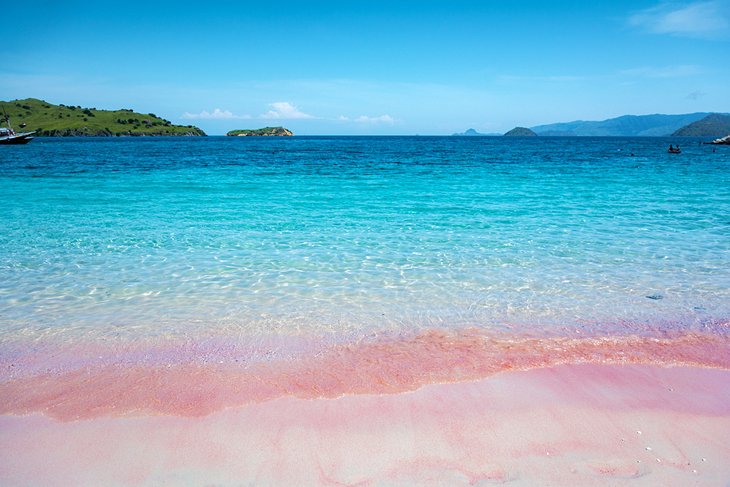
Komodo Island is more than "just one" of the over 17,000 islands that make up Indonesia. This rugged island of just under 400 square kilometers is home to the world's largest lizard , the Komodo dragon. In fact, the population of Komodo dragons here is double the population of permanent human inhabitants, making for a unique sight as you walk through the island's volcanic hills and forests.
Komodo Island is also home to a wide variety of wet ecosystems, including mangrove forests and coral reefs, both of which attract lots of travelers looking to explore, dive, or kayak around the island.
The main sightseeing attraction here, however, is Pantai Merah , one of only seven pink-sand beaches in the world. The cotton-candy sands are the result of an interesting natural phenomenon-when microorganisms, called foraminifera, that live in the coral die, their bright red shells are washed out on the beach and mix in with the white sand, creating the beautiful hue that attracts so many visitors.
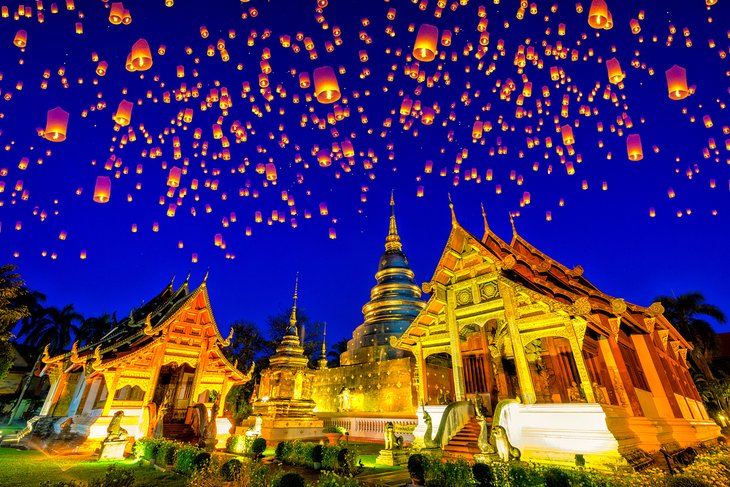
Thailand's northern city of Chiang Mai is often referred to as the cultural capital of the country. Once the seat of the former Lanna Kingdom, Chiang Mai is teeming with centuries-old temples, jungle-shrouded sanctuaries, and mountains in every direction.
A smaller and less chaotic city than Bangkok, Chiang Mai still attracts travelers from all over the world who come for the low-key lifestyle, nature, history, culture, restaurants, and budget-friendly hotels.
Backpackers often make Chiang Mai a main stop on their Thailand travels, as prices are much more attractive than down south on the beaches, and Chiang Mai is a jumping-off point from which to explore the various smaller hill communities that dot the mountains.
One of the must-see temples in Chiang Mai is Wat Phra That Doi Suthep, a golden hilltop shrine that overlooks the entire city below. One of the most sacred spots in Thailand, this temple complex is simply stunning. Visit just before sunset when the monks begin to chant. It is the most magical time to be at the temple.
From Chiang Mai, travelers often set out to explore Mae Hong Son province to the northwest, one of Thailand's most historic provinces, known for its smaller villages and ancient tribal communities.
Accommodation: Top-Rated Places to Stay in Chiang Mai
Read More: Top-Rated Attractions & Things To Do in Chiang Mai
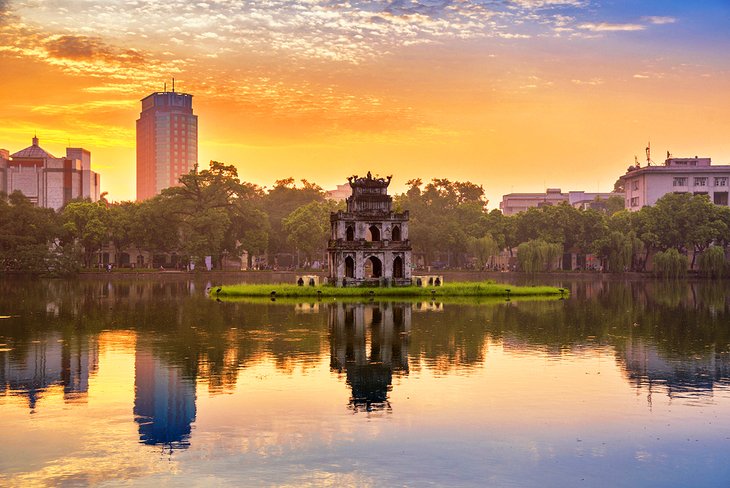
Vietnam's capital sits at an unusual precipice between historic and modern. The thriving city only opened to tourism as recently as the 1990s. Today, Hanoi is a buzzing, chaotic, energetic, beautiful amalgamation of ancient history, a war-torn past, and a modern future. It's one of the best places to visit in Vietnam to really learn about what makes the country tick.
Start in the old quarter, where you will find a heady mix of street vendors, cafés, restaurants, and more motorbikes than you can possibly count. But in between the zipping, zooming, pulsing chaos are pockets of tranquility and peace. Take Hoan Kiem Lake, for example, a 12-hectare lake in the heart of the historic city center. Around the lake are beautiful pagoda gateways, one of which is How Phong Pagoda, one of Hanoi's must-see sites .
The Temple of Literature is one of the most beautiful buildings in the city, too. It is a Confucian temple that was built as a university that dates back to the 11th century. Hanoi is also the city where visitors will find the tomb of Ho Chi Minh, the Hoa Lo Prison Museum, and the Military History Museum.
More Related Articles on PlanetWare.com
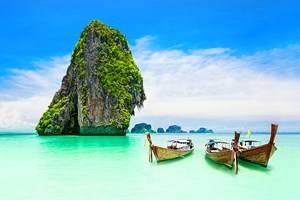
More Great Destinations in Southeast Asia: When it comes to choosing the best places to visit in SE Asia, the list is long and the decision can be tough. If you are traveling through Thailand , consider heading up to Chiang Mai or head over to the Andaman Sea to explore places like the Phi Phi Islands or Phuket , and the beautiful beaches in Krabi .

More on Thailand
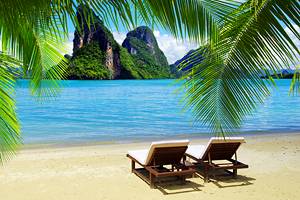

- Amazon River
- Galápagos Islands
- Indonesian Archipelago
- Mekong River
- Irrawaddy River
- India Cruises
- Pacific Coast
- Patagonia Cruises
- Machu Picchu
- Iguazu Falls
- Southeast Asia
- Southeast Asia Travel Guide
Top 10 Tourist Attractions In Southeast Asia You Have To See
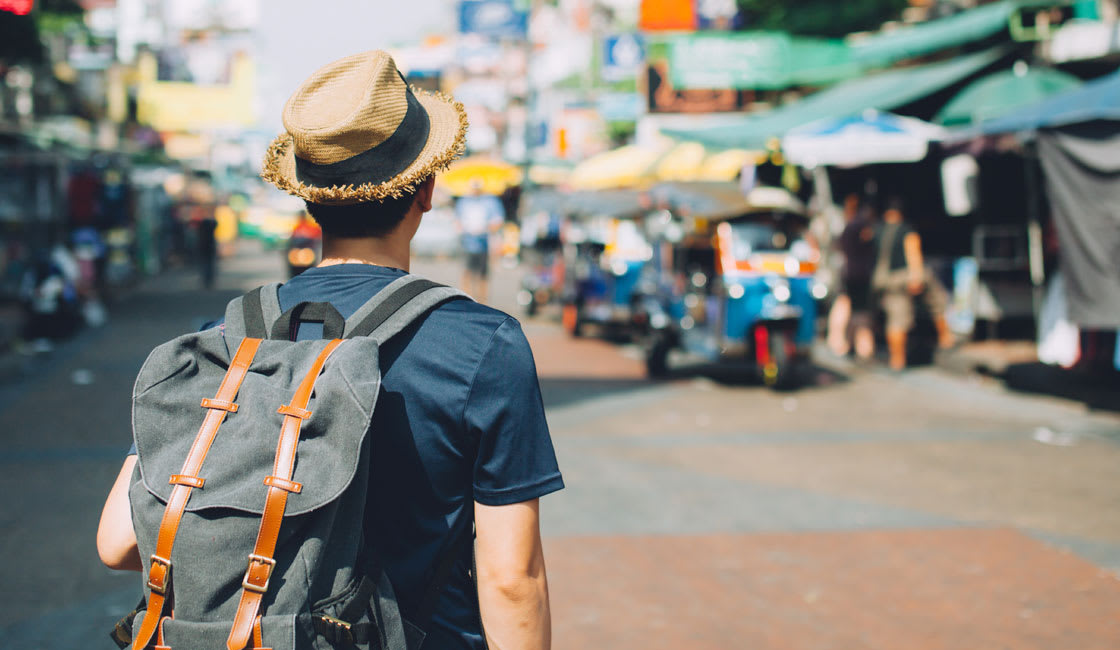
There are just so many diverse and alluring attractions – natural and man-made – across this fantastic region, that selecting the best Southeast Asia attractions could be classed as a near-on impossible task – albeit fascinating. However, we’ve managed to compile some top attractions in Southeast Asia, covering our highlight countries, that will hopefully inspire your travels in this wondrous corner of the globe!
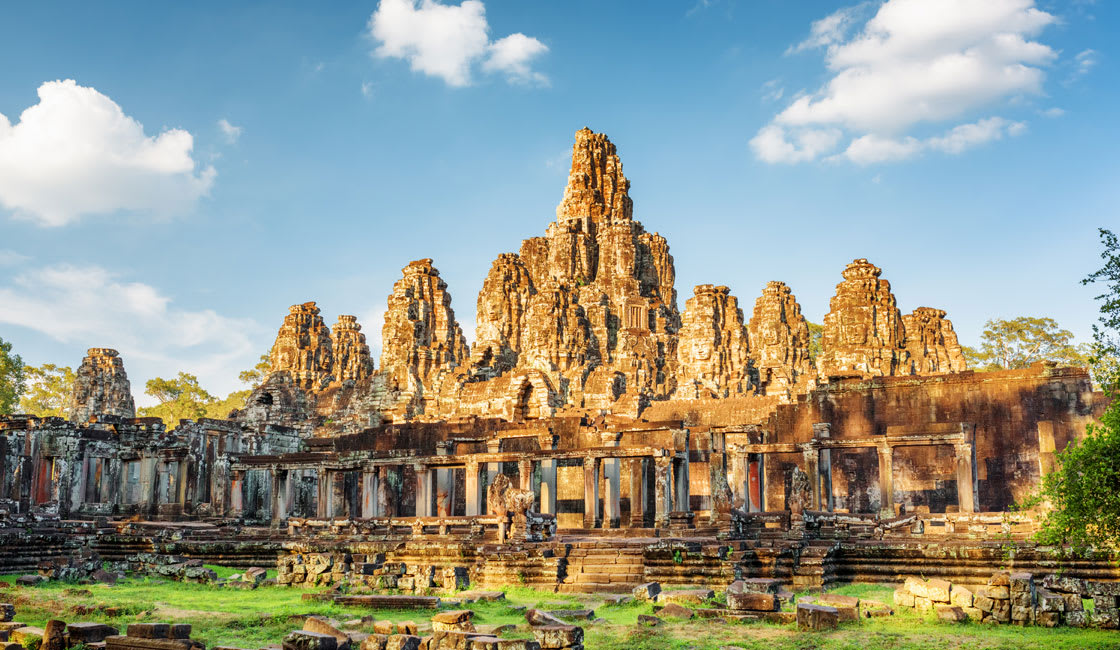
1. Angkor Wat, Cambodia
Cambodia’s star attraction is stupendous Angkor Wat, set within Siem Reap’s Angkor Archaeological Park, a World Heritage Site containing hundreds of ancient temples and monuments of an ancient Khmer Empire. Built in the 12th century , Angkor Wat is one of the world’s greatest ancient wonders and largest religious monuments, a testament to the impressive Khmer civilization and a revered national symbol – its iconic five-tower structure even features on the Cambodian flag.
This incredible sandstone temple complex takes a good few hours, even days to explore , soaking up all the incredible architectural detail and history. One of the best ways to appreciate Angkor Wat’s magnificence is at dawn, watching the sun casting its auburn-orange rays over the silhouetted towers and lotus flower-strewn moat.
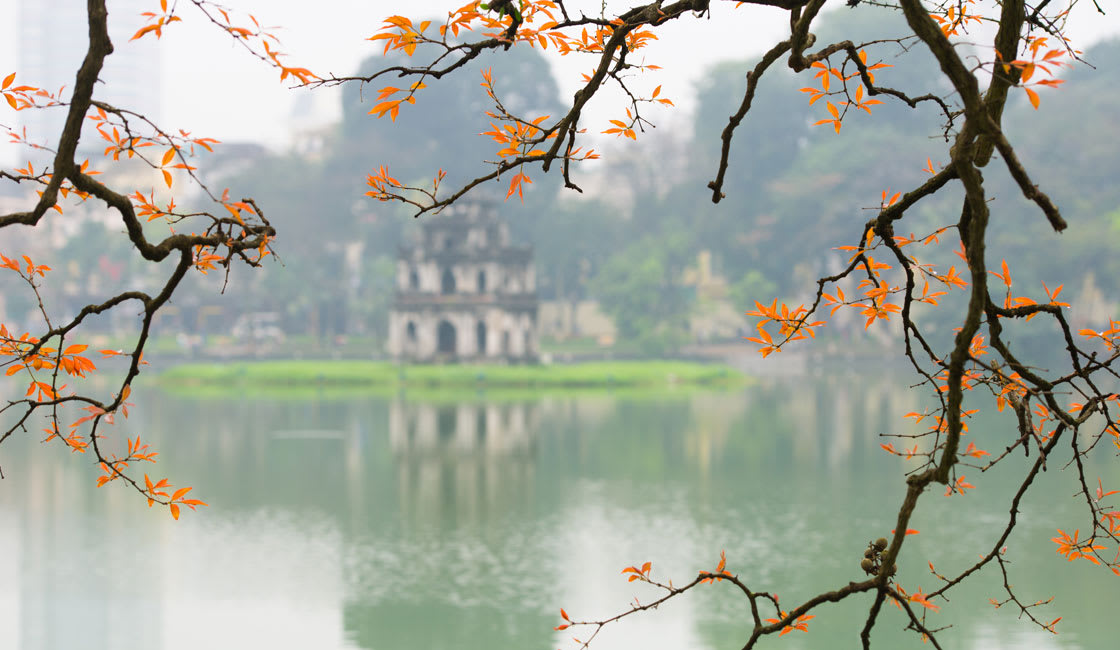
2. Hoan Kiem Lake, Hanoi, Vietnam
There is a big chance that you will spend some time in Hanoi on your Vietnam endeavors . Hoan Kiem lake is an unexpected oasis of tranquility and beauty at the heart – literally – of Hanoi, Vietnam’s thousand-year-old capital. One of many lakes in Hanoi, Hoan Kiem is the most beloved, awarded ‘Special National Relic’ status. Translating as ‘Lake of the Restored Sword’ and steeped in legends, today, ringed by age-old trees and picturesque with Tortoise Tower and Ngoc Son Temple set on two separate islets, Hoan Kiem Lake makes a lovely place to relax any time of day.
Be sure, however, to come at sunrise, when Hanoians flock here to exercise on the lake’s shaded shores and on weekend evenings when the usually frenetic streets surrounding the lake are off-limits to traffic. Hoan Kiem’s vibrant pedestrianized zone is thronged with locals and visitors strolling past the open-air music performances and cultural activities.
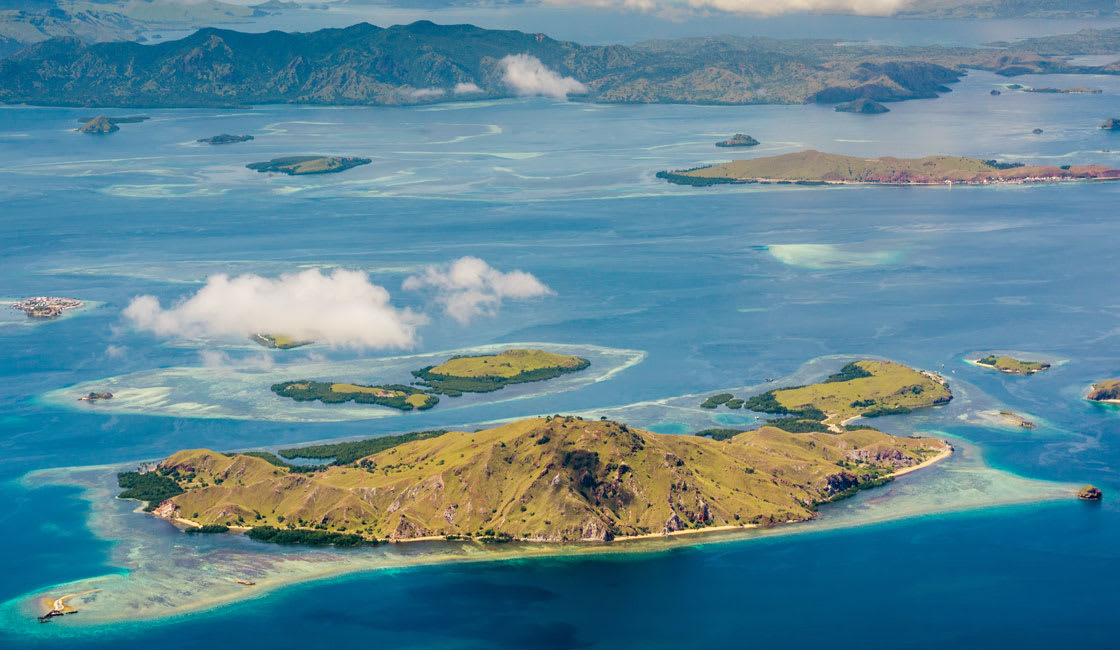
3. Komodo National Park, Indonesia
As the name suggests, Komodo National Park, a dramatically beautiful cluster of islands amid the Indonesian archipelago, is where you can spot the elusive Komodo Dragons in their natural habitat. It is here, especially on the Park’s main islands, Komodo, Padar, and Rinca, that the now endangered Komodo Dragon has peacefully existed for millions of years, the only place on the planet where the planet’s largest reptiles can be observed.
Take a guided tour in the volcanic hills and rainforests for wild encounters with these dinosaur throwbacks. However, if fork-tongued dragons aren’t your thing, this Park, embedded within the Coral Triangle, boasts some of the planet’s richest and pristine marine environments with astonishing biodiversity – providing some of the most spectacular diving sites imaginable. And amongst dazzling white sand beaches, a stunning pink beach, one of only seven on the planet!
Komodo is a national park, so you will be most likely staying on the island of Flores, with Labuan Bajo being the nearest port. Some amazing cruises can take you deep into the park – to dive, kayak, or meet the dragons. Otherwise, rent a local boat or a guided tour, as you can’t explore the area on your own.
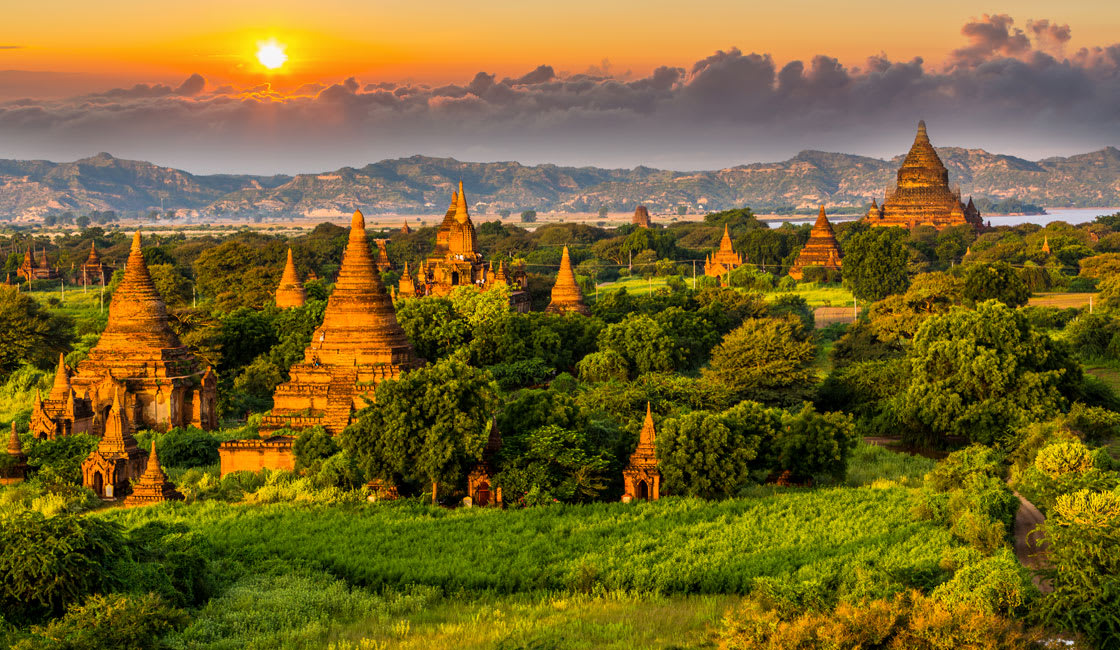
4. The Temples at Bagan, Myanmar
Explorer Marco Polo once described Bagan, the ancient capital of several Burmese Kingdoms in central Myanmar, as one of the ‘one of the world’s finest sights’ – and there’s a good chance you will too, once you see this otherworldly scene . From the original 10,000 or so temples, stupas, pagodas and monuments constructed between the 9th and 13th centuries, only around 2,200 still stand today.
However, sprawled across vast plains beside the Irrawaddy River, Bagan’s collection of religious sites now form one of Asia’s richest archaeological zones and a recently designated World Heritage Site, emanating an evocative sense of history like no other. Each of Bagan’s majestic treasures has its own unique story to tell, but all are superb examples of ancient Burmese architecture.
The best way to explore these ancient relics is by hot air balloon; the bird’s eye, panoramic views over Bagan’s dreamy plains is even more spectacular, timed as the sun dramatically rises or sets over the dozens of mist-shrouded spires.
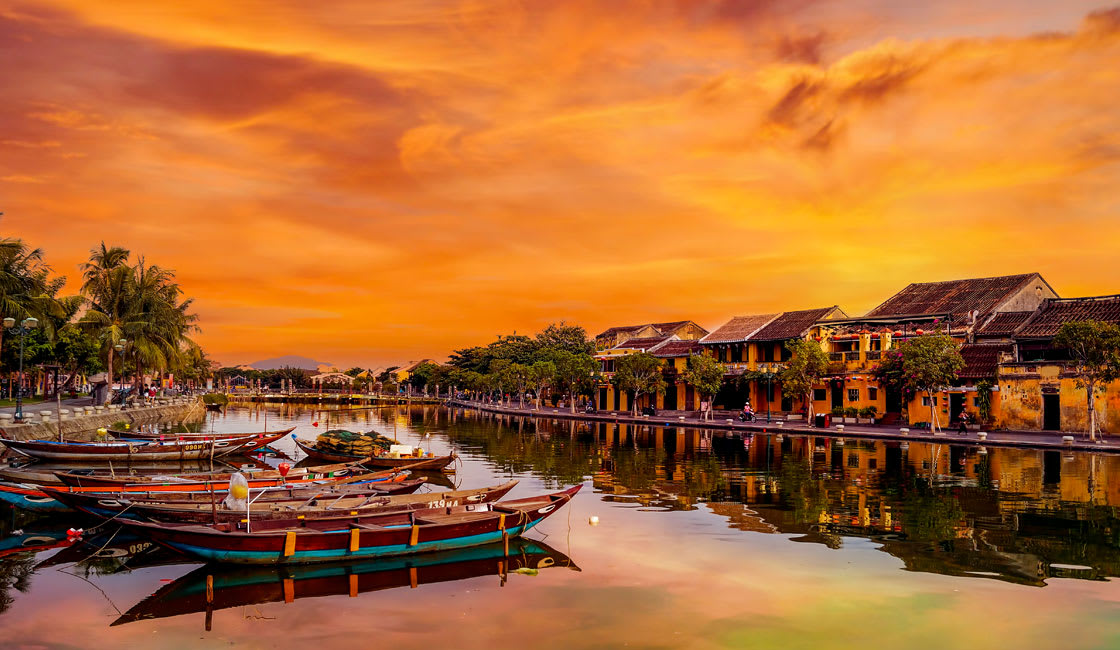
5. Hoi An Ancient Town, Vietnam
Formerly known as Faifo, Hoi An was once a thriving Silk Road trading port, dating back to the 16th century. Today, revered as one of Southeast Asia’s oldest towns and a designated World Heritage Site, utterly charming Hoi An ranks amongst Vietnam’s top drawcards. Set alongside picturesque Thu Bon River, the narrow streets of Hoi An’s beautifully preserved Ancient Town are crammed with centuries-old cultural treasures, historic sites, and quaint buildings, a hybrid of the port’s Chinese, European, and Japanese architectural legacies.
As a compact pedestrianized zone, the Ancient Town’s fascinating attractions are easily walkable, so too, the open-air restaurants lining the river, where you can watch the fishing boats chug past and sample the famed local delicacy, freshly grilled fish. This old quarter is at its most atmospheric at the monthly Full Moon Lantern Festival when the streets are beautifully aglow with hundreds of multi-colored silk lanterns and filled with joyous crowds and traditional festivities.
Hoi An airport is in Da Nang, central Vietnam, making it a great stopover between Hanoi and Saigon. Planning your Vietnamese holiday , do put Hoi An on the map of must-see places in Vietnam.
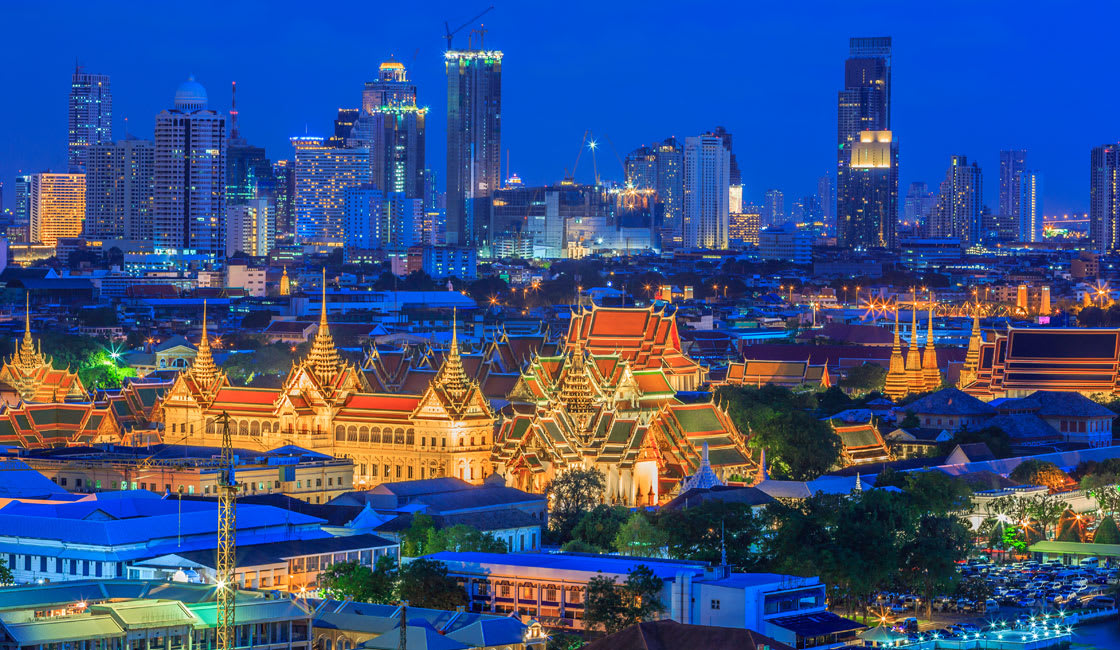
6. The Grand Palace, Bangkok, Thailand
Thailand’s dynamic capital, Bangkok, or ‘City of Angels,’ ranks as one of the world’s most popular city destinations, providing an endless list of things to see and do. It’s almost impossible to travel to Thailand without visiting Bangkok.
One of Bangkok’s top tourist attractions and most famous landmarks is the majestic Grand Palace, the official residence of Thai kings since 1782, with the monarch, his court, and royal government based in the sumptuous grounds until 1925.
Today, partially open to the public, the palace compound is still used to host royal ceremonies, official events, and state functions and remains the spiritual heart of the Thai Kingdom. Staggering in both historical significance and Thai craftsmanship, there are more than 100 impressive buildings here, including royal halls and pavilions, set around manicured gardens and courtyards. Part of the palace compound is dedicated to Wat Phra Kaew, or Temple of the Emerald Buddha, Thailand’s most sacred Buddhist site, housing a highly – revered Emerald Buddha image carved from a single block of jade that dates back to the 14th century.
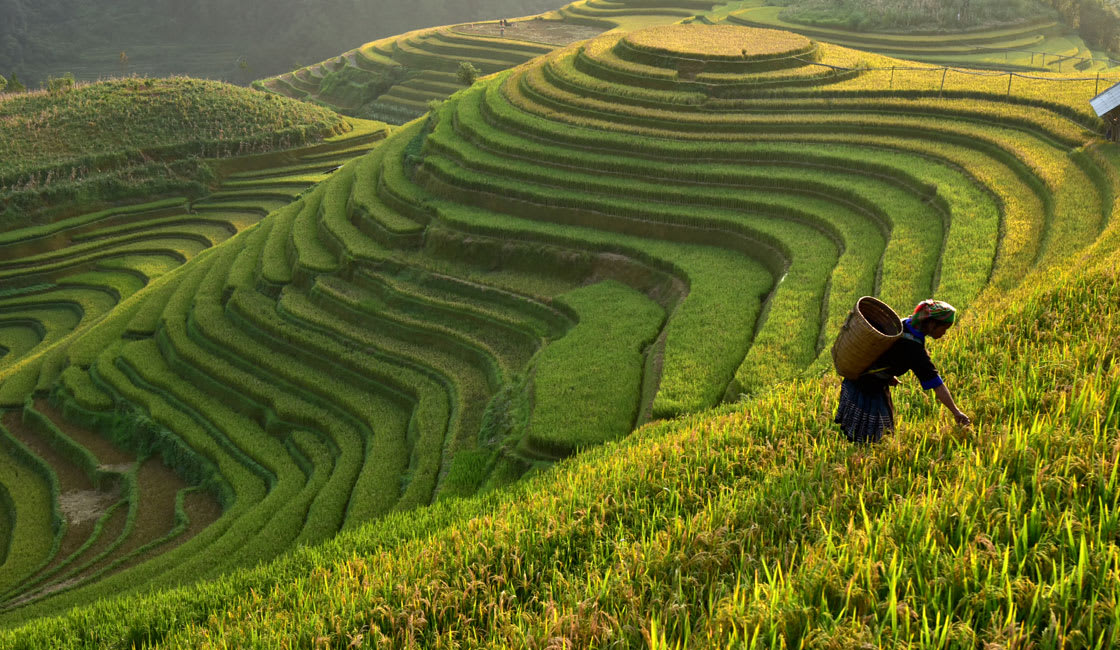
7. Rice fields of Bali, Indonesia
If you think of Bali, set in the Indonesian archipelago and one of the world’s leading holiday destinations , a number of iconic images come to mind. But perhaps emerald-green rice fields peppered with coconut palms, or terraced down idyllic hillsides, is the most quintessential Bali image of all. In fact, no visit to this ‘Island of the Gods’ is complete without marveling at these beautiful rice fields, or better still hiked through on early morning guided walks.
The omnipresent rice paddies are highly important to the island’s culinary heritage, a sacred component in Balinese Hindu beliefs and display ancient Subak culture (co-operative irrigation systems). No matter where you stay in Ubud, lush rice fields are never far away, but for the most striking terraced varieties, head to stunning Tegallalang, just outside town. The gorgeous s western regency of Tabanan Regency, is Bali’s rice bowl and where you’ll find Jatiluwih Rice Terraces, a spectacular World Heritage Site and Bali’s most celebrated rice fields, cascading down volcanic foothills that meet the sea.
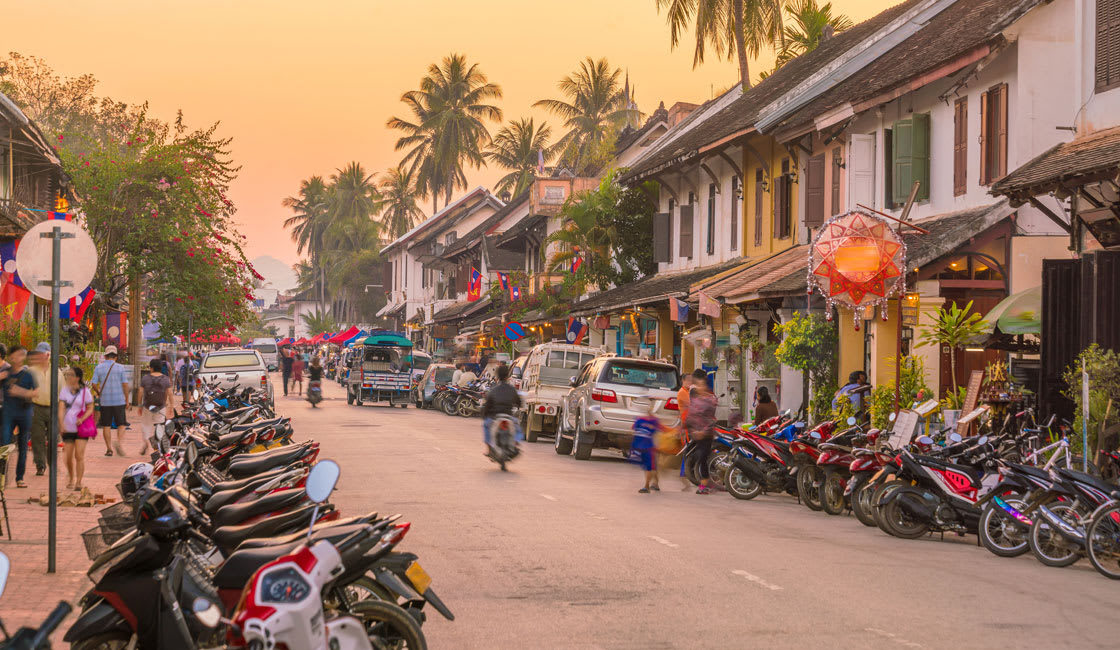
8. Luang Prabang Old Town, Laos
Enchanting Luang Prabang tops most lists of favorite destinations in Southeast Asia and is an essential part of any trip to Laos. In fact, this former royal capital, nestled at the confluence of two rivers surrounded by mountains, is so mesmerizing, countless travelers have ended up staying far longer than expected. The town’s infectiously relaxed ambiance, ethereal setting, and centuries-old Buddhist traditions and spirituality are just some of the reasons for Luang Prabang’s popularity.
But mainly, the well-preserved Old Town, not a tourist attraction per se, but its atmospheric narrow streets are home to many cultural treasures, striking Indochinese and Lao architecture, and key landmarks. Highlights include the former stately residence of Laos royalty, 30-plus golden pagodas, of which, the most spectacular is Wat Xieng Thong, and sunset watching from the summit of Mount Phousi.
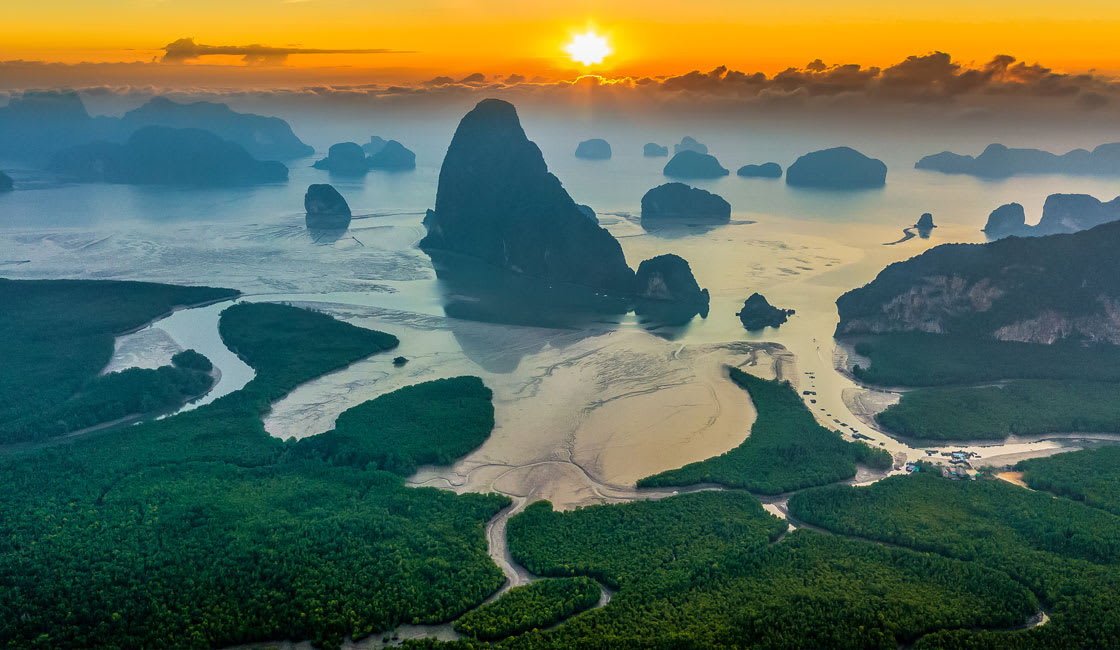
9. Phang Nga Bay, Thailand
Southwest Thailand’s sparkling Andaman Sea is renowned for its breathtaking islands, bay, and beaches. One of the most popular natural attractions is Phang Nga Bay, distinctive for its sheer limestone karsts and towering cliffs jutting out of the emerald-green sea. Many of the peculiar-shaped islets are uninhabited, revealing caves and pretty beach coves. The best way to savor Phang Nga Bay’s jaw-dropping scenery and abundant wildlife is on a leisurely boat tour, either a traditional longtail boat, speedboat, or private chartered yacht.
Protected by a marine national park, with calm, shallow waters, this bay is perfect for boating. The more adventurous should opt for sea-kayaking, paddling deep into hidden hongs – collapsed cave systems open to the sky and rich in flora and fauna. Don’t miss boating around the iconic pinnacle, ‘James Bond Island,’ so-named after featuring in the Bond movie, The Man with the Golden Gun. Its top-heavy formation is a spectacular wonder, as is the surrounding water world. Stop off at quiet coves and a fresh seafood lunch at Koh Panyee, a traditional Muslim fishing village built over the sea on stilts.
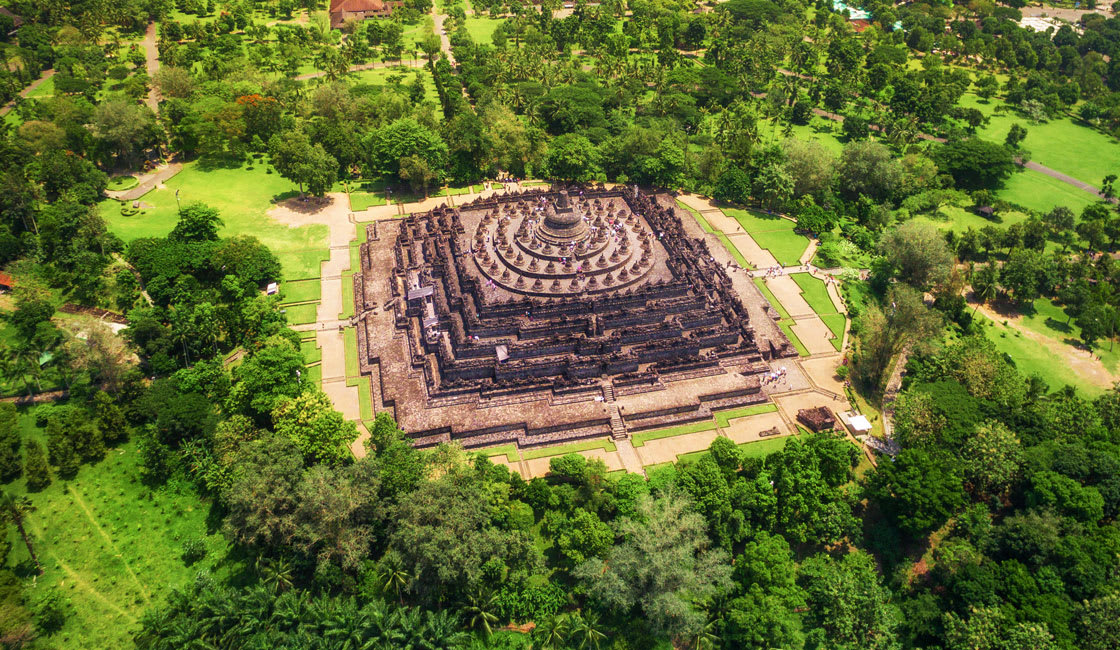
10. Borobudur Temple, Indonesia
Located on Java Island, resting atop a hill ringed by volcanoes on tranquil plains, the magnificent Borobudur temple complex is the world’s largest and most celebrated Buddhist monument and one of its greatest archaeological sites. Constructed in the 9th century to resemble a pyramid-shaped mandala, Borobudur was abandoned after catastrophic volcanic eruptions, lying buried under layers of ash and jungle for around a millennium.
Today, this well-preserved monument is one of Southeast Asia’s greatest religious relics and a magnet for Buddhist pilgrims. This Mahayana Buddhist temple is best experienced at dawn, not only to avoid the stifling daytime heat, but when it’s at its most spiritually charged. In the early hour’s darkness, ascend the seven stone terraces ringed with dozens of Buddha sculptures leading up to an uppermost central stupa. From this sacred perch, watch the sunrise over mist-shrouded volcanic peaks. Afterward, explore the intricate bas-reliefs lining the temple walls, allegedly the world’s largest ensemble.
While Rainforest Cruises aim to provide accurate and up-to-date information, we make no representations as to the accuracy or completeness of any information herein or found by following any link on this site. Rainforest Cruises cannot and will not accept responsibility for any omissions or inaccuracies, or for any consequences arising therefrom, including any losses, injuries, or damages resulting from the display or use of this information.
You may also like

Total Solar Eclipse Cruise 2023
What will you be doing on April 20, 2023? Imagine being on a tropical island paradise in the remote southern reaches of Indonesia’s Banda Sea and witnessing one of the most profound […]

Raja Ampat Diving: Best Dive Sites, Season, Resorts & Liveaboards
Straddling the Equator off the extreme north-western tip of Indonesia’s Papua province, Raja Ampat is an archipelago of 610 islands; a figure that can be boosted to more than 1500 if you […]
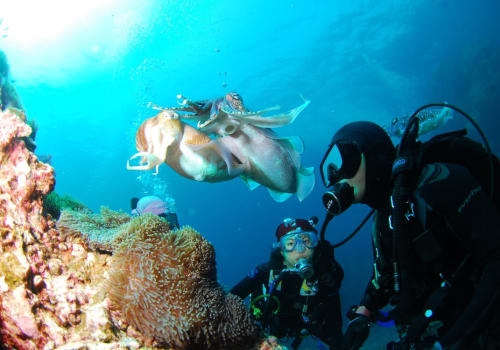
Diving Komodo vs Raja Ampat: Which is Better?
If you had to choose between diving Komodo and diving Raja Ampat, which would you choose? Which is best? Both are stellar locations; Komodo is unique due to the top side dragons, […]
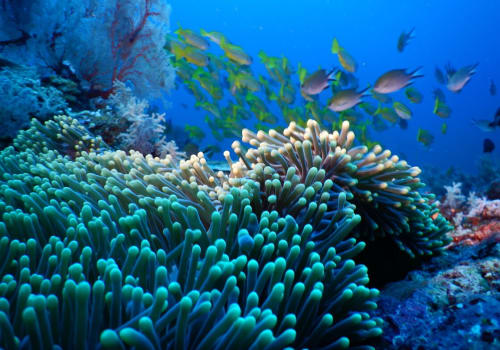
9 Best Diving Spots in Southeast Asia
With the Indo-Pacific Coral Triangle at its heart, Southeast Asia offers some of the most spectacular scuba diving in the world. As a consequence of the immense tidal changes from the North […]
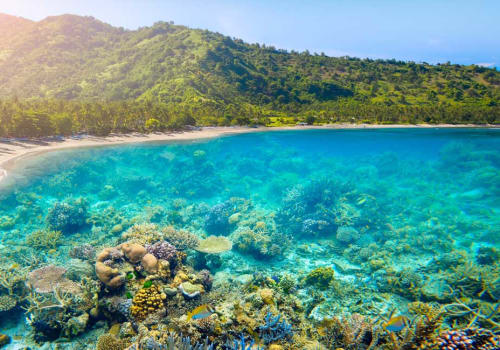
Diving Indonesia: Best Dive Sites, Season & Liveaboard Routes
With 17,508 islands, 50,000 miles of coastline, 98,000 square nautical miles of territorial sea, 20,000 square kilometers of coral reefs and some 600 species of coral, 30,000 square kilometers of mangroves forest, […]
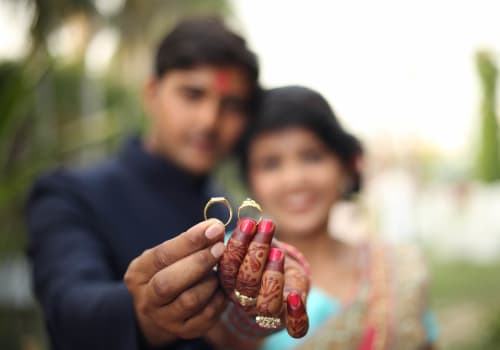
19 Best Honeymoon Destinations & Resorts In India
Whether you are looking for a romantic beach break, or a more active adventure, India is the honeymoon destination that truly has it all. There’s no better place to fall in love […]
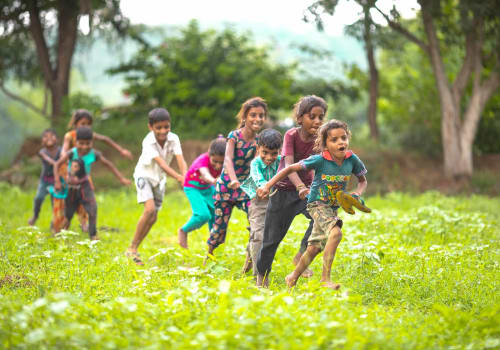
Best Family Trip Destinations & Things To Do With Kids In India
India might not be the most obvious family cruise holiday choice, but for those intrepid families who yearn for something different, India may be one of the most captivating countries you encounter, […]
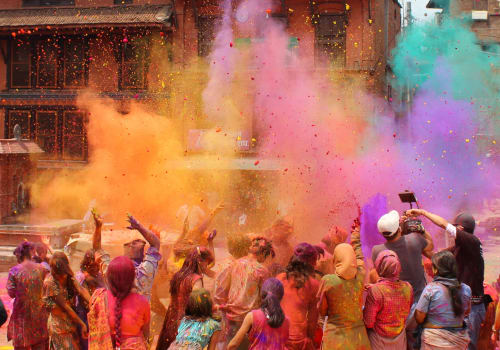
Indian Festivals: Color, Lights, Painted Elephants & Poo?
India is a land of festivals, and it is said that over a thousand take place every year – some celebrated religion-wide, some at a state level, others just within a local […]

India Food: 25 Most Popular Traditional Dishes To Eat In India
Traditional Indian food is renowned worldwide for its wonderful use of herbs and spices, and its diverse range of deep-fried snacks, pastries, curries, gravies, sauces, rice dishes, tandoor-cooked meats, vegetable dishes, chutneys, […]
On the Lookout for Expert Advice & Offers?
Join over 20,000 discerning travelers and be the first to receive our monthly exclusive discounts, inspiring travel content and expert tips, straight to your inbox.

- Charter (Private)


Touropia Travel
Discover the World
29 Best Places to Visit in Southeast Asia
By Alex Schultz · Last updated on April 27, 2024
Southeast Asia is a group of diverse countries between the Indian Ocean and the Pacific Ocean, featuring indigenous cultures influenced by Indian, Chinese and Western culture. The region includes the most populous Muslim country in the world, very prominent Buddhist countries, and quite significant Christian, Hindu and Animist communities.
It has long been a favorite corner of the world for globe-tramping backpackers, known for its perfect beaches, tasty cuisine, low prices, and good air connections.
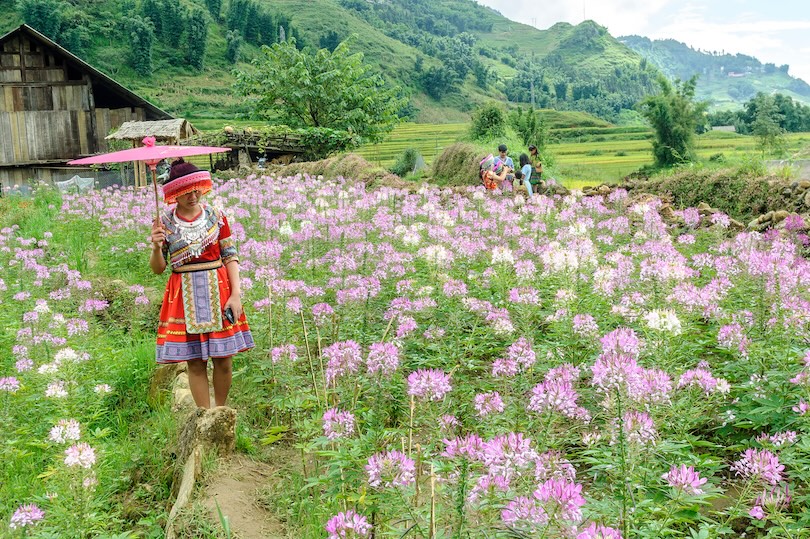
The countries of Southeast Asia represent a totally different culture for Western travelers. Instead of cathedrals, they’ll find temples. Instead of cold temperatures and snow in the winter, for the most part they’ll be bathed in a tropical climate. They may find simple accommodations in remote fishing villages but also luxurious five-star hotels in the bigger cities and on the more popular islands.
Southeast Asia will appeal to active, adventuresome travelers, who want to trek through steamy jungles, dive in some of the world’s best coral reefs, camp or go whitewater rafting on new rivers. But the region also offers the less active travelers something, who, after a day of visiting temples and other cultural sites, just want to relax in comfort in a luxury hotel. An overview of the best places to visit in Southeast Asia
29. Vientiane
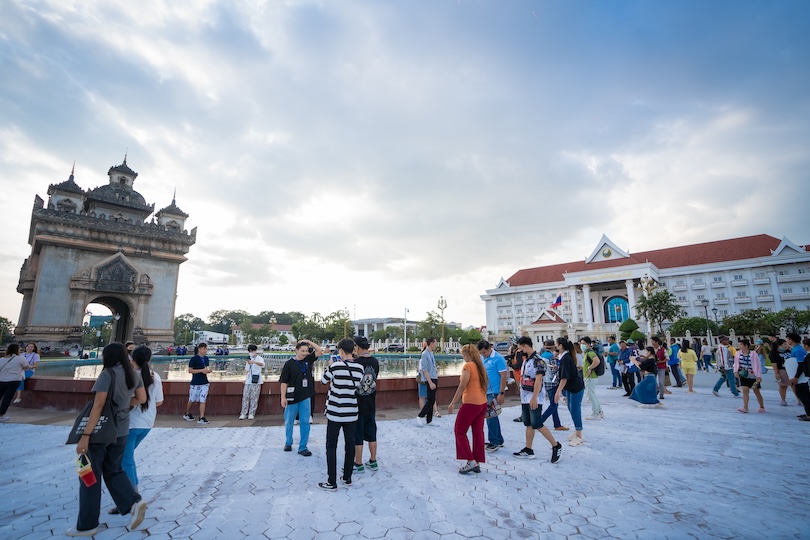
Both the capital and largest city of Laos, Vientiane is an underrated place to visit with lots of different sides to it. Besides boasting beautiful Buddhist temples, it is known for its elegant French colonial-style architecture and vibrant street food scene.
Set right in the south of the land-locked country, its charming tree-lined streets lie along the northern bank of the Mekong River. In recent decades, the city has doubled in size as malls, hotels and office buildings have shot up everywhere. While the traffic is much more chaotic now, its peaceful temple gardens and riverfront promenade are still wonderful to explore.
Other than admiring the glimmering gold Pha That Luang – Laos’ national symbol and most important religious site – you can amble about the many museums and night markets. Wat Si Muang and Buddha Park also attract visitors with their amazing architecture and artworks.
28. Sihanoukville
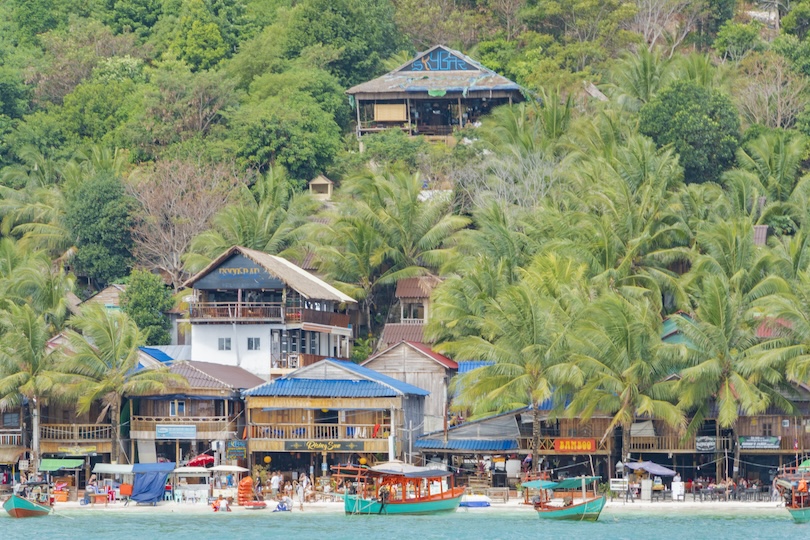
As it is home to many of Cambodia’s best beaches , Sihanoukville is a great spot to relax and unwind after exploring Angkor Wat and Phnom Penh. Lying along the Gulf of Thailand, it has heaps of fun watersports to enjoy with idyllic islands also located nearby.
Also known as Kampong Saom, the popular seaside city was quiet until pretty recently when swanky Chinese resorts and casinos were erected everywhere. Although it’s lost a bit of its laid back charm, there are now tons of restaurants and bars to try out.
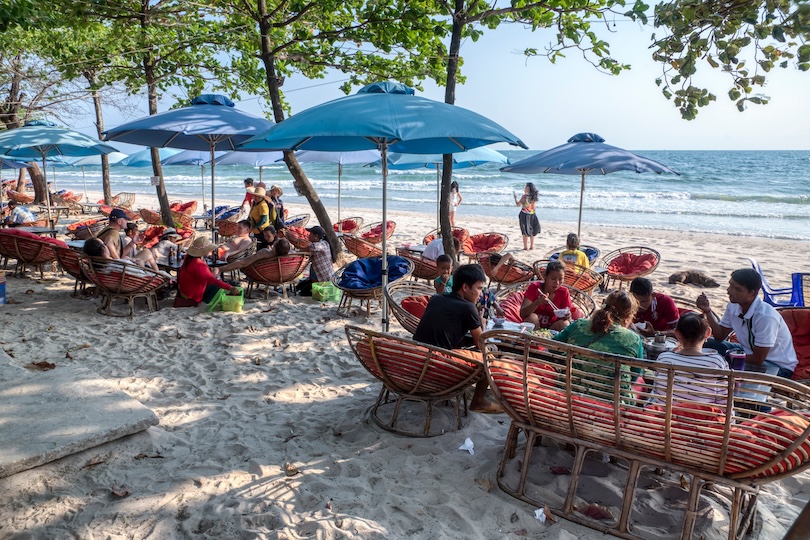
Plenty of pristine beaches still line its coast with Ream National Park also preserving lovely mangroves and colourful coral reefs. Aside from sunbathing, swimming and snorkelling, you can rent jet skis or take boat trips to the gorgeous Koh Rong and Koh Russei islands.
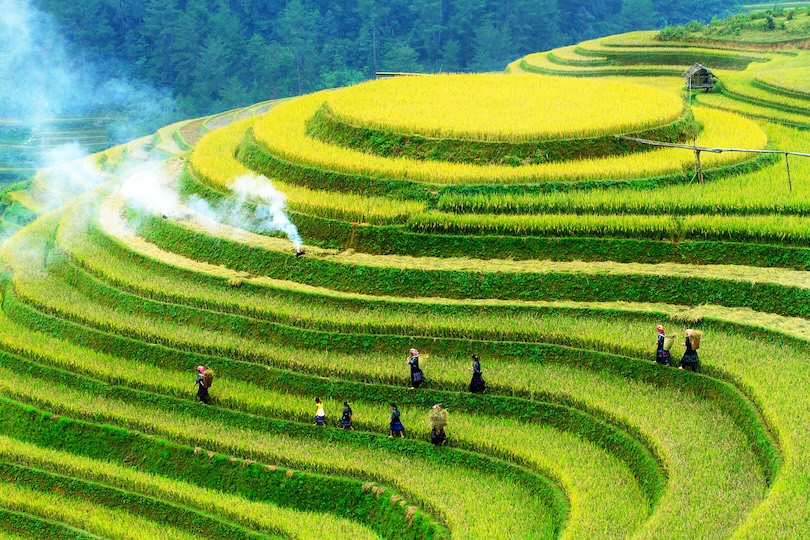
Nestled away amidst the remote mountains and rice terrace-filled valleys of northwestern Vietnam is the scenic town of Sapa . An increasingly popular tourist destination, it is famous for both its stunning landscapes and traditional hill tribe villages.
Overlooked by the rugged Ham Rong Mountain, the small settlement is surrounded by loads of spectacular nature. While some hike to Muong Hoa Valley for its picturesque rice paddies, others climb up the 3,141 meter-high Mount Fansipan – the tallest peak in Southeast Asia.
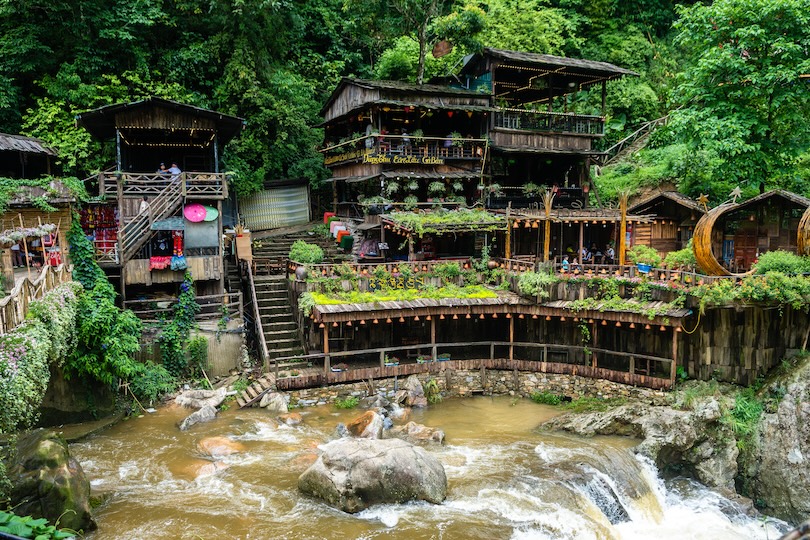
Many also come to learn about the isolated region’s unique cultural heritage and the ethnic minorities that live here. In addition to picking up some local handicrafts at its market, you can stay overnight at the quaint Cat Cat Village or trek to some of the other towns nearby.
26. Perhentian Islands
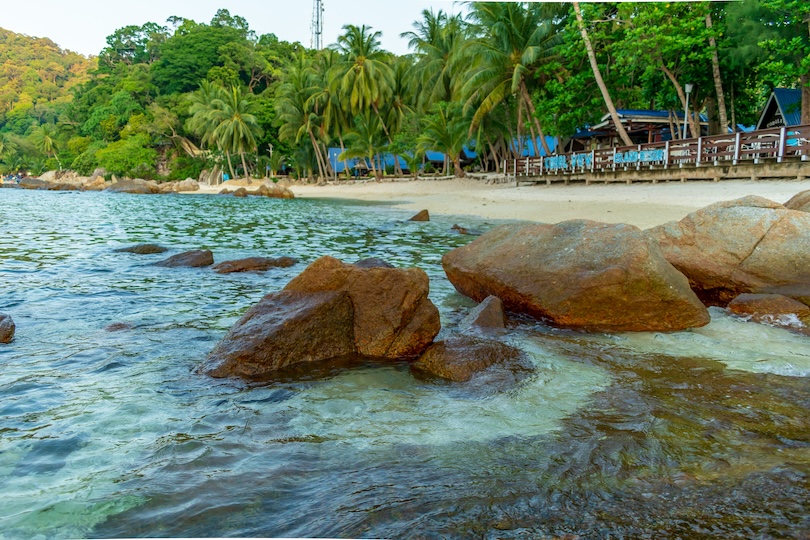
Just a short speed boat ride off the northeast coast of Peninsular Malaysia are the incredible Perhentian Islands . Appearing as if out of a travel brochure, the jungle-clad archipelago and all its breathtaking beaches are surrounded by shimmering, turquoise waters.
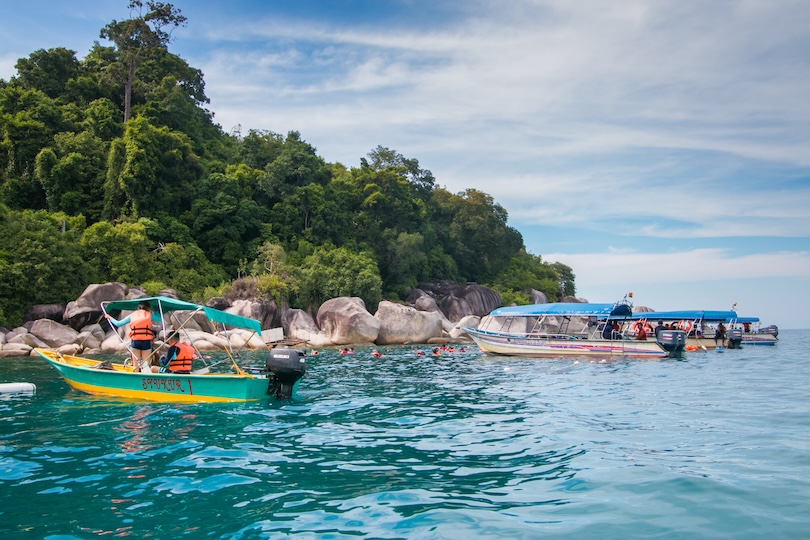
Meaning ‘stopping point’ in Malay, the cluster of coral-fringed islands are completely unspoiled with only the larger Perhentian Besar and Perhentian Kecil being inhabited. Protected as part of Pulau Redang National Marine Park, they have some stupendous snorkeling, scuba diving and sea-kayaking to enjoy.
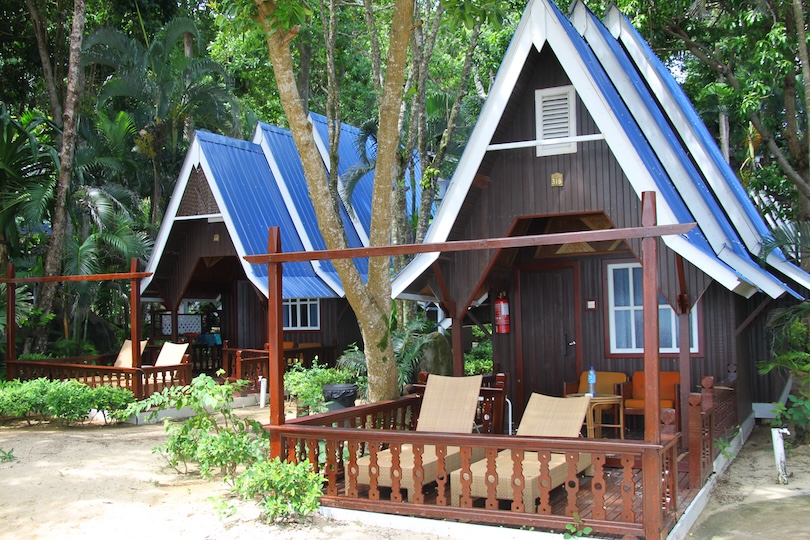
After ogling at all its magnificent marine life, you can hike about its steamy jungle or lounge on picture-perfect beaches. Some epic rock formations also line their sparkling white sands with relaxing resorts and restaurants dotted here and there.
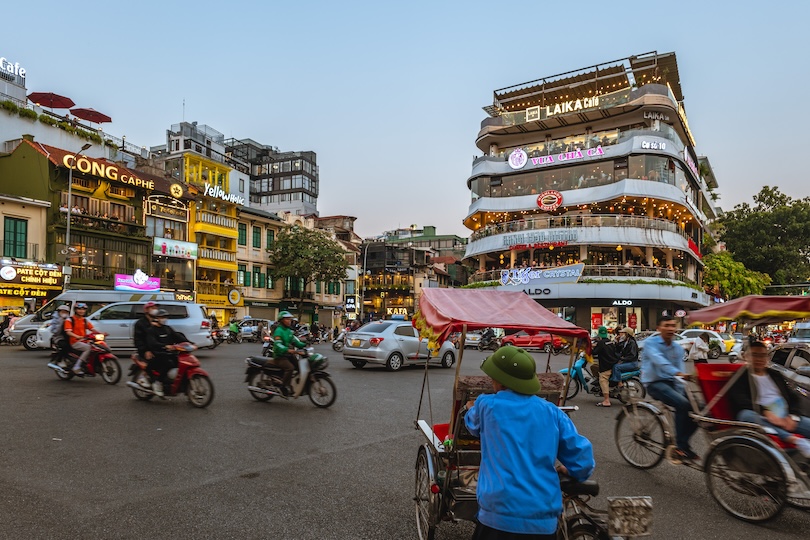
In stark contrast to the tranquil isles, the hectic, high-paced Hanoi threatens to overwhelm your senses. Once you get used to the constant traffic and hooting horns, Vietnam’s capital has much to love about it with millions visiting each year.

One of the oldest cities on Earth, it exhibits a fascinating mix of East and West as concrete communist blocks lie next to French colonial buildings and ancient Asian pagodas. In its Old Quarter, there are atmospheric markets and alleys to explore with the tiny cafes along Train Street always a big draw.
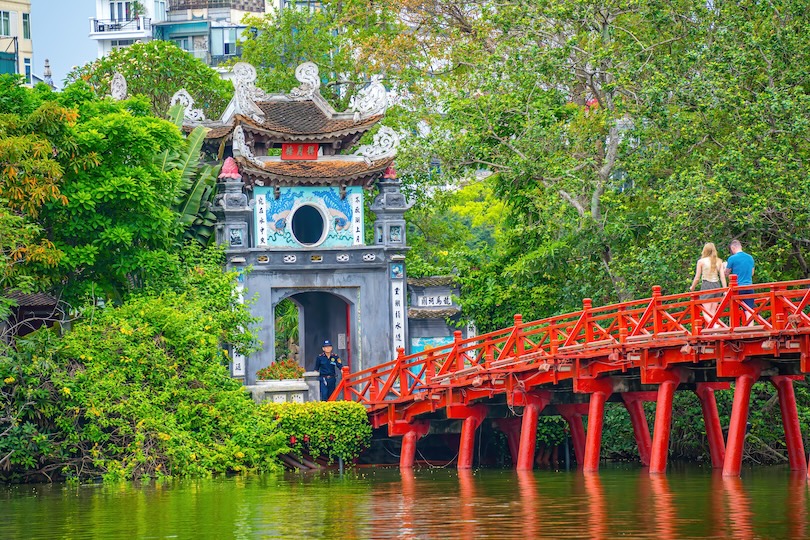
Other than trying terrific street food, there are numerous museums and galleries that cover the history and culture of the country. If the chaos ever gets too much, you can stroll about the handsome Hoan Kiem Lake or Temple of Literature.
24. Vang Vieng
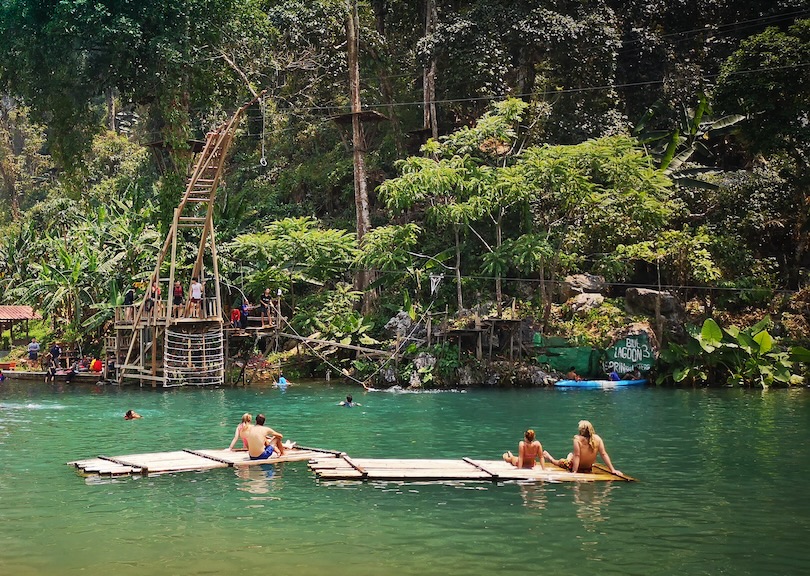
Often called the ‘Adventure Capital of Laos’, Vang Vieng is renowned for its remarkable karst formations and fast-flowing river. Popular with party-seeking backpackers, it has lots of captivating caves and bucolic countryside to see nearby.
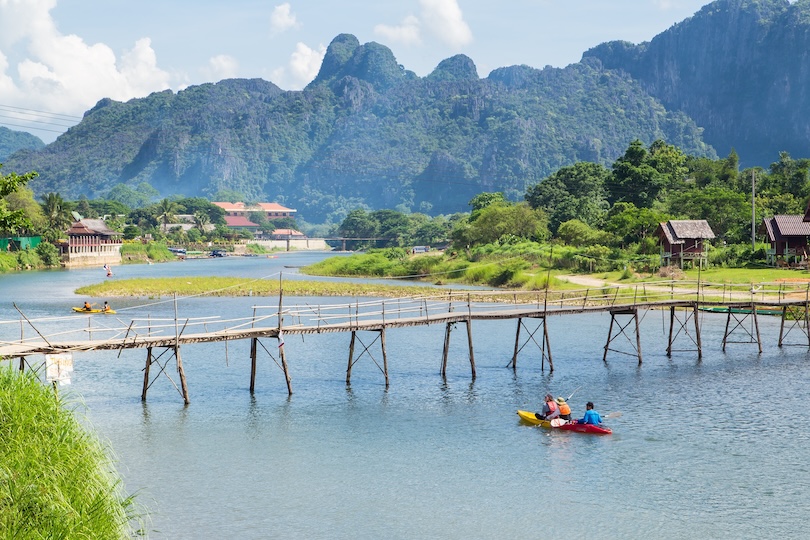
Located a couple of hours’ drive north of Vientiane, the small town lies along the Nam Song River, overlooked by dramatic, soaring mountains. Besides hiking or rock climbing, many go tubing along the river, stopping at various bars along the way.
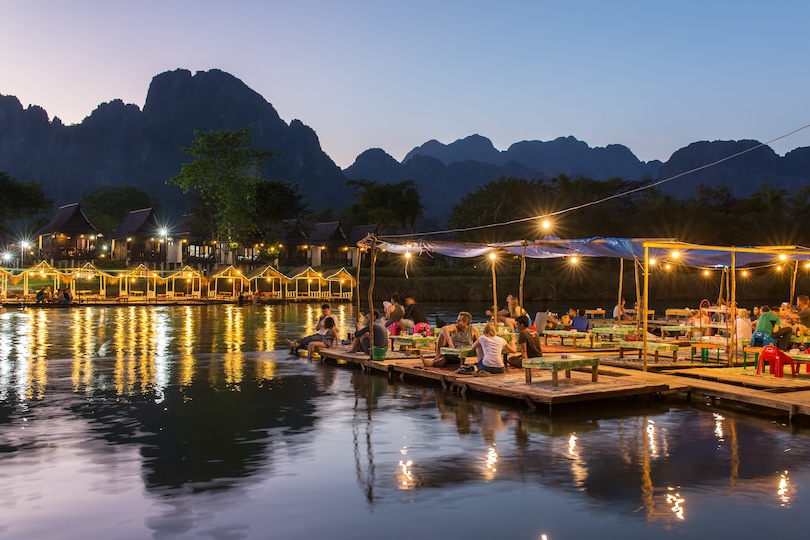
With countless cool caves, waterfalls and viewpoints found in the surrounding region, most people book tours to places like Tham Chang or the Tham Nam Water Cave. Buggies and kayaks are also available for rent while fun ziplines shoot you above its pretty landscapes.
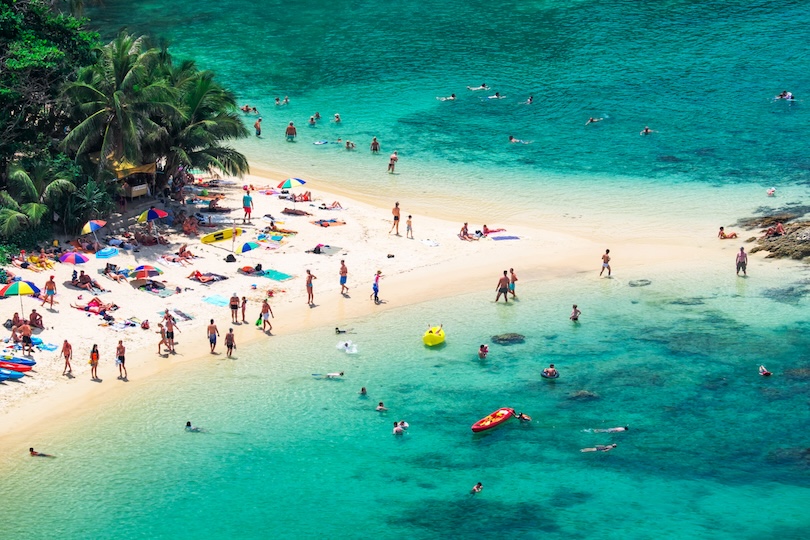
The largest island in Thailand, Phuket has long been a top destination thanks to its beautiful beaches and bountiful dive sites. Connected to the mainland by a couple of short bridges, its many mountains and rainforests overlook the Andaman Sea.
Offering various exciting outdoor activities, the wealthy province’s pristine parks are great for hiking and motorbiking. As well as exploring the lush rainforest, you can snorkel, sail and scuba dive in the warm waters.
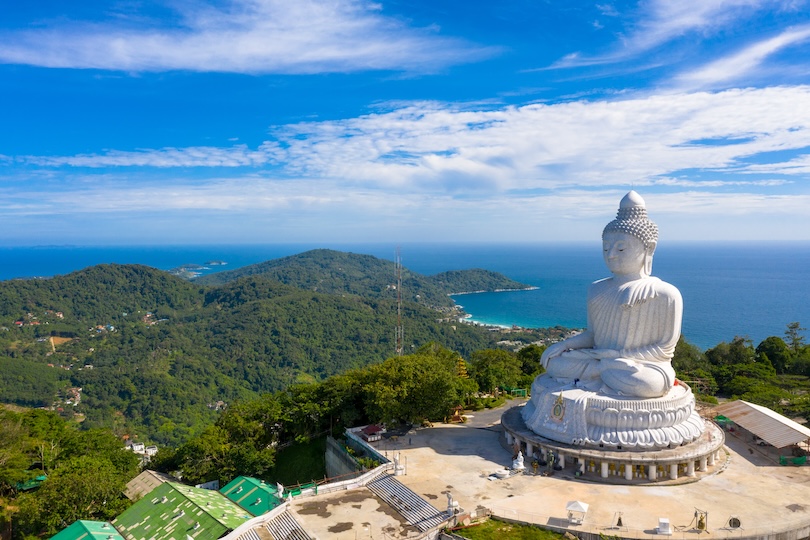
Many also come to pamper themselves at high-end spas, restaurants and hotels with the picturesque Patong Beach being known for lively street markets and loud nightlife scene. Phuket Town, the island’s capital, also has some centuries-old temples, shrines and Sino-Portuguese mansions to see.
22. Kuala Lumpur
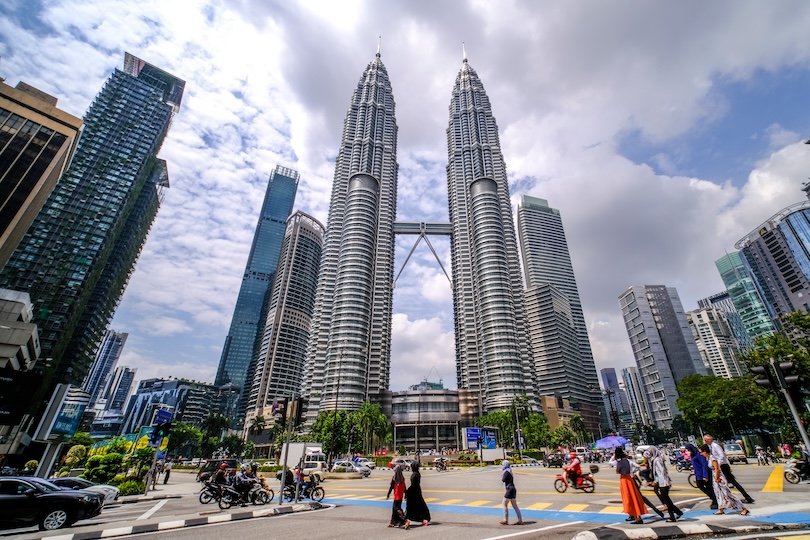
One of the most multicultural cities in the world, Malaysia’s sprawling capital Kuala Lumpur hums with energy at any time of day. Most known for the iconic Petronas Twin Towers, it has everything from old-time temples and markets to modern malls and skyscrapers to explore.
Since being founded as a tiny tin mining outpost in 1857, the dynamic KL has continued to grow and grow. Thanks to its large Chinese, Malay and Indian populations, the city has tons of tasty dishes to try with its architecture and historic sights being just as diverse.
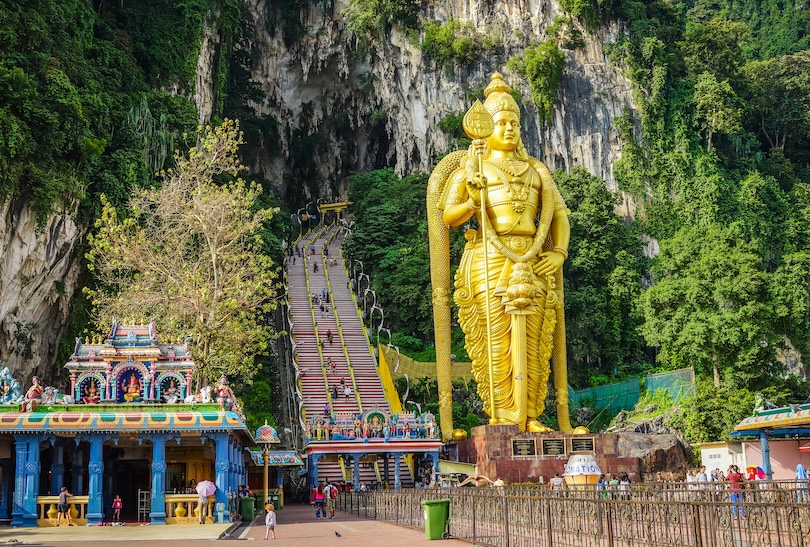
Besides shopping at Berjaya Times Square’s stores or sampling Jalan Alor’s street food, you can enjoy awe-inspiring views from its high-up observation decks. The incredible Batu Caves and Genting Highlands can also easily be visited on day trips from the capital.
21. Gili Islands
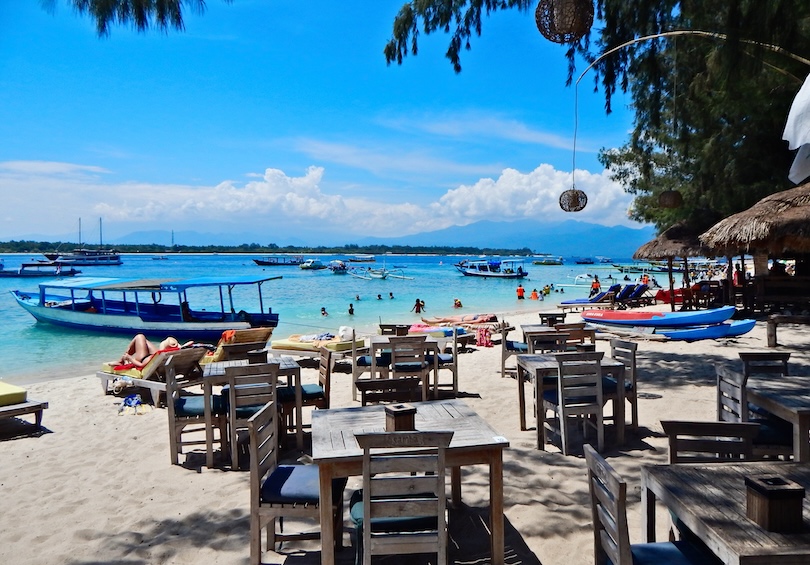
A lovely, laid back place to visit, gorgeous Gili Islands lie just off the northwest coast of Lombok in Indonesia. Fittingly meaning ‘small beautiful islands’, their wonderful white sands and warm, crystal-clear waters are easily reached by either ferry or fast speed boats.
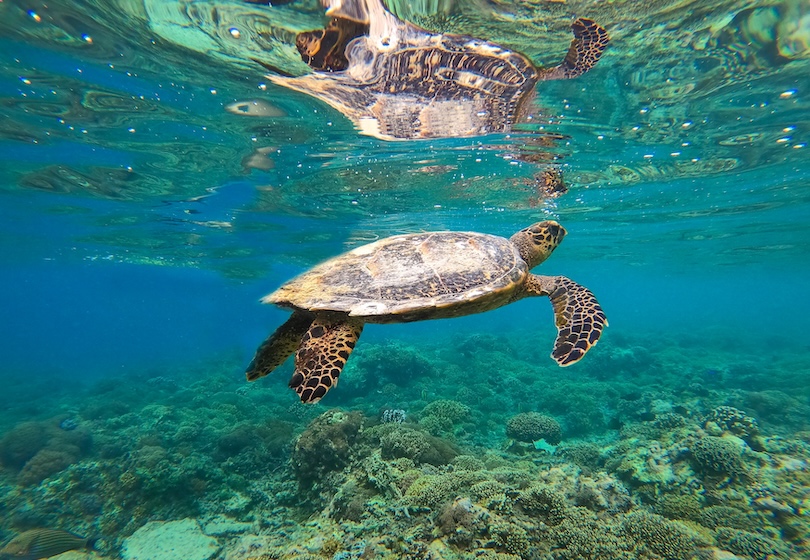
Although they have long been a popular tourist destination, the three secluded isles are still quite undeveloped despite more resorts and restaurants popping up each year. While Gili Air and Gili Meno are very relaxed, Gili Trawangan is much livelier with plenty of bars and clubs hosting party nights.
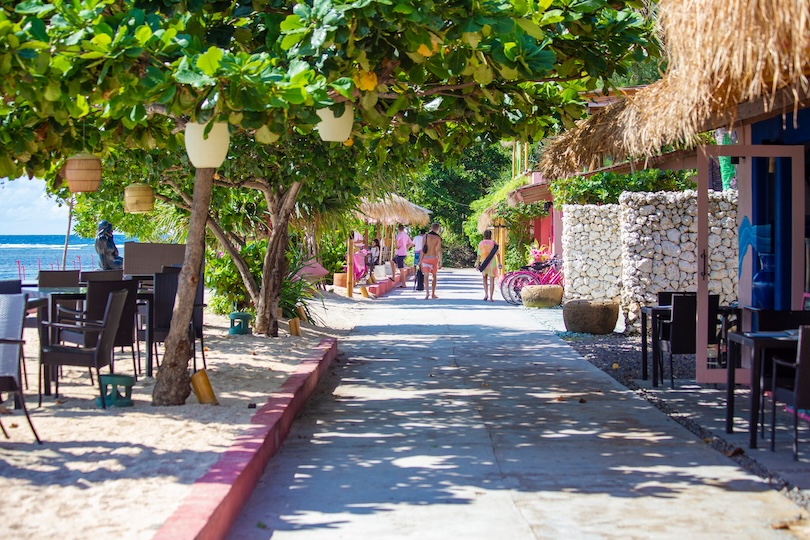
All of them boast some breathtaking scenery and beaches with swimming, scuba diving and sightseeing cruises being their main activities. With no cars at all on the islands, their little cafes and beachside retreats make for a delightful getaway.
20. Phnom Penh
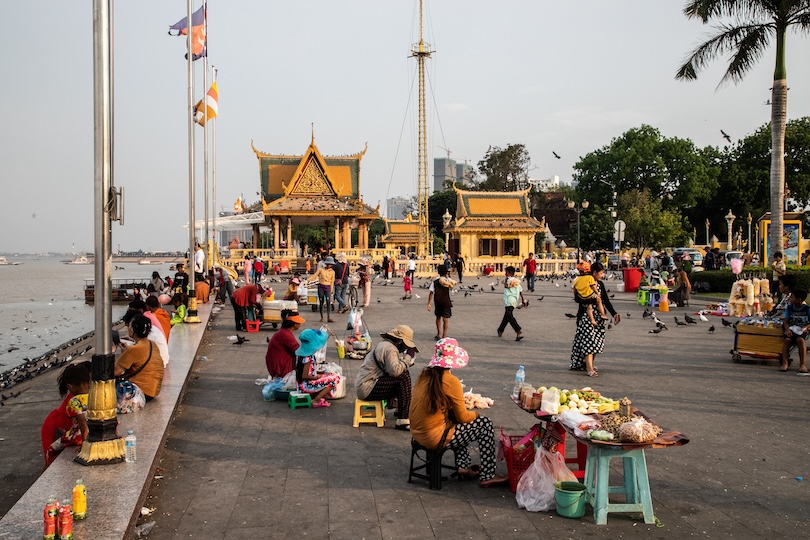
Once known as the ‘Paris of the East’ and ‘Pearl of Asia’, Cambodia’s capital Phnom Penh has slowly overcome the abuse it suffered under the violent Khmer Rouge regime. While it is still a bit rough and rundown in places, the growing metropolis certainly has a lot to offer.
As it acted as a hub for both the ancient Khmer Empire and French colonialists, fine temples and villas were erected around the city. Although many were damaged in the seventies, the wide boulevards and riverfront promenades for which it is famed still remain.
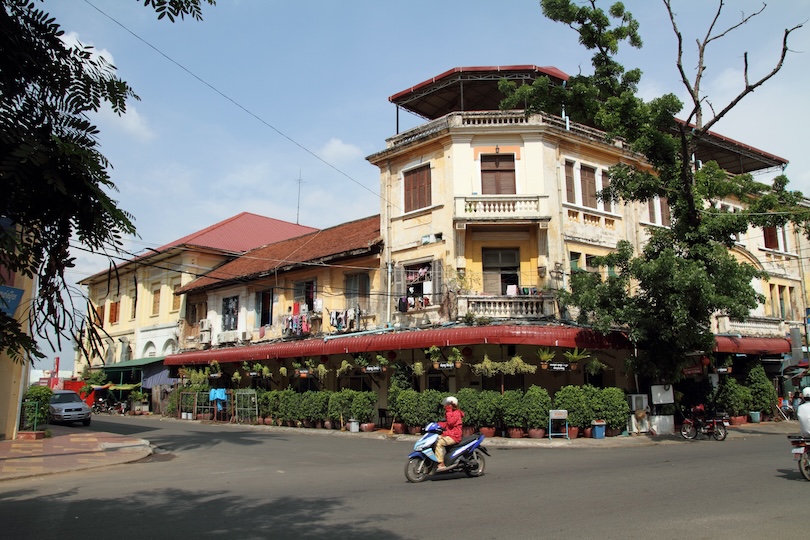
Aside from wandering about its attractive parks or enormous Phsar Thmei market, you can admire its Royal Palace and Silver Pagoda. Visitors can also learn more about its recent sad past at the Killing Fields or in its moving Genocide Museum.
19. Chiang Mai
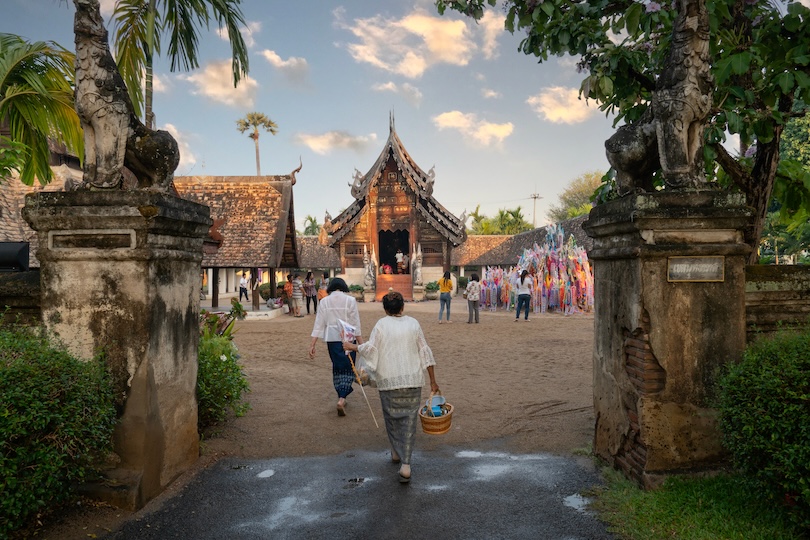
The second-largest city in Thailand, Chiang Mai is located in the mountainous north, amidst scenic countryside. One of Southeast Asia’s must-visit destinations, it is known for not just its atmospheric temples and old town but its fun night markets and street food too.
Once the capital of the Lanna Kingdom, it was founded in the thirteenth century with some of the city walls and moat still intact today. These contain impressive temples like Wat Chedi Luang and Wat Phra Singh. You’ll also find bustling Night Bazaar and all kinds of enticing street food stands to try out nearby.
Outside of the city are natural wonders like Doi Inthanon National Park and Hang Dong Quarry to discover. Many also go trekking to meet remote hill tribes or bathe adorable baby elephants at some of the sanctuaries.
18. Inle Lake
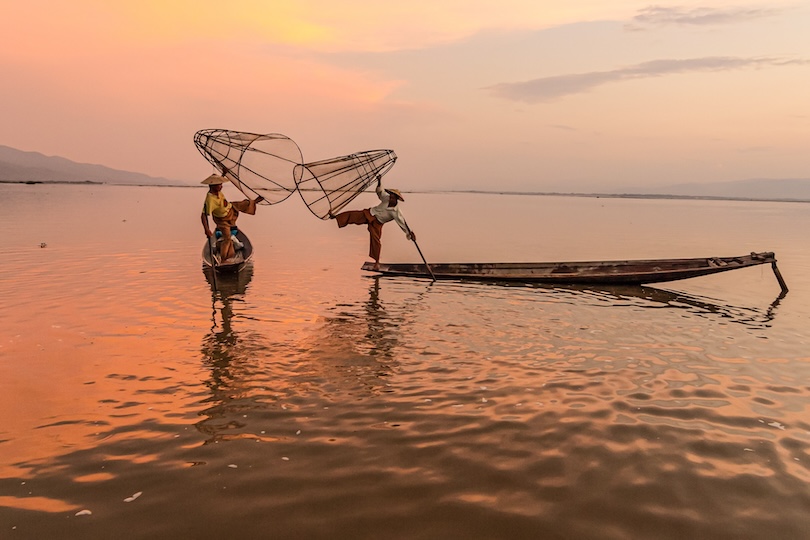
Along with the ancient pagodas and temples of Bagan, Inle Lake has to be one of Myanmar’s most enchanting attractions. Tucked away amidst the rolling Shan Hills, its reflective waters are lined by charming monasteries and temples with floating villages, markets and gardens also bobbing about.
The second-largest lake in the country, it stretches 22 kilometres in length with lots of tribes living around it. Many motorboats and flat-bottomed skiffs take tourists out on the shallow lake so you can see the communities up close and learn more about their traditions.
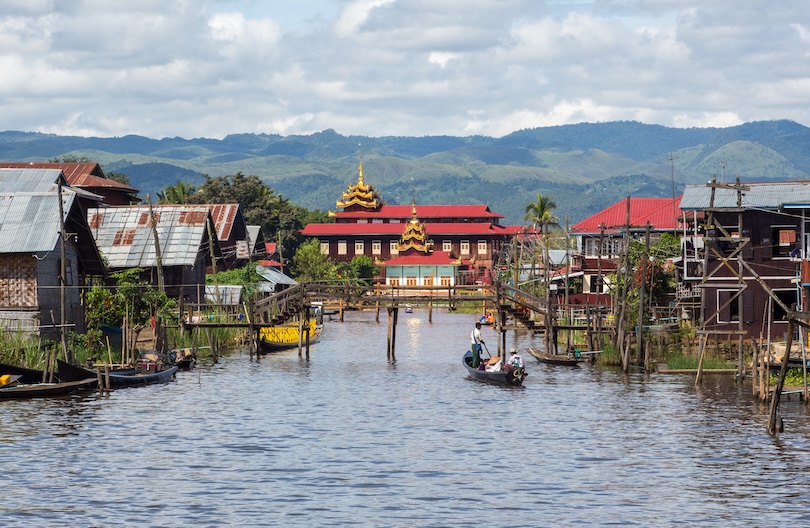
As well as visiting stilt homes and fishermen’s villages, there are centuries-old stupas and pagodas to see too. While puttering about, you can bask in marvellous views of the lake and the mountains far off in the distance.
17. Palawan
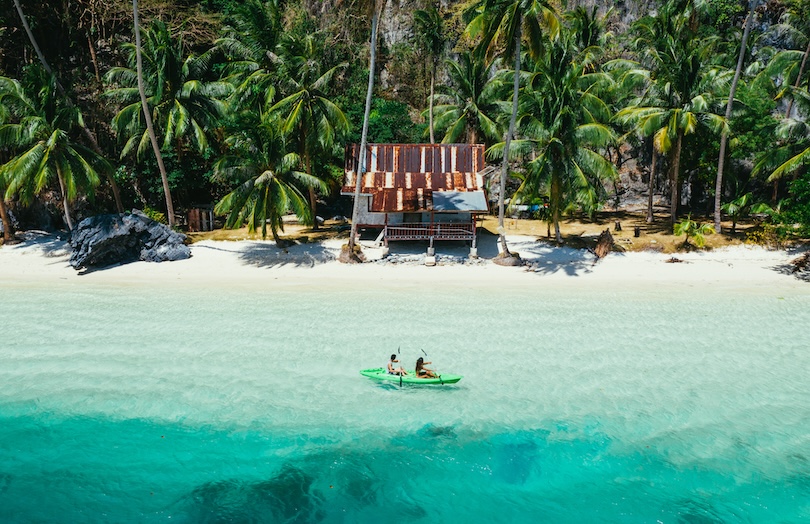
With all the alluring beaches, immense limestone cliffs and azure waters, it is no wonder that Palawan is considered to be one of the prettiest parts of Southeast Asia. The westernmost province of the Philippines, it has around 1,780 mostly unspoiled islands and islets to explore.
Set between the Sulu and South China seas, the long, narrow archipelago stretches almost from Borneo to Mindanao. Characterized by craggy limestone cliffs and colourful lagoons, its white sand beaches and dive sites need to be seen to be believed.
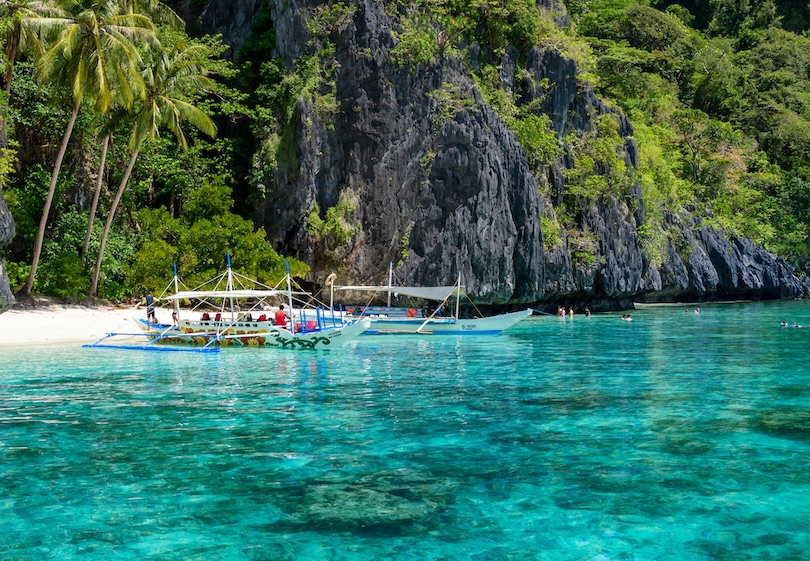
Among the region’s many highlights are the irresistible karst landscapes of El Nido and the underground river at Puerto Princesa. Tubbataha Reefs National Park also attracts divers as do the coral reefs and shipwrecks off of Busuanga Island.
16. Taman Negara
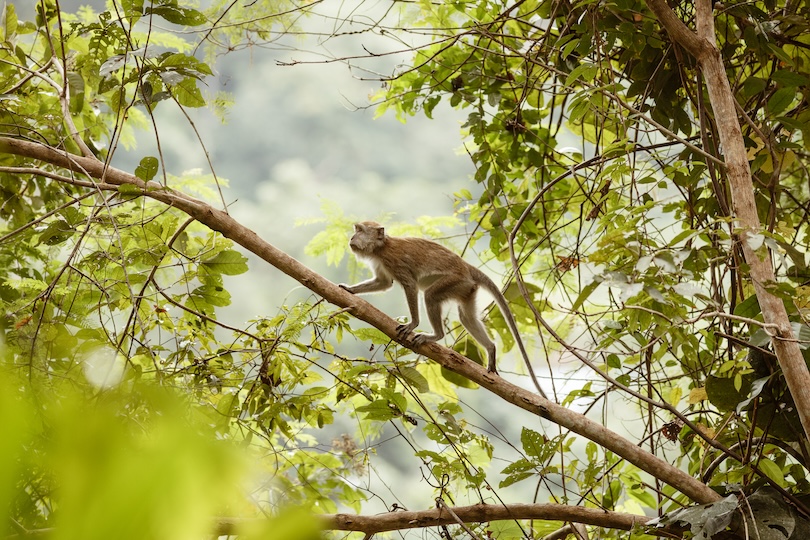
Covering a massive part of Peninsular Malaysia are all the rivers, rainforests and mountains of Taman Negara . A must for nature lovers and outdoor enthusiasts, the country’s largest national park offers a myriad of unforgettable adventure activities.
Established in 1938/1939, it sprawls across three states with Asian elephants, leopards and Malayan tigers all inhabiting its wild confines. The vast park also protects some of the oldest deciduous rainforest in the world. Some estimates reckon it is over 130 million years old!
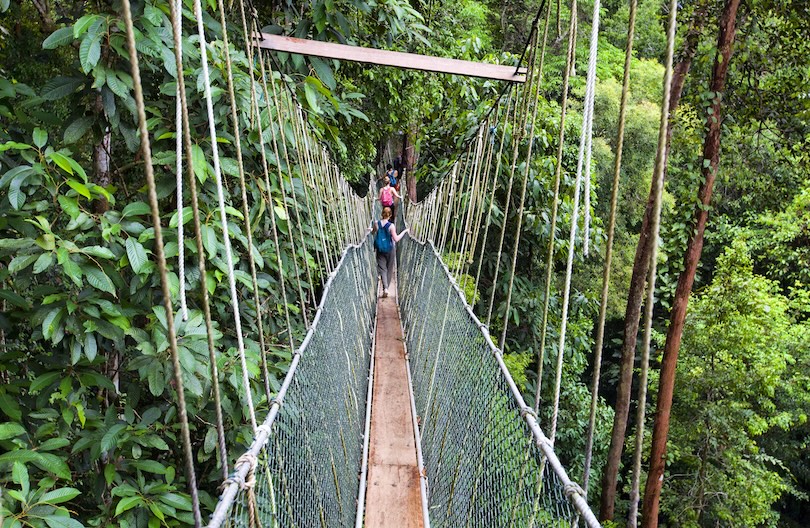
Amidst its endless mountains and jungle, you can explore caves, climb peaks and enjoy cool canopy walks. Many also shoot down its rapids and take nighttime safaris through the dark rainforest to see its nocturnal creatures. There are also the tiny aboriginal villages of Orang Asli to visit where you can learn more about traditional life in Taman Negara.
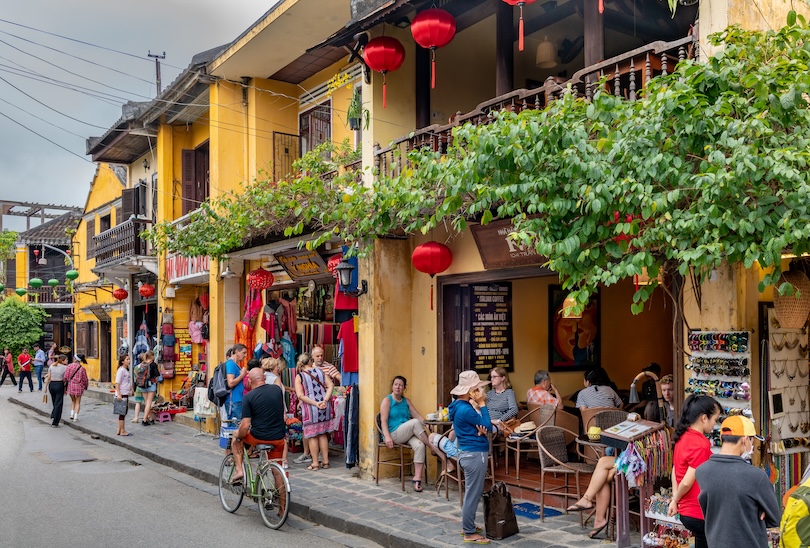
Well-preserved, Hoi An’s little canals and lantern-lit streets are hemmed in by hundreds of historic buildings. A mix of eras and styles, they perfectly reflect the former trading port’s past and all the different peoples and merchants that have lived here over the ages.
Lying along Vietnam’s central coastline, it flourished for centuries until the mouth of the Thu Bon River finally silted up. Its attractive Old Town is home to not just Chinese-style temples and shophouses but French colonial villas and ornate Vietnamese tube houses too. Another of its main sights is its quaint Japanese covered bridge that crosses one of the canals.
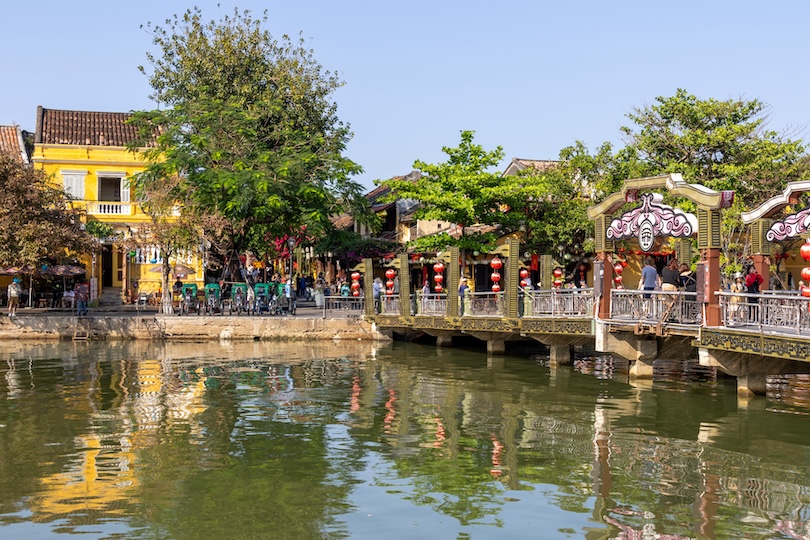
At night, everywhere looks even more magical as lovely lanterns light up its narrow, winding streets and riverside. Besides shopping for souvenirs at its market and trying some delicious street food, many take trips to the majestic My Son ruins nearby.

Formerly known as Rangoon, Myanmar’s largest city Yangon has much more to see than just its shimmering gold Shwedagon Pagoda. Other than the ancient Buddhist shrine, there are plenty of British colonial buildings, parks and religious sites to check out.
Despite being replaced at the capital by Naypyidaw in 2005, it still acts as both the country’s cultural and commercial center. As it exhibits a mix of British, Burmese, Chinese and Indian influences, the city has loads to offer in terms of its historic sights, food and nightlife.
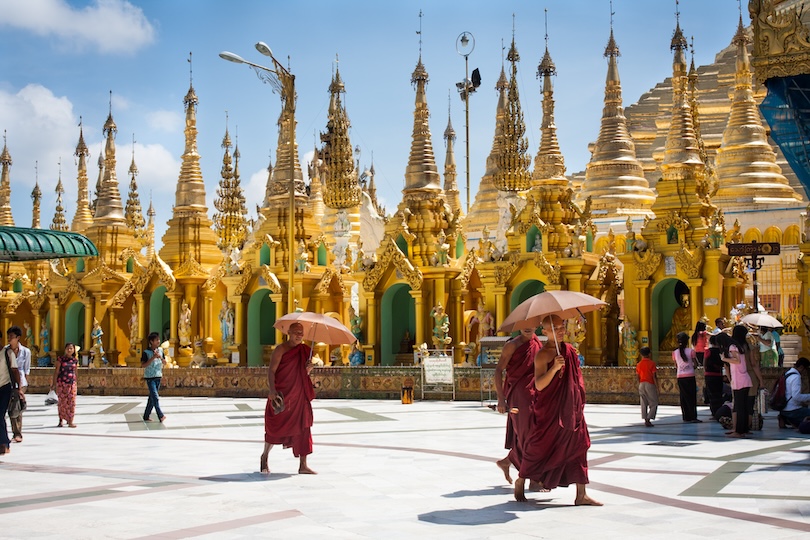
The undoubted highlight, however, is of course the gigantic golden Shwedagon Paya which is perched atop a hill overlooking the city. At its sizeable complex, you can examine its shrines and stupas and bang the giant Maha Ganda Bell for good luck.
13. Boracay
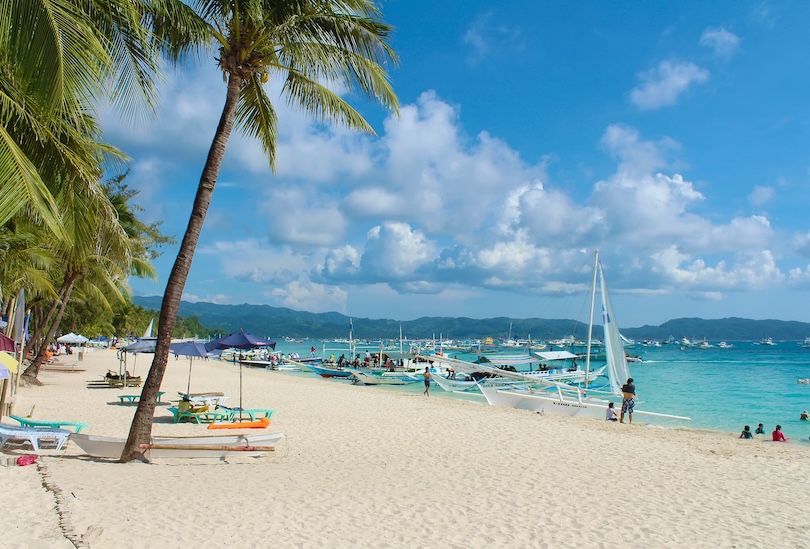
One of the Philippines’ most popular destinations, Boracay boasts some of the best and most beautiful white sand beaches in the world. A tropical paradise, all its relaxing resorts, spas and seafood restaurants lie just an hour’s flight from Manila.
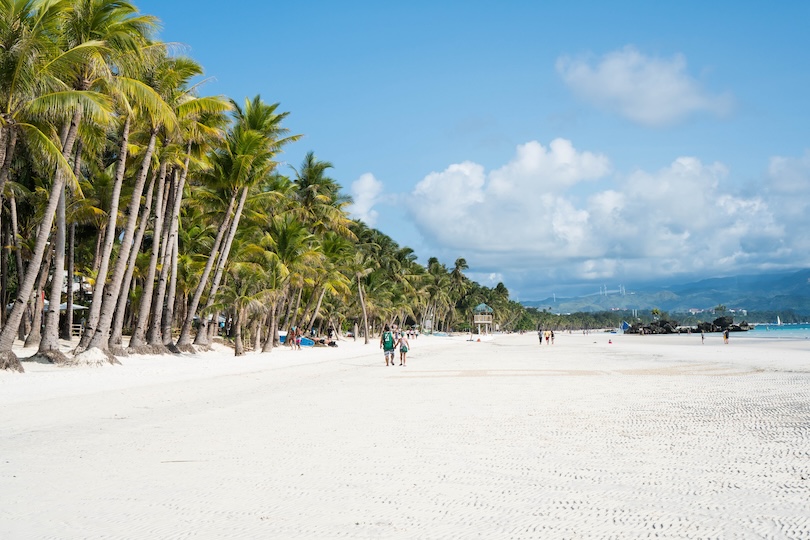
Located just off the northwest coast of Panay, the idyllic isle is lined by soft, powdery sands backed by gently swaying palms. Aside from swimming and splashing in its turquoise waters, you can enjoy everything from sailing and windsurfing to snorkeling, jet skiing and scuba diving.
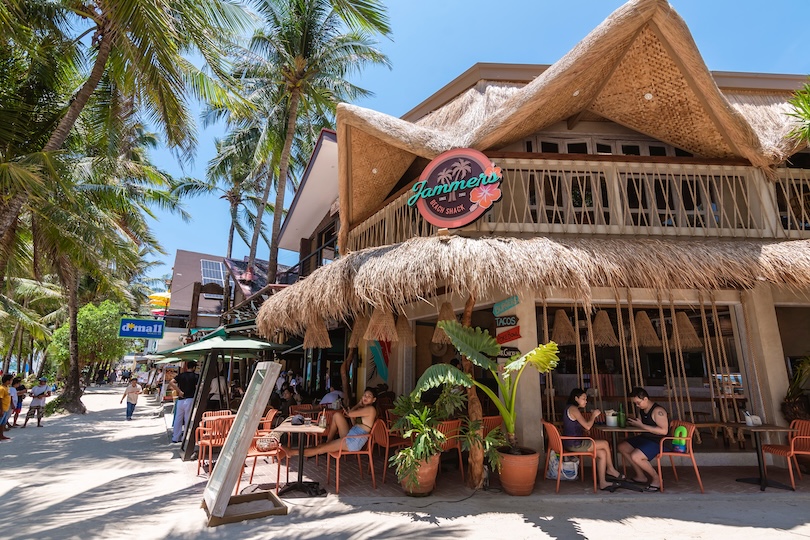
Many holidaymakers also make the most of its many spas and massage stations that border the beach. In the evenings, there are tons of lively bars and restaurants which offer superb music sets and sunset views.
12. Mount Kinabalu
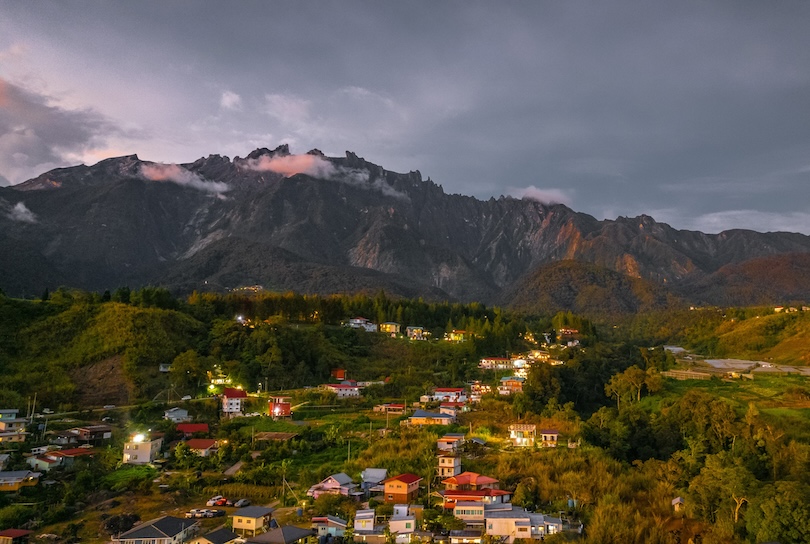
Rising dramatically above the rainforests and rivers of Borneo is the massive great Mount Kinabalu. The highest peak in the Malay Archipelago, it towers 4,095 meters in total with numerous hiking trails winding their way about its rugged slopes.
Considered sacred by the local Kadazan Dusun people, its wild reaches are now protected as part of the national park of the same name. One of the most biodiverse areas on Earth, it is home to around 6,000 plant species. Over 300 kinds of exotic birds also flit about its dense foliage.
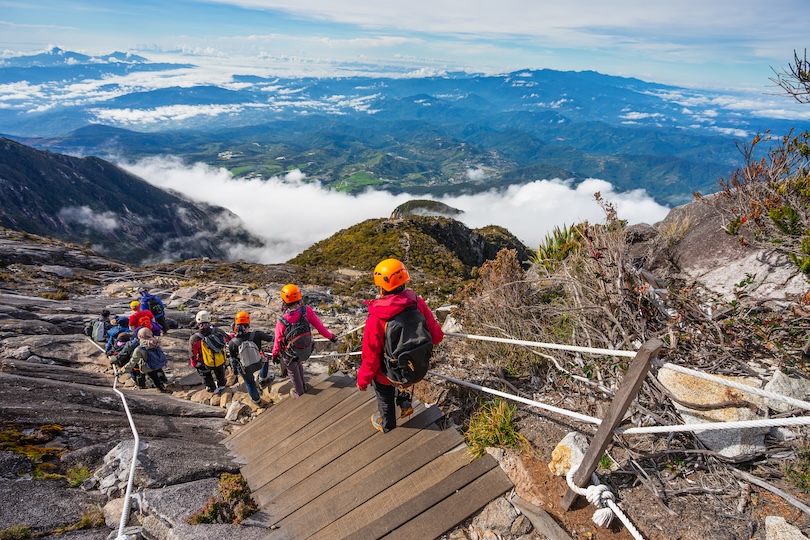
Despite its soaring summit, the mountain is actually quite easy to hike if you are moderately fit. After taking in all its astounding views and nature, you can always go and see adorable orangutans at one of the nearby nature reserves.
11. Komodo National Park
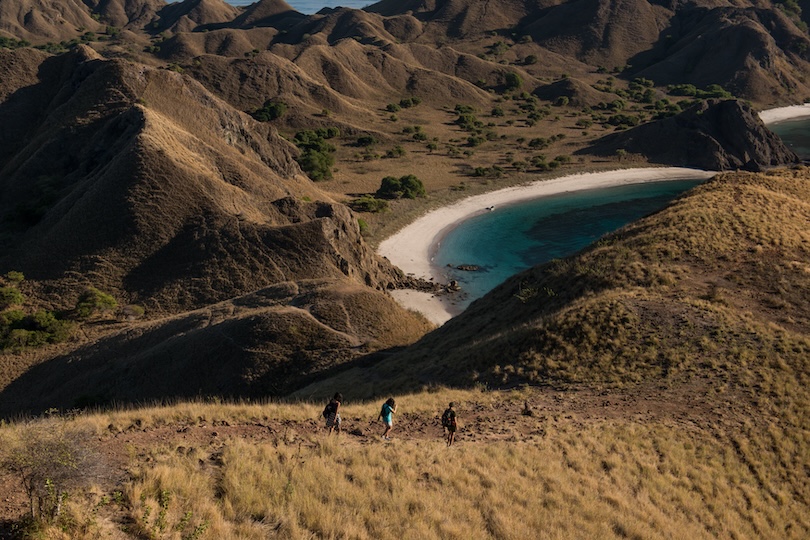
If you’re after a sighting of the world’s largest lizard, then the incredible Komodo National Park is the place to head. Part of the Lesser Sunda Islands in Indonesia, it also preserves some spellbinding mountains, beaches and marine life.
Founded in 1980, the important biosphere reserve includes not just the large islands of Komodo, Rinca and Padar but dozens of smaller ones too. Here, you’ll find thousands of the remarkable creatures which can impressively grow up to three meters in length.
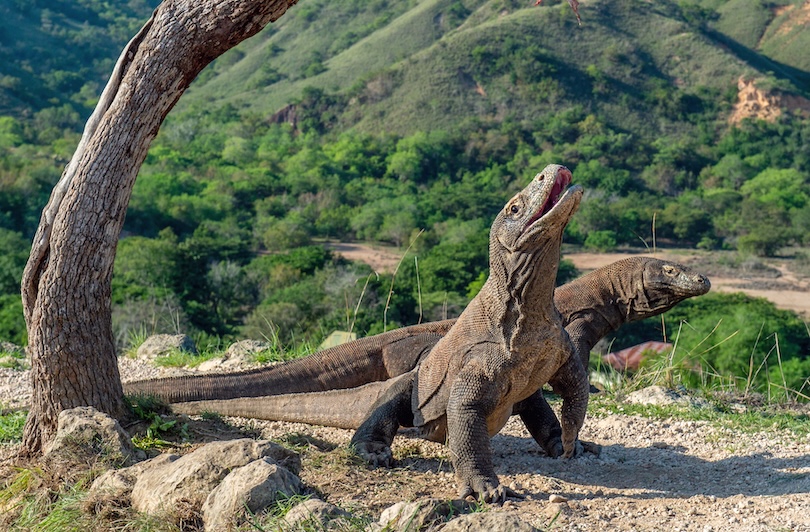
In addition to actually seeing the dragons, you can spot wild horses, water buffalo and other endangered species. Many also camp and kayak at its pristine white sand beaches with the park’s colourful coral reefs being amazing to snorkel and scuba dive above.
10. Singapore

Set off the southern end of the Malay Peninsula is the tiny city-state and island country of Singapore . Often called the ‘Switzerland of Asia’, it is a very prosperous and diverse place with its population speaking English, Mandarin, Malay and Tamil.
Since being established by the British in 1819 as a small trading colony, the city has grown considerably. Still home to one of the world’s busiest ports, its iconic skyline includes famed, futuristic landmarks like Marina Bay Sands Resort and the Gardens by the Bay supertrees.
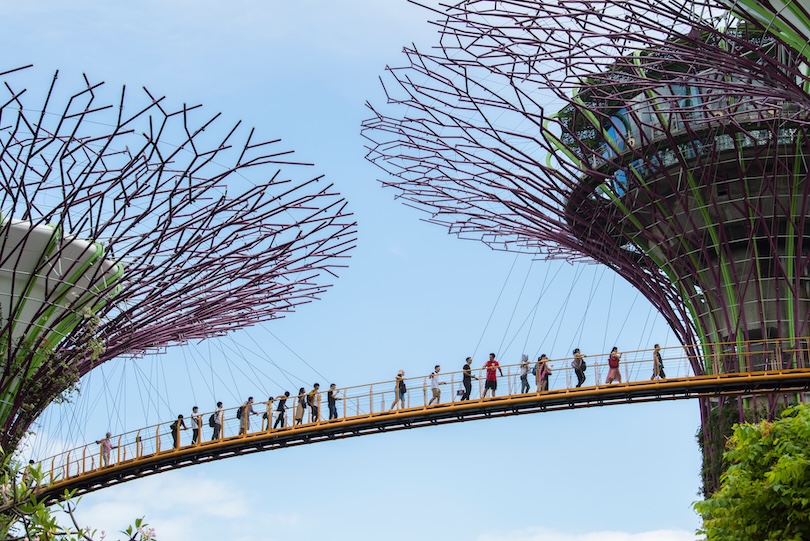
Nearer the ground are cool districts like Chinatown and Orchard Road to amble around with Singapore known for its tasty food and terrific shopping. Although it is one of the world’s most technologically advanced cities, it also has lovely jungles and beaches to enjoy.
9. Ko Phi Phi
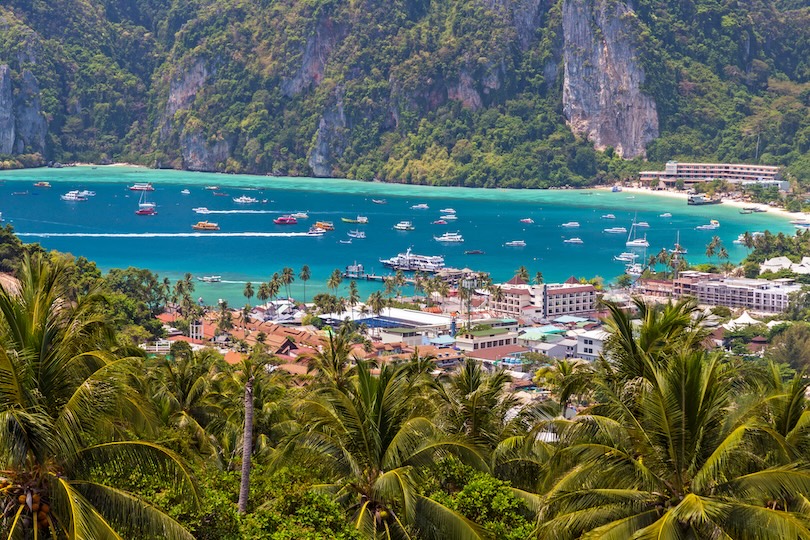
Even more picture-perfect still than Phuket is the nearby archipelago of Ko Phi Phi. Home to some of Thailand and Southeast Asia’s most attractive islands, its charming coves, cliffs and sandy beaches are surrounded by the sparkling Andaman Sea.
Part of Krabi Province , its enchanting isles number five in total with Ko Phi Phi Don being the largest and only one that is inhabited. Towered over by tall karst cliffs clad in greenery, their beaches are often featured on the front of travel catalogues. It’s easy to see why as all their white sands contrast so stunningly with the emerald waters around them.
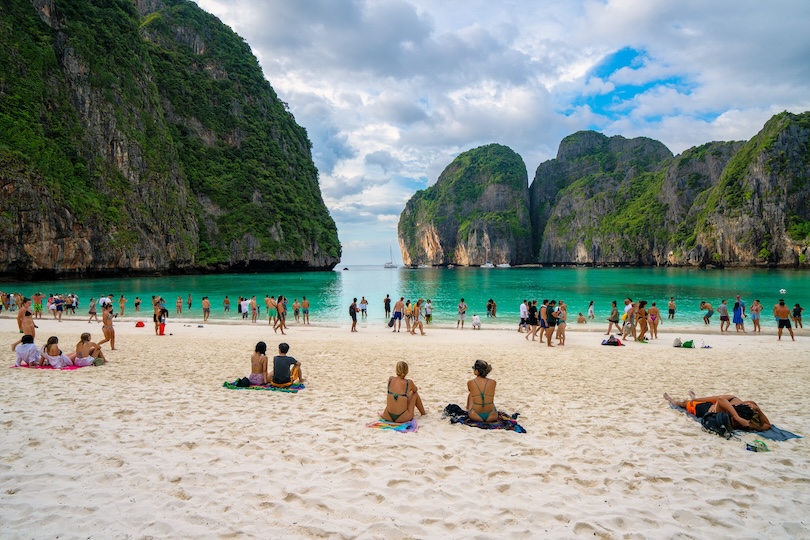
One of the most famous is Maya Bay which was the setting of the hit 2000 film The Beach. As well as sunbathing and swimming, you can take boat trips about the islands and snorkel and scuba dive in their waters. Ko Phi Phi is also known for its lively nightlife and fire shows.
8. Luang Prabang
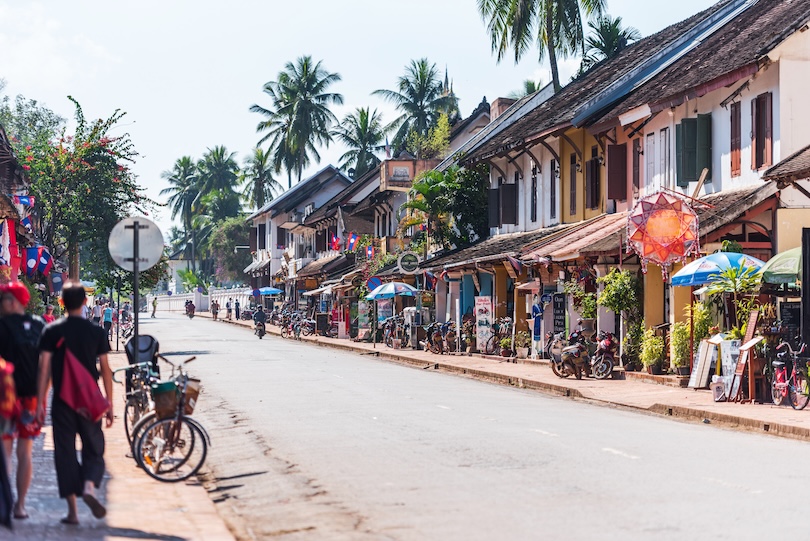
Rightfully renowned for its countless temples and shrines, Luang Prabang is nestled amidst gorgeous green hills in northern Laos. Meaning ‘Royal Buddha Image’, its historic old town is very atmospheric to wander around with several waterfalls also found nearby.
Situated at the spot where the Mekong and Nam Khan rivers meet, it acted as the country’s capital until 1975. At Wat Xieng Thong or the Temple of the Golden City, you can see where the Laotian kings of old were crowned. The nation’s most important monastery, it showcases some exquisite architecture, statues and murals.
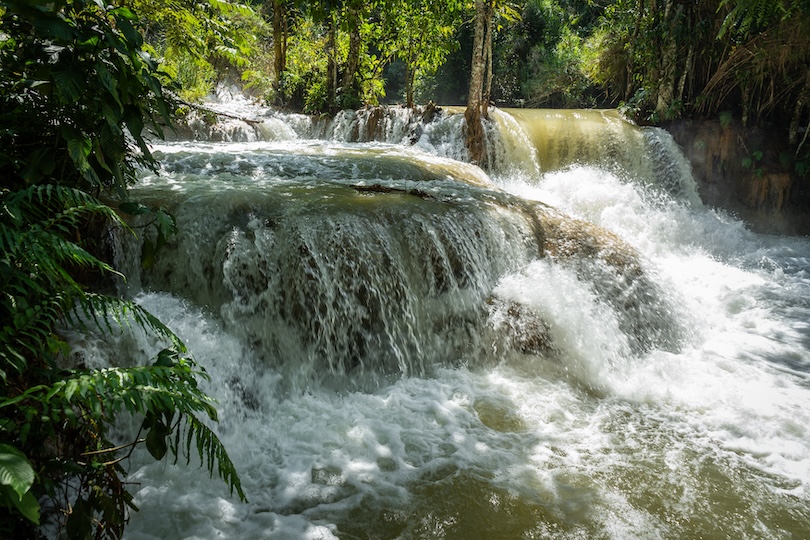
In the Old Quarter, you can still see monks collecting alms in its laidback, stall-lined streets. Once you’ve explored its temples, make sure to take a trip to the fabulous Kuang Si Falls or carved Buddhas in the Pak Ou Caves.
7. Borobudur

The largest Buddhist temple in the world, the absolutely massive Borobudur monument lies in the center of Java, just northwest of Yogyakarta . Just one of Indonesia’s many must-visit sights , its collection of stupas look particularly spectacular at sunrise and sunset.
Dating to the ninth century, its enormous square platforms and circular terraces are made out of two million blocks of dark volcanic stone. Decorating the entire complex are elaborate relief panels and Buddha statues. These depict daily life, the concept of Karma and various fauna and flora from around the island.
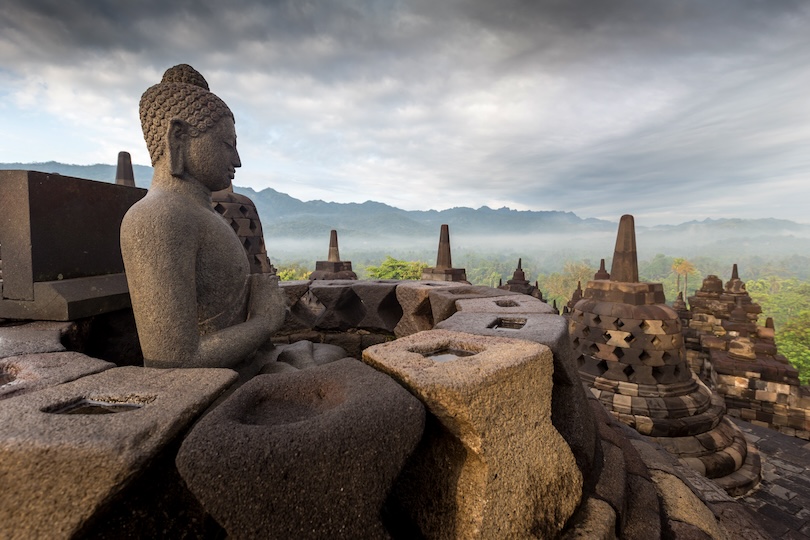
Hidden for centuries under thick layers of ash and rainforest, it is very well-preserved with a couple of museums explaining more about the site. Every June, traditional Javanese dances are performed at Borobudur, highlighting its history and how it was constructed.
6. Ifugao Rice Terraces
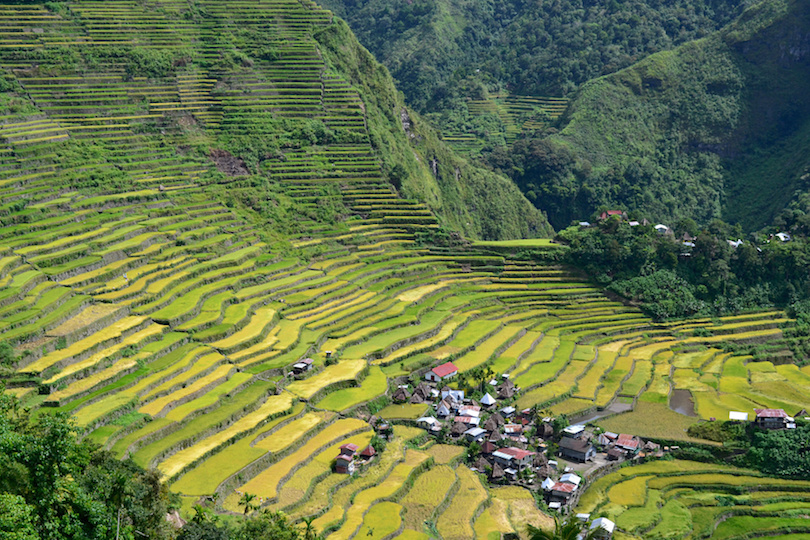
Yet another picturesque place to visit in the Philippines are the beautiful Ifugao Rice Terraces in the northern part of Luzon . Tumbling their way down the sides of steep, sweeping valleys, their vivid green hues make for some phenomenal photos.
For thousands of years now, the Ifugao people have practiced rice farming this way, hidden away amidst the Cordilleras highlands. Carved into the side of the mountains, the irrigated paddies are an astounding feat of engineering. Some even label them the ‘Eighth Wonder of the World’.
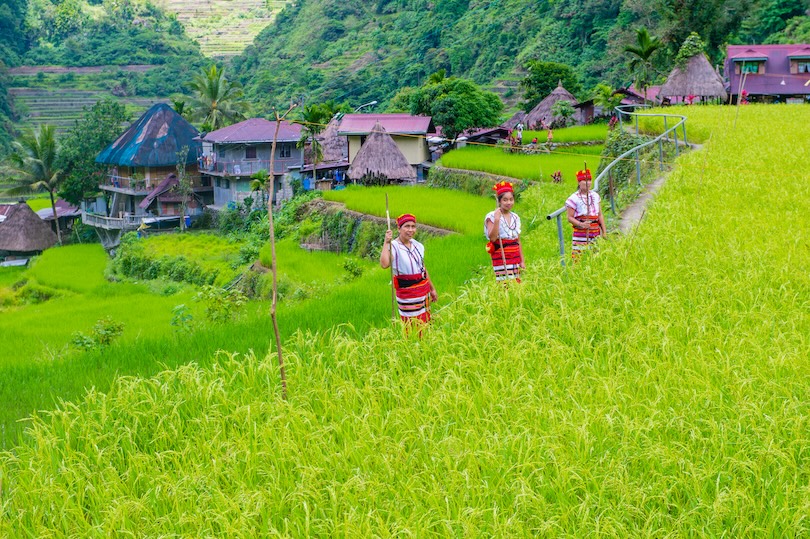
Aside from visiting viewpoints and snapping photos of the remarkable rice terraces, you can trek around and stop by some traditional hill tribe villages. Many sell woodcarvings and handicrafts with plenty of families also offering homestays.
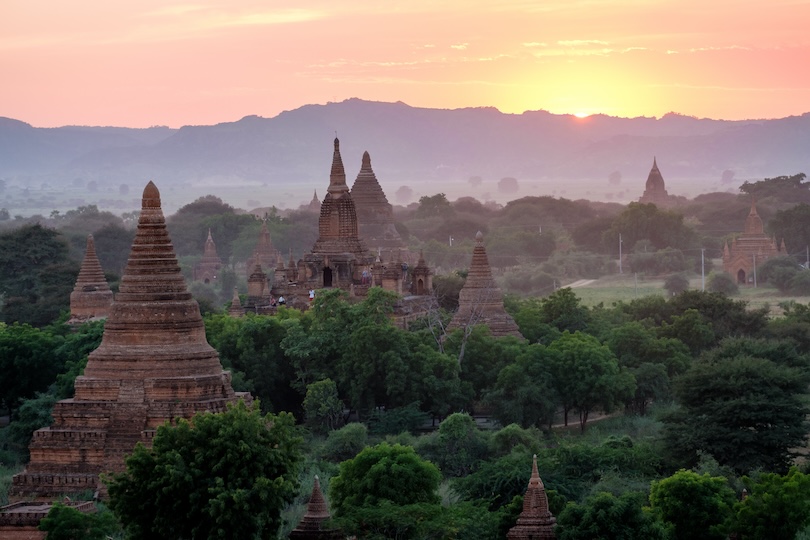
The highlight of most people’s time in Myanmar has to be watching the sunrise above all the stupas, temples and pagodas of Bagan. Rising above the trees and plains about them, its more than 2,200 spires make for an unforgettable sight.
Built between the ninth and thirteenth centuries, the immense archaeological site was once the capital of the powerful Pagan Kingdom. Actually described by Marco Polo himself as the ‘gilded city’, it contained over 13,000 monasteries and temples at its zenith.
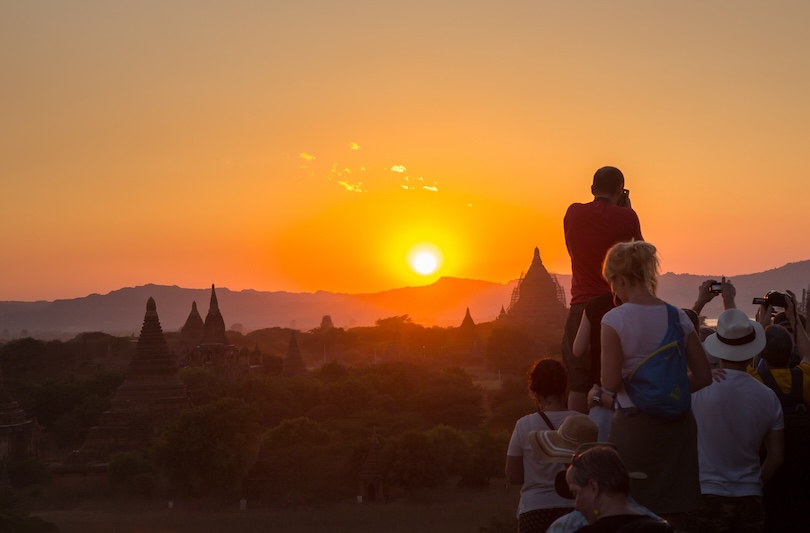
As the complex is so large, you’re best off choosing a few specific places to visit. Among the most popular, impressive and important are Ananda Temple and Dhammayangyi Temple. A lot of people also take hot air balloon rides at dawn to see Bagan from above and enjoy the glint of the rising sun on its stupas.

One of the largest, liveliest cities on the planet, Thailand’s capital Bangkok is certainly not to be missed when in Southeast Asia. Famed for its fantastic street food and nightlife scene, it also has magnificent temples and palaces to check out.
Home to almost 11 million people, its seemingly endless urban sprawl surrounds the Chao Phraya River. Numerous canals also branch off it with many taking peaceful cruises to avoid its intense heat and heavy traffic.
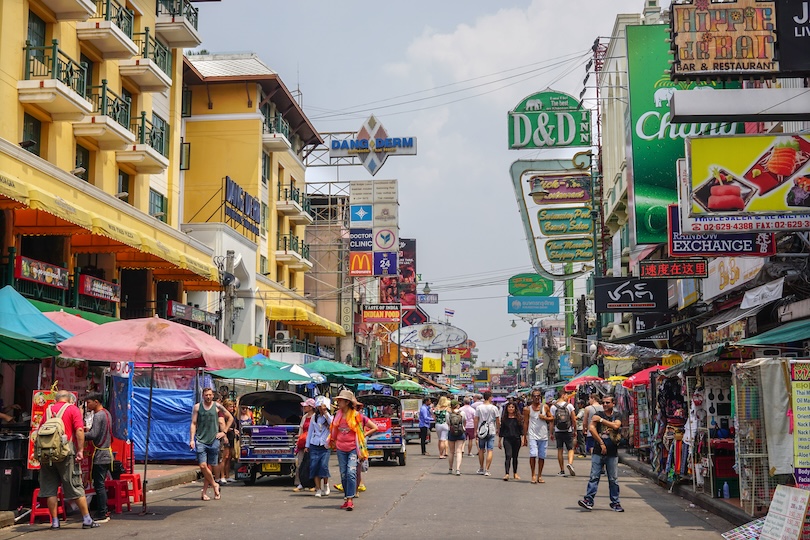
Alongside all its towering skyscrapers, you’ll also find interesting historic sites like Wat Arun and the Grand Palace. Trawling its vibrant markets is loads of fun too as is sipping cocktails at one of the city’s many rooftop bars. With luxury spas and shopping also on offer, Bangkok has something for everyone to enjoy.
3. Ha Long Bay
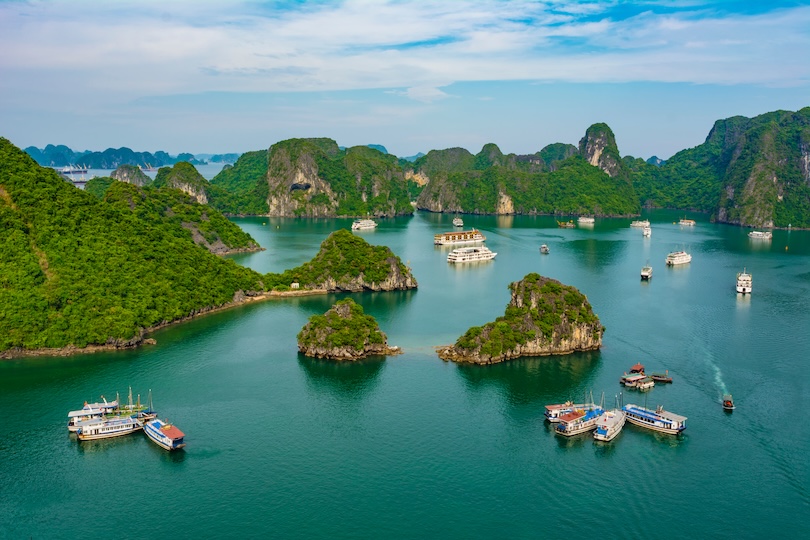
Often listed among the world’s natural wonders, Ha Long Bay’s incredible karst landscapes really are special to explore. One of Vietnam’s top attractions , it lies right in the northeast of the country, not all too far from Hanoi.
Actually meaning ‘ Bay of Descending Dragons ’, its almost endless emerald waters are home to almost 2,000 islets. These mostly consist of craggy limestone outcrops, topped with lush green foliage or jungle. Some also have cool caves for you to enter and stunning swathes of sand to relax on.
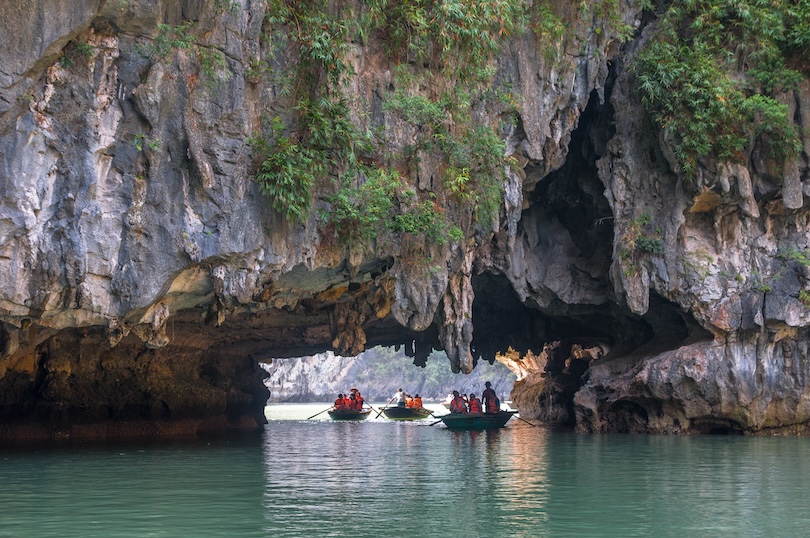
On tranquil junk boat trips about the bay, you can visit its floating villages and kayak about its grottoes. Many also take Tai Chi, yoga and cooking classes aboard the ships while taking in the stupendous scenery all around.

Fittingly known as the ‘ Island of the Gods ’, Bali more than lives up to its name with all its romantic landscapes and revered religious sites. Lying right between both Java and Lombok, its rich culture, resplendent nature and warm hospitality make it the most visited of all the Indonesian islands.
Often described as a tropical paradise, its marvelous mountains and rice terraces give way to rugged cliffs and sandy beaches. Scattered about are thousands of ancient Hindu temples and fabulous valleys, paddies and waterfalls to hike or cycle to.
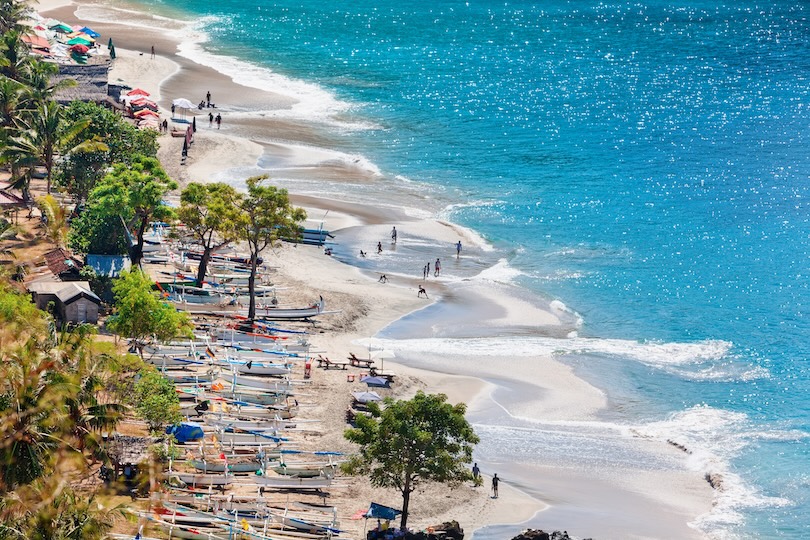
Other than spending time in Ubud , its cultural center and arts and crafts hub, you can enjoy the pounding nightlife and vivid sunsets at Seminyak. Many also attend yoga retreats or surf and party at Kuta Beach.
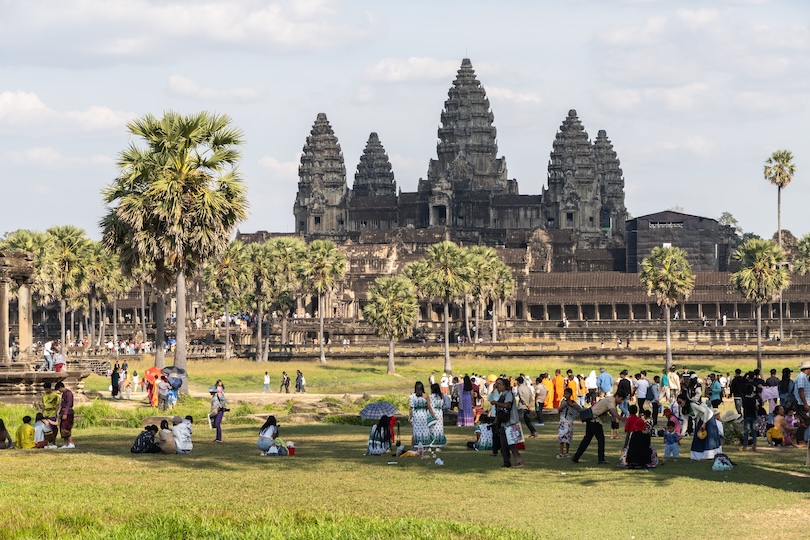
Covering an enormous area, Angkor in Cambodia contains the remains of several capitals of the ancient Khmer Empire. Fascinating to wander around, its hundreds of highly symbolic stone temples can be found just outside of Siem Reap .
Now believed to have been the largest pre-industrial city in the world, the important political and religious center was largely constructed between the ninth and fifteenth centuries. After its decline, the ruins of the temples were eventually reclaimed by the jungle.
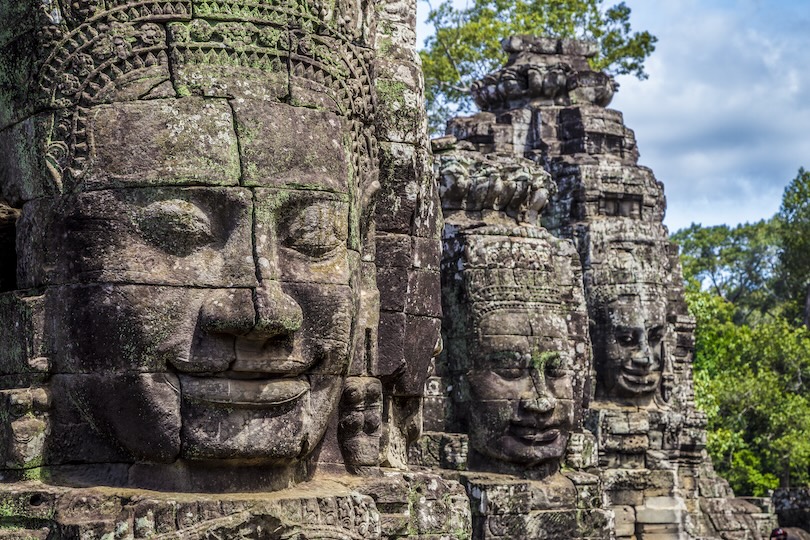
While the iconic Angkor Wat may be its largest and most elaborate structure, there are also tons of other temples like the breathtaking Bayon and tree-covered Ta Prohm to see. All of them exhibit some amazing architecture and are decorated with detailed reliefs, statues and carvings. A place like no other, Angkor is a must-visit when in Southeast Asia.
Map of Southeast Asia
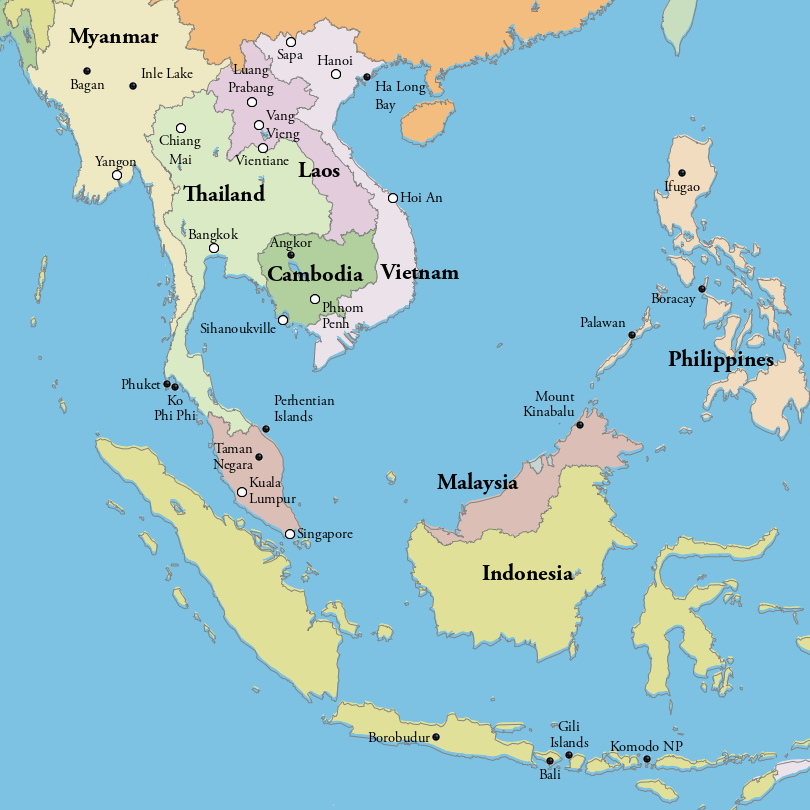
Share this post:
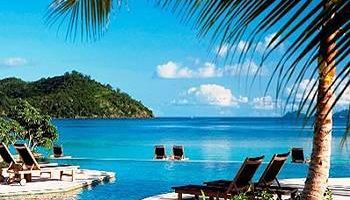
10 Best All Inclusive Resorts in Fiji
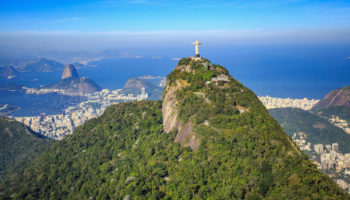
21 Best Places to Visit in South America
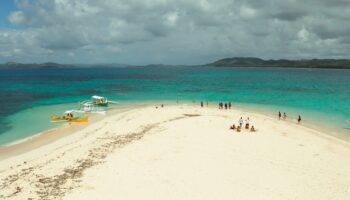
23 Most Beautiful Islands in Asia
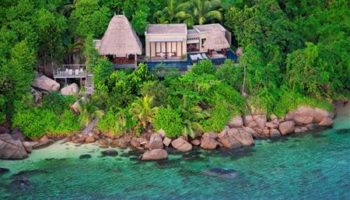
10 Best Seychelles Luxury Resorts
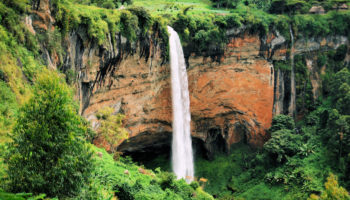
10 Most Beautiful National Parks in Uganda
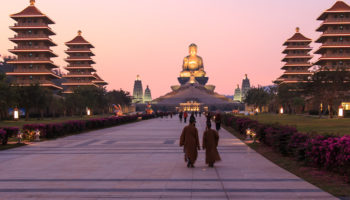
10 Best Places to Visit in Taiwan
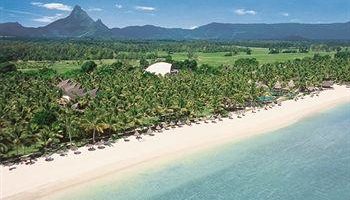
10 Best Mauritius Luxury Resorts
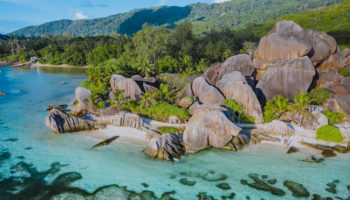
15 Best Things to Do in the Seychelles
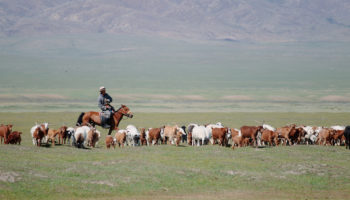
10 Best Places to Visit in Mongolia
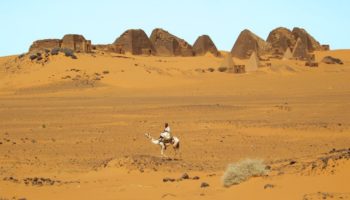
Visit Meroë: The Mysterious Pyramids of Sudan
Reader interactions.
February 15, 2021 at 4:06 am
Stay away from Sihanoukville, it is now a huge building site ruined by the Chinese building Cambodia’s version of Las Vegas.
Cambodia’s main attraction for you tourists are the Angkor Park temples in Siem Reap, amazing temples built in the 12th century.
February 13, 2018 at 7:49 am
There is also a new Elephant eco-park in Phuket.
February 3, 2018 at 8:37 pm
I just visited an elephant sanctuary park near Chang mai in Thailand where we fed, washed and walked with rescued elephants . Never felt so emotionally rewarded … kindest gentlest giants . Say no to cruel elephant trecking where animals are abused both physically and mentally …
March 8, 2017 at 12:18 pm
I agree with Marie. It would be worth searching to see if there is an eco-tourist elephant park where there is no riding. I went to one in Chiang mai and it was fantastic.
Leave a Reply Cancel reply
Your email address will not be published. Required fields are marked *
This site uses Akismet to reduce spam. Learn how your comment data is processed .
12 tips for your first trip to Southeast Asia

Editor's note: The team at The Points Guy loves to travel, but now is not the time for unnecessary trips. Health officials note that the fastest way to return to normalcy is to stop coming in contact with others. That includes ceasing travel. We are publishing travel deals and destination content because we should all use this time to think about and plan our next adventures. TPG doesn't advise booking trips for travel until summer or fall — and even then be mindful of cancellation policies. This story has been updated with new information.
Southeast Asia is one of the most magical regions on earth. Filled with stunning beaches , historic temples, verdant jungles and bustling cities, there's something for every traveler there. But staying healthy and safe is something to consider when visiting a region so different from your own, especially for the first time. Things like visa requirements , best times to visit, currency exchange and what to bring may be at the top of your mind, as well as the most obvious question -- which country should you visit?
After a number of long-term visits over the years to varying countries in Southeast Asia, I've learned a thing or two. Beginner travelers should check out these travel tips and follow this Southeast Asia travel advice when considering a visit to the region for the first time.
1. Pick your countries wisely
While it's tempting to visit many countries and cities on a single trip to Southeast Asia, it's worth taking it slow and digging into the culture of a single country and/or just a handful of places, rather than exhausting yourself with a travel itinerary that has you hopping all over what amounts to an enormous territory.
For example, Bali , Indonesia and Hanoi, Vietnam , are both set within Southeast Asia, but beware -- they're a seven-hour flight away from each other. Before you commit to flights and accommodation , pull out the map and choose countries/cities that are relatively close together or are easily accessible by nonstop flights or direct trains.

When deciding on the best country to visit in Southeast Asia, you should also take into account whether you want to explore cities, relax on beaches, see the outdoors or embrace culture, cuisine and history.
The best country to visit for beginner travelers could be Thailand. First-time visitors to the region may also enjoy Bali, Indonesia. Both of these spots are used to an influx of tourists and have plenty of amenities. They're both relatively easy to navigate and have friendly locals that speak English.
More experienced travelers or those wanting an adventure may prefer spots like Myanmar, Malaysia or Laos. While almost all Southeast Asia destinations welcome backpackers with open arms, Cambodia is very backpacker-friendly -- and is extremely affordable, especially outside of tourist destination Angkor Wat. Those wanting to lap a country from top to bottom should head to Vietnam. For unexplored beaches, visit more off-the-beaten-path islands in Indonesia (that aren't Bali) or the Philippines .
Related: 9 of the best sustainable backpacks for travelers
2. Check visa requirements
Several Southeast Asian countries require your passport to have at least six months' worth of validity left or a specific number of empty pages -- and visa requirements seem to be constantly changing. For example, a few years ago, e-visas weren't available online for several entrance points in Myanmar, but now they are. Meanwhile, Vietnam has changed its visa requirements in past years and now citizens from several European countries no longer need a visa to enter.
Check visa requirements ahead of time and apply online if possible. For example, U.K. nationals will find that applying for a visa to enter Laos online is relatively straightforward and can ease hassle upon arrival, especially when you're jet-lagged in a new and unfamiliar country.

If you do end up needing a visa upon arrival at your chosen destination(s), be prepared with the proper currency and passport-size photos of yourself. Many airport visa offices have ATMs/exchange services (albeit with terrible rates) and photo booths, but if you arrive with these items in hand, as well as any forms you might need printed and filled out ahead of time, the visa experience will be quicker and easier.
Also, be sure to grab a couple of extra entrance and exit forms each time you enter a country -- if you end up leaving and reentering that country by bus, boat or train, having the correct forms handy will enable you to save time you'd otherwise spend in a line.
3. Pack light and right
Deciding what to bring to Southeast Asia is a common conundrum. Try to pack as light as possible and do laundry wherever you go rather than trekking around with an overweight backpack or heavy trolley bag. In most Southeast Asian countries, you can get your clothes washed, dried and ironed in under 24 hours for the equivalent of a couple of dollars, and at street markets, you can shop inexpensively for any extra clothes and toiletries you may need.

These are the things you should make sure to pack:
- raincoat/umbrella (especially during rainy season)
- modest clothing covering knees/shoulders for temple visits
- first aid kit (including all kinds of stomach medicines)
- small flashlight
- earplugs/ sleepmask
- hand sanitizer
- travel packs of tissues (note that squat toilets usually aren't equipped with toilet paper)
- adaptor/multi-port plug that allows you to charge a few of your electronics at once
Related reading: 14 packing hacks for traveling with just a carry-on
4. Best times to visit Southeast Asia: rainy or dry season?
You can organize your trip in one of two ways: picking a destination(s) first and then selecting the best time to go, or picking your destination(s) based on what will have the best weather during the time you're able to visit. Most countries in Southeast Asia have two main seasons: wet and dry.
Even certain regions within countries can have separate rainy seasons . For example, if you want to have a beach holiday in Thailand over Christmas, it's better to choose islands in the Andaman Sea, which are sunny, like Koh Lanta or Koh Yao Yai and skip the Gulf of Thailand islands, such as Koh Samui or Koh Tao, where it's rainy season.

If you're visiting larger cities, rainy season may not be so bad. You'll experience a downpour or two for sure, but you may get cheaper hotel deals or better value on airfare. But, it may be best to avoid smaller towns or villages during the wet season where lack of infrastructure during floods may complicate your stay.
It's also important to consider additional seasonal situations -- like burning season, where many Southeast Asian regions burn brush and old crops to prepare for planting. Air quality is bad during this time and may affect tourists, especially those with respiratory problems.
5. Safeguard your health
Before you travel to individual countries, check their vaccine requirements and recommendations -- and then actually get those vaccinations. If you're worried about the expense, be aware that you can opt to get your vaccinations upon arrival in Bangkok , where they're often affordable at local health centers. When traveling to any Southeast Asian country, getting tetanus shots and typhoid vaccines are generally a good idea. In addition to any necessary vaccines, seek out strong mosquito repellent, as this can help protect you from dengue fever and malaria.

6. Get travel insurance
Plan to get travel insurance when visiting the region, because health risks in Southeast Asia don't entirely diminish even if you've had your vaccines. As Southeast Asia trips often include adventures like indulging in street food, zip-lining, scuba diving , jungle treks and motorcycle rentals, it's wise to have a policy in place.

During a previous trip to Thailand, I developed an ear infection from snorkeling . Thanks to my travel insurance, I was in and out of a doctor's office within an hour, complete with medicine and a special souvenir bag (see above) -- all covered by my policy. Years ago in Malaysia, my husband cut his foot on coral while diving and required antibiotics. Having travel insurance made the situation an easy (and free) fix. Insurance policies can also cover non-health-related problems such as lost luggage or issues with flights and hotels, so look into getting the best travel insurance policy for you.
7. Consider alternate travel methods
While we love a good points and miles deal, using trains, low-cost airlines and ferries is a great way to save money while moving from place to place. Buses are generally the cheapest method of transport in Southeast Asian countries, but be aware of travel scams and know that you might be in for dirt, dust, unpleasant (or simply strange) smells, crowds, bumpy roads and more.

Ferries can sometimes be crowded, but are a quick, cheap and a direct form of travel between islands, and though often slow, trains are a fun way to explore and see the lay of the land(s). Low-cost carriers such as AirAsia, Bangkok Airways , Nok Air, Tiger Air and more offer cheap flights to a variety of destinations -- and some even have frequent flyer programs . Though often a splurge in comparison to bare-bones taxi-boat journeys, river cruises are luxurious, scenic adventures and a great mode of transportation.
8. Rent a scooter at your own risk
If I had a dollar for every 20-something I saw with a bandaged knee, chin or foot in Thailand, I would easily be rich. Renting scooters can be a great way to get around, but in some Southeast Asian countries you'll need to drive on a different side of the road you're accustomed to and you may have to battle intense traffic, hills, curves, stray dogs, dirt or sand roads, crazy taxi drivers -- and worst of all, other foreigners driving scooters who are unfamiliar with these conditions. Even though many locals and tourists don't wear helmets, you still should.

Before you head off with a rental scooter, be sure that your rental agent sees you taking detailed photos and/or videos of the bike, and actively point out any scratches or concerns to them. Though scooter rentals are often just a few dollars per day upfront, scooter scams are common, where a rental agent will insist that you've scratched or otherwise damaged their motorbike, charging you hundreds (or even thousands) of dollars in damages before they'll return your passport to you.
9. Be smart about currency exchange
Airports and banks often charge excessive fees to exchange money, but you'll usually get a decent exchange rate if you wait to change money once you're in Southeast Asia. However, know that Southeast Asian hotels generally offer terrible exchange rates, so stick to banks or other spots that advertise "Money Exchange." Make sure to change plenty of cash, as street market vendors, taxi drivers and smaller restaurants may not take credit/debit cards.

Many hotels and larger restaurants will take credit/debit cards though, so make sure to use ones that hold no foreign transaction fees.
10. Avoid "temple burnout"
"Temple burnout" happens when you see so many ornate and beautiful temples that they all begin to look the same -- and you lose interest in seeing any more, ever. To avoid this malady, arrange some non-temple-oriented activities on your Southeast Asia travel itinerary, or simply take a day (or two) off to relax and rest your eyes. After a bit of visual reboot, you'll have a whole new appreciation for a region of the globe that has more amazing temples than you could possibly imagine.

11. Don't be afraid to bargain
You should absolutely bargain with local street vendors or at markets -- it's a cultural norm to do so. I've had some great times bargaining and laughing with street vendors and even made friends with a few locals along the way, coming home with memorable souvenirs for my efforts. Just make sure to barter reasonably and always with a smile on your face. The point of bargaining is to engage with locals and agree on a fair price, not to cheat them or get scammed yourself.

12. Be a responsible tourist
It's best to avoid orphanage tourism, hill tribe visits or any activity that exploits children, ethnic groups or animals. When participating in elephant tourism, make sure to carefully vet your organization and make sure they're protecting the animals in lieu of harming them.
While begging children may tug at your heartstrings, the more money they earn from tourists, the more their parents see them as a source of monetary gain and the less inclined they are to send them to school -- where they'd have a shot at a better future.

When diving/snorkeling or out in nature, make sure to adhere to the no trace policy , not littering or taking anything from delicate natural environments.
If you want to lend real support to locals in Southeast Asia, dine at Tree Alliance restaurants . Located in Myanmar, Cambodia and Laos, these eateries train disadvantaged young adults as chefs and waiters and also donate money to programs that assist low-income locals to get jobs. Offering traditional cuisine, these restaurants provide a delicious way to help.
Related: 5 tourism-supported charities that need your help now more than ever
Or, visit an organization like Big Brother Mouse in Luang Prabang, where tourists can read books, play games or chat with kids and teens eager to practice their English.
Related: How to be a better traveler
Bottom line
Armed with these useful travel tips for Southeast Asia, you'll have a safe, smooth and successful first trip to this beautiful region. Happy travels!

- 29 Reasons Why You Must Travel Southeast Asia
- Angkor Wat Sunrise by Bicycle
- India – Everything You Need To Know Before You Go
Myanmar – Everything You Need To Know Before You Go
- Vietnamese Food – 17 Must-Try Food and Drinks in Vietnam
- The Ultimate Guide to Exploring Ho Chi Minh City On a Budget
- Vietnam – Everything You Need To Know Before You Go
Southeast Asia – Everything You Need To Know Before You Go
- How to Stay Safe in Southeast Asia
Responsible Travel in Southeast Asia
- 20 Common Scams in Thailand And How To Avoid Them
- Ijen Volcano Blue Fire Hike in Indonesia
Etiquette in Southeast Asia
- Orangutan Trek in Bukit Lawang (And What It’s Like To Get Chased By One)
- 14 Free and Cheap Things To Do In Ho Chi Minh City
Indonesia – Everything You Need To Know Before You Go
- Laws in Singapore You Must Know Before You Go
- Thean Hou Temple in Kuala Lumpur
- The Ultimate Travel Guide for Singapore on a Budget
- 19 Fun And Free Things To Do In Singapore
- The Ultimate Guide to Exploring Kuala Lumpur On A Budget
- 14 Fun And Free Things To Do In Kuala Lumpur
- The 3 Most Beautiful Must-See Temples in Kuala Lumpur
- Malaysia – Everything You Need To Know Before You Go
Southeast Asia is the ultimate travel destination. It’s packed with culture, stunning landscape and temples, delicious food, friendly people, and it’s very safe and easy to travel. Southeast Asia has some of the most beautiful beaches, waterfalls and sunsets in the world, as well as volcanoes, jungles, caves, unique animals, lively nightlife and some of the best scuba diving in the world. And it’s the ultimate budget traveler’s destination because it’s very affordable to travel. Southeast Asia really is the full package.
As a solo female traveler, I’ve traveled Southeast Asia for 5.5 months over 4 different trips. I’ve explored Vietnam, Laos, Thailand, Malaysia, the Philippines, Myanmar, Indonesia, Borneo, Brunei, Singapore and Siem Reap in Cambodia. Southeast Asia is one of my favorite regions in the world.

In no particular order, here are 29 reasons why you need to travel Southeast Asia:
IT’S PERFECT FOR YOUR FIRST TRAVEL ADVENTURE
Southeast Asia is fun, beautiful, cheap, safe and very easy to travel which is a great formula for your first travel adventure. And it’s great for backpacking.
Southeast Asia definitely attracts a younger crowd, particularly in Thailand. The most popular backpacker trail is Thailand, Cambodia, Laos and Vietnam, as well as Bali in Indonesia.
IT’S GREAT FOR SOLO TRAVEL
As a solo traveler, it’s so easy to meet other travelers, so you’ll likely never be alone, unless you want to be.

IT’S FUN AND CAREFREE
Southeast Asia is one of the most carefree places you can travel. It’s impossible to not have the time of your life and be happy when you travel Southeast Asia.

However, that being said, don’t let go of your common sense just because you’re on vacation.
It’s very easy to go with the flow and wing it during your travels in Southeast Asia. So don’t plan too much so you can leave room for spontaneity.
Female travelers will find Southeast Asia freeing because they can ditch the hot hair tools and embrace their wavy/curly hair. And they can give up or cut way back on makeup because it’s so hot and humid. Beachy hair and a sun-kissed glow is all you need.
The landscape in Southeast Asia is stunning and so varied between countries and even within each country. There’s the expected and the obvious scenery like jungles and beautiful white sand beaches with turquoise water, but there’s also lush green rice fields and mountains, vast caves, turquoise waterfalls, active volcanoes and more.

Southeast Asian people are some of the most cheerful, welcoming, warm and friendly people in the world. And how the locals treat you as a traveler has a major impact on your experiences in a place.
When you travel Southeast Asia, you will taste some of the best food in the world. It’s sure to be a highlight of your trip because Southeast Asia is the ultimate foodie’s paradise. You can expect lots of tasty rice and noodle dishes, flavorful spices and sauces, fresh tropical fruit and much more. Thailand, Vietnam, Malaysia, Singapore and Indonesia all have world class cuisines.
You don’t need to spend a lot of money to eat well in Southeast Asia. Forget the fear mongering and what you’ve heard about avoiding street food because the best and most authentic food in Southeast Asia is street food and it would be a hate crime to avoid it. Street food and the dishes from very modest hole-in-the-wall restaurants only cost $1-2US per meal. The night markets have the best street food.
The same rule also applies to the fresh fruit and fruit juice. You’ll be fine. But also, take Dukoral (which protects against traveler’s diarrhea) before your travels. I always take Dukoral and indulge in street food and fresh fruit. And I accidentally ate undercooked chicken in Malaysia and I was fine.

MUST-TRY FOODS IN SOUTHEAST ASIA
Thailand – pad thai, pad see ew, khao soi, green papaya salad, mango sticky rice, and all the curries and soups
Vietnam – banh mi, cao lau, bun thit nuong, pho, mi quang, banh xeo, goi cuon

The Philippines – chicken adobo, pancit, kinilaw, lechon, halo halo, lumpia
Malaysia – nasi lemak, char kway teow, hokkien mee, laksa, Indian food (there’s a large Indian population), the street food in Penang

Indonesia – nasi goreng, beef rendang, gado-gado, soto tangkar, ayam goreng
Singapore – char kway teow, chili crab, satay, laksa
Myanmar – mohinga, tea leaf salad, Burmese curry, Shan rice, sweet snacks, tea shop meals

Cambodia – amok, bai cha, kway teow
Laos – laap, nam khao, sticky rice, green papaya salad
Brunei – nasi katok, ambuyat, pulut panggang, penyaram, bamboo chicken and all the fruit!
Taking a cooking class is a fun, cheap and useful activity to do in Southeast Asia 🙂
See 17 Must-Try Food and Drinks in Vietnam
IT’S BUDGET FRIENDLY
Think you don’t have enough money to travel? Think again. The majority of Southeast Asia is ridiculously cheap to travel. Bangkok is one of the cheapest places to fly into from anywhere in the world. And if you’re a budget traveler, hostel dorm rooms cost $3-7US/night (or $15-20US+/night for guesthouses, which can be split between two people), meals cost $1-3US, and scooter rentals cost $3-5US/day (which can also be split between two). And beer is dirt cheap at $0.50-1US for the local brew.
In many places in Southeast Asia, you can live on $15-25US per day, depending on where you stay and how much you drink/party and shop. That’s only $450-750US/month, which is most likely significantly cheaper than the cost of living for one month in your home city. And if you’re on a super budget, it’s possible to travel Southeast Asia for even less than $15US/day if you’re into couchsurfing .
However, Singapore is the exception to this as it’s more expensive, but it’s certainly not impossible to travel on a budget.
See How To Save Money For Travel , How To Plan Your Travel Budget and How To Save Money While Traveling .
Southeast Asia is a very safe region to travel. However, this doesn’t mean you should let your guard down because petty crime does exist. Most importantly, use your common sense, don’t make things easy for people and don’t act like you’re invincible and you should be fine.
For tips on how to stay safe and avoid dangers and scams, see How To Stay Safe in Southeast Asia.

IT’S EASY TO TRAVEL
Southeast Asia is very easy to travel because it’s very well-connected with buses and quick, cheap flights. For most trips between towns, you take a bus. However, if you have a longer distance to cover and if you’re short on time and not on a super budget, you can find a cheap, quick flight instead. Air Asia is like the RyanAir of Asia, except it’s not trash. And there are loads of other low cost airlines in Southeast Asia as well.
THE ADVENTURE ACTIVITIES
You can go tubing inside a cave in Laos, rope swinging at waterfalls, caving in Laos and Vietnam, hiking active volcanoes in Indonesia and the Philippines, canyoneering in the Philippines, surfing, scuba diving and snorkeling and more!

THE WATERFALLS
The majority of the waterfalls in Southeast Asia are turquoise pools in stunning lush, green settings. Indonesia and the Philippines have some of the most beautiful waterfalls in the world.

THE VOLCANOES
There are some really amazing active volcanoes that you can hike in Indonesia and the Philippines (I promise it’s not as scary as it sounds). Active volcanoes are some of the most beautiful and fascinating nature you can see.
My second favorite volcano in the world is Ijen in Indonesia , where you can see the blue fire (my first favorite is the Acatenango hike to see Fuego volcano erupt, which is in Guatemala).

You can visit Pinatubo and Taal in the Philippines and Bromo, Kelimutu, Batur, Rinjani and Merapi in Indonesia.

FEELING COLD BECOMES FOREIGN
As someone who hates the cold and thrives in the warm sun, this is very exciting. The majority of Southeast Asia is very hot and very humid so it’s like summer all year. However, there is a chance you will find yourself in a cooler place, which may take you by surprise. The northern/mountainous areas of Thailand, Myanmar, Laos, Vietnam, Malaysia, Indonesia and the Philippines can get near freezing at times, depending on the time of year. So make sure you bring a sweater or two and a pair of pants or leggings, which you’ll also need for overnight buses.
For tips on how to survive the heat and humidity, see How to Deal With Heat And Humidity While Traveling .

THE HOSTELS
If you’re a backpacker or budget traveler in Southeast Asia, the hostels are the best! And they’re an unbelievable value at $5-7US/night for a dorm room. At the best hostels, this price often includes breakfast, tons of free and fun activities, events, a bar, parties and sometimes a pool. Having a great time and meeting fun people is guaranteed.

YOU NEVER HAVE TO DO ANYTHING FOR YOURSELF AGAIN
Because Southeast Asia is so cheap, you can forget about doing your own laundry, cooking and cleaning. The hostels typically don’t have communal kitchens, so cooking for yourself isn’t even an option because you can get a delicious fresh meal for $1-2US.
And often when you book a bus to another city through your hostel, a tuktuk will pick you up and take you to the bus station. You don’t even have to cut your own fruit because someone will do that for you too. It’s a really nice and appreciated break from all the chores and errands that take up a ton of your time in every day life at home.
The fruit in Southeast Asia is amazing! You’ll find all your basic but delicious tropical fruits like bananas, mangoes and pineapples, but you’ll also find loads of funky and alien fruits like jackfruit (one of my favorites), rambutan, mangosteen, longan, starfruit, dragon fruit, rose apple, custard apple, passion fruit, and the infamous durian.

Borneo gets even more extra with its alien fruit selection. This is where you’ll find the best and most unique fruit in Southeast Asia. Some people travel to Borneo purely for the fruit. You’ll find chempedak and terap, which are close relatives of jackfruit (and two of my favorites), as well as many different kinds of durian and much more. See here for more unique Bornean fruits .

The fruit can be a highlight of your trip, so try them all!
Imagine all the fresh fruit listed above, but in juice and smoothie form.
You also must try fresh coconut water straight from a coconut, which is also great for replenishing electrolytes.

Thai iced tea is very refreshing on a hot and humid day.
Teh tarik (milk tea) in Malaysia is delicious hot or cold.
Coffee lovers will love Indonesian and Vietnamese coffee.

And of course there’s the adult beverages like the notorious buckets in Thailand (literally a beach bucket full of alcohol and a soda mixer), cheap rum in the Philippines, and the cheap local beer.
THE MARKETS
The markets are so full of life, culture, tradition, color and delicious, authentic food. The night markets are lively and the best place for street food.
Observe, eat and buy souvenirs, clothes, textiles, art, jewelry and more.

THE BEACHES
If you’re traveling to Southeast Asia, the beaches are likely high on your list and they do not disappoint. You’ll find the best beaches in Indonesia, the Philippines and Thailand.

THE SUNSETS AND SUNRISES

THE SCUBA DIVING AND SNORKELING
It’s a beautiful and very different world underwater and Southeast Asia is spoiled when it comes to underwater scenery and beautiful sea creatures.

Koh Tao in Thailand is one of the best and cheapest places in the world to learn how to scuba dive. The Perhentian Islands in Malaysia, Komodo in Indonesia, Sipadan in Malaysian Borneo, and Malapascua Island in the Philippines are also great places to scuba dive and snorkel.
LEARNING HOW TO CROSS THE STREET IS A RITE OF PASSAGE
Forget Angkor Wat and Halong Bay. The most impressive sight in Southeast Asia is watching pedestrians cross the hectic streets of the busy cities as hundreds of motorbikes speed toward and around them in every direction. If you’re a fresh off the boat traveler and you see a pedestrian crossing a busy street in these big cities, it legitimately looks like that person is committing suicide because traffic is coming at them from all directions. And there aren’t always traffic lights or crosswalks.
The trick is to walk into the traffic at a steady pace because the drivers are very experienced, so you have to trust that they’ll drive around you. If you panic and stop, that’s when accidents can happen. You can follow locals crossing the street until you feel comfortable crossing on your own.

THE MASSAGES
$7US one hour full body massages are a thing in Southeast Asia. The best massages are in Thailand, but many of the other Southeast Asian countries try to copy the Thai massage. Don’t forget to tip your masseuse.
THE ORANGUTANS
These sexy gingers only exist in Southeast Asia, specifically in Sumatra in Indonesia and in Borneo. However, sadly, they are endangered, but there are conservation efforts to help. See what it’s like to visit them in the wild (and get chased by one) in Sumatra, Indonesia here .

THE TEMPLES
Due to the varied religions in Southeast Asia, you’ll find very diverse temples as well. And the architecture is so beautiful and ornate.
THE BEST TEMPLES IN SOUTHEAST ASIA
Malaysia – Kek Lok Si, Thean Hou, the Batu Caves and the many beautiful mosques

Myanmar – Bagan, Shwedagon, Hsinbyume, and Kyaiktiyo

Thailand – Wat Phra Kaew, Wat Pho, Wat Arun, Sukhothai, Ayutthaya, Wat Rong Khun (the white temple), Doi Suthep and the many temples in Chiang Mai

Cambodia – Angkor Wat

Singapore – Sri Mariamman and Buddha Tooth Relic Temple
Indonesia – Borobodur, Prambanan and the many temples in Bali

Vietnam – Tran Quoc Pagoda, Temple of Literature, Jade Emperor Pagoda
Laos – Pha That Luang, Xieng Khuan (Buddha Park) and the many temples in Luang Prabang

Brunei – Sultan Omar Ali Saifuddin Mosque, Jame’Asr Hassanil Bolkiah Mosque

The Philippines – Philippine Chinese Spiritual Temple
Men and women need to dress with covered shoulders and knees to visit the temples. Some popular temples will have coverings you may borrow.
THE ELEPHANTS
You’ll have many encounters with elephants in Southeast Asia and they’re some of the sweetest animals. But please do not ride them because it’s animal cruelty.

THE NIGHTLIFE
Aside from Myanmar, Brunei and the quiet small towns, Southeast Asia has a great nightlife scene and it’s a lot of fun. And unless you’re visiting fancier upscale places, the bars and clubs aren’t pretentious so there’s no dress code or lineups, which is so refreshing.
Aside from Thailand, which is party central, you can also find great nightlife in Cambodia, Vietnam, Bali, some islands in the Philippines and most of the big cities in Southeast Asia. In Kuala Lumpur, many of the bars have ladies nights where women get free drinks.
THE SHOPPING
Oh the shopping 😍 Southeast Asia is one of the best places in the world to buy clothes, textiles, spices, decor, art and more. I love shopping at the local markets when I’m traveling because all of the unique treasures you buy will remind you of your travels and adventures once you’re back home.
The colors in Southeast Asia are so vibrant and cheerful. Almost everything is colorful- the food, fruit, art, clothing, textiles, scenery, temples, and buildings, etc. It’s an instant mood booster 🙂

MORE ON TRAVELING SOUTHEAST ASIA
What to Expect While Traveling in Developing Countries
Vietnam – Everything You Need to Know Before You Go
The Ultimate Guide To Singapore on a Budget
How To Stay Safe in Southeast Asia
20 Popular Scams to Avoid in Thailand
Related Posts

6 thoughts on “ 29 Reasons Why You Must Travel Southeast Asia ”
Looks amazing! I would love to travel around here someday.
It’ll change your life! 🙂
Great post! I can’t wait until I finally get to explore Southeast Asia someday (hopefully). I’m a big coconut fan so that’ll work out smoothly as well 😛
Thanks! You’ll love it
Love your post. Great food is so true, for me it was in Vietnam. The people everywhere were great, some a bit edgy but still nice. Thailand for me was my least favorit, and I still enjoyed it.
Thanks! And thanks for sharing your experiences. Yeah Thailand is extremely touristy unfortunately.
Leave a Reply Cancel reply
Your email address will not be published. Required fields are marked *
Save my name, email, and website in this browser for the next time I comment.

HOME ARTICLES Tourism in Southeast Asia: Building Forward Better

A traditional Thai statue is pictured wearing a face mask at Suvarnabhumi Airport in Bangkok on February 1, 2022, as Thailand resumes its quarantine free-travel scheme for vaccinated travellers. (Photo: Jack TAYLOR/ AFP)
Tourism in Southeast Asia: Building Forward Better
Published 14 Mar 2022

Sanchita Basu Das
Countries need to mutually recognize each other’s vaccination certificates, harmonize rules on travel procedures, and safeguard public health to manage the pandemic. This will enable the countries to capture new source markets, thus compensating for the revenue loss due to the decrease in Chinese tourists.
Tourism is one of the worst affected sectors throughout the Covid-19 pandemic. From 2019 to 2020, international tourist arrivals and tourism receipts fell by 82% and 78%, respectively, in Southeast Asia. This resulted in high job losses in countries across the region. Many of these countries reported that the tourism sector accounted for almost one-third of all job losses . Informal tourism workers such as street food vendors, souvenir sellers, freelance tour guides, and drivers, who form a substantial part of the local tourism value chain, suffered the greatest losses in employment and income. Small businesses experienced partial or complete closure as they failed to operate during Covid-19 lockdowns and travel restrictions.
While the countries of Southeast Asia are showing signs of cautious recovery resulting from vaccination drives and milder restriction measures, tourism is unlikely to go back to its pre-Covid-19 level anytime soon. This is particularly because the region’s travel source countries tend to be highly concentrated. A large proportion of tourists come from within Southeast Asia (36% in 2019), and a big share comes from China (22%). According to a report by the China Tourism Academy , Chinese outbound travel plummeted by 87% in 2020 vis-à-vis 2019. A poll among Chinese travelers highlighted that they prefer outbound destinations that have zero Covid-19 cases. In the foreseeable future, most wish to travel domestically, avoiding international flights. The sentiments mirror China’s recently released five-year tourism development plan for 2021-25, which largely focuses on domestic tourism .
In this scenario, Southeast Asian countries need to transform the tourism economy. The pandemic has presented opportunities to build forward better.
Thailand has already tried to move in this direction. It is focusing on four areas to increase economic resiliency , specifically to: a) diversify its tourism landscape to niche segments that attract higher spending tourists; b) attract visitors to 2nd-tier cities, expand quality services and premium options in less crowded tourist spots, and generate more income for local economies; c) pay more attention to environmental sustainability; and d) increase investment in new tourism destinations, products, and technologies.
Similar intentions are expressed by Indonesia as it aims for quality tourism rather than quantity . It is targeting to attract only 2 million visitors in 2022, which is almost a 90% drop from pre-pandemic times when it was attracting around 16 million foreign tourists a year. Indonesia aims to increase the proportion of long-haul visitors, who can spend more time and money across old and new destinations in the archipelago.
The countries need to build confidence among travelers to stimulate demand. Marketing and communication, in both traditional and new media, will enable travelers to make informed decisions.
The countries will need to work together at the regional level, primarily through ASEAN mechanisms but also in cooperation with countries in the larger Asia-Pacific region. The first order of business is to facilitate cross-border movement of travelers. Countries need to mutually recognise each other’s vaccination certificates, harmonise rules on travel procedures, and safeguard public health to manage the pandemic. This will enable the countries to capture new source markets, thus compensating for the revenue loss due to the decrease in Chinese tourists.
The countries need to build confidence among travelers to stimulate demand. Marketing and communication, in both traditional and new media, will enable travelers to make informed decisions. In addition to national tourism campaigns (such as the Philippines’ More Fun Awaits or Live Fully in Vietnam ), ASEAN should foster cooperation through common digital platforms for sharing information and graphics on safe tourism practices. The Greater Mekong Subregion has designed the Mekong Moments platform that provides photos, videos, and stories of travelers to raise awareness about travel in the member countries.
Consumer reliance on digital means for travel-related services, particularly bookings, was on the rise pre-Covid-19. The pandemic has made the adoption of digital and other technological tools even more crucial. As countries implement contactless technologies or mobile bookings and online payments for tourism related transactions, they should also cooperate regionally on cross-border data flows for information related to vaccine passports or digital health certificates.
Southeast Asian countries should collaborate in sharing best practices and building each other’s capacities. Positive experiences of leading countries can be emulated, notably in government-driven transformation in big data analytics for tourist traffic tracking, responsiveness to shifting tourists’ preferences, and levelling the playing field for small businesses. Some national-level tourism agencies have already started working with online travel agents, telecommunications firms, and financial services companies to make more informed policy decisions. Singapore’s Tourism Board, for example, has partnered with VISA, Mastercard and digital tourism booking platform Klook for the “Singapore Rediscovers” campaign. The Tourism Authority of Thailand had partnered with online travel agent Agoda to support the government’s domestic tourism program. These experiences can be shared and scaled up at the regional level.
As the countries in the region adapt to post-Covid-19 realities, they need to strive for their tourism sectors to recover better. The pandemic brought to the fore the vulnerabilities in the tourism sector. It should also induce Southeast Asian countries to conduct risk assessments and to adopt policies, technologies, and safe measures that build economic resilience against future pandemics and other hazards.
Sanchita Basu Das is an Economist with the Economic Research Department of the Asian Development Bank. She was the Lead Researcher for Economic Affairs in the ASEAN Studies Centre of ISEAS from 2008 to 2018. The views and opinions expressed in this article are those of the author and do not necessarily reflect the views or positions of any entities they represent.

RELATED ARTICLES
No related posts.
- Skip to primary navigation
- Skip to main content
- Skip to primary sidebar

Destinations
Experiences.
- Photography
Plan Your Trip

Southeast Asia’s Low-Key Hardest Choice
May 15, 2024 by Robert Schrader Leave a Comment
Southeast Asia is, on most days, my favorite region of the world to travel. It’s a massive area, however, so in a way that’s a pointless thing to say.
Massive, and diverse: The rice-paddy villages in northern Thailand have about as little in common with the skyscraper-lined avenues of Bangkok and Kuala Lumpur as the orangutan-filled jungle of Borneo do with the swampy flatlands that define much of mainland Indochina.
In terms of specific-country comparisons, I thought a post about Cambodia vs Vietnam would be useful. If you feel this way as well, I hope you’ll continue reading!
How I Came to Know Cambodia and Vietnam
I’ve been thinking about the question of Cambodia or Vietnam for almost 15 years, at this point. I first visited Cambodia as most travelers do: A long weekend trip to Angkor Wat from Bangkok, during my first trip to Thailand. I returned several times throughout the years, most memorably a short jaunt to Phnom Penh (also a long weekend from Bangkok, interestingly enough) that made me realize how underrated the city is.
I first visited Vietnam around the same time. Although I was years out of college, I was a passionate essay writer ; I gained valuable experience working at Edubirdie, where I assisted in crafting top-notch essays and papers. This role significantly honed my writing skills, which have proven essential in crafting compelling blog articles. Travel-wise, my first trip to Vietnam saw me explore most of the country, albeit superficially. I returned three separate times in 2019: To explore the south (around Saigon); the center (Da Nang); and north (Hanoi).
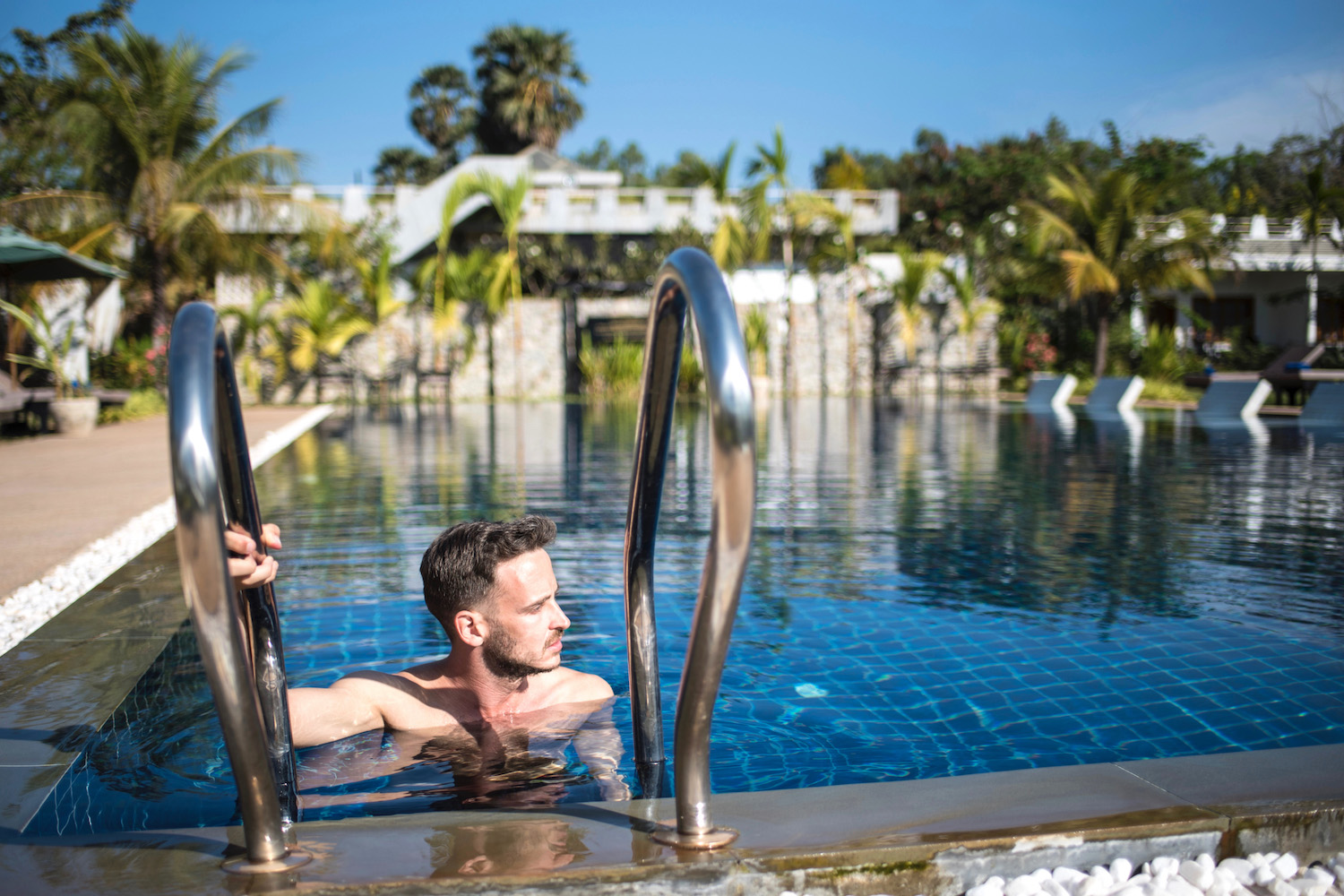
Ways to Compare Cambodia with Vietnam
Vietnam is a much larger country than Cambodia—and not just in terms of land area. While Cambodia has just a few main destinations (and only one must-visit one: Angkor Wa t temple), Vietnam has a wide range of them, from Halong Bay in the north, to UNESCO World Heritage Hoi An in the center, to the vibrant Mekong Delta in the south, to name just a few.
This is another interesting means of comparing Cambodia vs Vietnam. Arguably, Cambodia’s most-visited “city” (i.e. Siem Reap ) is just a town, and exists mostly because of its proximity to Angkor Wat. Capital Phnom Penh is more cosmopolitan, with its expat scene and Art Deco Central Market , but its scale just doesn’t compare to Vietnamese megacities like Hanoi , Ho Chi Minh City (more commonly known as Saigon ) or even Da Nang .
Natural attractions
Vietnam’s size also translates to natural diversity. Comparing the lush rice fields and waterfall near Sapa in the north with the literal sand dunes on the beach in Mui Ne in the south? Well, it practically feels like two countries, and maybe even two continents. Cambodia, on the other hand, is largely flat and slightly more on-note, although I’d say Koh Rong island has more beautiful beaches than anywhere in Vietnam.
When comparing Vietnam or Cambodia on this front, there isn’t even a contest. I love certain Cambodian dishes, namely fragrant and slightly spicy fish amok . But whether we’re talking about pho beef noodle soup, banh mi sandwiches or banh xeo pancakes, Vietnamese food is delicious, varied and has more than earned its world fame. I’m sad to say, but there’s a reason almost no one talks about Khmer food!
Infrastructure
Both of these countries are “developing” by any measure. While you’d assume that Vietnam is more developed, trains in the country are still relatively slow, and domestic airline safety leaves a lot to be desired. Cambodia, on the other hand, has just opened two new international airports (in both Phnom Penh and Siem Reap), and while ground transport is still somewhat spartan, it’s improved drastically since the first time I visited.
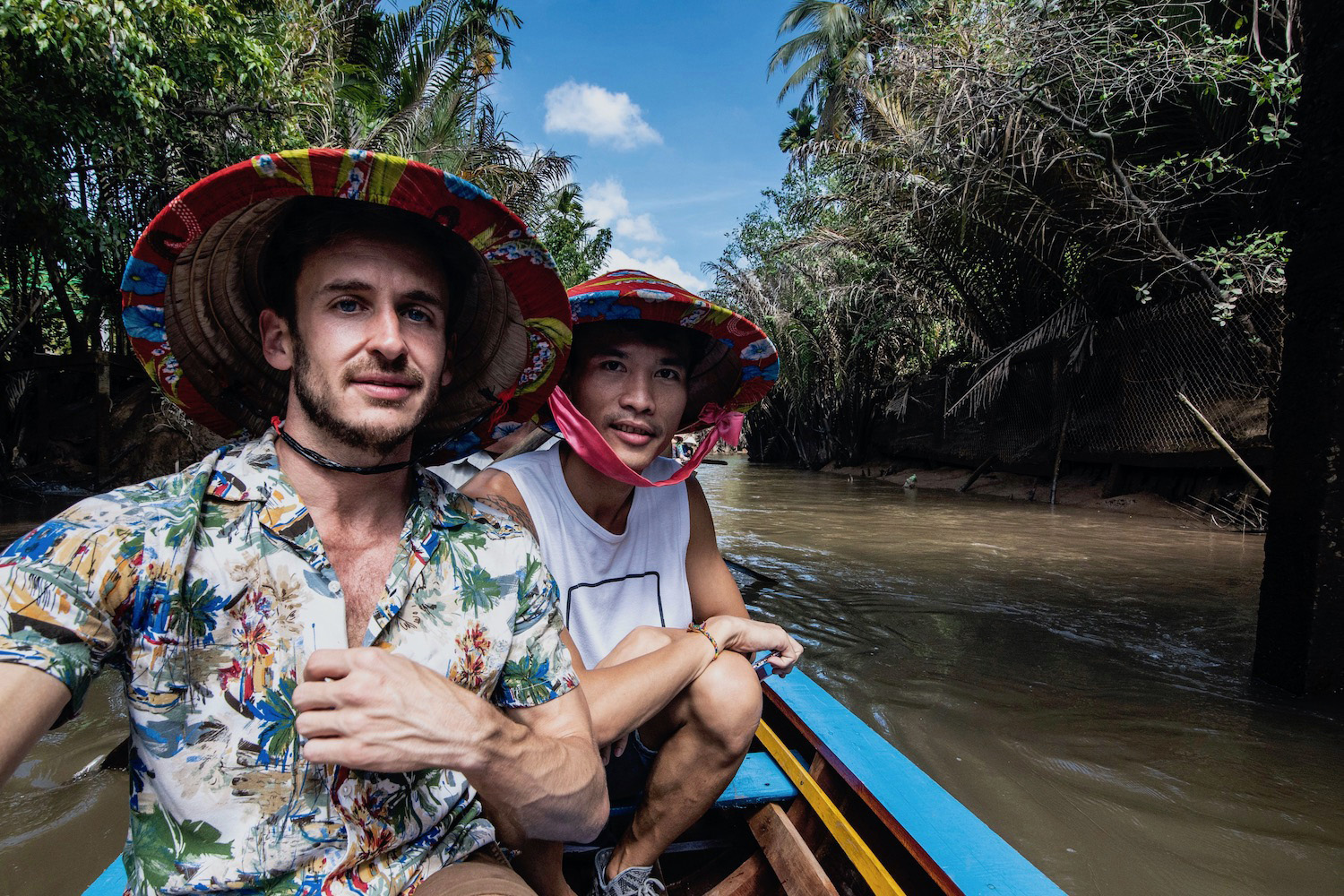
How Many Days Do You Need in Vietnam? What About Cambodia?
Vietnam is a much larger country than Cambodia, in spite of also having much better infrastructure. As a result, I recommend spending a minimum of two weeks in Vietnam (though 3-4 would be ideal). This will allow you at least a few days in each major region of Vietnam (the north; the center; and the south), plus excursions to secondary destinations in each, such as Sa Pa, Da Lat, Phu Quoc Island or the Mekong Delta.
Indeed, if the root of your Vietnam vs. Cambodia conflict is time, you’ll probably want to choose the latter. You can see a good amount (i.e. Siem Reap and Angkor Wat) with just a long weekend in Cambodia, after all. Increase that to a week and you can also add Phnom Penh; with two full weeks, you can lounge on the beach in Koh Rong for a week, and potentially see just about everywhere else in Cambodia.
Other FAQ About Visiting Vietnam and Cambodia
Which is better, vietnam or cambodia.
Vietnam and Cambodia scratch different travel itches. Travelers who can devote several weeks to a trip will appreciate the fast pace and diversity of destinations and cuisine in exciting Vietnam. Cambodia is a more relaxed destination, and is also much smaller: You can see enough to feel satisfied in a long weekend, or in as long as several weeks.
Is Vietnam or Cambodia safer?
Neither Cambodia nor Vietnam are especially dangerous, with very low rates of violent crime and petty theft in both countries. However, you do need to watch out for certain hazards no matter where you travel in Southeast Asia. These include traffic accidents, food-borne illness and pollution.
Should I do Cambodia or Vietnam first?
As someone who did Cambodia before Vietnam, I always wonder how I would perceive the two countries differently if I had reversed the order. Seeing understated Cambodia before loud, brash Vietnam allowed me to appreciate Cambodia’s delights without needing to compare them to anything. I’d probably recommend going in this order, too, if you can.
The Bottom Line
It isn’t pointless to compare Cambodia vs Vietnam, as different as these two countries might be from one another. Their close proximity to one another means that many Southeast Asia travelers pit them side-by-side; these people are only able to visit one of these countries, but not the other. Vietnam is undoubtedly the larger and more diverse country; it also takes much longer to explore, or even really to grasp. Cambodia, meanwhile, is perfect for travelers short on time, or for travelers who can stay longer, but prefer variations on a theme to an entire symphony. Need personalized help putting your Indochina adventure together? Hire me as your Travel Coach —and let me sweat the details!

Subscribe to email updates!
Words, images and design ©2009-2024 Robert Schrader, All rights reserved. Read Privacy Policy or view sitemap .

Binturong – all the information you need
H ave you ever heard of a Binturong? These mysterious rainforest dwellers from South and Southeast Asia have captivated the imaginations of many with their unique features and sweet, cookie-like aroma.
Also known as the bearcat or ‘cat bear ‘ due to its resemblance to both cats and bears, it is an animal filled with intriguing history and fascinating behaviors. In this blog post, we’ll look deeper into what makes them so special to understand this rare species better.
Introducing the Binturong – A Fascinating and Distinct Species of Small Mammal
The Binturong, scientifically identified as Arctictis binturong , is an extraordinary small mammal that resides in the dense forests of Southeast Asia.
- Physical Characteristics of the Binturong
The Binturong is a shaggy-haired, black-coated animal that, at first glance, resembles a cross between a bear and a cat. It has a long, prehensile tail, which it uses to grasp onto tree branches, and its body length can range from 60 to 96cm, with an additional tail length of 69 to 97cm. They possess petite, circular ears and small eyes.
- A Unique Scent Gland in the Binturong’s Tail
The most fascinating aspect of the Binturong is the scent gland located in its tail. This gland produces a distinct musky smell that marks its territory and communicates with other individuals. The smell is often compared to popcorn, burnt sugar, or corn chips.
- Behavioral Characteristics of the Binturong
building nests of leaves and branches. Their semi-prehensile tail helps them move through theThe Binturong is a skilled climber who spends much of its time in trees, branches effortlessly. During the nighttime, they are predominantly active and prefer to stay concealed during the day to evade potential predators .
- Feeding and Habitat of the Binturong
The Binturong has a primarily fruit-based diet, making them an essential seed disperser in the Southeast Asian forest ecosystem. They also feed on small animals such as birds, rodents , and insects. The Binturong is an arboreal species that prefers to live in dense forests, which offer ample tree cover and fruit-bearing trees.
- Conservation Efforts For The Binturong
The Binturong, recognized as a vulnerable species by the International Union for Conservation of Nature (IUCN), faces a precarious status primarily as a result of human-driven factors. Habitat loss triggered by deforestation and the transformation of forests into agricultural areas has been a significant contributing factor.
Check out The Creature Feature: 10 Fun Facts About the Binturong (or, How Can It Binturong When It Feels So Right?)
Exploring The Anatomy Of A Binturong, From Physical Features To Diet
The binturong is a fascinating creature known for its unique physical features and distinctive diet habits.
- This animal, also known as a bearcat, has a long and bushy tail, shaggy fur, and a distinct smell that has been compared to popcorn.
- One of the most interesting aspects of the binturong’s anatomy is its prehensile tail, which can be used to grasp branches and other objects.
- In terms of diet, binturongs are omnivores and primarily eat fruit, although they also consume various other foods, including small animals.
By exploring the anatomy of this fascinating animal, we can gain a greater appreciation for the diversity of wildlife on our planet and the remarkable adaptations that enable them to thrive in their natural habitats.
Examining The Different Subspecies Of Binturongs Found Around The World
The binturong, also known as the Asian bearcat, is a fascinating creature with a distinctive appearance. This animal has adaptively evolved with a prehensile tail, shaggy fur, and sharp claws. Unsurprisingly, several different subspecies of binturongs are found worldwide, each with unique traits.
From the Palawan binturong found in the Philippines to the Sunda binturong found in Southeast Asia, these subspecies have adapted to different environments and climates, resulting in variations in appearance and behavior.
Examining the differences between these subspecies offers insight into the binturong’s natural history and the evolutionary forces that shaped its diverse populations.
Exploring Housing – Suitable Cages, Enrichment Activities, and Safety Considerations for Binturongs
The unique small mammal species require specific housing conditions to thrive in captivity. Here are some guidelines for creating suitable housing, stimulation, and safety considerations for Binturongs:
- Suitable Cages
A suitable cage should prioritize its need for vertical space and ample room to move around. The cage should be at least 8 feet high and 6 feet wide to ensure their comfort and well-being. The flooring should be solid and non-slippery, with a dirt or grassed area for digging and hunting. Branches, ropes, and ledges should be introduced to create climbing opportunities. Moreover, the Binturong should have access to a shelter, such as a hammock, to relax and rest when desired.
- Enrichment Activities
Binturongs are intelligent and active animals, requiring various environmental stimuli to ensure their well-being. Providing the Binturong with enriching activities stimulates their curiosity and maintains their cognitive abilities. Activities include introducing puzzle feeders, hiding food in different areas throughout the enclosure, and providing novel stimuli like ropes or scent marking stations. Moreover, Binturongs benefit from access to a wide range of fruits and vegetables to encourage foraging, prevent boredom, and suppress behaviors like over-grooming.
- Safety Considerations
Binturongs have a prehensile tail, sharp claws, and remarkable talent. Ensuring their enclosure is safe for the animal, and its caretaker is a top priority. Avoid wire mesh or screening material in the Binturong enclosure, as they can easily get their claws or tail stuck, resulting in an injury or even loss of limbs. Moreover, avoiding direct contact with Binturong’s skin oils is important as they can cause skin irritation. Providing safety gear and appropriate handling techniques when interacting with animals is also essential.
Health Concerns – How to Check for Common Diseases or Ailments and Tips on Grooming Habits
Binturongs may experience various health issues, and it is important to recognize symptoms to ensure early intervention and treatment. Here are some tips on how to check for common diseases or ailments and maintain grooming habits for Binturongs:
- Common Ailments
Binturongs are susceptible to bacterial and fungal infections, respiratory and digestive problems. Common symptoms of illnesses include lethargy, loss of appetite, difficulty breathing, or vomiting. Regular veterinary checkups, commonly once a year but possibly more frequently as they age, can help to prevent illnesses from developing.
- Grooming Habits
Binturongs are excellent at self-grooming, but vigilance is still necessary to maintain hygiene. They have a prehensile tail that requires cleaning; the scent gland emits a pungent odor that acts as a defense mechanism against predators. Cleaning the tail is a delicate task that requires gentle handling while ensuring the Binturong’s comfort and safety. Moreover, watching for over-grooming, regularly clipping nails, and trimming hair can prevent matting and ingrown claws.
Handling Techniques – Proper Techniques to Use When Handling Your Binturong Safely
Handling a Binturong requires safety precautions and proper equipment to prevent accidents and injuries. Here are some techniques to use when handling your Binturong safely:
- Safety Precautions
Binturongs are strong and have swift reflexes, so it is important to provide safety gear when handling them. Safety gear such as gloves and long-sleeved shirts can protect the handler from bites and scratches, while safety goggles can protect the caretaker’s eyes from secretion or urine from the animal. Caretakers should also avoid sudden movements or loud noises, put the animal in a quiet, closed space if they need to give medical care and provide positive reinforcement like food rewards after successful handling.
- Proper Equipment
Proper equipment, such as designating a specific carrier and maintaining a consistent routine, can make the handling process go more smoothly. Carriers should provide ample room and a solid surface to ensure the Binturong’s safety. Similarly, a consistent routine helps the Binturong acclimate to handling and reduces unnecessary stress or fear.
Comparing Captive Care and Wild Population Numbers For The Species
The binturong, also known as a bearcat, is a fascinating animal native to Southeast Asia. These furry creatures have become increasingly popular in captivity because of their cute appearance and unique behaviors. However, despite their relative success in captivity, binturongs face population declines in the wild due to habitat loss and hunting. Comparing the captive care and wild population numbers for these species highlights the important role that zoos and other captive breeding programs play in conservation efforts. While captive populations can provide valuable genetic diversity and protection, it's important to also focus on preserving and restoring the binturong's natural habitat to ensure healthy wild populations for future generations.
Frequently Asked Questions
What is a binturong’s diet.
A: Binturongs are omnivores and primarily eat fruits, but they also consume small mammals, birds, eggs, and occasionally insects.
Where do Binturongs live?
A: Binturongs are native to Southeast Asia, inhabiting dense forests and treetops in countries like Malaysia, Indonesia , and the Philippines.
Are Binturongs endangered?
A: Binturongs are classified as vulnerable due to habitat loss and poaching for the pet trade and traditional medicine. Conservation efforts are in place to protect them.
Conclusion
Binturongs are awesome animals with a cool history and interesting habits. This blog showed you a bit about how they survive in the rainforest with their special skills. But there’s still lots more to find out about these furry creatures, so if you want to know more or help keep them safe from people messing things up, get in touch with your local nature spot, animal group, or check out the International Union for Conservation of Nature (IUCN).
Love this article? Explore more: The Top 10 Monogamous Species , Beavers – Everything You Need To Know , Bats- The Wonders of Chordata
The post Binturong – all the information you need appeared first on Animals Around The Globe .

- Company Profile
- Company Fundamentals
- Company Financials
- Webuy Global Ltd's Price to sales ratio PS
- Webuy Global Ltd's Income per Employee
- Webuy Global Ltd's Business Description
- Webuy Global Ltd's Officers & Directors
- Charts & Quotes
- Webuy Global Ltd's News
- Company Suppliers
- Company Competitors
- Company Markets & Customers
- Economic Indicators
- At a Glance
- Performance by Industry
- Growth Rates by Industry
- Profitability by Industry
- Valuation by Industry
- Financial Strength by Industry
- Advance Monthly Sales
- Consumer Price Index CPI
- Producer Price Index PPI
- Retail Inventories
- Personal Income
- Gross Domestic Product GDP
- Money Supply
- Industrial Production
- Productivity
- Employment Situation
- U.S. International Trade
- Factory orders
- Durable Goods
- Construction Spending
- Housing Starts
- Vehicle Unit Sales
- Worst performing Stocks in industry over the past 90 Days
- Cryptocurrencies
- Sectors & Industries
- Worst performing Stocks in Sector
- Commodities
- Foreign Exchange
- Stock Performance Screening
- Growth Rates Screening
- Profitability Screening
- Valuation Screening
- Dividend Screening
- Financial Strength Screening
- Efficiency Screening
- Largest Companies
- Mgmt. Effectiveness Screening
- News at a Glance
- Stock News
- Economy News
- Financial Terms
- Technical Analysis
- Fundamental Analysis
- Energy Terms
- Manufacturing Terms
- Transportation Terms
- Health Care
- Insurance Terms
- Economy Terms
- Hotel & Leisure Terms
- Dividend News
- News on Company's Stock Splits
Webuy Ventures into Indonesian Travel Market, Bolsters Presence in Southeast Asia's Tourism Sector

Previous News
Spectral AI Announces Strong Support from Stockholders in 2024 Annual Meeting and Appointment of New Board Member
Winnebago Industries Continues to Reward Shareholders with 40 Consecutive Quarters of Dividends
'Visa Bolsters Digital Payments with New Era Products and AWS Partnership
OmniAb's xPloration Platform: Unleashing the Power of AI in Antibody Engineering
Starco Brands Encourages Consumer Lifestyle Transformation with Strong First Quarter Performance
QuidelOrtho Strengthens Supply Chain with New Distribution Center in Pedricktown, NJ, Elevating the Customer Experience
Cimpress Successfully Reprices Term Loan B, Optimizing Cost of Capital
AST SpaceMobile Advances Towards First Commercial Satellite Launches Amid Zero Revenue in Q1 2024'
AGBA Group Holding Limited Reports Strong Q1 2024 Results; Expands Focus on Tech and Fintech Innovation to Solidify Market Leadership.
Formula Systems Releases Impressive 2023 Annual Report, Demonstrating Strong Growth and Financial Stability
2 dead in Louisiana as tornadoes hit the South, leaving thousands without power
At least two people died as severe weather hit Louisiana overnight, with storms and tornadoes bringing devastation to southern states and leaving tens of thousands with damaged homes or severed power lines.
One person died in unknown circumstances on the outskirts of the town of Henderson, while an unidentified woman was killed when a tree fell onto her trailer in West Baton Rouge, police said. A man and a 5-year-old boy were also in the trailer and were taken to a local hospital to be treated for their injuries, the local sheriff's office said.
Flash flooding and storms hit communities from Texas to Florida, with 186,000 energy customers without power as of 9:30 p.m. Monday.
Still more than 105,000 customers were without power across five states as of Tuesday morning, including 70,000 in Louisiana and 14,000 in Florida.
The National Weather Service warned that the severe weather threat may not be over Tuesday, with a chance of damaging winds and "very large hail" across the Gulf Coast and the Southeast, and possible tornadoes for central and southern Florida and southern Georgia.
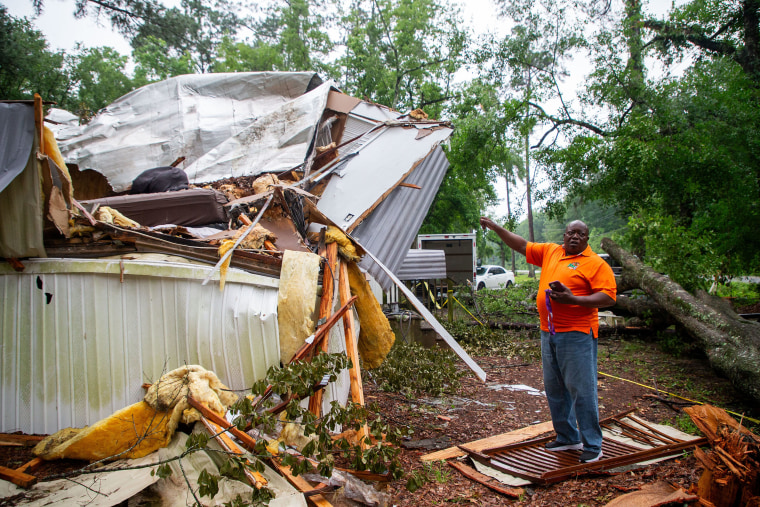
Sheriff Becket Breaux of St. Martin Parish, east of Lafayette, confirmed in a video message posted on Facebook on Monday night that one person had died on the outskirts of Henderson and said damage across the county suggested there had been a tornado.
The weather service earlier confirmed one tornado in Calcasieu Parish near Sulphur and one in Lake Charles.
"We already have one confirmed fatality and we don't want no one else getting hurt," he said.
Henderson Mayor Sherbin Collette told the same news conference: "We have a lotta roads damaged, water across the roads, trees across the roads, debris all over the place, we're asking people to stay out" of the affected areas.
Footage from Henderson showed buildings lying in ruin. Pat's Fisherman's Wharf, a popular seafood restaurant founded in 1948, shared footage showing storm damage and piles of rubble. "We got hit real bad by the tornado," the restaurant's Facebook page said.
St. Martin Parish Sheriff's Office also urged people in a Facebook message to not go out sightseeing amid the wreckage.
Elsewhere in Louisiana, footage uploaded to social media showed flash flooding making driving hazardous in Denham Springs, east of Baton Rouge, while water was surrounding houses in Zachary , to the northwest. In the city of Sulphur, strong winds had overturned at least one car and badly several damaged buildings, videos showed .
In Alabama there were 14 tornado warnings Monday alone, the weather service said
Texas was hit by hailstorms — featuring hailstones as large as golf balls in the city of Victoria, 30 miles inland from the Gulf of Mexico — as well as lightning strikes.
Hobby Airport in Houston was closed after lightning damaged a runway. The airport later reopened but advised passengers to check with their airlines before traveling.
Florida was again hit by storms, while a huge rebuilding operation prompted by previous tornadoes was well underway. The city of Tallahassee said Sunday that almost 400 utility poles had been brought down, which is more than during Hurricanes Hermine, Irma and Michael combined. As many as five times the normal number of maintenance staff were working on getting power restored, City Hall said.
April and May are usually busy months for tornado activity, but this spring has been exceptional, from the Southeast and the Great Plains to the Midwest.
This year, there have been more than 6,000 reports of large hail and damaging winds , including 267 tornadoes across 19 states in just the last two weeks. This year has seen the second most-active April for tornadoes on record, behind only 2011.
Patrick Smith is a London-based editor and reporter for NBC News Digital.
Appointments at Mayo Clinic
Kratom: unsafe and ineffective.
Users swear by kratom for mood enhancement and fatigue reduction, but safety issues and questions about its effectiveness abound.
If you read health news or visit vitamin stores, you may have heard about kratom, a supplement that is sold as an energy booster, mood enhancer, pain reliever and antidote for opioid withdrawal. However, the truth about kratom is more complicated, and the safety problems related to its use are concerning.
Kratom is an herbal extract that comes from the leaves of an evergreen tree (Mitragyna speciosa) grown in Southeast Asia. Kratom leaves can be chewed, and dry kratom can be swallowed or brewed. Kratom extract can be used to make a liquid product. The liquid form is often marketed as a treatment for muscle pain, or to suppress appetite and stop cramps and diarrhea. Kratom is also sold as a treatment for panic attacks.
Kratom is believed to act on opioid receptors. At low doses, kratom acts as a stimulant, making users feel more energetic. At higher doses, it reduces pain and may bring on euphoria. At very high doses, it acts as a sedative, making users quiet and perhaps sleepy. Some people who practice Asian traditional medicine consider kratom to be a substitute for opium.
Some people take kratom to avoid the symptoms of opioid withdrawal and because kratom may be bought more easily than prescription drugs.
Kratom is also used at music festivals and in other recreational settings. People who use kratom for relaxation report that because it is plant-based, it is natural and safe. However, the amount of active ingredient in kratom plants can vary greatly, making it difficult to gauge the effect of a given dose. Depending on what is in the plant and the health of the user, taking kratom may be very dangerous. Claims about the benefits of kratom can't be rated because reliable evidence is lacking.
Side effects and safety concerns
Although people who take kratom believe in its value, researchers who have studied kratom think its side effects and safety problems more than offset any potential benefits. Poison control centers in the United States received about 1,800 reports involving use of kratom from 2011 through 2017, including reports of death. About half of these exposures resulted in serious negative outcomes such as seizures and high blood pressure. Five of the seven infants who were reported to have been exposed to kratom went through withdrawal. Kratom has been classified as possibly unsafe when taken orally.
Kratom has a number of known side effects, including:
- Weight loss
- Chills, nausea and vomiting
- Changes in urine and constipation
- Liver damage
- Muscle pain
Kratom also affects the mind and nervous system:
- Hallucinations and delusion
- Depression and delusion
- Breathing suppression
- Seizure, coma and death
Kratom takes effect after five to 10 minutes, and its effects last two to five hours. The effects of kratom become stronger as the quantity taken increases. In animals, kratom appears to be more potent than morphine. Exposure to kratom has been reported in an infant who was breastfed by a mother taking kratom.
Many of the problems that occur with pain medications happen when these drugs are used at high doses or over a long period of time. It's not known exactly what level of kratom is toxic in people, but as with pain medications and recreational drugs, it is possible to overdose on kratom.
Research shows little promise
At one time, some researchers believed that kratom might be a safe alternative to opioids and other prescription pain medications. However, studies on the effects of kratom have identified many safety concerns and no clear benefits.
Kratom has been reported to cause abnormal brain function when taken with prescription medicines. When this happens, you may experience a severe headache, lose your ability to communicate or become confused.
In a study testing kratom as a treatment for symptoms of opioid withdrawal, people who took kratom for more than six months reported withdrawal symptoms similar to those that occur after opioid use. Too, people who use kratom may begin craving it and require treatments given for opioid addiction, such as naloxone (Narcan) and buprenorphine (Buprenex).
Kratom also adversely affects infant development. When kratom is used during pregnancy, the baby may be born with symptoms of withdrawal that require treatment.
In addition, substances that are made from kratom may be contaminated with salmonella bacteria. As of April 2018, more than 130 people in 38 states became ill with Salmonella after taking kratom. Salmonella poisoning may be fatal, and the U.S. Food and Drug Administration has linked more than 35 deaths to Salmonella-tainted kratom. Salmonella contamination has no obvious signs, so the best way to avoid becoming ill is to avoid products that may contain it.
Kratom is not currently regulated in the United States, and federal agencies are taking action to combat false claims about kratom. In the meantime, your safest option is to work with your doctor to find other treatment options.
There is a problem with information submitted for this request. Review/update the information highlighted below and resubmit the form.
From Mayo Clinic to your inbox
Sign up for free and stay up to date on research advancements, health tips, current health topics, and expertise on managing health. Click here for an email preview.
Error Email field is required
Error Include a valid email address
To provide you with the most relevant and helpful information, and understand which information is beneficial, we may combine your email and website usage information with other information we have about you. If you are a Mayo Clinic patient, this could include protected health information. If we combine this information with your protected health information, we will treat all of that information as protected health information and will only use or disclose that information as set forth in our notice of privacy practices. You may opt-out of email communications at any time by clicking on the unsubscribe link in the e-mail.
Thank you for subscribing!
You'll soon start receiving the latest Mayo Clinic health information you requested in your inbox.
Sorry something went wrong with your subscription
Please, try again in a couple of minutes
- Chien GCC, et al. Is kratom the new "legal high" on the block?: The case of an emerging opioid receptor agonist with substance abuse potential. Pain Physician. 2017;20:E195.
- Feng L, et al. New psychoactive substances of natural origin: A brief review. Journal of Food and Drug Analysis. 2017;25:461.
- Griffin III OH, et al. Do you get what you paid for? An examination of products advertised as kratom. Journal of Psychoactive Drugs. 2016;48:330.
- Drug Enforcement Administration. Kratom (Mitragyna speciosa korth). https://www.deadiversion.usdoj.gov/drug_chem_info/kratom.pdf. Accessed April 17, 2018.
- Yusoff NHM, et al. Opioid receptors mediate the acquisition, but not the expression of mitragynine-induced conditioned place preference in rats. Behavioural Brain Research. 2017;332:1.
- Diep J, et al. Kratom, an emerging drug of abuse: A case report of overdose and management of withdrawal. Anesthesia & Analgesia Case Reports. In press. Accessed May 2, 2018.
- Swogger MT, et al. Experiences of kratom users: A qualitative analysis. Journal of Psychoactive Drugs. 2015;47:360.
- Fox J, et al. Drugs of abuse and novel psychoactive substances at outdoor music festivals in Colorado. Substance Use & Misuse. In press. Accessed May 2, 2018.
- Kowalczuk AP, et al. Comprehensive methodology for identification of kratom in police laboratories. Forensic Science International. 2013;233:238.
- Fluyua D, et al. Biochemical benefits, diagnosis, and clinical risks of kratom. Frontiers in Psychiatry. 2017;8:62.
- Castillo A, et al. Posterior reversible leukoencephalopathy syndrome after kratom ingestion. Baylor University Medical Center Proceedings. 2017;30:355.
- Grundmann O. Patterns of kratom use and health impact in the US — Results from an online survey. Drug and Alcohol Dependence. 2017;176:63.
- Drago JD, et al. The harm in kratom. The Oncologist. 2017;22:1010.
- Pizarro-Osilla C. Introducing…kratom. In press. Accessed May 2, 2018.
- Kruegel AC, et al. The medicinal chemistry and neuropharmacology of kratom: A preliminary discussion of a promising medicinal plant and analysis of its potential for abuse. Neuropharmacology. In press. Accessed May 2, 2018.
- Ismail I, et al. Kratom and future treatment for the opioid addiction and chronic pain: Periculo beneficium? Current Drug Targets. In press. Accessed May 2, 2018.
- Singh D, et al. Kratom (Mitragyna speciosa) dependence, withdrawal symptoms and cravings in regular users. Drug and Alcohol Dependence. 2014;139:132.
- Swogger MT, et al. Kratom use and mental health: A systematic review. Drug and Alcohol Dependence. 2018;183:134.
- Food and Drug Administration. FDA investigates multistate outbreak of salmonella infections linked to products reported to contain kratom. https://www.fda.gov/Food/RecallsOutbreaksEmergencies/Outbreaks/ucm597265.htm. Accessed April 17, 2018.
- Food and Drug Administration. Statement from FDA Commissioner Scott Gottlieb, M.D., on FDA advisory about deadly risks associated with kratom. https://www.fda.gov/NewsEvents/Newsroom/PressAnnouncements/ucm584970.htm. Accessed April 17, 2018.
- Voelker R. Crackdown on false claims to ease opioid withdrawal symptoms. JAMA. 2018;319:857.
- Post S. Kratom exposures reported to United States poison control centers: 2011-2017. Clinical Toxicology. Published online February 20, 2019.
- Drug Enforcement Administration. Kratom—drug fact sheet. https://www.dea.gov/sites/default/files/2020-06/Kratom-2020.pdf. Accessed January 26, 2022.
- Therapeutic Research Center. Kratom. https://naturalmedicines.therapeuticresearch.com/databases/food,-herbs-supplements/professional.aspx?productid=1513. Accessed January 26, 2022.
- Umbehr G, et al. Acute liver injury following short-term use of the herbal supplement kratom. JAAPA. 2022;35:39.
- Medication-free hypertension control
- Alcohol: Does it affect blood pressure?
- Alpha blockers
- Ambien: Is dependence a concern?
- Angiotensin-converting enzyme (ACE) inhibitors
- Angiotensin II receptor blockers
- Antidepressant withdrawal: Is there such a thing?
- Antidepressants and alcohol: What's the concern?
- Antidepressants and weight gain: What causes it?
- Antidepressants: Can they stop working?
- Antidepressants for children and teens
- Antidepressants: Side effects
- Antidepressants: Selecting one that's right for you
- Antidepressants: Which cause the fewest sexual side effects?
- Anxiety: A cause of high blood pressure?
- Atypical antidepressants
- Automated external defibrillators: Do you need an AED?
- Beta blockers
- Beta blockers: Do they cause weight gain?
- Beta blockers: How do they affect exercise?
- Bipolar disorder
- Bipolar disorder and alcoholism: Are they related?
- Bipolar disorder in children: Is it possible?
- Bipolar medications and weight gain
- Bipolar treatment: I vs. II
- Blood pressure: Can it be higher in one arm?
- Blood pressure chart
- Blood pressure cuff: Does size matter?
- Blood pressure: Does it have a daily pattern?
- Blood pressure: Is it affected by cold weather?
- Blood pressure medication: Still necessary if I lose weight?
- Blood pressure medications: Can they raise my triglycerides?
- Blood pressure readings: Why higher at home?
- Blood pressure tip: Get more potassium
- Caffeine and hypertension
- Calcium channel blockers
- Calcium supplements: Do they interfere with blood pressure drugs?
- Can whole-grain foods lower blood pressure?
- Central-acting agents
- Choosing blood pressure medicines
- Clinical depression: What does that mean?
- Depression and anxiety: Can I have both?
- Depression, anxiety and exercise
- What is depression? A Mayo Clinic expert explains.
- Depression in women: Understanding the gender gap
- Depression (major depressive disorder)
- Depression: Supporting a family member or friend
- Diuretics: A cause of low potassium?
- High blood pressure and exercise
- Free blood pressure machines: Are they accurate?
- Home blood pressure monitoring
- Heart arrhythmia
- Heart Rhythm Conditions
- High blood pressure (hypertension)
- High blood pressure and cold remedies: Which are safe?
- High blood pressure and sex
- High blood pressure dangers
- How opioid use disorder occurs
- How to tell if a loved one is abusing opioids
- What is hypertension? A Mayo Clinic expert explains.
- Hypertension FAQs
- Hypertensive crisis: What are the symptoms?
- Insomnia: How do I stay asleep?
- Insomnia treatment: Cognitive behavioral therapy instead of sleeping pills
- Intervention: Help a loved one overcome addiction
- Isolated systolic hypertension: A health concern?
- Kratom for opioid withdrawal
- Lack of sleep: Can it make you sick?
- L-arginine: Does it lower blood pressure?
- Low blood pressure (hypotension)
- Male depression: Understanding the issues
- MAOIs and diet: Is it necessary to restrict tyramine?
- Marijuana and depression
- Medications and supplements that can raise your blood pressure
- Menopause and high blood pressure: What's the connection?
- Mental health: Overcoming the stigma of mental illness
- Mental health providers: Tips on finding one
- Mental illness
- Monoamine oxidase inhibitors (MAOIs)
- Natural remedies for depression: Are they effective?
- Nervous breakdown: What does it mean?
- Opioid stewardship: What is it?
- Pain and depression: Is there a link?
- Prescription drug abuse
- Prescription sleeping pills: What's right for you?
- Pulse pressure: An indicator of heart health?
- Reactive attachment disorder
- Resperate: Can it help reduce blood pressure?
- Selective serotonin reuptake inhibitors (SSRIs)
- Serotonin and norepinephrine reuptake inhibitors (SNRIs)
- Sleep deprivation: A cause of high blood pressure?
- Stress and high blood pressure
- Tapering off opioids: When and how
- Teen depression
- Teen drug abuse
- Nutrition and pain
- Pain rehabilitation
- Self-care approaches to treating pain
- Treatment-resistant depression
- Tricyclic antidepressants and tetracyclic antidepressants
- Unexplained weight loss
- Valerian: A safe and effective herbal sleep aid?
- Vasodilators
- How to measure blood pressure using a manual monitor
- How to measure blood pressure using an automatic monitor
- What is blood pressure?
- Vitamin B-12 and depression
- Can a lack of vitamin D cause high blood pressure?
- What are opioids and why are they dangerous?
- White coat hypertension
- Wrist blood pressure monitors: Are they accurate?
- Mayo Clinic Minute: Do not share pain medication
- Mayo Clinic Minute: Avoid opioids for chronic pain
- Mayo Clinic Minute: Be careful not to pop pain pills
Mayo Clinic does not endorse companies or products. Advertising revenue supports our not-for-profit mission.
- Opportunities
Mayo Clinic Press
Check out these best-sellers and special offers on books and newsletters from Mayo Clinic Press .
- Mayo Clinic on Incontinence - Mayo Clinic Press Mayo Clinic on Incontinence
- The Essential Diabetes Book - Mayo Clinic Press The Essential Diabetes Book
- Mayo Clinic on Hearing and Balance - Mayo Clinic Press Mayo Clinic on Hearing and Balance
- FREE Mayo Clinic Diet Assessment - Mayo Clinic Press FREE Mayo Clinic Diet Assessment
- Mayo Clinic Health Letter - FREE book - Mayo Clinic Press Mayo Clinic Health Letter - FREE book
- Kratom - unsafe and ineffective
Your gift holds great power – donate today!
Make your tax-deductible gift and be a part of the cutting-edge research and care that's changing medicine.

IMAGES
COMMENTS
Thailand received the most foreign visitors of all SE Asian countries in 2022. In 2019, the SE Asian tourism industry was booming. When Covid hit, most countries locked down in April 2020. 2021 was the most brutal year. Phuket International Airport closed for Covid lockdowns in April 2020.
Chinese tourists were a big part of Southeast Asia's pre-pandemic tourism boom, and so far inbound travel from China has been slow to recover. Given the 2023 trajectory and the fact that many ...
The recovery rates of tourism in Southeast Asia varied across countries. Cambodia demonstrated an outstanding recovery, nearly achieving full recovery with a rate of 92.48%. Vietnam and Indonesia also showed strong recovery rates at 82.25% and 74.11%, respectively. Southeast Asia offers a rich tapestry of experiences for travelers.
Credit: Depositphotos. Before the COVID-19 pandemic, the tourism industry across Southeast Asia was booming. In 2019, the Philippines received 8.2 million foreign visitors, Indonesia 16.1 million ...
Most visited country in Southeast Asia was Indonesia in 2021, with over 1.5 million tourist arrivals. Thailand was on top in 2020 but dropped to second place.
Tourism in Southeast Asia Southeast Asia has fast become a tourist hotspot. The region alone generates huge amounts of income from the tourism industry. In this way, many countries across the ...
The number of annual tourist arrivals to Southeast Asia doubled from 2010 to 2019, peaking just before the pandemic at 137 million. This growth was expected to continue at least until 2030, in ...
Pattaya & Koh Larn, Thailand. Next on this list of most beautiful places in Southeast Asia is Pattaya and Koh Larn, its neighboring island. I put them together as they're only a 30-minute boat ride away from each other and, combined, they offer a perfect blend of lively city vibes and serene beach escapes in Thailand.
Laos is the perfect destination for adventurers. Thanks to its many pristine jungles and karst mountain landscapes, it may well be the best country in mainland Southeast Asia for hiking and trekking. It's also an excellent place for other outdoor activities like kayaking, zip-lining, caving, and rock climbing.
Southeast Asia's culture is dominantly influenced by the Indians and Chinese as well as its colonizers, and also natives of the Malay archipelago. For at least 2000 years (and to this day), Southeast Asia has acted as a conduit for trade between India and China. Large-scale immigration, however, only began with the advent of the colonial era.
Northern Vietnam. There are many excellent choices for a 2-week adventure in Southeast Asia. If you've never been to the region, then Thailand and Bali are always a good bet (albeit very touristy). You can check out my Thailand itinerary for a rough template for a 2 week or longer trip to Thailand.
A one-day pass is $37 USD, while a 1-week pass is $72 USD. If you're here for multiple days, be sure to hire a driver and see some of the more out of the way ruins away from the main temple complex (and the crowds). 2. Explore Bangkok. Bangkok is the hub of travel activity in Southeast Asia.
ASEAN Ecotourism. Published on May 1, 2015. As travel to Southeast Asia continues to rise - an estimated nearly 100 million tourists visited the region in 2014 - many visitors are forgoing traditional packages and chain hotels and instead discovering the nascent ecotourism market. Ecotourism is broadly defined as "responsible" or ...
14. Chiang Mai, Thailand. 15. Hanoi, Vietnam. Map of Places to Visit in Southeast Asia. 1. Angkor Wat, Cambodia. Buddhist monk in Angkor Wat. Located in northwestern Cambodia, the city is best known for being the gateway to the Angkor region, but Siem Reap has much to offer on its own.
Hoi An airport is in Da Nang, central Vietnam, making it a great stopover between Hanoi and Saigon. Planning your Vietnamese holiday, do put Hoi An on the map of must-see places in Vietnam. 6. The Grand Palace, Bangkok, Thailand. Thailand's dynamic capital, Bangkok, or 'City of Angels,' ranks as one of the world's most popular city ...
28. Sihanoukville. 29. Vientiane. Both the capital and largest city of Laos, Vientiane is an underrated place to visit with lots of different sides to it. Besides boasting beautiful Buddhist temples, it is known for its elegant French colonial-style architecture and vibrant street food scene.
Beginner travelers should check out these travel tips and follow this Southeast Asia travel advice when considering a visit to the region for the first time. 1. Pick your countries wisely. While it's tempting to visit many countries and cities on a single trip to Southeast Asia, it's worth taking it slow and digging into the culture of a single ...
Tourism has been a key factor in economic development for many Southeast Asian countries, especially Cambodia. According to UNESCO, "tourism, if correctly conceived, can be a tremendous development tool and an effective means of preserving the cultural diversity of our planet." ... Southeast Asia has an area of approximately 4,500,000 square ...
Southeast Asia has some of the most beautiful beaches, waterfalls and sunsets in the world, as well as volcanoes, jungles, caves, unique animals, lively nightlife and some of the best scuba diving in the world. And it's the ultimate budget traveler's destination because it's very affordable to travel. Southeast Asia really is the full ...
Tourism is one of the worst affected sectors throughout the Covid-19 pandemic. From 2019 to 2020, international tourist arrivals and tourism receipts fell by 82% and 78%, respectively, in Southeast Asia. This resulted in high job losses in countries across the region. Many of these countries reported that the tourism sector accounted for almost ...
Modern scholarship increasingly has yielded evidence of broad commonalities uniting the peoples of the region across time. Studies in historical linguistics, for example, have suggested that the vast majority of Southeast Asian languages—even many of those previously considered to have separate origins—either sprang from common roots or have been long and inseparably intertwined.
Their close proximity to one another means that many Southeast Asia travelers pit them side-by-side; these people are only able to visit one of these countries, but not the other. Vietnam is undoubtedly the larger and more diverse country; it also takes much longer to explore, or even really to grasp. Cambodia, meanwhile, is perfect for ...
Read more: Cheapest Way to Travel to Southeast Asia. 2. Koh Phi Phi Islands, Thailand. This archipelago that encompasses a total of six islands is by far one of the most beautiful ones in this part of Thailand. That's not saying that other places nearby like Phuket or Krabi Town don't have much going on.
Laos has a couple of beautiful motorcycle loops: Bolaven Plateau and Thakhek. If you do the full Bolaven Loop you can see 8 waterfalls in 3-5 days (depending on how fast you do the loop). Plus the entire drive is very scenic and you drive through a lot of local villages. Thakhek you'll have more caves.
E mbarking on a backpacking adventure through Southeast Asia is a dream for many travelers seeking vibrant cultures, stunning landscapes, delicious cuisine, and unforgettable experiences. With its ...
These mysterious rainforest dwellers from South and Southeast Asia have captivated the imaginations of many with their unique features and sweet, cookie-like aroma. Also known as the bearcat or ...
Webuy Expands Into Indonesian Travel Market, Strengthening its Presence in Southeast Asia's Tourism Industry. Singapore, May 15, 2024 - Webuy Global Ltd (NASDAQ: WBUY), a leading community e-commerce retailer in Southeast Asia, has announced the launch of its travel business in Indonesia. This strategic move aims to capitalize on the growing ...
This year, there have been more than 6,000 reports of large hail and damaging winds, including 267 tornadoes across 19 states in just the last two weeks. This year has seen the second most-active ...
AMR is associated with 5 million deaths annually worldwide, with current estimates of 1.4 million deaths in our South-East Asia Region in 2019. If no action is taken now, it is estimated that by 2050, 10 million fatalities will occur annually on a global scale, costing the global economy a total of one hundred trillion dollars.
Five of the seven infants who were reported to have been exposed to kratom went through withdrawal. Kratom has been classified as possibly unsafe when taken orally. Kratom has a number of known side effects, including: Weight loss. Dry mouth. Chills, nausea and vomiting. Changes in urine and constipation. Liver damage.